



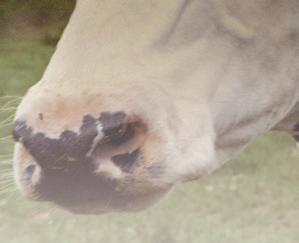
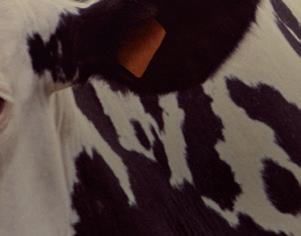
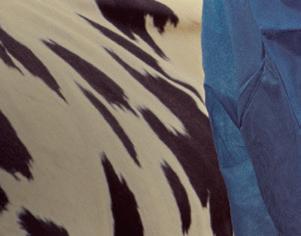








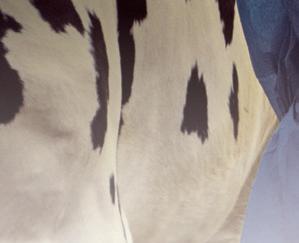

















Andrew Biggs BVSc, FRCVS and Vale Veterinary Laboratory Data Primary pathogen identified in all high SCC and clinical mastitis milk samples from 2019-2021. STARTVAC® Inactivated vaccine, Bovine mastitis, in injectable emulsion. COMPOSITION PER DOSE (2 ML): Inactivated Escherichia coli (J5) 50 RED60*; Inactivated Staphylococcus aureus (CP8) SP 140strain expressing SAAC** 50 RED80***. Adjuvant. * RED60: Rabbit effective dose in 60% of the animals (serology). **SAAC: Slime Associated Antigenic Complex. ***RED80: Rabbit effective dose in 80% of the animals (serology). INDICATIONS: Cows and Heifers: To prevent Mastitis For herd immunisation of healthy cows and heifers, in dairy cattle herds with recurring mastitis problems, to reduce the incidence of sub-clinical mastitis and the incidence and the severity of the clinical signs of clinical mastitis caused by Staphylococcus aureus, coliforms and coagulasenegative staphylococci.The full immunisation scheme induces immunity from aproximately day 13 after the first injection until approximately day 78 after the third injection (equivalent to 130 days postparturition). Further information available from the SPC or on www.hipra.com. For more information about side-effects, precautions, warnings and contraindications please refer to the SPC, the packaging or product leaflet. LEGAL CATEGORY: POM-V- Veterinary medicinal product under veterinary prescription.
MARKETING AUTHORISATION HOLDER: Laboratorios Hipra, S.A. la Selva, 135, 17170-AMER (Girona) SPAIN. MARKETING AUTHORISATION NUMBERS: UK(GB): Vm17533/5010, UK(NI): EU/2/08/092/003-6. Use Medicines Responsibly. UBAC®, emulsion for injection for cattle. COMPOSITION PER DOSE: Lipoteichoic acid (LTA) from Biofilm Adhesion Component (BAC) of Streptococcus uberis, strain 5616 ≥ 1 RPU. Montanide ISA 907.1 mg. Monophosphoryl Lipid A (MPLA). INDICATIONS: For active immunisation of healthy cows and heifers to reduce the incidence of clinical intramammary infections caused by Streptococcus uberis, to reduce the somatic cell count in Streptococcus uberis positive quarter milk samples and to reduce milk production losses caused by Streptococcus uberis intramammary infections. Further information available from the SPC or on www.hipra.com. For more information about side-effects, precautions, warnings and contra-indications please refer to the SPC, the packaging or product leaflet. LEGAL CATEGORY: POMV- Veterinary medicinal product under veterinary
HIPRA UK and IRELAND Foxhall Business Centre, Foxhall Lodge, Foxhall Road, Nottingham, NG7 6LH. United Kingdom Tel.: (+44) 0115 845 6486 · ukandireland@hipra.com · www.hipra.com

prescription. MARKETING AUTHORISATION HOLDER: LABORATORIOS HIPRA S.A Avda. la Selva 135. 17170 Amer (Girona) Spain. MARKETING AUTHORISATION NUMBERS: UK(GB): Vm17533/5011, UK(NI): EU/2/18/227/001-004. Use Medicines Responsibly These products are not licensed for concurrent use. A decision to use either of these vaccines before or after any other veterinary medicinal product therefore needs to be made on a case-by-case basis. Take the next step with Mastitis Vaccination Ask your vet about your mastitis prevention plan 28,2% E. coli 11% Staph. aureus 11% Non-aureus Staph 35,9% S. uberis 4,4% Strep. dysgalactiae 2,5% Bacillus 2,7% Coryne. bovis 0,9% Klebsiella spp 3,6% Others Pages 32-50
52-70 HOUSING & SLURRY YOUNGSTOCK Storage solutions and the value of cow space Coronavirus, pneumonia and rearing protocols
72-74 MACHINERY MILK PRICES
76-78 JCB J403E electric loader put through its paces TIP OF THE MONTH: Study the credentials of methane inhibitors – p14 Pages 20-21 Breeding Managing extended lactation production August 2023 Volume 70 Issue 8
Pages
Pages
Pages
TRUSTED INSURANCE FROM THE UK’S LEADING RURAL INSURER
With over 110 years’ farming experience and expertise, we’re here to put your mind at ease. Whatever cover you choose from us, you can be sure of a high level of protection.
To see how our policies and services can benefit your farming business, search ‘NFU Mutual Farming’ or contact your local agency office.
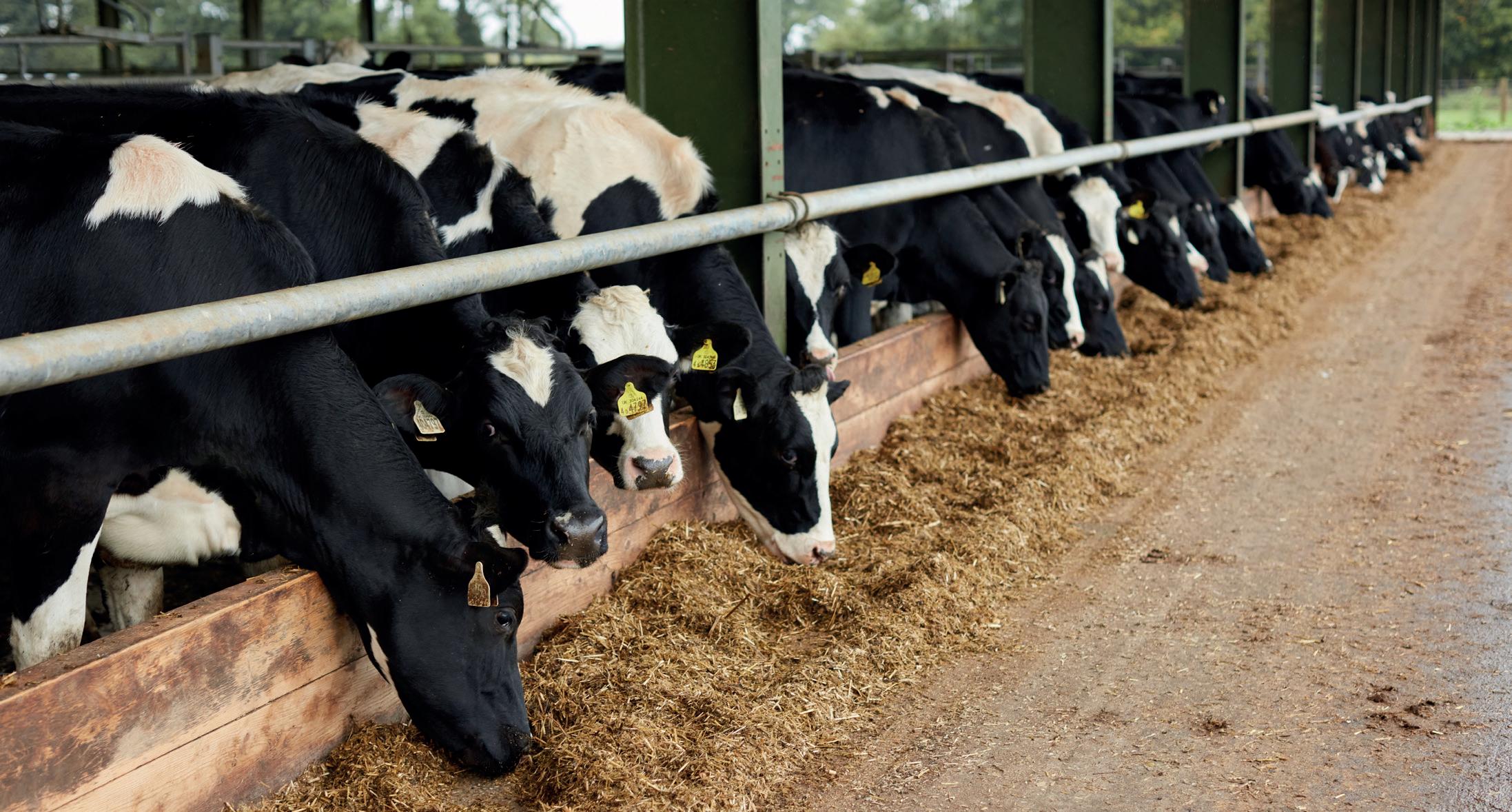
The National Farmers Union Mutual Insurance Society Limited (No. 111982). Registered in England. Registered Office: Tiddington Road, Stratford-upon-Avon, Warwickshire CV37 7BJ. Authorised by the Prudential Regulation Authority and regulated by the Financial Conduct Authority and the Prudential Regulation Authority. A member of the Association of British Insurers.


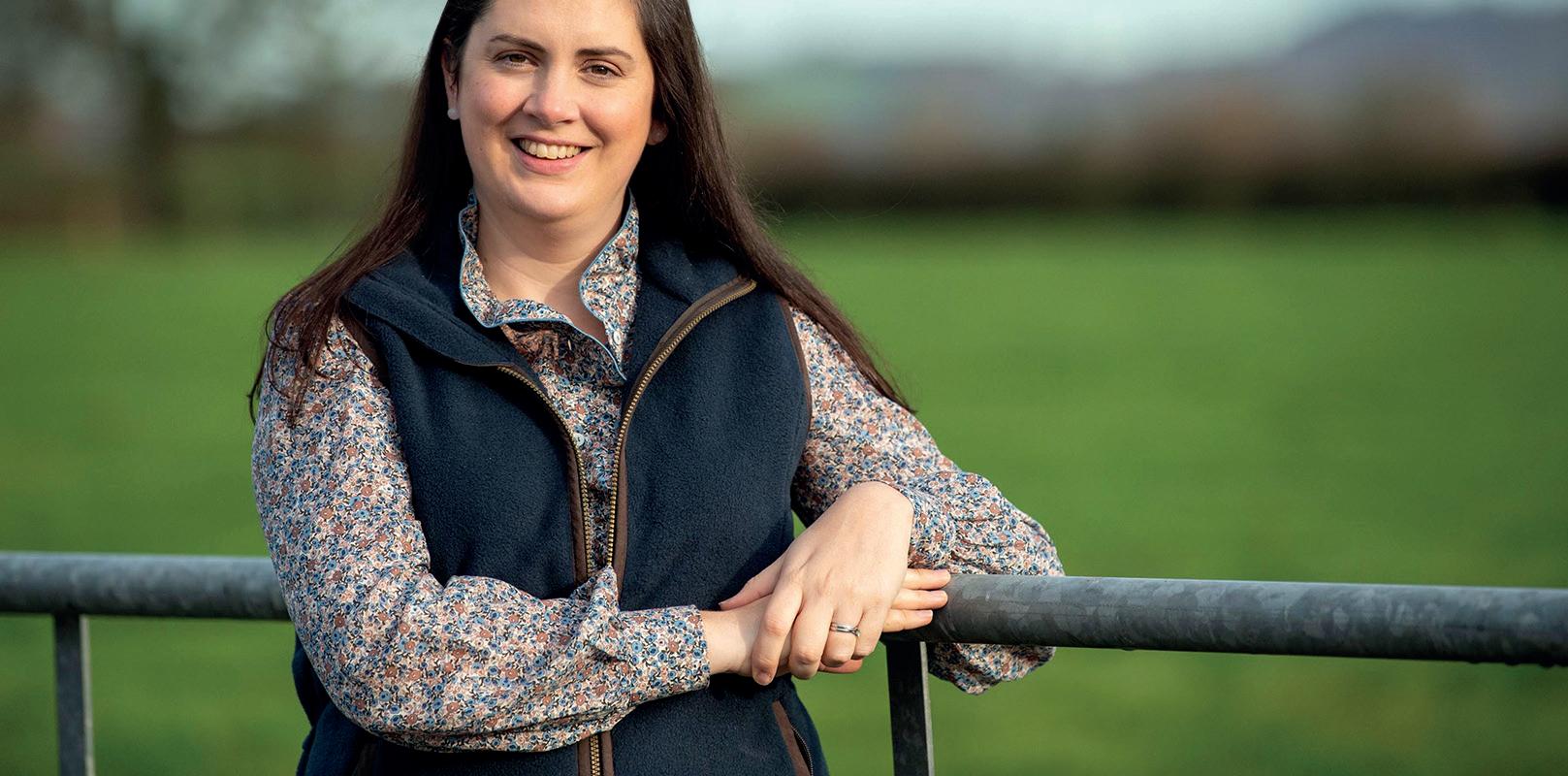
a word from the editor
After years of waiting, Defra has finally released some details about the dairy contract regulations which are due to come into force later this year.
On the face of it, it might all sound very encouraging, but some within the industry have said more detail is still needed and the latest news has been met with caution.
Power
Farming Minister Mark Spencer says these new regulations will give ‘power’ back to the farmer and the Government will step in as a ‘referee’ when needed as a way of providing certainty and stability. But exactly how this might happen, unfortunately, remains unclear. As dairy analyst Chris Walkland points out,



milk prices are also market-related and the only way to provide certainty and stability is by underwriting a minimum selling price.
The rules around notice periods and the way changes to contracts are made are, of course, welcome, and will go some way to giving farmers more confidence.
However, I am less confident that the regulations will ensure farmers are paid ‘a fair price’ for their produce. Let’s hope this is not an ‘over-promise’ which will be ‘under-delivered’.
Finally, take a look at pages 30-31 to find out more about how you can get involved in this year’s #FARM24 campaign.
Starting at 5am on August 3, farmers and industry organisations throughout the UK will be taking to social media to take farming closer to the masses. We’d love for you all to get involved too.
















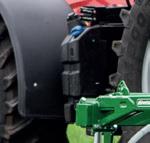





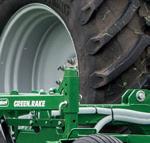
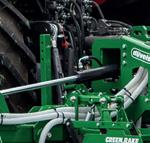





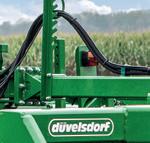
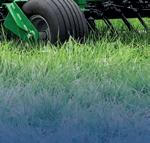






3
ENGINEERING RAKE, SEED AND ROLL DÜVELSDORF GRASSLAND MAINTENANCE EQUIPMENT FROM LYNX Rake out weeds and mosses with GREEN.RAKE Fully adjustable levelling rail and rake angle Optional seeder with SEED.CON smartphone control interface TERRA.ROLLER with Cambridge or toothed rings Even weight distribution - uniform ground pressure Use rake and roller independently or coupled together MORE WAYS TO ADD MORE PRODUCTIVITY FRONT LOADERS • FRONT LINKAGES & PTOs • PICK-UP HITCHES • WEIGHTS • REVERSING FANS • FRONT PRESSES For further details about any products in the Lynx Engineering range call us today on 01327 843215 or visit www.lynx-engineering.co.uk NEW Dairy Farmer, Unit 4, Fulwood Business Park, Caxton Road, Preston, Lancashire PR2 9NZ Origination by Farmers Guardian, Unit 4, Fulwood Business Park, Caxton Road, Preston, Lancashire PR2 9NZ. Printed by Precision Colour Printing, Halesfield 1, Stirchley, Telford TF7 4QQ. No responsibility can be accepted by Dairy Farmer for the opinions expressed by contributors. Editor Katie Jones 07786 856 439 katie.jones@agriconnect.com Content Editor/Designer Mike Begley 01772 799 405 mike.begley@agriconnect.com Picture Editor Marcello Garbagnoli 01772 799 445 marcello.garbagnoli@agriconnect.com Sales Director Stephanie Ryder 07917 271 987 stephanie.ryder@agriconnect.com Account Manager Mark Jackson 01322 449 624, mark.jackson@agriconnect.com Classified Advertisements 01772 799 400 fgclassified@agriconnect.com Advertising Production Justine Sumner 01772 799 437 Fax: 01772 796 747 justine.sumner@agriconnect.com Circulation and subscriptions 0330 333 0056 help@subscribe.farmers-guardian.com Subscription rates: UK £65 a year Europe: £85 World: £95 ISSN 1475-6994 © Farmers Guardian 2023 All rights reserved. No part of this publication may be reproduced or transmitted in any form or by any means, electronic or mechanical including photocopying, recording, or any information storage or retrieval system without the express prior written consent of the publisher. The contents of Dairy Farmer are subject to reproduction in information storage and retrieval systems.
AUGUST 2023
Contacts
What’s inside?
Gov revea dairy cont
Dairy farmers have reacted with caution to a long-awaited announcement on milk contract legislation but the wait continues for clarity on what the changes will mean and whether the Government can really deliver.
Speaking at the Great Yorkshire Show, Farming Minister Mark Spencer said the Government’s plans for supply chain intervention, which he expected to be legislated on before Christmas, would give power back to dairy farmers to challenge prices and stop contract changes being imposed without agreement.

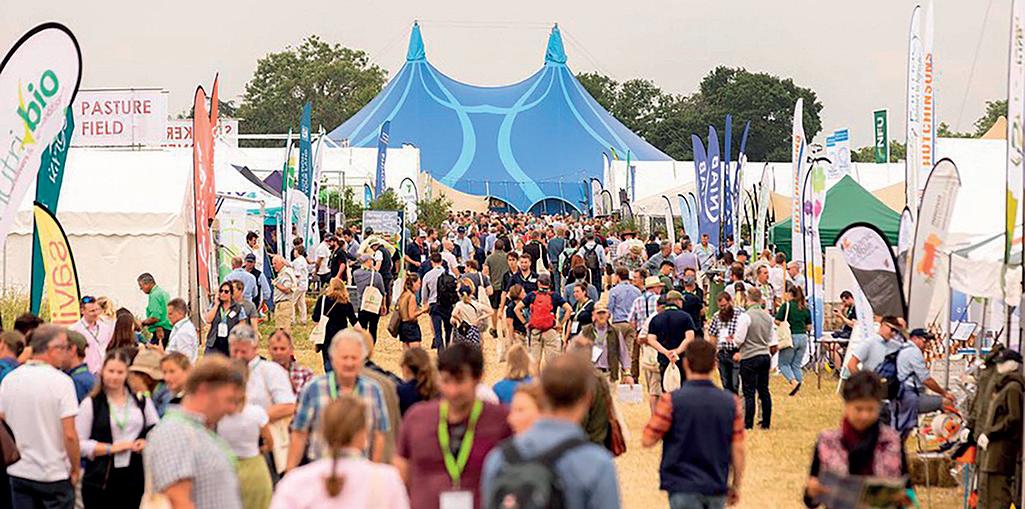
He said: “In the past, there has not been a referee when there are disagreements between farmers and processors, but this
is where the Government will step in if necessary.”
However, he added the Government would not undermine the flexibility processors need, but farmers ‘should always be confident’ in the price they receive.
No guarantee
But dairy analyst Chris Walkland was cynical, stating it was ‘a joke’ that the statutory instrument on which the legislation would be laid was still not ready and that there was no guarantee the legislation would make farmers better off.
He said it was ‘disingenious and misleading’ for Mr Spencer to state these regulations would provide price certainty and stability for farmers as those were ‘entirely market-related’. He suggested this might be achieved if Defra was to underwrite a minimum selling price for milk,
Farm deaths highlight importance of safety
JUrgent steps are needed to readdress the balance of health and safety on farms after 21 work-related fatalities in agriculture, forestry and fishing between April 2022 and March 2023.
Highest rate
This makes it the industry with the highest rate of injury per 100,000 workers across Great Britain, despite a drop of two on last years’ figures, according to the Health and Safety Executive.
Six members of the public were also killed in work-related incidents in the sector. More deaths have
already been reported since March, with two toddlers killed on Devon farms in May and June.
David Exwood, NFU vicepresident, said it was important to come together and bring about a culture change in agriculture.
“We need to look at the figures and ask why these incidents are happening and what factors contributed to the incidents taking place in the first place,” he said, highlighting factors including weather and tiredness.
“And the figures detail that you are three times more likely to have an accident if you are over 65.”
NEWS 4 AUGUST 2023
JULY 2023 VOLUME 70 ISSUE 7 8 DAIRY TALK Updates from Claire Eastham and Matthew Winter 10 ON FARM Could there be a future in blended breeding? 14 DAIRY MATTERS Mandating the use of methane inhibitors 16 VET’S VIEW Antibiotics must be used with extreme care 18 WORLD DAIRYING Breeding cattle for in a African climate 24 DIET FORMULATION 26 SUSTAINABILITY 28 INITIATIVES 30 #FARM24 32 YOUNGSTOCK REARING Coronavirus, pneumonia and rearing protocols 54 HOUSING & SLURRY Storage solutions and the value of cow space 72 MACHINERY JCB J403E electric loader put through its paces 76 MILK PRICES 80 MILK ANALYSIS Milk prices stable for now 82 NEW PRODUCTS Round-up of products and updates hitting the market 86 GOOD EVANS ‘Good job they weren’t here when the rats were on the move’ 88 BUSINESS CLINIC Regenerative dairy on show at Groundswell and Down To Earth 90 RESEARCH Substituting soya with roasted beans 16-17 Vet’s
88-89 Business Clinic
View
ls long-awaited ract detail


but this was not going to happen.
Mr Walkland added prices were already transparent ‘if you know where to look’. But he highlighted there were positives, as the legislation would tighten up rules on notice periods and improve other aspects of the farmer-processor relationship.
Dairy farmer Bre Hall, Bedale, North Yorkshire, said he was concerned about the lack of detail from Mr Spencer about speci c pricing. He added farmers had been
‘held to ransom’ by processors lowering prices and making abrupt changes.
Fair price
“Dairy farmers themselves need to be involved in se ing a fair price without greed coming into play,” he said, questioning whether the reality would be fairness for farmers or processors.
NFU dairy board chair Michael Oakes has described the announcement as a ‘signi cant step forward’


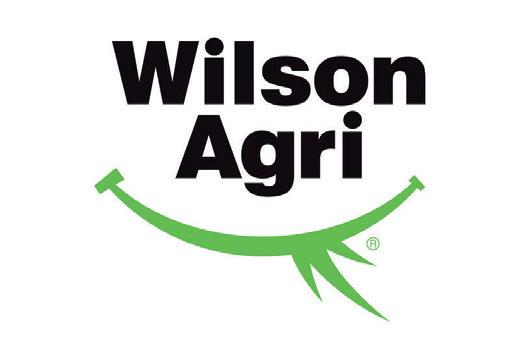

in o ering farmers assurance over the price of milk production.
He said: “For a long time, unfair milk contracts have held British dairy businesses back and these changes will give dairy farmers much needed business security and condence, as well as helping to share risk along the dairy supply chain.”
Dairy UK also said the regulation would bene t dairy farmers in the future, adding the regulation needed to strike the ‘right balance’ between greater transparency and exibility.
FARMING EQUIPMENT & TECHNOLOGY FUND 2023
Eligible items in our ranges:




JAn ambitious target for organic making up 25% of the market has been set by Organic Farmers and Growers (OF&G), but Government backing and security of funding was critical in achieving its goals.
That was the message from OF&G chief executive Roger Kerr at this year’s National Organic Conference on July 4.
Mr Kerr said farming today was about ‘regeneration of resources, responsibility in production, sufficiency in consumption and ethical development of our food systems’. Communication was key, with Mr Kerr recognising organic farmers have in the past struggled to have ‘one unified message and voice’.
Organic farmers target market share M&S milk pool
JAs part of its wider low impact farming programme, Marks & Spencer has announced that the 27 English and Welsh farms in its dedicated milk pool will use an innovative next-generation green fertiliser from spring 2024.
Known as Impact Zero, the fertiliser range is manufactured by Fertiberia using green hydrogen rather than natural gas and has been shown to deliver nitrogen use efficiency 22% higher than conventional fertiliser.
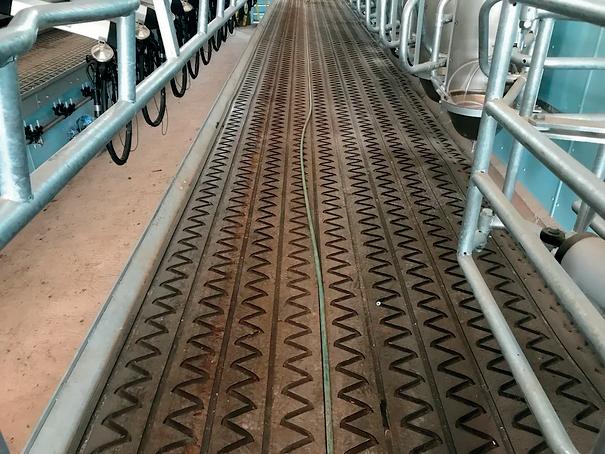
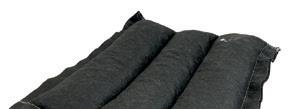


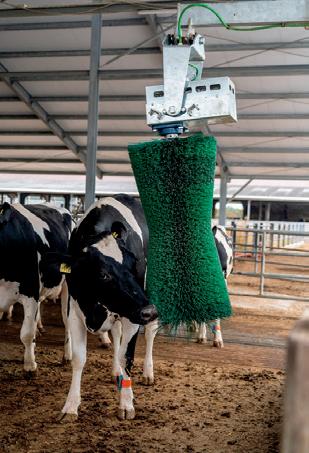















Official Distrib f View our cow comfort range: www.wilsonagri.co.uk Contact us at HQ: 028 7086 8430 Mattress Dairy Grip rubber AgriCow Pendulum Cow Brush Calf De-horning crate Calving Gates Cattle Crushes Slat Rubber
Matthew Evans 07922 422556 Charlie Sutcliffe 07703 679023 Midlands & Wales Scotland & Northern England
Livestock Equipment www agrikit co uk A COMPLETE RANGE OF COW COMFORT PRODUCTS Pasture Mat the premium cow mattress
NEWS 5
AUGUST 2023
Mark Spencer said the Government’s plans for supply chain intervention would give power back to dairy farmers to challenge prices.
Welsh Gov accused of ‘burying heads’ over bTB
Adairy farmer in Pembrokeshire, whose herd has gone down with bovine TB (bTB) after five years of being clear, has criticised the Welsh Government for ‘burying their heads in the sand’ and ‘not caring about farmers’.
Fourth-generation dairy farmer Steve Evans milks 460-480 cows just outside Haverfordwest.
In early July, he had 30 cows declared as reactors which will be culled and 47 inconclusive reactors (IRs). He said after blood tests, he was ‘fully expecting’ all IRs to leave the herd.
Mr Evans said most reactors were in-calf and he estimated that, over the next 12 months, this bTB breakdown could cost his business about £250,000, factoring in all cash losses.
Double figures
He said: “When you are half-way through reading the test and you are already into double figures, you are just thinking ‘how bad is this going to be?’
“I was standing there thinking that the Government has to move on this fast, this is completely out of hand. How can we go from a clear test in March to this?
“The only reason we tested

is because a farmer nearby had gone down,” he said, adding that testing in November as planned could have been ‘absolutely catastrophic’ and ‘could have cleaned’ the farm out.
Mr Evans said he was fearful of the growing threat in Pembrokeshire, with six other farms going down in the ‘last 16 weeks’, suggesting there should have been an opportunity for a ‘targeted trap and test badger cull’.
He said he was ‘extremely frustrated’ by England being able to use ‘all tools in the box’, including targeted badger culling, but said whenever there was any mention
of wildlife in Wales ‘the shutters come down’.
He added they had done everything within their power on biosecurity.
Mr Evans said he will now have to ‘review everything on the farm’ to mitigate the financial losses.
Rearing costs
He said: “You end up spending more and more on rearing costs and straw. Your workload increases, but because your income goes down, you might have to let a staff member go. It just ends up as a total disaster.”
Mr Evans said he was already feeling stressed about his next TB
This is completely out of hand.
How can we go from a clear test in March to this?
STEVE EVANS
test, which will take place in autumn when cows will be ‘flat out calving’.
A Welsh Government spokesperson said it had been clear it would not cull badgers and highlighted ways for farmers to limit bTB through biosecurity.
For example, these measures include tackling badger and cattle contact and reducing the risk of buying infected cattle.
The spokesperson said: “It is important to discuss such measures with your vet. We have also been clear Government cannot do this alone and working with our farmers and vets is crucial to reach our shared goal of a TB-free Wales.”
AHDB survey reveals significant increase in sexed semen use
JAHDB’s latest survey of breeding companies has revealed a substantial increase in the adoption of sexed dairy semen, surpassing previous years’ figures.
The data collected over the 12 months leading up to March 2023 shows that sales of sexed semen increased to 76.5% of
all dairy semen, marking a notable surge from 70% in 2022.
The Holstein breed remains the most popular choice, representing just over 77.9% of dairy sales. The survey also indicates that beef semen sales to the dairy herd have risen to 49%, up from 48% of total sales in 2022.
The preferred breeds for this
purpose continue to be the British Blue and Aberdeen-Angus, followed closely by the Limousin and Hereford breeds.
There has also been a significant rise in the popularity of the Wagyu breed, which is gaining traction in the market.
Marco Winters, head of animal genetics at AHDB, said:
“We expect that the increased confidence among farmers in choosing sexed semen will continue to drive the upward trajectory we are witnessing.
“This is great news, as farmers are becoming more empowered to make targeted breeding decisions by only breeding replacements from their best females.”
NEWS 6
AUGUST 2023
RUMISTART GREEN
An energetic booster to support the milking ruminants
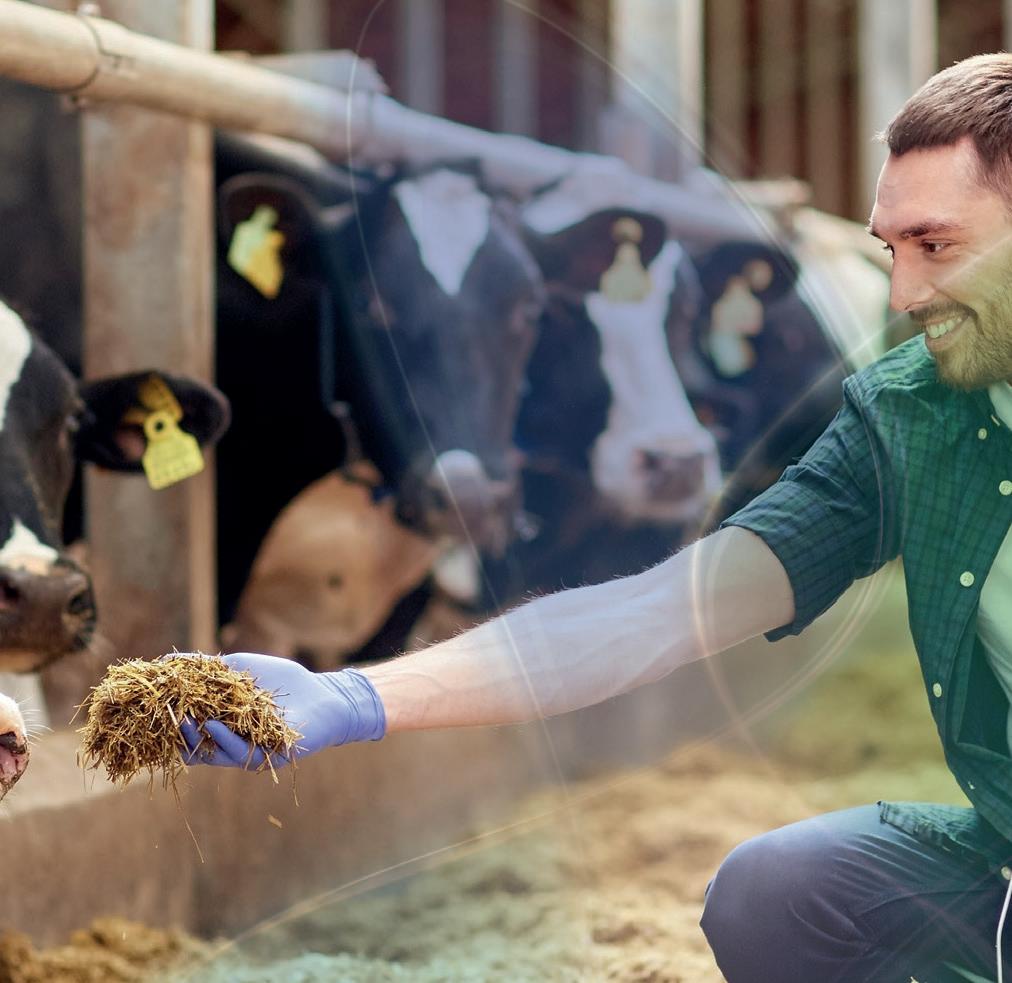




• Improves Feed E ciency
• Limits Ketone Production
• Reduce Risk of Energy Deficiency
• Lower Carbon Footprint
Propylene Glycol (vegetal origin) and Sorbitol
Energy intake
Volatile Fatty Acids and Sodium Propionate
Energy intake
Yeast extracts and Cobalt
Ruminal activity stimulation

To find out more open your camera and hover over the QR code or use your browser www.ruminantad.com
T: 01576 205 480 E: enquiries.uk@kersia-group.com
Claire Eastham
DAIRYTalk
Claire Eastham farms with her husband Martyn in Dorset, where they milk 120 spring calving cows. After gaining knowledge and experience working for other businesses, the couple started their own dairy farming journey in 2015 by taking on a share farming agreement before progressing to their current county council farm.
“ I wonder if these dry spells might lead to innovation; perhaps direct drilling cereals into a ley for added bulk at cutting?
After starting my last article with ‘well the sun is finally shining’, this time I will begin by saying ‘hurrah it has finally rained!’ Farmers and the weather, eh? What a difference three months has made, or to be more precise for us, it is ‘what a difference a couple of days made’.
We tried to plough (yes I know) one Saturday and the ground was too wet to go. We managed to plough it by the Monday and by the Friday we were already starting to get concerned the crop would never grow.
However, our first ever arable crop of barley, oats, peas and vetch, under-sown with a clover ley, was planted towards the end of May. The birds ate lots of peas – £5 kites on temporary fence posts did quite well keeping them at bay, but I would be more prepared next time.
The oats and vetch are both doing well, with recent showers having brought on the grass and clover, so time will tell.
We have also trialled varying rates of gypsum in that field and, visually, I would say that the five-tonne/acre plot does look better now, with a heavier and more consistent crop, compared with the 3t/acre and 1t/acre rates.
This will be harvested for wholecrop as the crop looks fit to do so and will be put into the silage pit with grass on top. The aim is to feed it to the dry and transition cows.
Better quality
Our hay is also safely in, with a lighter, but better quality, cut than last year.
The South West does seem to having continual dry spells and our weather is now more similar to what we have traditionally seen in the South East. So, it is a case of having to adapt.
We need to think which crops will be okay with very wet feet through winter, but then go on to also be able to tolerate a dry time.
Research shows C3 plants, such as cereals, can tolerate these conditions. Maize, a C4, always seems like a risk to me on heavy ground and potentially a poor choice for soils, although practices are improving.
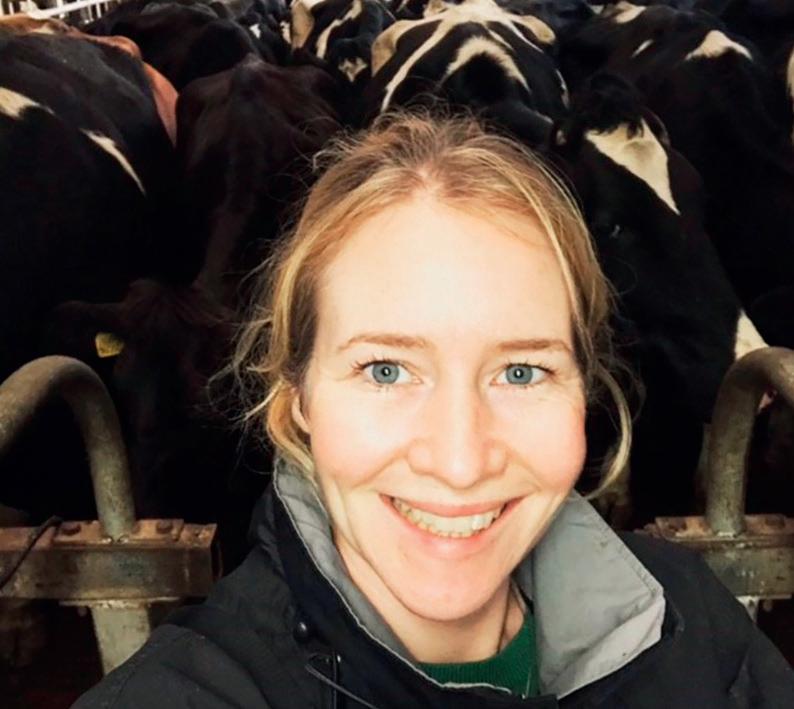
I wonder if these dry spells might lead to innovation; perhaps direct drilling cereals into a ley for added bulk at cutting?
The Government has finally announced the new Sustainable Farming Incentive measures and agreed to cancel existing agreements, which now look poor in comparison.
My first thoughts are the options offer a good selection, with most farmers now being able to access options with little or no system change. For example, NUM2 legumes on improved grassland (a clover ley to you and I) will now be able to net £42/acre per annum.
Other options require a little more work and consideration, but are good practice and a win for the environment too. Here I think NUM2 and all three hedgerow options will be optimised alongside our existing herbals leys in Countryside Stewardship.
Serving seems to have gone well, with the two new Hereford bulls, called Willy and Welly, now in with the herd to sweep up.
Our first use of sexed semen has gone well, with seemingly more repeats on the conventional at the moment.
We are continually short of heifer calves; this year we had 34% heifers to bulls. One bonus would have been the large numbers of male beef calves, but we have only just managed to sell them all after finally going clear of TB on a test of two inconclusive reactors.
The herd test is only a couple of weeks away now, so hopefully another smooth run.
8
AUGUST 2023
Matthew Winter
Matthew Winter returned to the family farm in 2011 and is one of four partners in the mixed dairy/arable family farm in Lincolnshire, where 210 Holsteins are milked under the Corringham prefix. He sits on the Holstein UK board of trustees and started his career at Holstein UK as an animal breeding analyst before training to be a chartered accountant.
“ Will Lincolnshire soon only be responsible for powering the light in the fridge?
The second half of June always seems to be a particularly chaotic time for us, with Lincolnshire Show (our local show), second cut silage and multiple Arla deadlines all seeming to come together.
We usually take a team of six or seven animals of all ages to Lincolnshire Show, which, as everyone always comments, is a really nice friendly show.
Although it struggles a bit for dairy cattle numbers, being in one of the most sparsely populated areas for dairy farms, the quality of cattle is always high.
As well as being an opportunity to advertise our own cows and herd, we also use it as an opportunity to promote what we do and always try to produce an informative display aimed at the many groups of school children guided round by the society stewards or teachers (although many of the adults seem equally interested).
It has been a bit of a mission of ours to try to use this opportunity to educate the public, ever since a few years back when one teacher walked into the Holstein shed and proudly exclaimed to his primary school class ‘and here are the goats’.
We have also had the additional task of moving most of our youngstock, which are mainly on rented summer grazing, back home for a few days to make way for an archaeological survey for a huge solar project.
Power stations
When I was a child, the steam and smoke trails from three coal-fired power stations were clearly visible from our farm, but now there is just one remaining, which has been converted to gas.
These existing grid connections, the low population density and flat land apparently make this area ideal for solar farm development.
There are four projects locally, totalling 13,000 acres, which are in the public consultation and pre-planning stage.
I have mixed feelings about it. As landowners, we have been given the opportunity to contribute some land which has the potential

to be quite lucrative and give certainty to some of our income.
I do agree with the general principle of moving towards more sustainable sources of energy. On the other hand, this will decimate our local farming community and it has been met with hostility from some local residents.
Will Lincolnshire, often described as the breadbasket of England, soon only be responsible for powering the light in the fridge?
The last week in June saw Holstein UK’s celebration and AGM, with this year’s event being planned by the incoming president Andrew Jones, of Rossett Holsteins, and held around Chester.
Although I was disappointed not to be able to attend this year, I heard from those who did that it was hugely enjoyable, with some very interesting visits.
As I write this I am looking forward to a day out at the Great Yorkshire Show, which is always a good show and a nice opportunity to catch up with fellow farmers.
I must try to make the most it, before returning to freeze-branding, foot-trimming and topping it off with our Arlagarden audit later in the week.
9 DAIRY TALK AUGUST 2023
Jim Morrison, who is coowner of the award-winning British Friesian Inch herd from Downpatrick, Co Down, is clear in his views that dairy farmers will need to bring the issues of sustainability and improved e ciency to the fore, given the scale of climate change targets. He says that focusing on traits such as longevity and inherent cow fertility will be crucially important.
“One way of fast-tracking these objectives is by crossing the likes of British Friesian and Holstein bloodlines in a strategic manner in order to produce rst cross females which can milk e ciently over a long number of lactations,” says Jim. “ e principles associated with hybrid vigour have worked well for the pig and poultry industries over many years. Both sectors have moved forward very quickly in terms of genetic improvement and I see no reason why the same levels of improvement cannot be achieved within the dairy industry.”
According to Jim, the Holstein cow will always take the lead where milk production is concerned. But
Noted pedigree breeder Jim Morrison believes the milk industry across the UK and Ireland should take a leaf out of the pig sector and embrace the benefits of blended breeding programmes. Richard Halleron reports.
Could blended breeding be the future for British and Irish dairy?
he says the British Friesian can add more, particularly from a fertility, health and longevity perspective.
“We also need to breed cows that can make optimal use of grazed grass and forage. Despite the rise in fertiliser prices over the past year, grass is our cheapest feed,
and utilising it to maximum e ect should be a priority for dairy farmers in this part of the world.”
Driving all of this is the need to maintain pedigree bloodlines of the highest standards, which is evident within the Inch herd. e herd is owned and cared
for by a partnership of the Morrison and Cleland families. e partnership is now in its ninth year and sees James and Sarah Cleland manage the milking herd at the home farm, while Jim and Jeannie Morrison care for the young bulls and heifers at their base ve miles away.
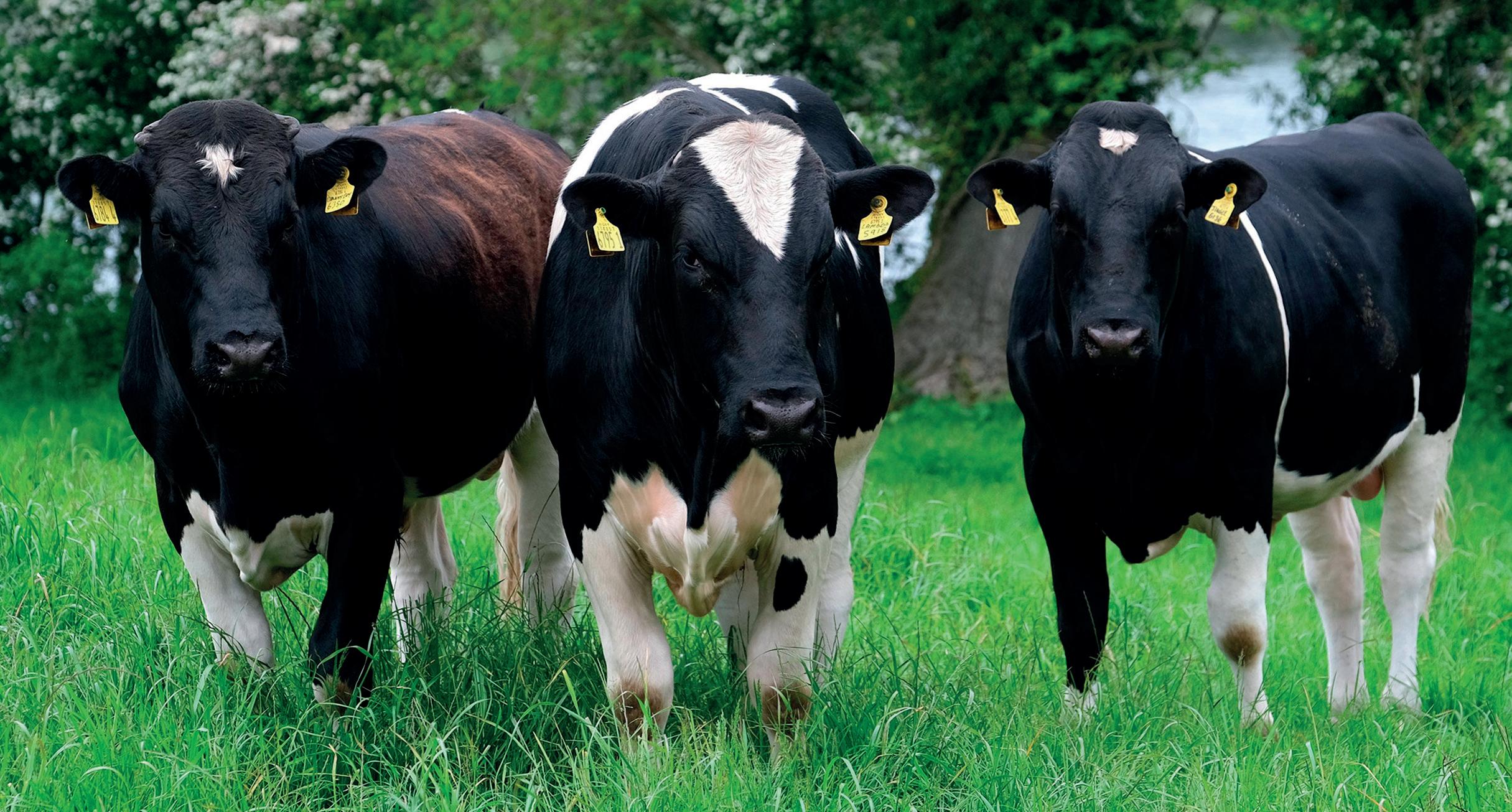

AUGUST 2023 10 ON FARM
Jim Morrison believes focusing on longevity and inherent cow fertility will be crucially important.
Part of this process is ensuring that the bloodlines forming the nucleus of the herd are maintained
JIM MORRISON
e two families’ commitment to maintaining standards has been recognised, as the herd was named British Friesian Herd of the Year for 2023. is award, which was launched by Holstein UK just three years ago, recognises the UK’s top performing British Friesian herds and is based on a combination of classi cation and production.
While the Friesian component

of the Inch herd is only 30-head, the cows within this group contain a selection of the breed’s elite bloodlines. It all adds up to a heritage which stretches back over many generations. In total, there are 100 cows in the Inch herd; all are full pedigree and most are Holsteins, but a small number of Swedish Reds have been added in recent years.
Inch Friesian genetics are held in
high esteem and many bulls have been sold to artificial insemination (AI) centres across the UK and Ireland.
Performance
“We are always striving to improve the performance of the herd and part of this process is ensuring the bloodlines forming the nucleus of the herd are maintained and built on,” says Jim.



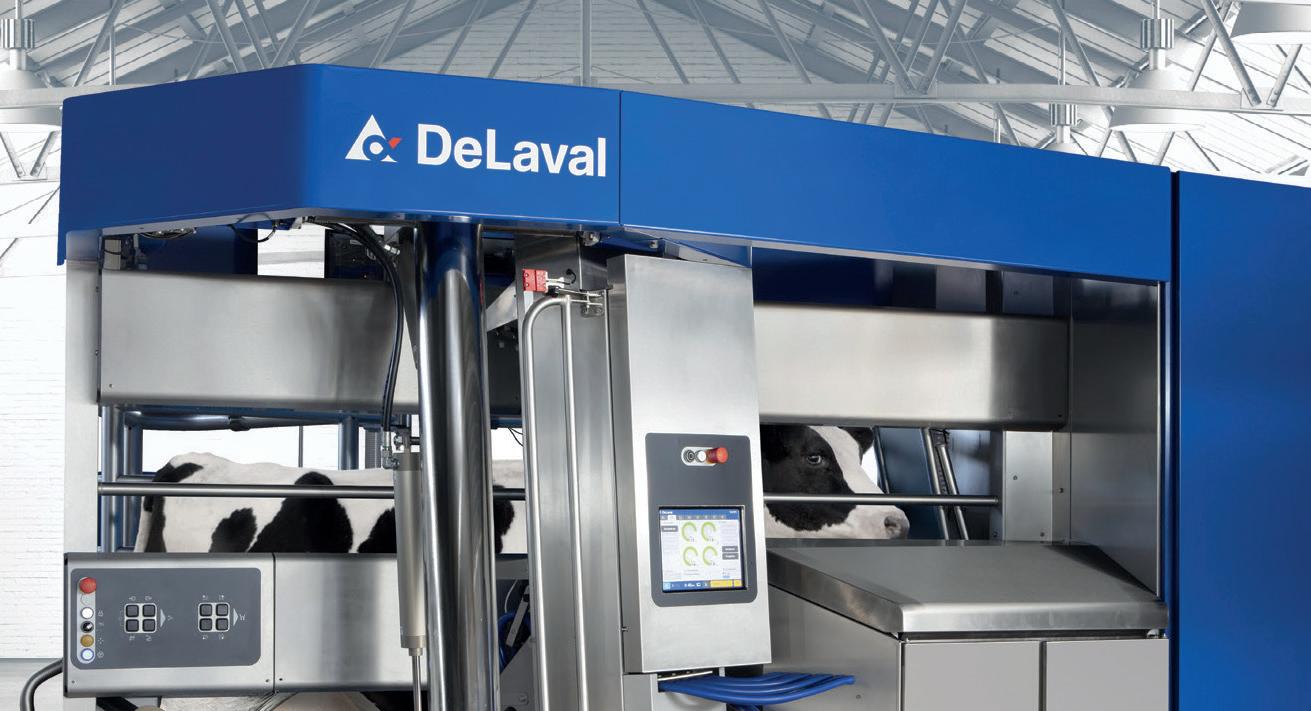
“To this end, we have used semen from Inch bulls which have performed well in various AI programmes.”
Jim says British Friesian genetics are the key to building strength in the UK and Irish milk sectors and he is conscious that large numbers of commercial dairy farmers now recognise this reality.
“In many cases, herd owners with predominantly Holstein herds want
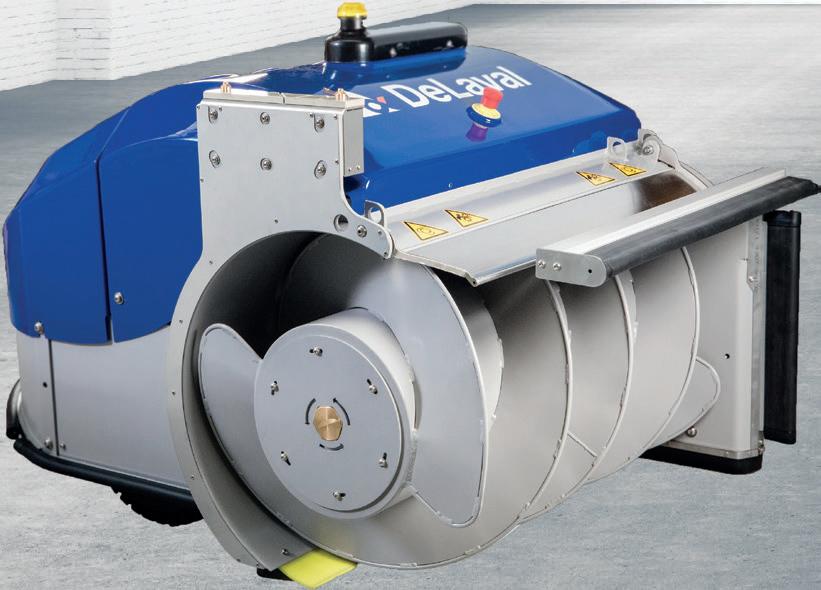
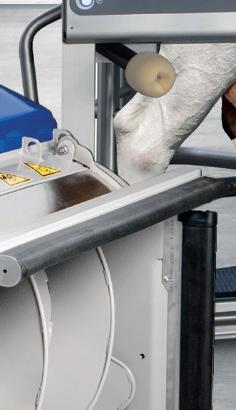










AUGUST 2023 11 Meet your new team members Find out more • DeLaval feed pushing robot OptiDuoTM • DeLaval milking robot VMSTM V300/V310 • DeLaval manure robot series MAKE YOUR TEAM COMPLETE www.delaval.com
James Cleland (left) and Jim Morrison with their award for the British Friesian Herd of the Year 2023. PICTURES : Columba O’Hare
ON FARM
to work with a less angular animal. Improving fertility is a key driver right across the dairy industry at the present time. In our own case, the average calving interval is 368 days.”
All strategic decisions regarding the development of the herd are taken on a partnership basis.
Where the issue of sustainability is concerned, James Cleland focuses on two key factors: longevity and grass utilisation.
James says: “Cows which stay in a milking group for an extended number of lactations reduce the number of herd replacements required on annual basis.
“In turn, this reduces the number of animals needed to maintain the output of the business.
“Breeding cows that can make best use of grazed grass is an obvious plus, but it is also important that the grazing infrastructure is in place to allow this to happen.
“We also believe it is wrong to have cows performing to the absolute limit of their abilities all the time; it comes down to a question of balance.”
e actual performance achieved by the Inch Friesian groups speaks for itself. e cows are averaging 8,343kg of milk at 4.87% bu erfat and 3.62 % protein and about 1.5 tonnes of concentrate is fed per lactation. Currently, 61% of the


Friesian milkers within the Inch herd have achieved ve lactations; the comparable gure for the Holsteins is 36%. In addition, the herd has been ranked top in the UK for PLI for the past three years – 60% of the milking herd is classi ed Excellent, with the rest achieving VG. e one exception is a GP83 classi cation.
Holstein
e Morrison family were one of the rst families to embrace Holstein genetics in the 1970s, and the herd is the current Northern Irish Premier Holstein small herd, as well as a two-time winner of both the national Premier Herd competition and the Master Breeder award.


However, a er almost 50 years of breeding Holsteins, it was decided to revisit the British Friesian as part of an overall herd breeding plan.
e aim of this plan was to produce more strength and longevity from a medium-sized, easily managed cow.
e resultant hybrid animal really impressed and there has been great demand for bulls with this breeding.
One cow, Inch Jed Daphne EX 93, was used as the cow to start a Friesian line within the Inch herd and bred Inch Counselor Daphne EX 94, which is the only cow in the UK herd book to classify EX 12 times.
Another of her daughters, Inch Storm Daphne EX 95, was Irish National Holstein champion and Northern Ireland cow of the year on two occasions.
Daphne had exceptional protein and fat, and Jim believes she may be
Farm facts
rMilking production began at Inch in 1949, when Tom and Marion Morrison bought Dairy Shorthorns, before introducing three British Friesian heifers three years later
rThe Morrison family was one of the first families to embrace Holstein genetics in the 1970s
rUnder the management of Tom’s two sons, Jim and Frank, numerous quality cattle were produced, including Inch Star Nina EX, which was the first
the number one – or at least in the top few cows – for fat and protein percentages in the history of the British Friesian breed.
He says: “ is further con rms the strength of these traits in the family. Today, there are 14 Friesian Daphne cows in the Inch milking group.”
Last year, two new families were introduced when two heifers were purchased from the Whinnow herd of Ian Blamore in Cumbria.
One purchase, Whinnow Centurion Priscilla 2, is a daughter of the elite breeding cow Lismulligan Priscilla 48 EX 94. e other heifer, Whinnow Jingle Wendy, is a daughter of Lakemead Wendy 35 EX 94.
Jim says: “ e aim at Inch is to enjoy providing breeding ca le to meet the ever-changing and varied requirements of dairy farmers.”
Irish National Holstein Show champion, before selling for the record price of 6,500gns; she went on to become Winter Fair champion for her new owners
rA simple grass-based system suits the herd well, with buffer feeding of silage and concentrates fed in the parlour
rThe partnership currently have 15 bulls at leading artificial insemination studs, plus many more bred to Holstein herds providing hybrid vigour
AUGUST 2023 12
Two-year-old Inch Patrol Daphne VG 87.
The Inch herd is based at Downpatrick, Co Down.
BREEDING THE WAY TO LOW METHANE COWS
At last, a genetic solution to methane emissions
For the first time producers around the world can genetically benchmark and monitor their herd’s methane efficiency with Semex Elevate®. The genomic test that analyses what you can’t see or measure on farm returning valuable information to aid your breeding decisions.
Breeding for reduced methane production has a reliability of 70-80%, is low cost, permanent and cumulative and what’s more it’s independent from other traits such as milk, fat and protein.



20-30% reduction in methane by 2050 through genetic selection is now a reality.
From the people who brought you the power to reduce antibiotic usage with





Semex UK: www.semex.co.uk : 0800 86 88 90
DAIRYMatters
‘It will be fascinating
to see how Defra mandates the use of inhibitors’
This month, industry commentator Eric Lister, who has worked in the industry for more than 40 years, discusses methane inhibitors and offers a word of warning that they may not be the silver bullet in the race to reduce emissions.
Somebody looking in on the industry could be forgiven for thinking that all farmers need to do to reduce emissions is to sprinkle a magic methane inhibitor on the diet and all their problems would be solved.
Manufacturers make some impressive claims and Defra have been so enthused that it is considering mandating the use of inhibitors.
But dive a bit deeper and it soon becomes clear that things are far from straightforward.
No-one can deny that the drive to reduce dairy emissions is absolutely vital and methane is undeniably a component of these emissions. The current thinking is that dairy farming is responsible for only about 2.7% of total UK emissions, with enteric methane accounting for just under half of this, so about 1% of UK total emissions. Yet everywhere you look, methane reduction is seen as a major issue.
Methane is part of the dairy emissions problem, but it is most definitely not all of the problem and, from a farm profitability perspective, is probably not a high priority. And methane inhibitors are certainly not a silver bullet.
On most, if not all, dairy farms, methane reduction needs to be incorporated into a more holistic approach to emission reduction. Many existing approaches have the potential to reduce emissions without incurring greater costs, allowing environmental and economic sustainability to increase in tandem. And they are measurable, so you can assess the results.
Reducing replacement rate, lowering age at first calving, removing soya from diets, reducing silage waste, improving nitrogen use efficiency and increasing feed efficiency will all help cut emissions and also contribute demonstrably to a business’ bottom line. The same cannot be said for methane reduction, with most inhibitors increasing costs for no economic return.
But the pressure is building on dairy producers to prepare to use one of the many inhibitors currently
going through the regulatory approvals process, and more are on the way.
They have different modes of action and a range of effectiveness. It will be fascinating so see how Defra mandates their use in practice, especially when it will never be able to practically determine how much its policy actually reduced emissions.
Manufacturers claim to reduce enteric methane anywhere between 6% and 28%. This means they will reduce total dairy farm emissions by 2.4-11%, but at a cost which has to be paid. So there are a number of questions which should be asked before committing to an inhibitor.
Q WHERE IS THE EVIDENCE THE PRODUCT WILL WORK?
A Check the science and challenge the claims, taking independent advice. How many trials have been carried out and what reductions have been achieved?
How have methane reductions been measured in farm trials? In at least one major widely reported farm evaluation in Holland, not a single methane reading was taken, yet a 28% reduction in methane was reported. These claimed reductions were just computer-modelled.
Q HAVE THERE BEEN ANY LONG-TERM STUDIES?
A It is one thing to measure the effect for a short period, but where is the evidence of continued efficacy or indeed of any problems where the product has been fed for an extended period over several lactations?
And what about feeding methane inhibitors to dry cows, as remember cows generate methane every day, not just when in milk?
Most studies to test these inhibitors are carried out over a short period of time – about 12 weeks or so. What about a full lactation? Or two?
There is concern that the rumen microbiome will do what it does best – adapt over time, resulting in an inhibitor which no longer works.
14 AUGUST 2023


“ Methane inhibitors are certainly not a silver bullet. On most, if not all, dairy farms, methane reduction needs to be incorporated into a more holistic approach
Do not forget, evolution has brought us an animal which can convert brous material humans cannot digest into something we can consume –and a natural part of that cycle is to expel waste as methane. As in Jurassic Park, nature will nd a way. It always does.
Q HAS IT BEEN TRIALLED ON SYSTEMS SIMILAR TO MINE?
A ere has been li le if any evaluation of any of the products in grazing systems, for example. Most studies have involved total mixed ration (TMR) systems with housed cows. But what about simple silage and cake systems?
Q HOW CAN AN EXPENSIVE INGREDIENT BE FED?
A Most products are not suited to inclusion in compounds, especially in feed-to-yield systems. How can you include an expensive ingredient which has a set daily requirement in a feed which might be fed anywhere from 2-10kg/day?
Some products need to be introduced gradually, so how does this work on a commercial farm with groups of cows?
If included in TMR systems, you could be feeding very small quantities, which could cause practical issues? What happens if TMR is not fed as a bu er in grazing systems?
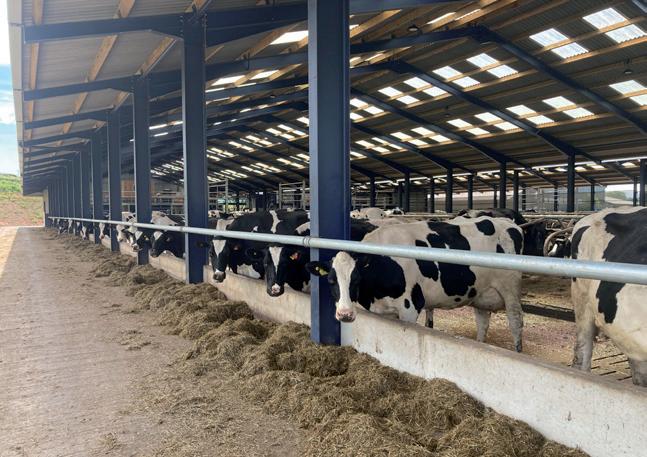
Q HOW AM I SUPPOSED TO KNOW IF IT IS WORKING?
A If you are paying to add an ingredient, it is only fair you can measure its e ectiveness. But how can you measure what you cannot see? One hopes the manufacturers are working on this.
Q WHO PAYS AND WHERE IS THE RETURN?
A Perhaps the major issue. Any methane inhibitor will increase feed costs – some by as much as 1ppl – so where is the return? Someone needs to pick up the bill. It is unlikely retailers will allow milk prices to rise to cover the cost, as this would fuel food in ation.
It has been suggested that processors may absorb the cost in their sustainability budgets, but is this realistic? Unless there is a creative scheme to monetise lower methane emissions, the e ect will be to reduce margins.
Methane is part of the dairy emissions issue. In the recent KW survey into dairy farmer a itudes to sustainability, currently only 13% of producers are considering methane reducers.
Hopefully, the remainder will be doing their due diligence and make sure they get some clarity and answers before deciding what to do.
In the meantime, perhaps the focus should be on other ways to reduce emissions which have a positive impact on pro tability?


15 AUGUST 2023 AGRICULTURAL & INDUSTRIAL STEEL FRAMED BUILDINGS Livestock Housing, Crop Storage, Industrial & Commercial, Tip Troughs Schurr Cow Brushes BEDDING MACHINES Telephone: 01524 792247 e-mail: sales@rebuildings.co.uk www.rebuildings.co.uk Scrape, Sweep and Spread in one pass. Bedding Material and Labour saving. Reduce cell count and increase production. Prevent disease and maintain good animal Health. Self-loading models available. Simple to drive and manoeuvre. 1 or 3 wheel drive. ELECTRIC ASK FOR DETAILS NOW AVAILABLE NEW
The practicalities of feeding methane inhibitors need to be addressed.
Research into antimicrobial resistance on dairy farms has uncovered some confirmed cases and while it is not yet a major problem, farmers are warned to stay vigilant. Wendy Short reports.
Antibiotics must be used with extreme care
Antimicrobial resistance is a worldwide issue, with a widespread occurrence, because bacteria can evolve and mutate in a range of environments.
Vet, Rachel Hayton, of Synergy Farm Health, says on dairy farms, resistance has sometimes been uncovered in association with mastitis cases and some youngstock health issues.
She says: “In the dairy industry, bacteriology is o en part of an investigation into a mastitis
problem, but it is not routine practice to identify the bacteria type for some other common diseases. Mastitis can be contracted in two main ways: it is passed from cow to cow or it is picked up from the environment.
“ e number of contagious bacteria types which can be passed from one animal to another is relatively limited. erefore nding a rising level of antimicrobial resistance in these bugs could create a big problem for some dairy farms.
“Resistance has been identi ed in one bacteria type, staphylococ-
Data on antibiotic usage
JWhile meticulous records of antibiotic usage must be kept by law, Rachel Hayton advises producers use this information to track their own progress.
“All dairy farmers should know how much antibiotic they are using annually.
“This will allow them to understand whether the amount has increased or decreased over the past 12 months and to focus on problem areas. The vet will hold this information and it should be brought into the discussion; they can often help with analysis.
“For herds registered at more than one practice, it is vital there is full information sharing between the vets.”
Many vet practices, and other businesses which support farmers, run benchmarking groups where anonymised data can be shared on a confidential basis, she says.
The standard metric for antibiotic usage is mg/kg population correction unit (PCU), with the figure calculated using the number of milligrams of antibiotic administered annually to cows and replacement youngstock and the total number of cows, multiplied by a standardised weight.
“As can be imagined, the result will vary depending on farm type; for example between breeds, or flying herds versus herds breeding their own
cus aureus, but it is not thought to be at a high level and monitoring continues. By contrast, there are thousands of environmental microbial strains that have the potential to cause disease and many resistant strains have been found in one of these in particular: e.coli.
“ It is possible that the levels of resistance vary across geographical areas and from farm to farm, but the a ecting factors are not yet well understood.”
Ms Hayton explains resistance occurs due to natural mutations that crop up when bacteria
replacements. Therefore it is important not to infer too much from comparisons between different units.
“Another recommended practice is to get into the habit of regularly reviewing the farm’s antibiotic policy and try and pick out any weak points.
Challenging
“Preventative strategies can be then put in place to keep the usage level down. All dairy farms will experience a challenging year every now and then; the key is to learn from mistakes and put measures for improvement in place. Vaccination also has an important role to play.”


While vets do not see clinical examples of resistance often, Rachel Hayton says it is important the industry retains access to a full range of effective antibiotic treatment options.
reproduce. It can also be transferred directly from one bacterium to another in the form of plasmids.
“Antibiotic-resistant strains do not usually persist unless they have an advantage over non-resistant strains. is could occur where they are exposed to antibiotics on a regular basis; for instance in an animal’s digestive tract or udder, or in the environment.
Mrs Hayton cites the AHDB’s Medicine Hub as a vital tool for an industry wishing to be proactive in driving responsible antibiotic usage.
“The Medicine Hub is our way of demonstrating where we are nationally. This is vital if we are to compete in global markets, as well as reassuring our domestic consumers.
“Farmers can register online to create a Medicine Hub account and give permission for their vet practice or other third party to access the data or upload on their behalf. It provides a confidential way of recording antibiotic usage and sharing anonymised information with the industry.”
AUGUST 2023 16 VET’S VIEW
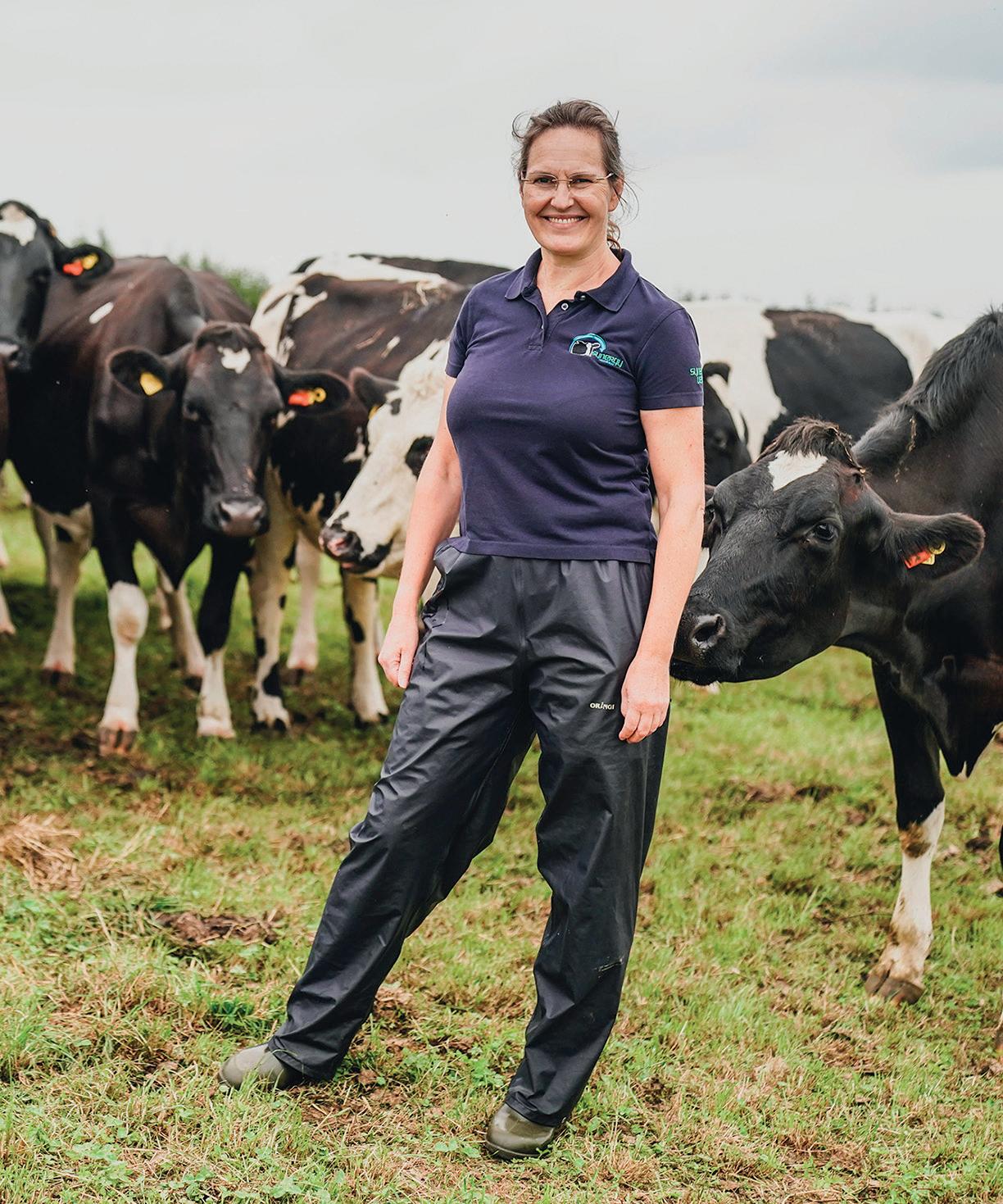
“While vets do not see clinical examples of resistance very o en, it is important the industry retains access to a full range of e ective antibiotic treatment options and vigilance be maintained.”
It is possible to con rm antimicrobial resistance in the laboratory and there are a range of techniques available.
“Antibiotic pro ling conducted on any bacterial isolate may highlight resistance, although it is not always standard practice.
Factor
“It should always be considered a factor with any clinical case that is not responding to treatment, but it can sometimes be missed, as animals may be euthanised if they are not ge ing be er.”
All antibiotic treatments should be given in accordance with veterinary instructions, or as detailed in herd health plans; also following data sheet instructions.
Ms Hayton says: “ e rst chance to treat an animal is always the best chance, so a producer must have clear protocols in place for all the common conditions and make sure that they are regularly reviewed with their vet.
“ is includes applying the correct withdrawal periods.
“Some farms have been using on-farm culture systems to identify the mastitis cases which are more likely to self-cure without antibiotic treatment.
“In these cases, a non-steroidal anti-in ammatory drug might be su cient. is system is only suitable for certain farms and situations and I would not recommend selective treatment in most cases.”
By contrast, selective dry cow therapy is now widely accepted and has contributed to a reduction in antibiotic usage on dairy farms.
“It should be applied following a review of cow history, including clinical mastitis history and cell count data. Successful dry cow therapy relies on the teat being surgically clean before treatment and the tube must be inserted using the correct technique.
“ is is particularly important for cows receiving a non-antibiotic internal teat sealant alone.
“Research suggests that at least 85% of cows can be cured of sub-clinical mastitis during the dry period and the target is for fewer than 10% to contract a new infection.”
She adds it is vital to monitor cow health, particularly in the rst few days, keep a clean environment and ensure targets are met.

HIGHLIGHTING HEAT STRESS
In addition to its ability to detect heats accurately and reliably, the SenseHub® dairy cow monitoring system from MSD Animal Health also provides around-the-clock health and welfare monitoring for hard-working dairy cows.
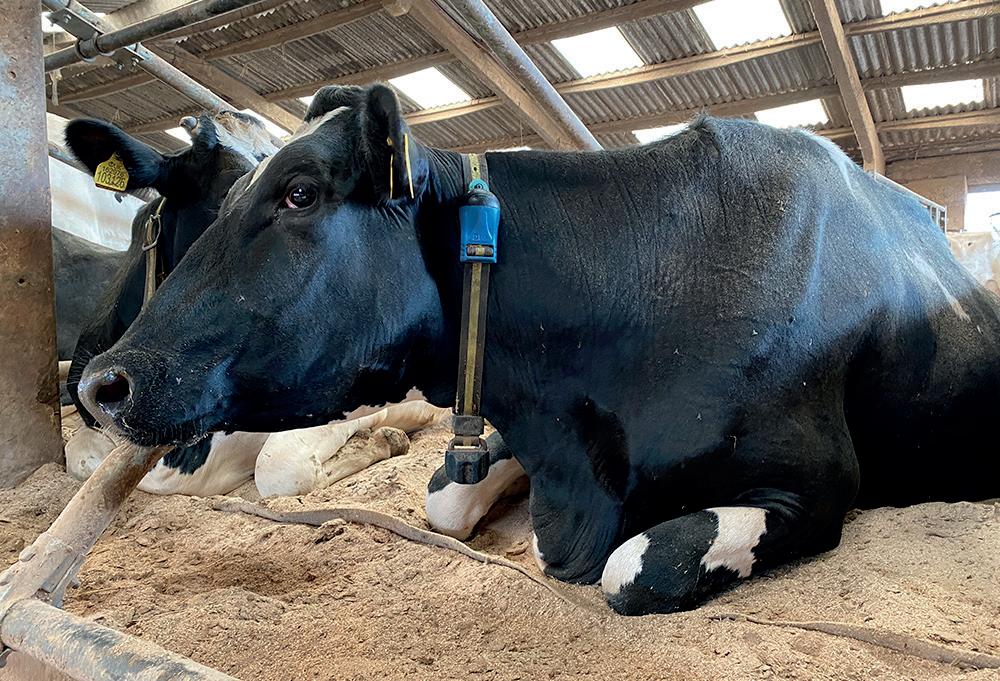
By measuring rumination frequency and duration, SenseHub’s neck collars and eartags can be used to accurately assess each individual cow or heifer’s feed intake and monitor the general well-being of animals on an individual or group basis.
In addition, their ability to monitor how frequently and heavily cows are breathing also enables SenseHub tags and collars to be used to determine when animals are at risk of heat-induced stresses during periods of hot weather.
If elevated rates of respiration are detected, the SenseHub app automatically
sends an alert to herd managers and their staff to warn them that the herd is in danger.
Armed with this knowledge, herd managers can then take action to protect the herd and reduce the impact of heat-related conditions, such as depressed feed intake, lower milk yields and reduced fertility.
Knowing which individual animals or groups of cows require additional attention during hot weather enables resources to be targeted to those animals most in need of help, ensuring productivity is maintained and giving time back to herd managers, their staff and their families.
To find out how more about how SenseHub could protect your herd during periods of hot weather, please call the SenseHub team on 01207 529 000. Alternatively, to send us an email, please contact us at allflexuk@msd.com
SenseHub is not intended to diagnose, treat, cure or prevent any disease in animals. For the diagnosis, treatment, cure or prevention of disease in animals, you should consult your veterinarian. The accuracy of the data collected and presented through this product is not intended to match that of medical devices or scientific measurement devices.
For more information, visit farmersguardian.com/MSDSenseHub
AUGUST 2023 17
CONTENT
SPONSORED
The main focus of Hamish Grant’s dairy business is breeding and selling cattle to other farmers in East Africa. Chris McCullough reports.


Hamish Grant runs 500 cows on his 1,600-hectare (3,954-acre) farm in Kenya.
Breeding cattle for harsh African climate

While most dairy farmers strive to breed a cow that can produce a lot of high quality milk, it is the animal’s survival traits that are more important to one Kenyan breeder.
Under his own unique business model, Hamish Grant at Gogar Farms, Rongai, in the Ri Valley, breeds dairy ca le for farmers across east Africa, with an emphasis on animals that can survive
the harsh African conditions.
Hamish says: “Initially we ran Ayrshire ca le on the farm, but since the mid-1990s we switched to Holstein Friesian which now make up more than 90% of the herd. Our primary business is breeding heifers to sell to customers across eastern Africa, meaning milk is more of a by-product for us.”
e farm normally runs about 500 cows, but with followers, ca le numbers on the farm are more than 1,400 head.

The cows are milked outdoors twice per day in a mobile unit.

Hamish says: “ e cows are kept outdoors all year round, and are milked outdoors using a mobile system with bucket milking. is unit is moved daily which increases our sustainability as we do not have slurry to worry about.”
e outdoor milking system currently works well for Hamish and his team as there is a river that snakes through the dairy grazing, making it di cult to round cows up to walk to a milking parlour.
Hamish says: “In the past, all our milking equipment was Fullwood, but we are now changing to the Bereket brand made in Turkey.
“ ere are eight stalls on each side of the mobile unit, with two sta milking and one assistant on each side. We run two teams for the morning and evening milkings.
“Each team milks for about seven hours. e rst team milks from 2am to 9am and the second team from 2pm to 9pm.”
Cows are kept in two groups with about half in the rst calvers group and the rest in the mature group of second lactation and older animals.
Under Hamish’s pasture-based system, the cows eat as much grass as possible, but in the dry season he bu er feeds some silage via a 22cu.m mixer which transports the feed to boxes in the elds.
Ticks
Hamish says: “ e main challenges we face here are tickborne diseases.
“We have to spray each cow every week through a spray race otherwise ticks proliferate and are vectors for diseases such as Redwater, Anaplasmosis and eileriosis.”
e herd is also vaccinated against foot-and-mouth disease three times a year.
Cows yield about 18-20 litres a day, but Hamish says the milk is a by-product of his business model
AUGUST 2023 18 WORLD DAIRYING KENYA
Farm facts
rGogra Farms employs more than 100 people
rThe farm has operated for more than 100 years and extends to 1,600 hectares (3,954 acres)
rMilk is sold to processor
BioFoods Kenya for the equivalent of 35-40ppl
rSexed semen is used on all cows and heifers
as he is focused on breeding cows and heifers suitable for other dairy farmers, and his system does not give the ca le opportunity to express their true potential.
He says: “ at is why I want to use genomics that will give a better idea of their potential than our milk yields.
“Farmers who manage the cows intensively commonly get twice as much milk from


these cows when we sell them.”
In terms of stock sales, Hamish sells about 200 in-calf heifers each year to farmers in Tanzania, Uganda and Ethiopia.
He says: “In-calf heifers sell for about $2,800 at 2.5 to three years old as they grow a bit slower under our conditions.
“However, they are tougher than fast grown heifers.”
In addition, he also sells third and fourth calving cows to other dairy farmers, for about half the price of the heifers.
He says: “Breeding cows are also valuable as farmers like cows at the peak of their milking potential.”
In order to breed the right animals for African conditions, Hamish uses AI bulls that rank highly on the Nordic Total Merit Index.
He says: “I use VikingGenetics Holstein Friesian semen as the o spring are not as big and cumbersome as North American or







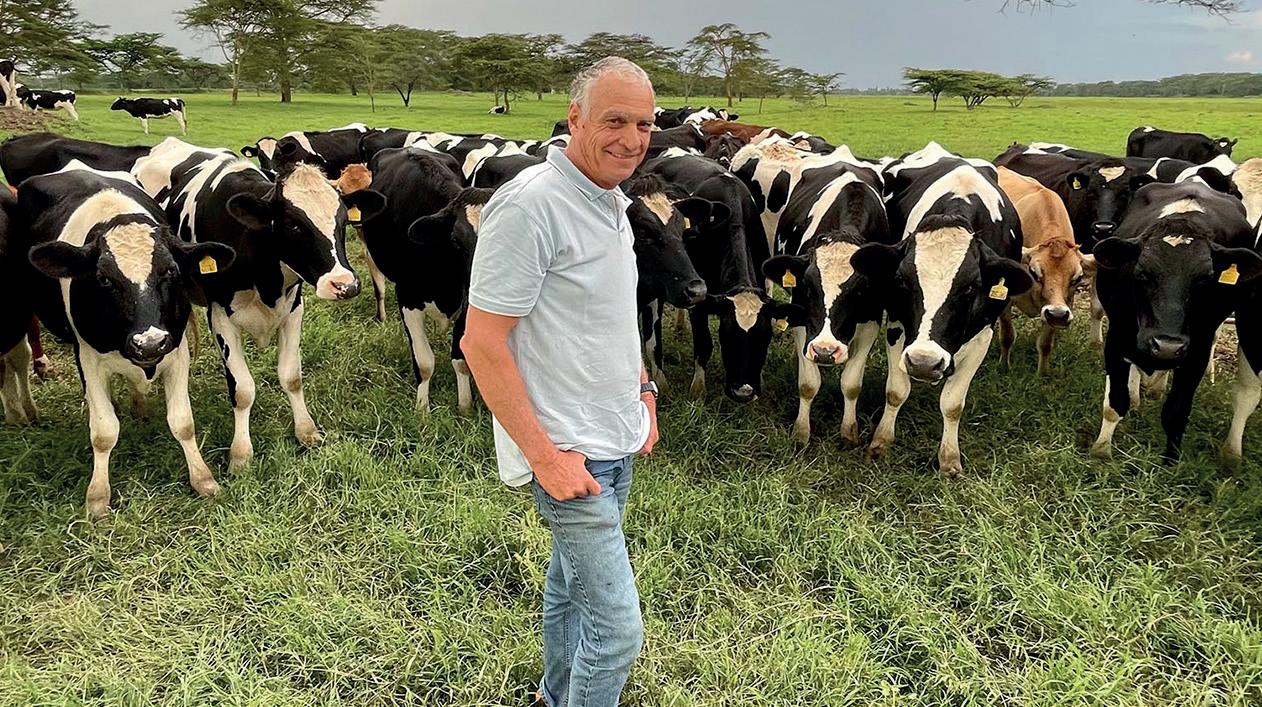
Dutch stock. ey are also much be er suited to the varied, and o en challenging conditions in Africa. Big animals struggle here in droughts, on uneven terrain and under less than ideal management.
“Also, we nd cows that are more than 50% black in colour are less susceptible to skin cancers and are longer lasting, so we tend to avoid bulls that are mainly
white in colour if possible.”
Hamish says he averages around one in three sexed semen straws resulting in a pregnancy over all his herd, including both young heifers and older stock.
“Interestingly, there is not as much drop o in that percentage in the older cows,” says Hamish. “ e worst pregnancy percentage is always with the rst calver as they are still growing.”



















































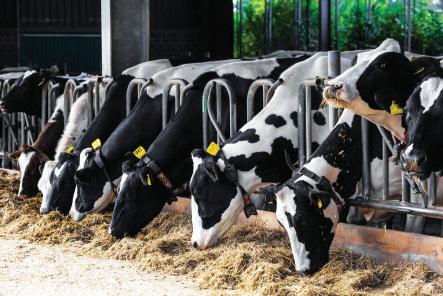
































































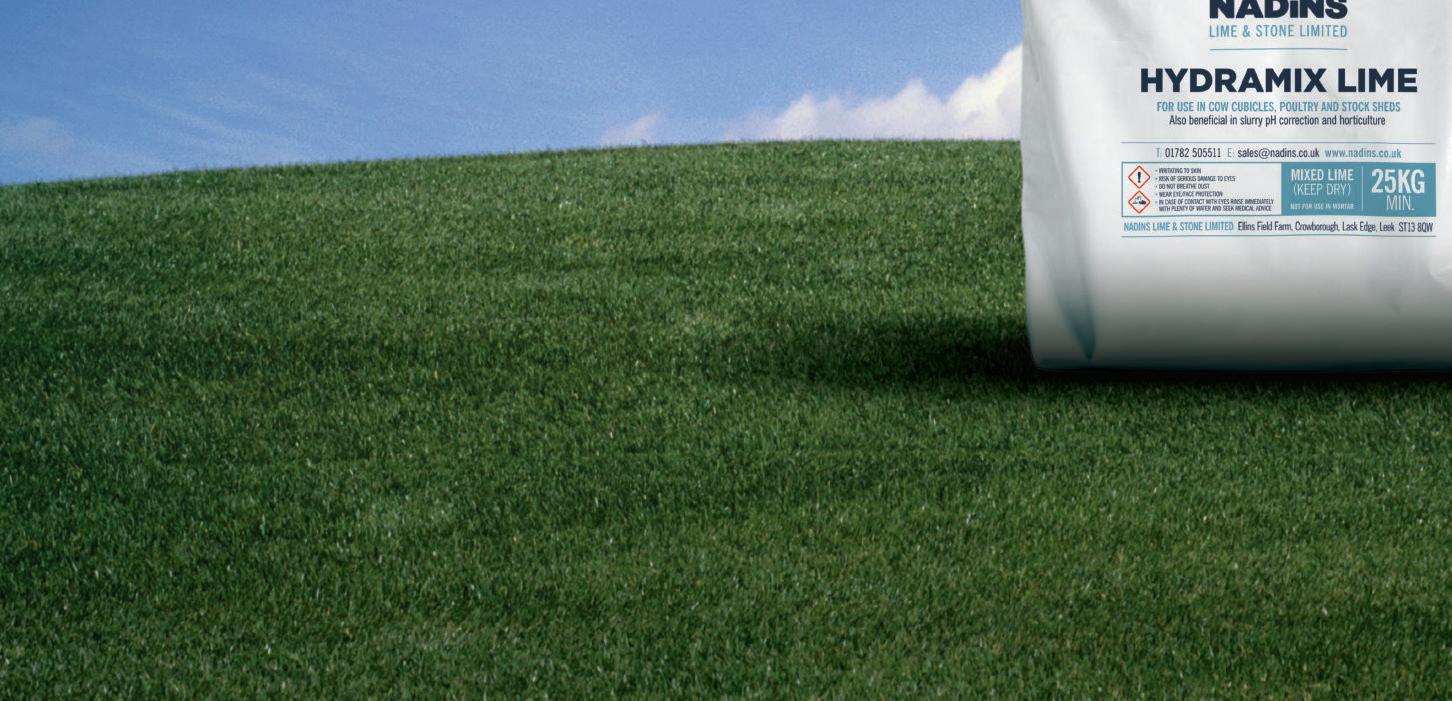







AUGUST 2023 19
WORLD DAIRYING
KENYA
Hamish has to breed heifers to survive the harsh African conditions.
Extended lactation production is attracting interest in the Netherlands and Denmark and while it might look attractive for some UK producers, it should only be introduced with proper planning. Wendy Short reports.
Managing the risks of extended lactation production
To some extent the technique of extended lactation production is already practised on a smallscale on UK farms, when drying off is delayed for a cow that is still producing high milk volumes.
However, extended lactation comes with risks and incorporating the technique will require specialised management, says Duncan Williams of Promar.
The theory behind extended lactations is that keeping high-yielding cows milking for longer can lift average lifetime yields, as well as increasing longevity.
This is largely down to the reduced number of days dry and fewer transition periods.
This is clearly the opposite of standard reproductive advice, which for decades has been to get cows pregnant as soon as possible, says Mr Williams.

He states that the key elements to consider are herd health status and milk production persistency.
He says: “If farmers have problems with the transition stage, the solution should be to tackle any health problems, rather than using extended lactation to calve less frequently.
“Any transition or health issues will decrease a cow’s milk yield, making that animal unsuitable for the practice.”
Extending the lactation is not as straightforward as simply delaying service for a random group of cows, he explains.
“The chosen animals must have the potential for persistent lactation; the technique is inadvisable for cows whose production falls off sharply at the end of the milking period. They should also have high health status, with no historical record of health problems.
“If farmers really want to try the system and they have done
Farmers who wish to experiment with extended lactation must have a good system of data management
DUNCAN WILLIAMS

all they can to maximise transition success and milk persistency, I would recommend selecting a small group of high-yielders for an initial trial.
“I suggest that the group should only include 5-10% of the herd for producers who are testing it for the first time. Heifers are the most obvious choice, because they tend to be healthier and their lactations are often more persistent.”
The voluntary waiting period on the selected animals can be moved back 30-50 days, he says.
Waiting period
The average voluntary waiting period, which is 42 days for cows and 60-72 days for heifers, could be adjusted to 70 and 100 days, respectively.
The practice is only applicable to all-year-round calving herds, as it will have an undesired effect on the calving pattern for seasonal-production herds.
Extending lactations will alter the herd’s overall reproduction statistics, so producers must be able to calculate the reproductive performance of the remaining herd separately.
UK producers have shaved off 30 days from the average calving index over the past 15 years, reflecting a significant improvement in general fertility management, he says. The current average calving index for the UK dairy herd is 394 days, with a general target of 365-380 days.
Correct feeding is an extremely important aspect, he adds.
“If the practice is not carried out correctly, the end result will be a cow which piles on weight in the final period of milking.
“Subsequently, she may be difficult to get in-calf and there is a risk she will not perform to her full potential during the next transition period.
“Rations must be tailored specifically for extended-lactation cows and it may be easier to achieve greater precision on farms with milking robots.
“Adequate energy and protein in the fresh ration will set cows up for long milk production.
“However, consideration must also be given to ensure the right balance between energy and protein in late lactation to avoid the cow laying down fat. Milk yields can fall after turnout, so that must also be kept in mind.
“Lactation persistency is a heritable trait. Cows with high milk yield potential tend to have a flatter lactation curve, but production can be manipulated to a large extent through nutrition.”
Housing availability is another factor to review when weighing up the potential benefits of experimenting with an extended lactation policy, says Mr Williams.
“Most farms have a limited number of cow spaces over winter. In these cases, it may be better to keep high-yielding
AUGUST 2023 20 BREEDING

cows and aim for an improved daily herd yield, rather than target individual cow lifetime daily milk production.”
Changes to the breeding policy may also a ect the number of heifers which are coming through the system for producers who breed their own replacements, says Mr Williams.
And extended lactation can slow genetic progress, although the impact will be limited, especially on units which use sexed semen.
Plans should be drawn up in conjunction with breeding advisers to mitigate both these issues.
Mr Williams says: “Farmers who wish to experiment with extended lactation must have a good system of data management.
“It is essential to monitor its e ect on the business by analysing the gures, so decisions can be made on whether or not the practice is improving pro tability.”
Complex
Extended lactation is a complex and contentious issue, he says.
He says: “Standard practice is to get the cow back in-calf as soon as possible, because more frequent calving will increase peak production period for the herd overall and will ll the bulk tank more e ectively.
“ ere may be bene ts in extending the lactation of speci c cows, but the practice must not be used in an a empt to justify an underlying fertility problem within the herd.
“At rst glance it may appear to be an a ractive proposition, because drying o a cow which is still giving high yields can be viewed as counter-productive.
“However, it should only be introduced with correct planning. Otherwise there is a risk it will have a negative e ect on overall pro tability.”















AUGUST 2023 21 before 31st July 2023 and receive a FREE heavy duty IMS auger upgrade Step up to a Strautmann Save on labour, wear & fuel Verti-Mix * This promotion is for business purposes in the UK only for new equipment and is subject to credit acceptance and any qualifications in government or company policy. Finance is available on 50% of RRP or the balance to finance whichever is the lower. VAT - Hire Purchase: Full VAT on signing. Lease: VAT payable on each rental as it falls due. VAT charged at the current UK rate at time of acceptance. Administration fees are payable on all transactions including interest free agreements. Written quotations are available on request from Strautmann Finance. Strautmann Finance is a trading style of Peregrine Asset Finance Ltd, 3 Maple House, Wykeham Road, Northminster Business Park, Upper Poppleton, York, North Yorkshire, YO26 6QW. Peregrine Asset Finance is authorised and regulated by the Financial Conduct Authority number FRN649227. Peregrine Finance offers financial facilities to UK businesses only through a number of authorised funders, a list of which is available on request. 0 % FINANCE 4+20 monthly payments @ 0% Flat Rate p.a, based on 50% RRP ENDS 31 st AUGUST 2023 * T&C’s apply, strautmann.co.uk/finance Distributed by Distributed by Visit strautmann.co.uk to see the full range of Verti-Mix feeder wagons or call OPICO now on 01778 421111 OPICO Ltd ask@opico.co.uk strautmann.co.uk Profit from our knowledge strautmann.co.uk

Having good stocks of quality forage helps to improve farm resilience in times of volatile milk prices and unpredictability. Volac silage experts offer guidance.
You only need to look back over the last two years to see the volatile and unpredictable nature of modern dairy farming. We have experienced milk prices hitting exciting highs then heart-sinking declines, variable input costs and a severe drought last season in some areas which left many farms facing a forage crisis.
While only part of the solution, having good silage safely ‘banked’ puts farms in a better position to navigate volatility and unpredictability, says Volac forage expert for southern England Ken Stroud. And with the spotlight on greenhouse gas emissions, good home-grown forage is highly sustainable, he adds.
Mr Stroud says: “A lot of money is invested in growing a maize crop to produce a good source of dry matter (DM) and metabolisable energy.
“At the end of the season, it is crucial to ensure as much of that investment as possible is recouped. This is achieved through harvesting the crop at its nutritional peak, then
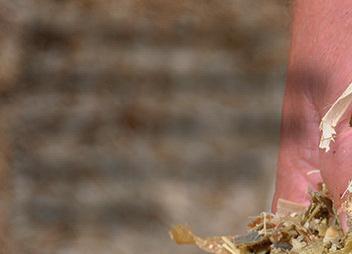
ensiling correctly to safeguard against losses in the clamp.”
Maize losses
Typically, Mr Stroud says the equivalent of one in every 10 trailer loads of maize DM ensiled is lost in clamps due to the growth of unwanted bacteria, yeasts and moulds. However, this can easily double, particularly where attention to detail slips during the ensiling process.
He says: “What is also important to realise is that these unwanted microbes feed first on the sugars and starches, rather than fibre. So the silage remaining is also lower in energy. Making consistently better maize silage requires a multi-step plan.”
1
HARVEST AT MAIZE’S PEAK
Mr Stroud says capturing maximum nutrient content in maize starts by harvesting when the whole plant reaches 30-33% DM, but also while leaves are still green.
He says: “Maize is often regarded as only ready to harvest once leaves die back. But by then it is past its best.
“Although harvesting later can
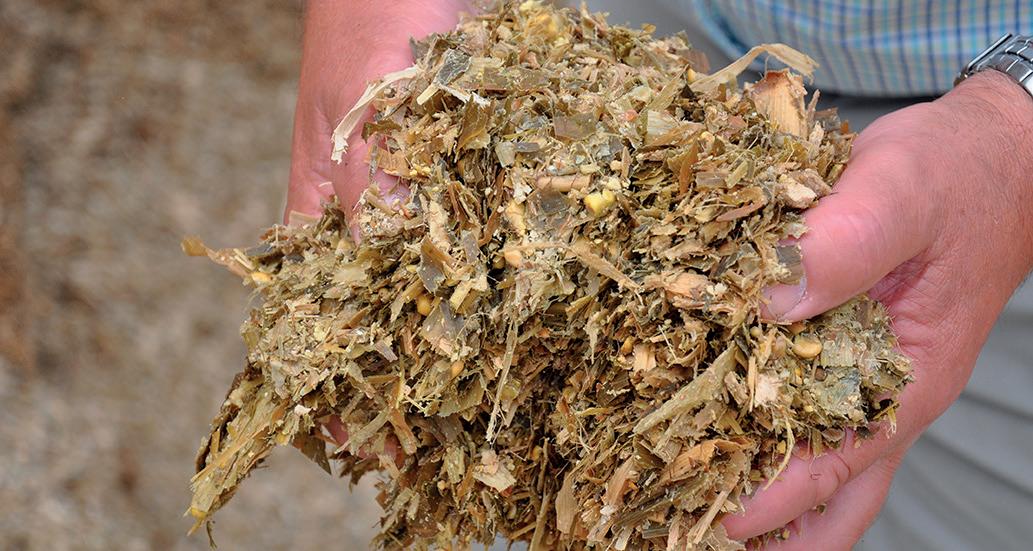
Five steps for better maize
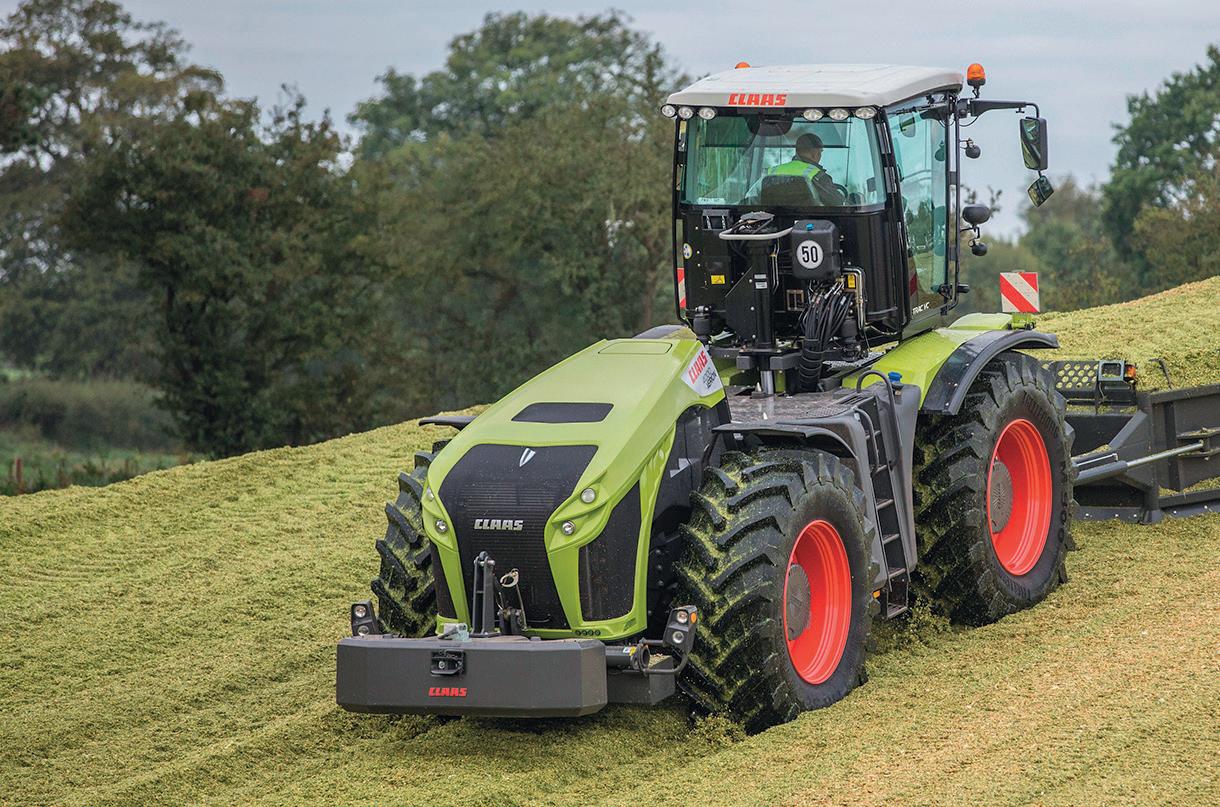
increase starch in the cobs, by harvesting while leaves are still green and lush, the plant is more digestible to the cow.
“In addition, dead foliage harbours unwanted yeasts and moulds and is more difficult to consolidate in the clamp than softer, living tissue, which makes it vulnerable to losses from heating [aerobic spoilage].
“Even last season when a lot of maize in parts of the country died off prematurely because of the drought, crops which were cut earlier tended to produce better silage.
“It is easy to miss the 30-33% DM target if contractors cannot get to the farm in time. So check crop percentage DM regularly to give contractors plenty of notice.”
2 LEAVE ENOUGH STUBBLE
Although it is often tempting to cut maize crops closer to the ground in search of extra yield, Volac silage expert for Wales and the west of England, Peter Smith, urges strongly against this.
He says: “For a start, the stem base is low in nutritional value. But it also contains high numbers of undesirable microbes, for example bacteria from the soil which interfere with the fermentation in the clamp, as well as yeasts and moulds. Therefore, ask your contractor to leave at least 15cm of stubble.”
3
CHOP TO THE CORRECT LENGTH
Chop maize short enough to aid consolidation but long enough for it to perform in the rumen, advises Peter Smith.
He says: “With maize vulnerable to heating, chopping shorter helps you squeeze out air during rolling and is especially important if maize is dry. Consider chopping to 1.5-2cm or down to 1.2cm if needed.”
4 PRESERVE WITH A DUAL-ACTING ADDITIVE
While heating in maize silage causes significant losses, do not think this is the only source of loss, says Volac silage scientist Dr Mark Leggett.
SPONSORED CONTENT
AUGUST 2023 22
Ken Stroud says making consistently better maize silage requires a multistep plan.
CHECK OUT THE CAMPAIGN FOR BETTER SILAGE
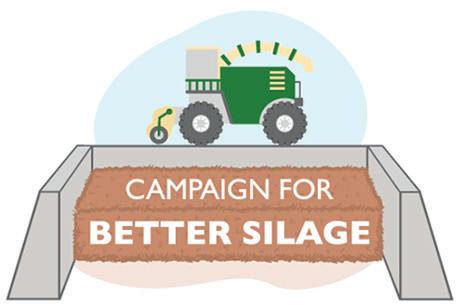
● As well as its Cut to Clamp initiative, Volac is proud to be one of the sponsors of Dairy Farmer’s Campaign for Better Silage. See page 29 or visit farmersguardian.com/ bettersilage


As much as half the losses can be invisible due to an inefficient fermentation, he says, making it important to safeguard against both problems.
Dr Leggett says: “An efficient, rapid fermentation is the starting point to good maize preservation. Fermentation is carried out by bacteria.
“However, while some bacteria will ferment maize sugar purely to desirable lactic acid, which is highly effective at preserving maize against the growth of unwanted spoilage bacteria, others ferment sugars to other compounds, including CO2
Yeasts and moulds
“This is not good, because as well as being a greenhouse gas, CO2 is a direct loss of DM.
“You cannot control which types of bacteria are present on the crop. However, by applying an additive, such as Ecosyl, containing the proven strain of efficient lactic acid-producing bacteria, Lactobacillus plantarum MTD/1, you increase the likelihood of a quality fermentation.”
Unfortunately, unwanted yeasts present on maize at harvest can survive in low pH conditions, says Dr Leggett, and even grow on lactic acid when exposed to air.
He says: “This process, which causes maize silage to heat up and is called aerobic spoilage, not only burns away valuable energy, but also releases CO2 and results in losses in the silage’s DM.
“As the lactic acid is used up, the pH also rises, which allows other fungi to grow, further reducing nutritional value and palatability and potentially resulting in mycotoxins.
“The dual-acting additive Ecocool not only contains Lactobacillus plantarum MTD/1, proven to produce a rapid fermentation, but also a second beneficial bacterial strain, Lactobacillus buchneri PJB/1, which generates acetic acid which has anti-yeast properties.
“Ecocool has been shown to reduce yeast levels and keep silage cool and stable for more than 10 days.
“Increasingly, Ecocool is being used as an integral step in making silage. With the growth of many maize crops affected by the drought last season, many farmers reached for Ecocool in order to preserve what maize they had.
“Farmers who have tried Ecocool tend to stick with it as the additive of choice.”


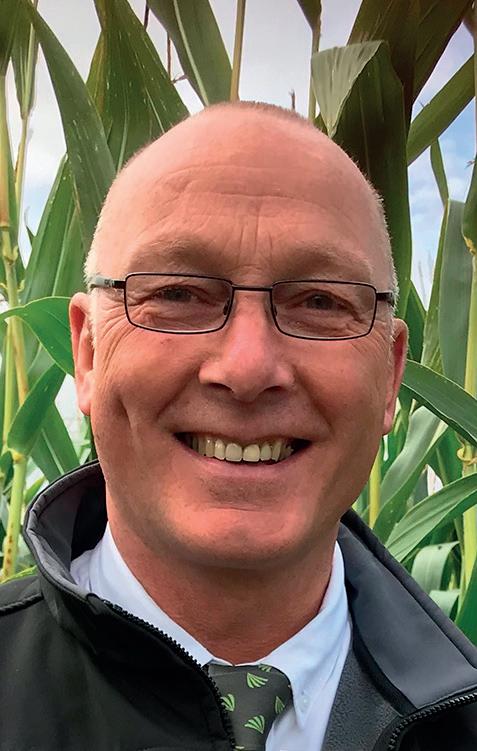

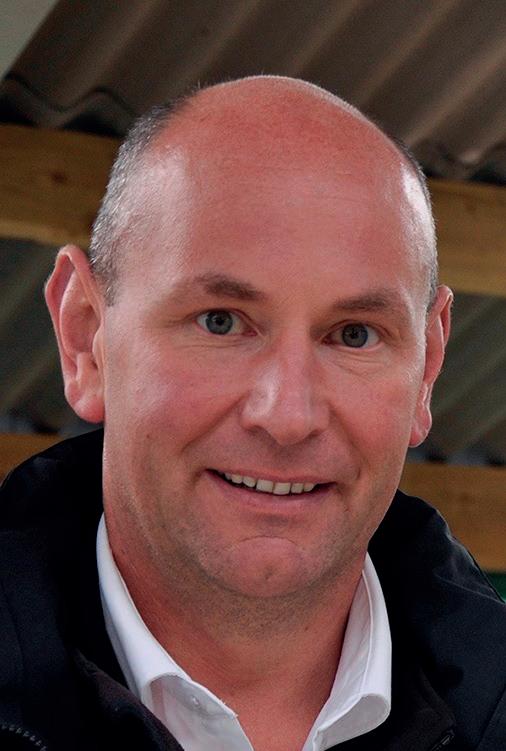

5FILL, SQUEEZE, COVER AND WEIGHT
The attention to detail put into filling, compacting, sheeting and weighting has a massive impact on how well maize silage turns out, says Volac silage expert for northern England, Jason Short.
The aim is to get the air out quickly and keep it out in order to aid the fermentation and limit the growth of yeasts and moulds which cause heating losses, he adds.
Mr Short says: “To minimise air ingress, line the clamp walls with polythene side sheets before filling. In order to get maximum benefit from compaction machinery, fill in layers at most 10-15cm deep and at no more than 20-degrees to the horizontal.
“Maize needs a terrific amount of compaction. A crop at 30% DM requires about 25% of its weight
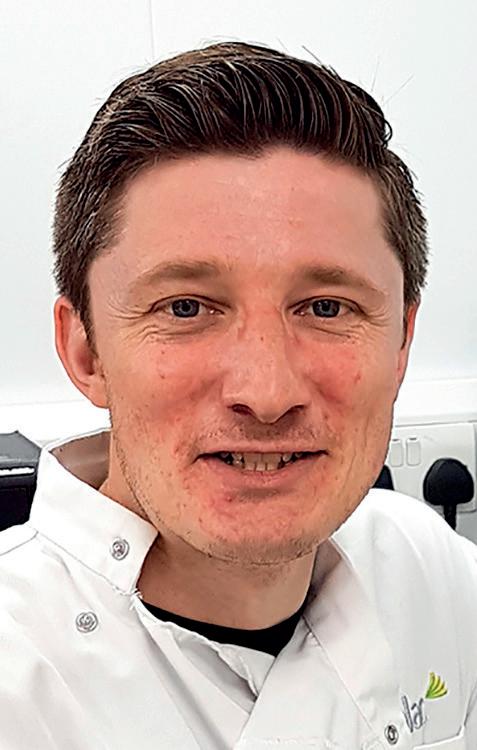

arriving at the clamp per hour to be rolling it constantly. So 100 tonnes per hour requires 25t. This might be a loading shovel plus a good-sized tractor. Drier crops will need extra compaction. Once filled, place an oxygen barrier film on top. This will be sucked into the surface contours of the maize to help create a seal. Pull side sheets over it, using a minimum one- to two-metre overlap all around.
“Then finish with a polythene top sheet and a protective woven sheet over the top, fully weighted with silage mats, touching tyres or bales. Protect against rodents and use netting to protect against bird damage.”
SPONSORED CONTENT
For more information on Volac’s Cut to Clamp initiative, visit cuttoclamp.com
for silage
Peter Smith advises that maize is chopped short enough to aid consolidation but long enough for it to perform in the rumen.
Peter Smith
Jason Short
Dr Mark Leggett
AUGUST 2023 23
Ken Stroud
Calcium and magnesium are important elements to get right for dairy cows, as the wrong levels can lead to hypocalcaemia and other health problems. Dairy Farmer reports.
Correct calcium levels in the blood are needed to keep the cow mobile, eating well, producing a good milk yield and remaining healthy.
Dr Graham Shepherd, founder of G. Shepherd Animal Health, says: “Calcium is a metal, like iron, but the animal eats it as mineral salts and uses it in small particles, called ions, in the fluids of the body, deep in the nerves and muscles.
“Calcium is stored in the bones, but bones are solid and the system for making solid bone into small ions is complicated and can become sluggish. Magnesium and vitamin D are important for this function.”
One of the main functions of calcium is helping the nerves send signals to the muscles.
Dr Shepherd says: “As calcium is involved in making the muscles do their jobs, low calcium can cause weakness in the cow.”
The most common problem linked with calcium is milk fever.
He says: “The weakness in the muscles will keep the cow on the floor, due to the calcium going to the udder and the calf.”
However, hypocalcaemia is a common problem which often cannot be seen.
“We see its effects in a freshly calved cow not getting off to a good start and achieving her full potential. Effects include a displaced stomach, mastitis, retained cleansings, womb
Lick buckets can help at pasture, but the intake of magnesium is erratic and unreliable DR GRAHAM SHEPHERD
Important elements in dairy cow nutrition
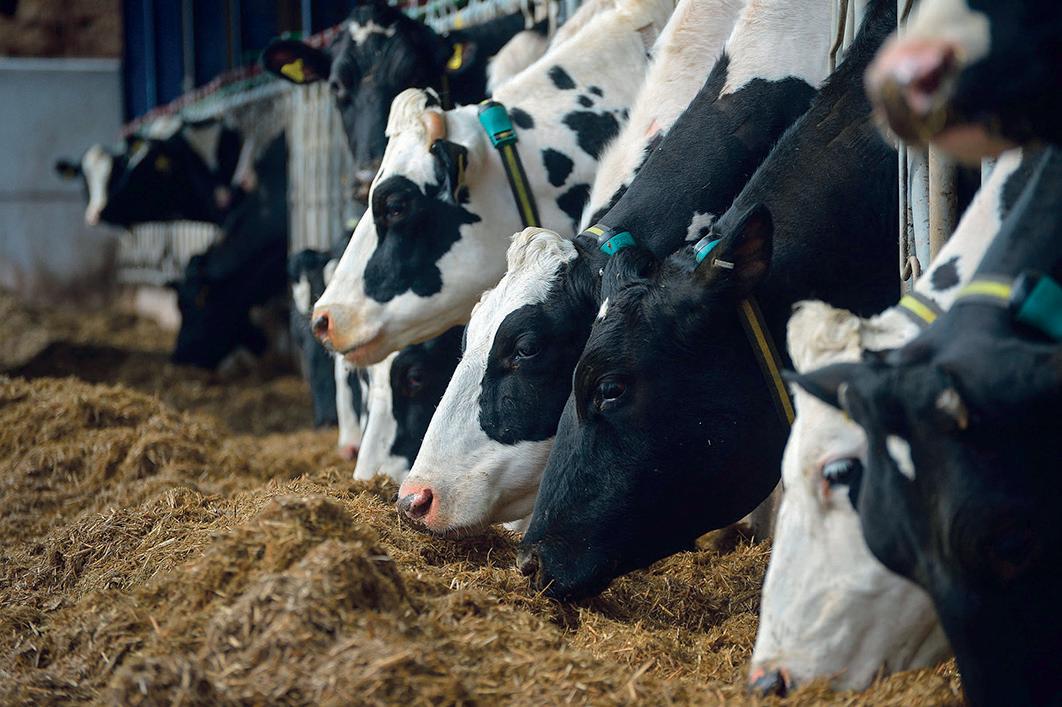
infections, poor appetite, ketosis and low milk yield.”
Sometimes a top-up of calcium is needed and, despite the best management, some cows just cannot mobilise enough calcium from their bones to meet demands.
Dr Shepherd says: “There is about 6kg of calcium stored in the bones; the calf and the udder take 11g of calcium a day from the blood.
“If blood levels drop by a quarter, this means the cow is in sub-clinical hypocalcaemia. If the blood levels drop by half, the cow is on the floor.”
Correct dry cow nutrition is a tool which can help. “Calcium is absorbed from the food in the gut, so a nutritionist should be able to make a programme for the farm, fitting in forages and perhaps calcium binders, dietary cation anion difference or other strategies.”
After calving, the total mixed ration should contain 200g of calcium for a typical cow’s daily intake, so Dr Shepherd says it is important the cow eats her ration.
He says: “A top-up helps to keep the gut muscles and leg muscles functioning so she can eat her
ration. A suitable top-up would be supplements such as boluses and fresh cow drinks.”
Magnesium aids calcium mobilisation from the bones, but is also needed for regulating muscle and nerve function, as well as enzyme function.
Dr Shepherd says: “It is a macro-mineral, so it is a metal element needed in relatively large amounts by the cow to stay healthy, productive and alive.”
Bone magnesium does its structural job and is mostly unavailable to the cow.
“What is important is the magnesium levels in the tissues and cells. Levels there are mainly dependant on absorption of magnesium from the rumen.
“Salt, as sodium, helps this absorption, so I always advise lump rock salt for lactating and growing cows.”
Common problems with low magnesium include staggers, milk fever, mastitis, retained placenta, endometritis and poor appetite –all because magnesium is integral for calcium to do its job.
Antagonists of magnesium include potassium from fertiliser or slurry, aluminium from soil contamination and oils in the diet.
Mr Shepherd says: “High potassium interferes with the sodium system for magnesium absorption. And lush grass, which is high in potassium as well as unsaturated oils and protein, will reduce rumen available magnesium.”
Sources of magnesium include mineralised concentrates, minerals with added magnesium and soluble supplements for water.
Dr Shepherd says: “Lick buckets can help at pasture, but the intake of magnesium is erratic and unreliable, similarly with minerals in water.
“The intakes will be variable, particularly in wet weather, because cows will be getting a lot of water from wet pasture and puddles.”
Magnesium
Magnesium is usually added to concentrates and dry cow minerals as calcined magnesite, a form of magnesium oxide.
Dr Shepherd says: “Some grazing herds will top dress the grass with calcined magnesite before grazing when it is considered to be a staggers risk.
“Another option is that calcined magnesite can be mixed with molasses and fed along a trough to high-risk groups. A typical amount would be 50g of calcined magnesite per day, but always consult with a vet or nutritionist.”
And Dr Shepherd says it is important to be vigilant with magnesium use.
“There have been cases of magnesium poisoning when too much magnesium powder has been added to water troughs and the trough is slow to fill.”
AUGUST 2023 24 DIET FORMULATION
After calving, the total mixed ration should contain 200g of calcium for a typical cow’s daily intake.

ARE YOU A RUMINANT FARMER LOOKING FOR A HIPRO SOYA REPLACEMENT?
Cut down on food miles using a more sustainable product, increased output and all at a reduced cost!
Increase in milk and meat yield
Bypass protein level of 84%!
Meeting the demands for DUP whilst giving the animal maximum efficiency
Reduces the need for large quantities of protein whilst still giving balanced protein to enhance overall performance
1.2kg of Aminopass Rap will REPLACE 1kg of Hipro Soya in the diet
Patented process doubles the amount of bypass protein!
Careful process control procedures ensure proteins are HIGHLY RUMEN UNDEGRADABLE but retain the HIG H INTESTINAL DIGESTIBILITY

Sales Office – 01405 764447
Keith (Sales Director) – 07776 529025
Orders and Enquiries – fixings@yorkshirefeedstuffs.co.uk
Website – www.yorkshirefeedstuffs.co.uk
Is there anything else that we can supply you with?

REDUCED FOOD MILES
Sourcing the majority of our raw material as home grown and producing in Yorkshire massively reduces the carbon footprint of each litre of milk.

Photo credit - https://www.theguardian.com/world/2023/apr/30/milk
rights
-adverts-battery-cows-dairy-cattle-fields-animal-
CONTACT US! We would love to hear from you.
Any delay in taking the first steps to reduce emissions will make the overall challenge more difficult, according to speakers at a recent event, which focused on sustainability. Dairy Farmer reports.
Clarity needed to drive sustainability
Alack of clarity in many areas, combined with confusion over the best way to start progressively reducing farm emissions, means UK dairy farmers have not made as much progress as possible. And this will only work against the industry as pressure towards net zero increases.
Speaking at the recent Trouw Nutrition ‘Sustainability: Time to Take Control’ leadership event, Dr Liz Homer, sustainability lead with Trouw Nutrition, emphasised that reducing emissions would be a combination of short-, mediumand longer-term actions and all farms needed to develop plans for each aspect of the business.
She said: “ ere is no silver bullet to developing more sustainable systems and nothing to be gained from delaying starting to change management practices. Becoming more sustainable is about making incremental changes and challenging everything you do.
“ e good news is that we already know how to improve management to farm more sustainability – by applying best practices and asking ourselves
why we are not already there.”
Prof Jude Capper, of Harpers Adams University, proposed that while no one system was more sustainable than others, all systems could be more sustainable.
She told delegates that by se ing benchmarks and improving key performance indicators (KPIs), it would be possible to both reduce environmental impact and increase returns.
She advised farms to set targets for feed e ciency, calf growth rates, cow health, longevity, grassland quality, fertility and age at rst calving.
Positive effect
She said: “Improve any of these areas and you will have a positive e ect on both emissions and margins, using common sense, science and management to improve all you do.”
Prof Capper was also quick to point out that there was a great deal of misinformation and misrepresentation regarding dairy emissions.
She said: “ ose opposed to dairy farming are very quick to point out that milk has a higher carbon footprint per litre than oat or soya juices.
“What they choose not to
Comparing the nutrient density and emissions of products
add is that milk has a much higher nutrient content than the plant-based extracts.
“When you look at the ratio of nutrient content to carbon footprint, milk is a far more e cient product with a lower environmental impact than plant juices [see table].
“ e nutrient density was based on calculations including protein, carbohydrates, fat and 18 vitamins and minerals.
“Milk produces double the nutrients per unit of greenhouses gases of soya juice and eight times that of oat juice, but how o en is this mentioned?”
Discussing the Co-op’s position on sustainability, senior agriculture manager Joseph Keating said the aim has been to establish some simple KPIs for suppliers. ese include using only deforestation-free soya by 2025, achieving a calving index of 380 days and calving heifers at under two years old.
He said: “ ese are all achievable and will have a direct impact on dairy emissions. As an industry, we need to know what we can do to measure carbon emissions and benchmark progress. But how do you measure methane?”

Prof Jude Capper says that while no one system is more sustainable than others, all systems can be more sustainable.
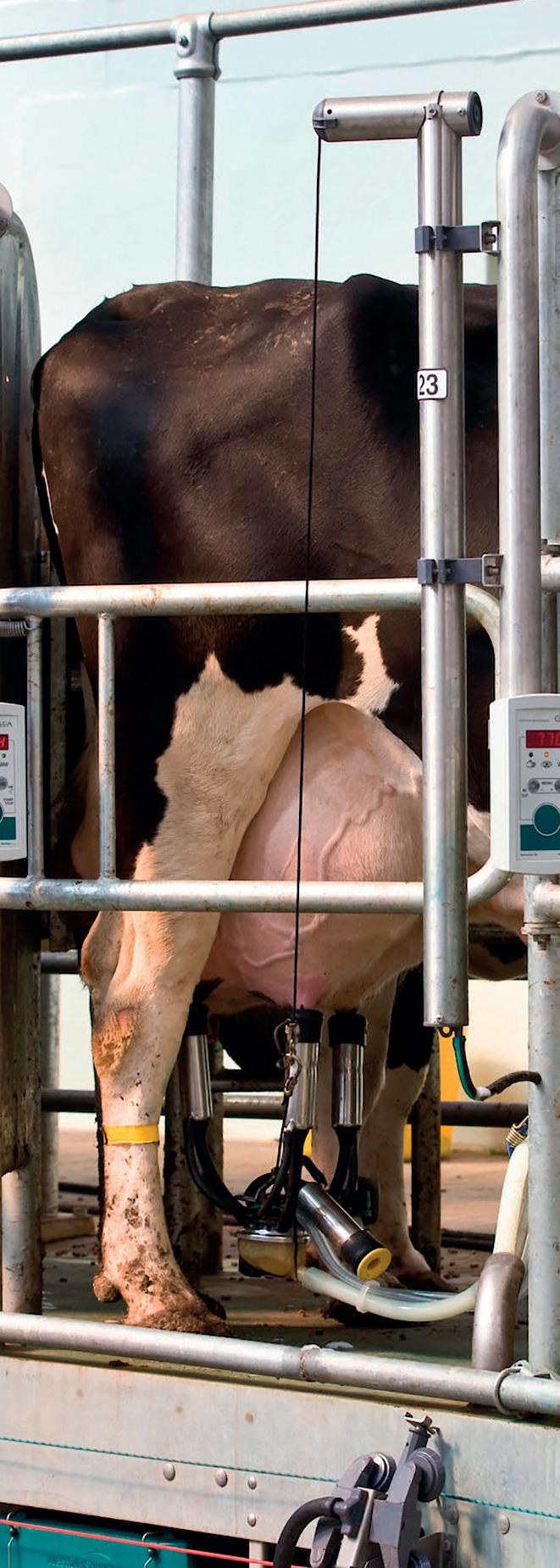
He identi ed two big challenges in meeting targets: “We need to overcome the misinformation and mistrust surrounding reducing emissions. Some incorrect information is accidental, but some is misleading, so there must be clarity so correct decisions can be made.
“ e second challenge is to increase the degree of co-operation across the supply chain both before and beyond the farmgate. We are all in this together and need to work as such.”
One business taking a leading position working with its suppliers is Arla, and global farm sustainability and collaboration lead for Arla, Tom Gill,
AUGUST 2023 26 SUSTAINABILITY
Milk Soya juice Oat juice Nutrient density 53.8 7.6 1.5 Carbon footprint (g CO2/100g drink) 99 30 21 Nutrient density index (nutrient density/g CO2) 0.54 0.25 0.07
Source: Prof Jude Capper
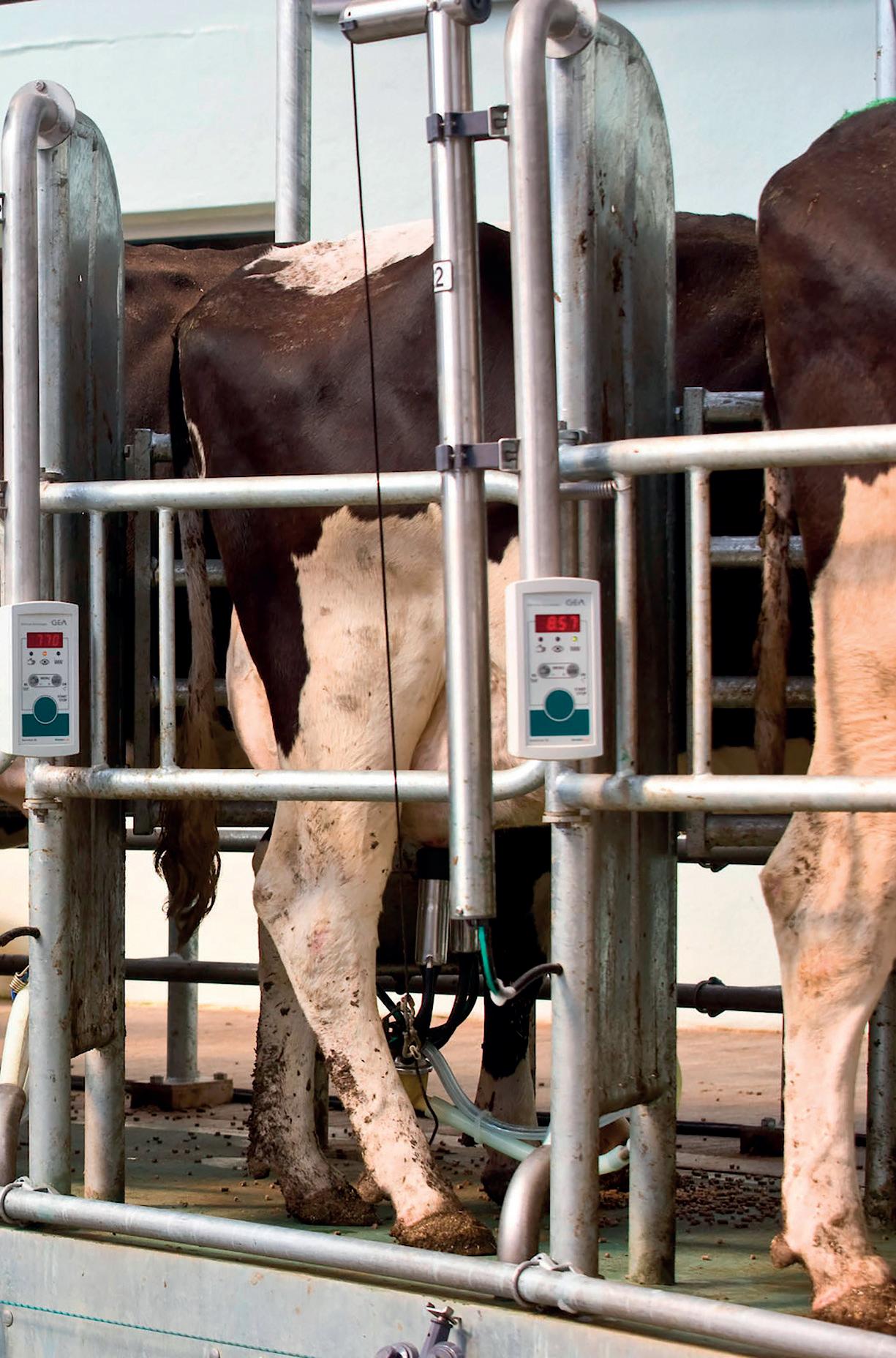
said it was important farmers set the agenda for emission reduction, but that the company had created its sustainability incentive model to help accelerate climate reduction actions.
He said the model was based around measurable change and the a ainment of points which directly impact the milk price through a clearly identi ed price incentive.
“For example, a farmer totally removing soya from diets will achieve 11 points, while another eight are available for improving protein e ciency. Working with our owner producers, we want to identify the next key areas and will be evaluating new technologies to accelerate progress.”
Summarising the event, Rob Binnekamp, general manager at Trouw Nutrition GB, said sustainable dairy farming was not a standalone activity, but an integrated part of business activity, going hand in hand with economic bene ts.
No time to wait
He reiterated that there was no time to wait, with plenty of areas where farmers can get started now with many quick wins available.
He said: “Farmers, suppliers and their customers must all work together to improve sustainability and demonstrate the key role ruminant farming plays in feeding the population from sustainable farming systems.”


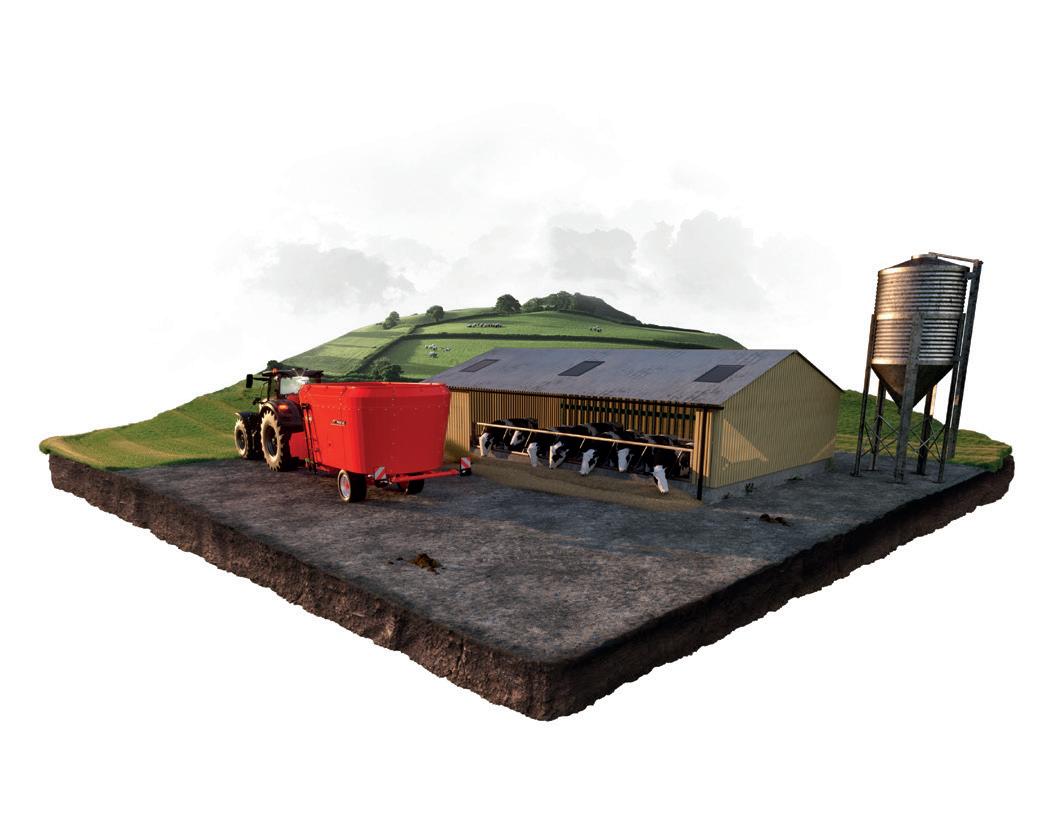
Equipped with a weighing system and available in 4 to 45m3 capacities.
KUHN TMR mixer wagons produce the perfect mixed ration to guarantee a quality feed for your livestock. Our range offers 1, 2 or 3 vertical auger options, allowing precise feed ration management.
To book your on farm demonstration visit: https://gofurtherwithyourforage.kuhn.co.uk/contact/
gofurtherwithyourforage.kuhn.co.uk
Scan the QR Code to visit the ‘GO FURTHER with your forage’ website

13th September

AUGUST 2023 27 SUSTAINABILITY
See us at:
EFFICIENT feeding GO FURTHER with your forage
Could there be more in the Sustainable Farming Incentive (SFI) than appears at first glance? Dairy Farmer reports.
Reasons dairy farmers should sign up to SFI
There are several reasons why farmers should consider signing up to the Sustainable Farming Incentive (SFI) says Evie Price, of agricultural advisers CXCS.
You get a ‘sign-up’ fee
JMs Price says: “There is now a payment of £20/ hectare on the first 50ha of land included, which can help cover administration costs. This was introduced after criticisms that the payments were not enough to justify getting help from an adviser to complete the application.”

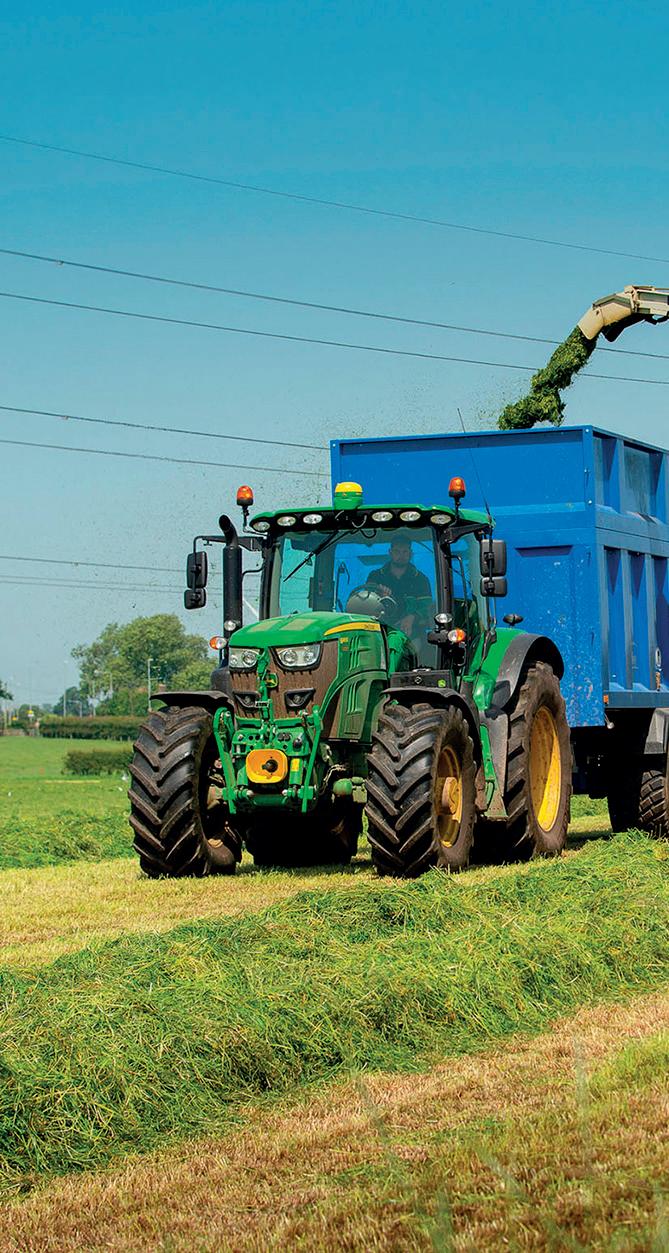
Flexibility managing improved grassland
JThe SFI does not put restrictions on stocking rates or fertiliser and manure application levels and dates, says Ms Price, and it also does not prescribe dates when swards can be grazed or cut for silage and hay. She says: “This allows more freedom choosing application rates to suit your system and the timing of activities such as silaging, which are often best dictated by the weather, rather than the calendar.”
On a dairy farm where four or even five cuts might be taken with grazing fitted around that, Ms Price says this could be even more crucial.
Home-grown forage
“Getting the best yields of home-grown forage is more important than ever in a time of high bought-in feed prices.”
She says the thrust of the SFI is to set out actions it wants farmers to take, without attaching strings, unlike the Countryside
Stewardship (CS) grassland options, many of which focus on reducing fertiliser and manure usage and may only allow certain activities in certain time windows.
“SFI is, therefore, less likely to necessitate big changes to your practices and could be a better potential fit for highinput, high-output grassland.
“It is worth remembering that such grassland has environmental benefits too, as it sequesters carbon and can bring benefits for wildlife.”
No need to take areas out of production
JThe SFI does not involve buffer strips or leaving corners of fields unmanaged, which Ms Price says basically means all your land can remain in productive agricultural use.
“Of course, dairy farmers, like others, may have an odd wetter patch or less accessible field corner, but they may still wish to keep this in production, retain the flexibility to manage such
areas how they want, without being tied into an agreement dictating how. In these volatile times, being able to react and respond to changes in market conditions is important.”
The choice to ‘mix and match’ payment levels
JIf you are prepared to do more under the SFI, you will be paid a higher rate. And Ms Price explains that at present, both the grassland and arable land standards have a choice of two levels – ‘introductory’ and ‘intermediate’. The
moorland standard currently only offers ‘introductory’.
She adds that future standards are expected to have two or three payment levels. “If you have arable and grass, you could opt for both standards – maybe signing up to the lower level of the
arable and the higher level of grassland. It is also looking likely you will be able to make changes to your choices as time passes. It is worth noting that if you go for the higher arable level payment, you have to put 20% of your land into a multi-species cover crop.”
AUGUST 2023 28 INITIATIVES
Evie Price
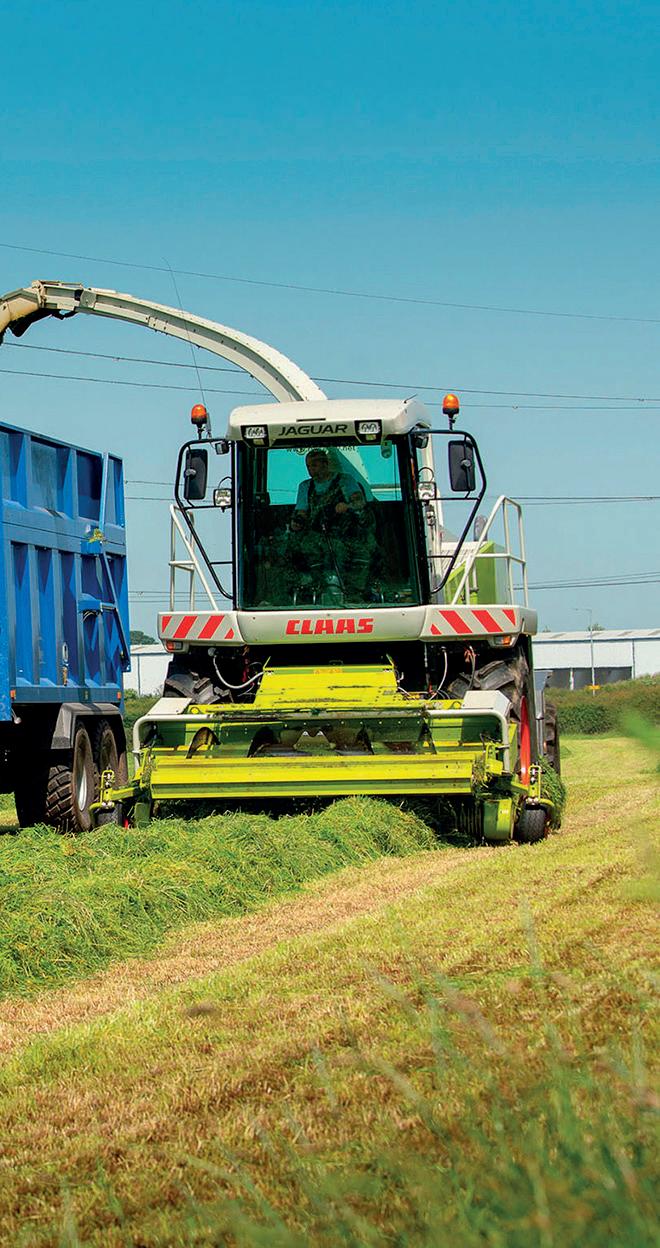

The Sustainable Farming Incentive is less likely to necessitate big changes to your practices and could be a better potential fit for high-input, highoutput grassland, says Evie Price.
No attached unpaid conditions
JMs Price says the SFI ‘does not come with unpaid conditions’, unlike CS, which puts, for example, a 50% limit on hedgerow cutting if you enter an agreement.
Failure to stick to this if you sign up to an agreement would represent a breach, even though there is no direct financial benefit from doing it.
Simpler and speedier to apply and quicker payments
JThe SFI has a rolling application window, online via the Rural Payments Agency, and
There
JDefra has announced it is planning six new standards in 2023, giving more choice to farmers. Ms Price says: “They will cover hedgerow management;
Herbal ley payment across all your land
JThe intermediate level in the grassland standard requires farmers to establish herbal leys on 15% of their land, but they then qualify for the same payment rate across all of their grassland.
Ms Price says: “Compare this to CS – where, if you opt for a herbal ley, you have to state in advance how many acres of that ley you are going to have each year and you are only going to be paid on the areas where
you actually have it. Under the SFI, the payment for the lower level of the grassland is £28/hectare/year, with £58/ha on offer for the higher one.
“Herbal leys are lauded for the way they can improve
SPONSORED CONTENT
Preparation for final silage cuts
As farmers look towards third and possibly fourth cuts of silage, considering the nutrient status of the soil and the impact of grass offtakes is vital to avoid yield and quality reductions.
Philip Cosgrave, of Yara, says reviewing previous applications before spreading more fertiliser is vital to ensure the correct nutrient balance.
He says: “Phosphate is rarely an issue on dairy farms, but potash is likely to be undersupplied and sulphur may also be in deficit. Products such as YaraMila NK Sulphur fit well at this time of year.
“If applying more nitrogen, choose a nitrate-based fertiliser rather than urea to reduce the likelihood of ammonia volatilisation. Splitting nitrogen applications is advisable in dry periods to spread the risk.
“If plenty of slurry is available, delaying nitrogen fertiliser spreading may be the best option until rain is forecast.”
Where farmers are considering an
Sponsored by
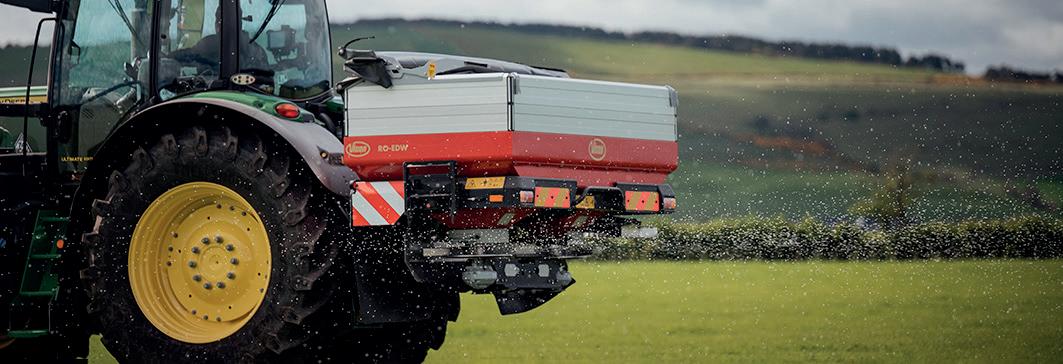
early autumn reseed, soil nutrition is vital, Mr Cosgrave says.
“Correcting pH should always be the starting point and making sure potash levels are adequate is also important. Phosphate is key for reseeds, as small grass plants need it for root establishment and tillering. There is a misconception that nitrogen is not necessary for swards containing legumes, but it is desirable to encourage early growth of clovers, as is phosphate.”
Traditionally, late summer can bring more inclement weather, meaning correct

machinery setup for the conditions is essential.
Eddie Caulfield, territory sales manager at Krone, says there are a few simple tweaks to make.
He says: “The moisture content of grass passing through the mower will determine the optimum speed of the conditioner rotor. In damper weather, the grass will need more conditioning to allow optimum wilting, so choosing the higher 900rpm speed setting is recommended.
“Heavy grass crops may also require this higher setting, even if grass is dry.


Ms Price says you do not have to send in additional evidence or maps as you do with CS.
integrated pest management; nutrient management; arable and horticultural land; improved grassland; and low input grassland.”
soil condition and structure, sequester carbon, retain moisture, fix nitrogen [reducing artificial applications] and provide ‘herbal worming’ through use of plants like chicory.”



“Selecting the appropriate positioning for the conditioning baffle plate is important. If less conditioning is required, for dry or light crops it can be backed off, but for heavy or damp crops it needs to be moved closer in for greater conditioning.”
Mr Caulfield says similar care must be taken when setting up tedders as for wetter, longer grass, the pitch angle of each of the rotors should be steeper, up to 19-degrees. For drier grass, or when making hay or haylage, the shallower angle should be selected.
Find

AUGUST 2023 29 INITIATIVES
is more to come
code
out more about Campaign for Better Silage at farmersguardian.com/ bettersilage, or scan the QR
Get ready for 24 Hours in Farming, also known as #FARM24, agriculture’s biggest digital extr role of British farmers to the general public as the nation’s most trusted food producers and
1 Share a day in your life – what the norm is for you on a typical day is vastly different from the general public and this is why it is so important to share
2 Explain your role as food producers – some of the most simple facts about the work you do each day are the most interesting
3 Talk about your farm – share your background, who is involved, what they do, how many acres you manage, what you farm, who your customers are; the list is endless
4 Snap your favourite piece of machinery kit – explain what it is, how it works or just jump in the cab and video your journey
5 Tell your story – how did you get into farming? What do you enjoy the most about your job? What might surprise others about what you do?
6 Describe your livestock or the crops you grow –what are they? How do you look after them? What makes a healthy animal or crop? What do they like? What don’t they like? What is their journey from field to fork?
7 Show the world exactly what it is which makes you proud to be a farmer
Join the 24-hour celebration Nine ways you can get involved Show the world
8 Capture the sounds of the countryside – share the sounds which surround you every day



We are hugely proud of #FARM24 and bringing the story of British food and farming to a global audience through this campaign. We know our customers really value the work of British farmers, and being able to show the people and pride behind the products is fantastic




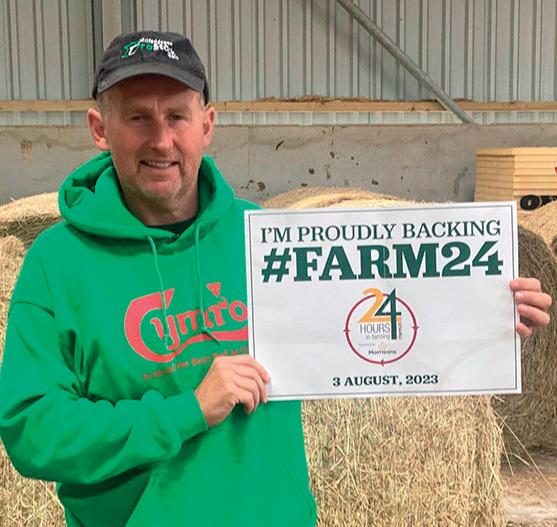


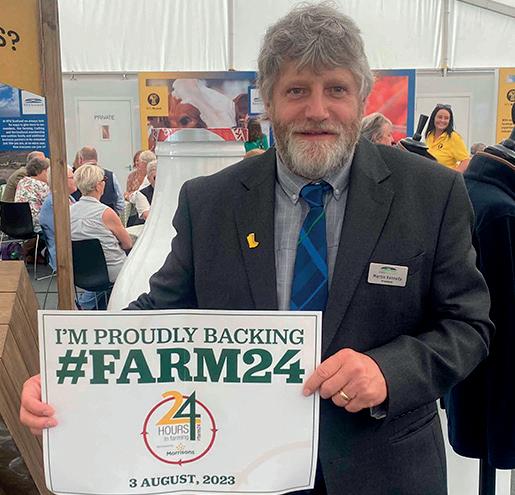

9 Explain why farmers can be trusted – research confirms farmers remain the most trusted group in the supply chain and this is a chance to tell the public why YOU don’t have to wait until Thursday, August 3, to get involved in 24 Hours in Farming. We want to see you post your pledges on social media in the run-up to the day and we are enjoying the pictures we are seeing across social media so far.

what you do best






Get involved today by simply downloading the pledge and sharing on your social media channels that you are supporting this year’s campaign and you will be taking part on August 3.
For more information on how to get involved, visit farmersguardian.com/farm24
Visit farmersguardian.com/farm24 Search #FARM24 on social media AUGUST 2023 30
AND SUSTAINABILITY DIRECTOR –MANUFACTURING
MORRISONS SOPHIE THROUP
TECHNICAL
AT
avaganza which showcases the extraordinary guardians of our iconic countryside.
celebration



#FARM24 is back



24 ambassadors making some noise for #FARM24
THIS year we have teamed up with 24 new ambassadors across the UK in a new move for the initiative to share with consumers a snapshot into their everyday farming lives and the sectors they work in.
Taking to social media, the ambassadors are already sharing content ahead of the day and are scheduled to go live on August 3, where their combined audiences will hear more about their individual farming journeys.
For a full list of our ambassadors and to read more about them, visit farmersguardian.com/farm24
 KATIE JONES
EDITOR OF DAIRY FARMER
KATIE JONES
EDITOR OF DAIRY FARMER
#Farm24 is a fantastic opportunity to showcase the very best of British agriculture. It gives you –the farmer – a chance to really shout about what you do on a day-to-day basis and it provides us with a great way of engaging with, and also educating, the public about how our food is produced
August 3-4, 2023
AGRICULTURE’S biggest digital campaign –#FARM24 – is gearing up to be the biggest and best yet and we need your support.
Sponsored by Morrisons, 24 Hours in Farming showcases the role of British farmers to the general public as the nation’s most trusted producers and as custodians of our iconic countryside.
Last year we achieved a reach of 28 million and welcomed support from farmers across the UK, the Prime Minister, celebrities, athletes, chefs and many more.
On August 3-4, we are asking farmers and industry organisations across the UK to unite once again and take farming to the masses by sharing what your typical day in farming looks like and using the #FARM24 hashtag, tagging @FarmersGuardian and @Morrisons so we can see you.




Search #FARM24 on social media Visit farmersguardian.com/farm24
AUGUST 2023 31
Disease protection and following rearing protocols are the cornerstone of successful youngstock rearing. Here, we take a look at some of the key diseases and performance metrics.
Medical practitioners are now aware of the threat to human health posed by coronavirus, thanks to the Covid-19 pandemic.
But new animal health diagnostic data suggests coronavirus could also be a more important player within the bovine respiratory disease (BRD) complex than previously thought.
Recent UK studies show bovine coronavirus as being the most prevalent virus found in routine disease screening and nasal swab samples taken during a BRD outbreak.
While bovine coronavirus is a relatively well-known cause of neonatal calf diarrhoea – and is the same virus as the respiratory variant – its role and impact in BRD has been less well de ned. However, industry experts believe this is about to change.
Link
Dr Paul Burr, vet and director of Biobest Laboratories, says: “ ere may be a link between initial respiratory infection and intestinal infection, because the virus is produced in the respiratory tract and then swallowed with the copious
Bovine coronavirus: An important respiratory disease pathogen
quantities of mucus generated during infection.
“What is more, an association has been shown recently between detection of bovine coronavirus in calf faeces and detection of bovine coronavirus in cases of pneumonia on the same farm.”
Dr Burr also says the fact bovine coronavirus is frequently isolated alongside other, perhaps more recognised, respiratory disease pathogens, such as BRSV, M. haemolytica, Pi3 and M. bovis, suggests an interplay between these organisms.
He says: “Research has already shown that bovine coronavirus infection disturbs the protective mucus lining of the thoracic tract. It may therefore be that it ‘opens the door’ for the other viral and bacterial pathogens to establish themselves and cause disease.”
e UK bovine coronavirus prevalence picture mirrors
that seen in Europe. A recent 16-country European study found every dairy farm was seropositive for bovine coronavirus and herds containing bovine coronavirus seropositive calves had an increased risk of su ering BRD.
Dr Burr says: “Calves shedding bovine coronavirus nasally have been shown to be 1.5 to 2.7 times more likely to have BRD than those which do not shed the virus.
Understanding
“It is clear to me that this virus does play a role in the BRD complex; it is just that up until now we have not been looking for it and perhaps do not fully understand its potential to cause disease.”
Dr Burr believes bovine coronavirus has not had the focus it deserves from the veterinary community, despite a growing body of evidence
worldwide demonstrating both its presence and clinical importance in the BRD complex.
Specific tests
He says: “ is is possibly because we have had a historic lack of speci c tests and subsequent preventive action available to us, so the focus has always been on be er colostrum feeding protocols, hygiene and biosecurity.
“We certainly know that bovine coronavirus is persistent in the environment and can be easily spread via fomites, such as feeding equipment, boots and tyres.”
To help develop understanding, Dr Burr has undertaken an analysis of more than 400 nasal swab samples taken between 2020 and 2022 from BRD a ected ca le on UK farms. He says: “Bovine coronavirus was found in 39% of these samples, making it the most
AUGUST 2023 32 YOUNGSTOCK
REARING
36 HEIFERS Gains in yield and fertility 42 PROTOCOLS Improving rearing performance 46 PNEUMONIA Early life vaccination 50 CRYPTO A problem with water supply
BRD pathogen identified Percentage of positive farms Bovine coronavirus 38.6 Bovine respiratory syncytial virus 21.6 Bovine parainfluenza-3 virus 11.5 Mannheimia haemolytica 61.7 Mycoplasma bovis 39.1
Table 1: Nasal swab PCR samples from 407 farms submitted to Biobest (2020-2022)
BRD pathogen identified Percentage of positive farms Bovine coronavirus 91.5 Bovine respiratory syncytial virus 35.6 Bovine parainfluenza-3 virus 91.5 Mannheimia haemolytica 91.5 Mycoplasma bovis 35.6
Table 2: Calf serology from 59 UK farms with a history of BRD issues (2021-2022)




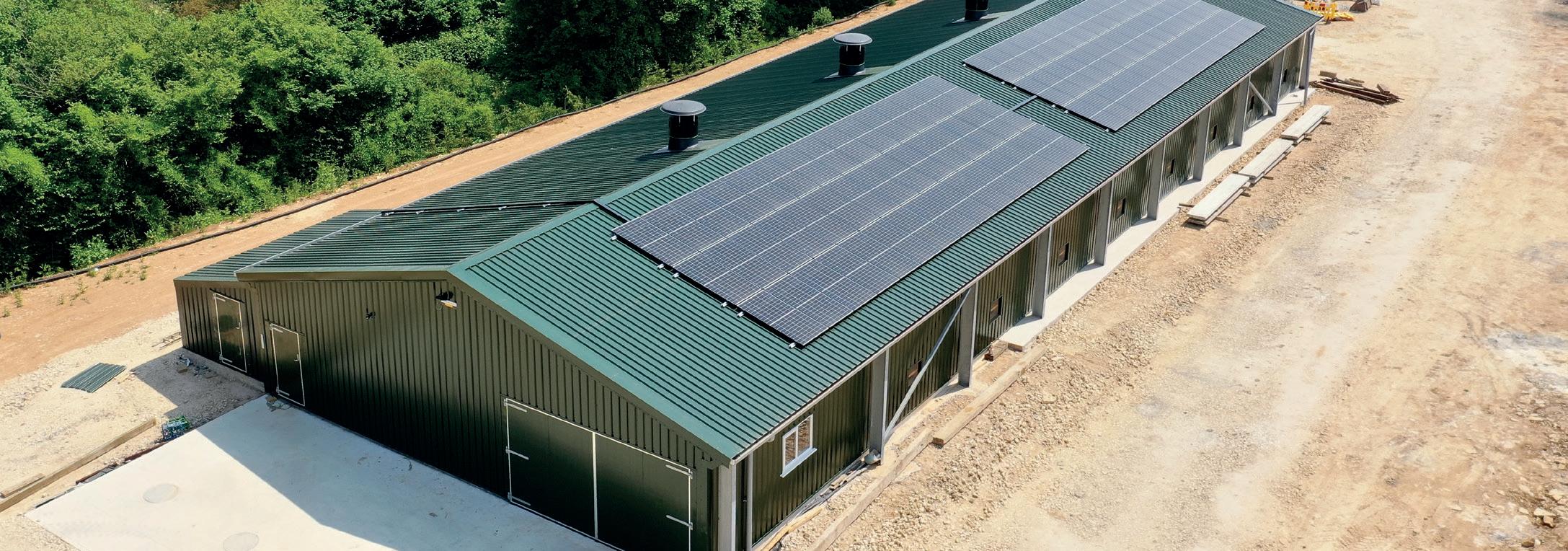
✔ Qualified experienced CAD technicians to offer bespoke designs
✔ High quality materials used in design
✔ UKCA accredited steels and sustainable timbers
✔ Refurbishment available for existing buildings WE
✔ Team of fitters to deliver and construct nationwide
AUGUST 2023 33
YOUNGSTOCK REARING
DESIGN AND CONSTRUCT A RANGE OF TIMBER OR STEEL FRAMED BUILDINGS FOR THE AGRICULTURAL SECTOR, FROM LIVESTOCK HOUSING TO GRAIN STORES, FROM MACHINERY WORKSHOPS TO FIELD SHELTERS.
CALF REARING UNITS AND AGRICULTURAL BUILDINGS Call to discuss your agricultural buildings with our team or visit our trade stand at UK Dairy Day 01568 708819 www.powellbuildings.com powel-ad-184x124.indd 1 28/06/2023 16:04
Powell
& Co Construction Ltd is one of the UK’s leading nationwide manufacturers of poultry housing, agricultural buildings, commercial and industrial buildings.
Recent UK studies show bovine coronavirus as being the most prevalent virus found in routine disease screening and nasal swab samples taken during a BRD outbreak.
YOUNGSTOCK REARING
frequently diagnosed virus of those included in the routine testing [See table 1, p30].
“While the properties of bovine coronavirus infection, such as extended shedding, may increase the potential for its detection above other viruses, our results confirm that it is an important pathogen in the UK – consistent with other recent work in this country, in Europe and worldwide.
“The pathogen was found most frequently during winter [December to February], but was also present yearround when compared to the other viruses.
“There did appear to be some regional bias too, with bovine coroavirus being found

most frequently in Northern Ireland, the West Midlands and south west UK.”
Prevalence
Evidence of the UK-wide prevalence of bovine coronavirus is supported by a recent study in Scotland – carried out as an adjunct to the 16-country European research project – as well as routine BRD screening conducted by MSD Animal Health.
Working alongside the Clyde Veterinary Group, Katie Denholm – an academic clinician based at Glasgow University Veterinary School –enrolled 10 commercial dairy farms in central Scotland.
Ms Denholm says: “We took nasal swabs, faecal samples and
Samples were taken from young preweaning calves, older postweaning calves and adult cattle
KATIE DENHOLM
Bovine coronavirus in summary
WHAT IS BOVINE CORONAVIRUS?
JBOVINE coronavirus is a positive sense RNA virus in a lipid envelope. Initial viral replication takes place in either the respiratory or enteric system.
HOW PREVALENT IS BOVINE CORONAVIRUS IN THE UK?
JRECENT UK studies show bovine coronavirus being the most prevalent virus found in routine disease screening and nasal swab samples taken during a bovine respiratory disease outbreak.

bloods for serology from cattle on 10 different dairy units, all of which had a history of BRD. The samples were taken from young pre-weaning calves, older post-weaning calves and adult cattle. We also took bulk milk samples to test for bovine coronavirus antibodies.”
The serology results confirmed that almost all the cattle tested had been exposed to bovine coronavirus at some point in their lives because antibodies to the virus were present in their blood, but a few of the nasal swab and faecal samples also showed up positive on some of the farms.
“The presence of antibodies confirms widespread exposure
The pathogen was found most frequently during winter, but was also present year-round when compared to the other viruses
DR PAUL BURR
to bovine coronavirus. And we know that it is aerosol-based and very infectious via nose-to-nose calf contact. The virus is also easily spread on human hands, boots and feeding equipment.”
Further evidence of bovine coronavirus exposure in cattle in the UK can be found in 2021-2022 BRD screening surveillance data.
Serology
Calf serology on 59 UK farms known to have had a history of BRD issues reported 91.5% of samples being positive for bovine coronavirus (see table 2, p30).
HOW DO CALVES BECOME INFECTED?
JINFECTION takes place via the faecal:oral route or by aerosol inhalation. Regardless of the infection route the virus is shed in both faecal and nasal secretions.
HOW ARE CALVES AFFECTED?
JBOVINE coronavirus is a known cause of winter dysentery in cattle. Research has also shown that bovine coronavirus infection disturbs the protective mucus lining of the thoracic tract.
It may therefore be that bovine coronavirus ‘opens the
door’ for the other viral and bacterial pathogens to establish themselves and cause disease.
HOW IS IT CURRENTLY CONTROLLED?
JA HISTORIC lack of specific tests and an available respiratory disease vaccine means the focus has always been on better colostrum feeding protocols, hygiene and biosecurity. Bovine coronavirus is certainly persistent in the environment and can be easily spread via fomites, such as feeding equipment, boots and tyres.
While the pathogenicity of bovine coronavirus within the BRD complex remains an unknown quantity, its ubiquitous presence in the UK cattle population – and the recent human experience of coronavirus – suggests the need for some re-evaluation.
Dr Burr says: “Just as coronavirus is a pathogen associated with the common cold and Covid-19, bovine coronavirus is a proven pathogen which directly impacts the bovine respiratory tract.
“In addition, our data confirms a high prevalence alongside other, more commonly recognised pathogens in cases of BRD, so it is well worth veterinary practitioners taking it more seriously – particularly when you consider its proven and long-lasting ability to ‘open the door’ for more severe bacterial infection.”
AUGUST 2023 34

“LifeStart accredited milk replacers are formulated to give you confidence for feeding at higher levels.”


Georgina Thomas Young Animal Feed Ruminant Manager Trouw Nutrition GB


For more details about LifeStart visit
trouwnutrition.co.uk/lifestart
Since he began tightening all aspects of calf rearing, Phil omas has seen a number of bene ts, including heifers calving sooner with improved yields and fertility, and also being be er able to compete with the cows.
Phil farms in partnership with his parents, Bill and Jenny, on the 105-hectare (259 acre) Micklewood Farm near Shrewsbury. ey run a herd of 250 all year-round calving Holsteins, which are averaging 11,000 litres at 4.2% fat and 3.4% protein. Replacement rate is running at 24%, and heifers previously calved in at 27-28 months old. Heifers are grazed on land away from the home farm.
By his own admission, calf rearing had not received as much a ention as it should in the past.
“We did not have a system and protocols in place,” Phil says. “While we fed colostrum, we did not ensure calves always got four litres. ere was no consistency over mixing of milk replacers or intakes, and we were working on about 100g per litre. Dry feed intakes were not monitored, and we did not weigh calves. Weaning was at about 11 weeks
A greater focus on calf rearing is paying dividends as heifers enter one Shropshire herd. Dairy Farmer reports.
Investing to improve heifer performance
old, but growth rates were variable.
“Heifers would come back to the home farm to be served, and we were targeting 380kg at service and calving heifers down at about two years, three months old which we thought was acceptable.”
A er a meeting run by his milk buyer, which highlighted the bene ts of improving calf management, Phil decided he needed to ‘sharpen’ the farm’s protocols and began working with Jess Yeomans from Wynnstay to improve all aspects of calf rearing.
Phil says: “We are much more controlled now, and we are looking to optimise pre-weaning performance.”
Benefits
Jess says research has shown that every extra 100g of average daily gain in the rst two months of life results in approximately 225kg of extra milk in the rst lactation. is is in addition to potential bene ts in fertility and survivability.
“But Trouw Nutrition research showed that 65% of dairy farmers
still feed no more than six litres of milk replacer per calf per day,” she adds. “ e reason for this is the concern that the abomasum can be overloaded, resulting in milk replacer over owing into the rumen. “However, the abomasum is able to signi cantly increase capacity, allowing greater milk intakes. reeweek-old calves will voluntarily consume about ve litres of warm milk in one meal without milk entering the rumen or any indications of abdominal pain or discomfort. So


AUGUST 2023 36 YOUNGSTOCK
REARING
Phil Thomas decided he needed to sharpen farm protocols for calf management after attending a meeting run by his milk buyer.

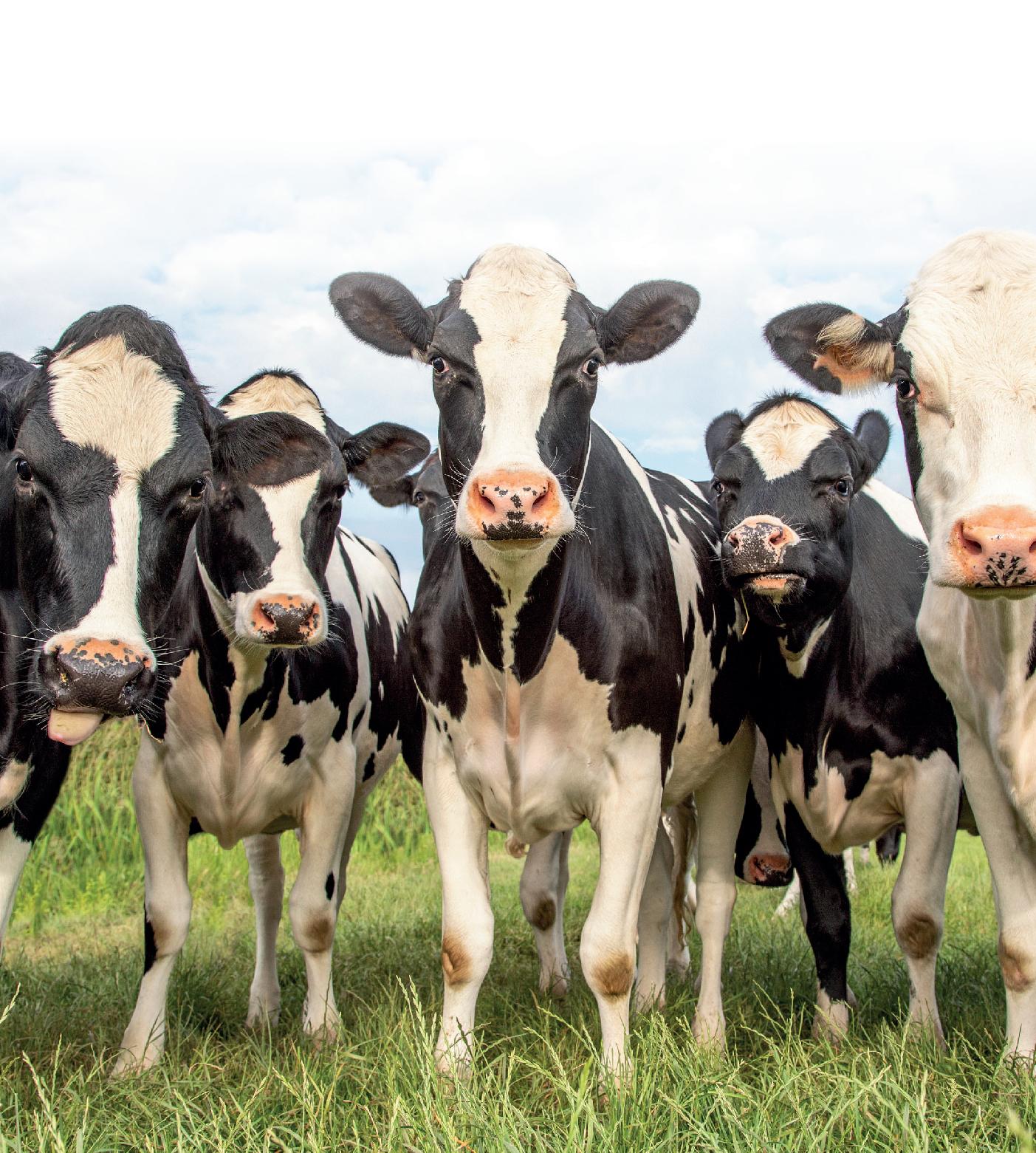






37 AUGUST 2023 HAVE YOU HERD? THE DAIRY SHOW RETURNS ON WEDNESDAY 4 OCTOBER 2023 VISIT WWW.BATHANDWEST.COM/TICKETS TO BOOK MEDIA PARTNER HEADLINE SPONSOR C M Y CM MY CY CMY K Tel: 028 6774 8377 (NI/UK) / 048 6774 8377 (IRE) www.teemoreengineering.com › Gates › Cubicles › Mats & Mattresses › Drinkers › Feeders › Crushes & Handling › Calf Equipment and more ... TEEMORE ENGINEERING INNOVATIVE LEADER IN LIVESTOCK HOUSING AND HANDLING EQUIPMENT
Despite being younger, the heifers have settled into the herd well
PHIL THOMAS
traditional beliefs about restricting the volume fed per meal to prevent the possibility of ruminal over ow are not correct. Calves can be fed signi cantly more per meal, helping increase total daily intakes with the bene ts this brings.
“If calves will readily consume more milk, and in so doing achieve higher total dry ma er intakes, then it makes sense to make the most of this opportunity.”
She worked with Phil to implement new protocols, enhance the precision of milk replacer feeding and increase feed rates, using Wynnstay Rich Cream for optimum digestibility. All calves now receive four litres of colostrum immediately a er birth before moving onto milk replacer.
High on the list of priorities was reducing variability of the replacer fed with accurate weighing of the powder and ensuring it was fed at the same temperature.
Phil says: “Initially, we fed three litres twice a day mixed at 150g/litre, but increased this to four litres per feed. Dry feed is always available, but we are not looking for signi cant intakes initially; intakes increase as we start the weaning process,
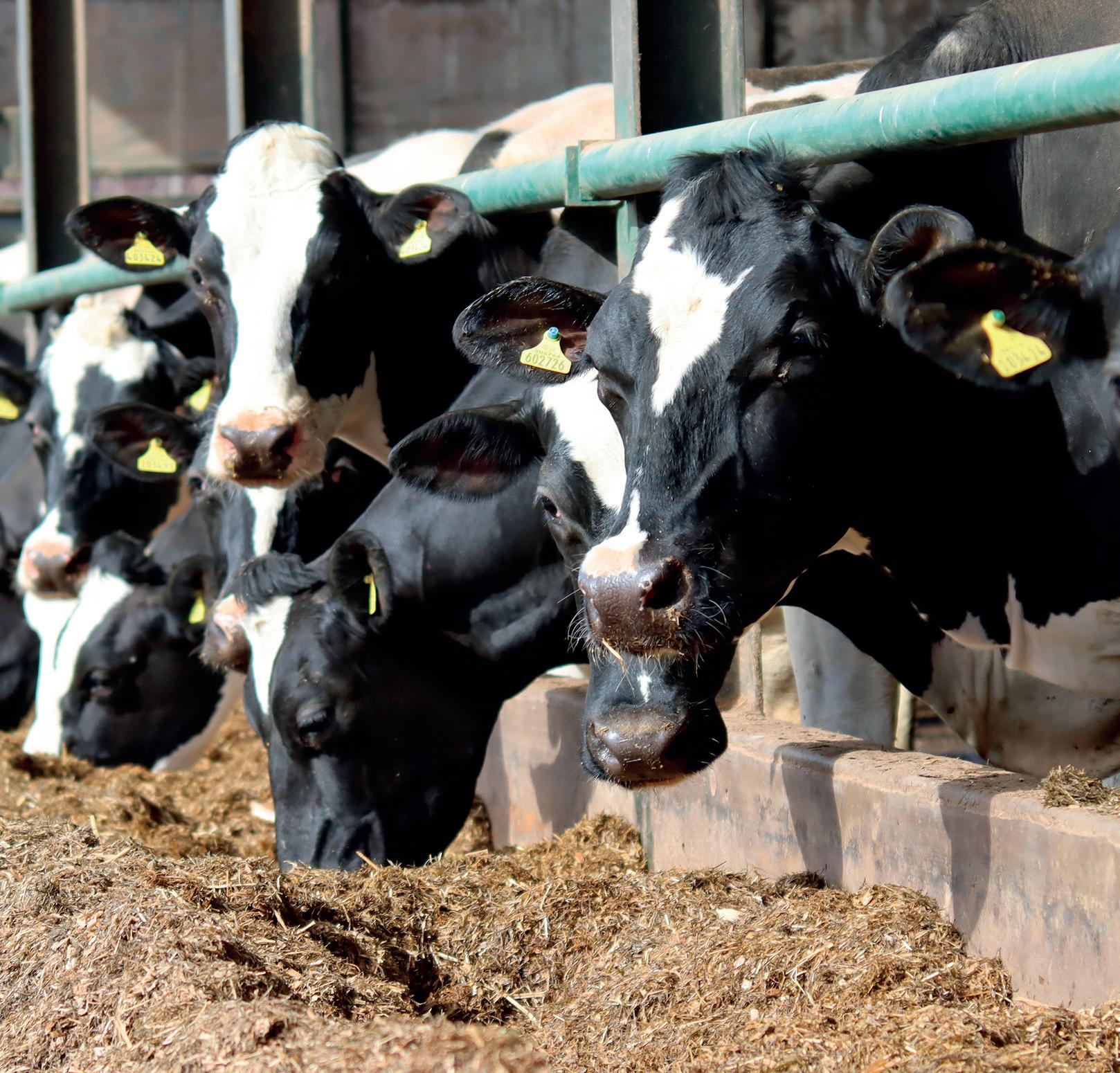

and we are targeting 2kg/head/day at weaning.”
Weaning
Weaning begins at 42 days old, when milk replacer is reduced to three litres twice a day and the total weaning process takes three weeks. e target is that calves will grow at 1kg/day and be double birthweight at weaning.
As a result of be er pre-weaning
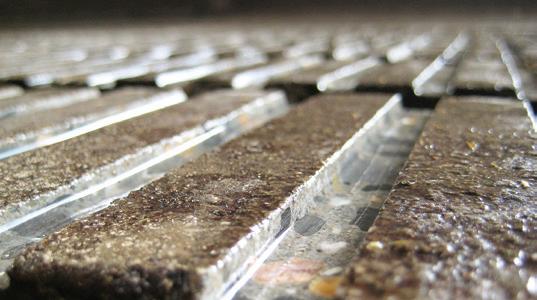


performance, heifers are now served at 350kg at 14 months old. ey get two services of sexed semen and any not holding are put to Angus.
Heifers are now calving down at 24 months, taking three months o the rearing period, reducing the total youngstock carried and cu ing overall costs of replacements.
Phil says: “Despite being younger, the heifers have se led into the herd


well, which is the most important thing. We make sure to have plenty of trough space and cubicles so that the heifers are not being bullied out.
“ ey are averaging 36 litres, while in previous years we would have been looking at 32 litres. We are looking for a at lactation curve but have plenty of heifers at 40 litres.
Fertility
“Fertility has also been good and only seven out of 80 heifers did not complete their rst lactation. ey all kept growing into the second lactation.
“ e combination of be er performance and reduced age at rst calving means we have a good return on the increased investment needed to look a er calves as well as we can. Later this year, we will be moving into a new purpose-built calf shed with more space, be er drainage and ventilation, plus more exibility over grouping so we can improve performance further.”
AUGUST 2023 38 YOUNGSTOCK REARING
SOLID
GROOVES DIAMOND CUT
DEEP GROOVES FOR
FLOORS SLAT
Phil Thomas
There is plenty of trough space and cubicles to make sure the heifers are not bullied out, says Phil Thomas.
HELPING END THE NIGHTMARE OF CALF SCOUR FOR A FAIRYTALE START

INTRODUCING FENCOVIS®
Fencovis® is a new vaccine that stimulates immunity against key scour pathogens in pregnant heifers and cows, so that calves receive added protection via the colostrum. Fencovis® prevents diarrhoea caused by bovine rotavirus and E. coli K99 while also reducing the incidence and severity of that caused by bovine coronavirus.
Fencovis® suspension for injection contains inactivated E. coli expressing F5 (K99) adhesin, strain O8:K35; inactivated bovine rotavirus, serotype G6P1, strain TM-91; inactivated bovine coronavirus, strain C-197. UK: POM-V; IE: POM. Advice should be sought from the prescriber. Further information available in the SPC or from Boehringer Ingelheim Animal Health UK Ltd, RG12 8YS, UK. UK Tel: 01344 746957, IE Tel: 01 291 3985. Email: vetenquiries@boehringer-ingelheim.com. Fencovis® is a registered trademark of Boehringer Ingelheim Vetmedica GmbH, used under licence. ©2022 Boehringer Ingelheim Animal Health UK Ltd. All rights reserved. Date of preparation: October 2022. BOV-0124-2022. Use Medicines Responsibly. ADVANCING PROTECTION AGAINST CALF SCOUR
Scours is the greatest single cause of death in young calves, but a new survey has revealed the emotional and financial toll it takes on dairy farmers and why vaccination can be key to managing that disease risk. Debbie James reports.
Scours has serious on-farm implications
Scours is a health and welfare challenge for many UK dairy farms, but it also has serious implications for a farm business and for its people.
A survey, commissioned by Virbac UK and involving 324 dairy farmers across the UK, has shown the pressure it puts on farmers and their team.
A total of 61% admitted to added anxiety from having calves sick with scours, while for others it was also the pressure on time it created – 77% said the time spent nursing sick animals caused difficulties for them.
For more than half (56%), the financial cost of mortalities, labour and treatments was a major worry.
Scours is caused by infection from a number of pathogens, but of the farmers surveyed, cryptosporidia is the principal cause.
This has been identified as a
pathogen on 57% of farms, while rotavirus is the second most common virus, with tests revealing its presence on 40% of farms.
Other pathogens detected are e.coli, salmonella and coronavirus.
But more than half of the respondents admitted to not actively testing scour in their herds and this could be a mistake, says vet Kate Ingram, ruminant technical adviser at Virbac UK.
She says: “Testing samples from scouring calves and understanding which pathogens are involved in a scour outbreak can help decide the best approach to treating sick calves, but also, importantly, helps to guide the approach to prevention of future outbreaks.”
The farmers who responded to the survey ranged in size; the overwhelming majority (272) milk fewer than 300 cows, while for 37 respondents, their herds range in size from 300-599 cows. There were larger herds too; 11 milk 600-899 cows and four milk 900-1,200.

On those farms, about 13% of calves on each had been affected by scour in the last 12 months.
For 90%, no more than five calves had died as a result of scours – nearly half had no losses at all.
The survey revealed that different farms have different approaches to treating sick calves.
The use of electrolytes is the most common form of treatment, with 83% of farmers using this method to tackle scours.
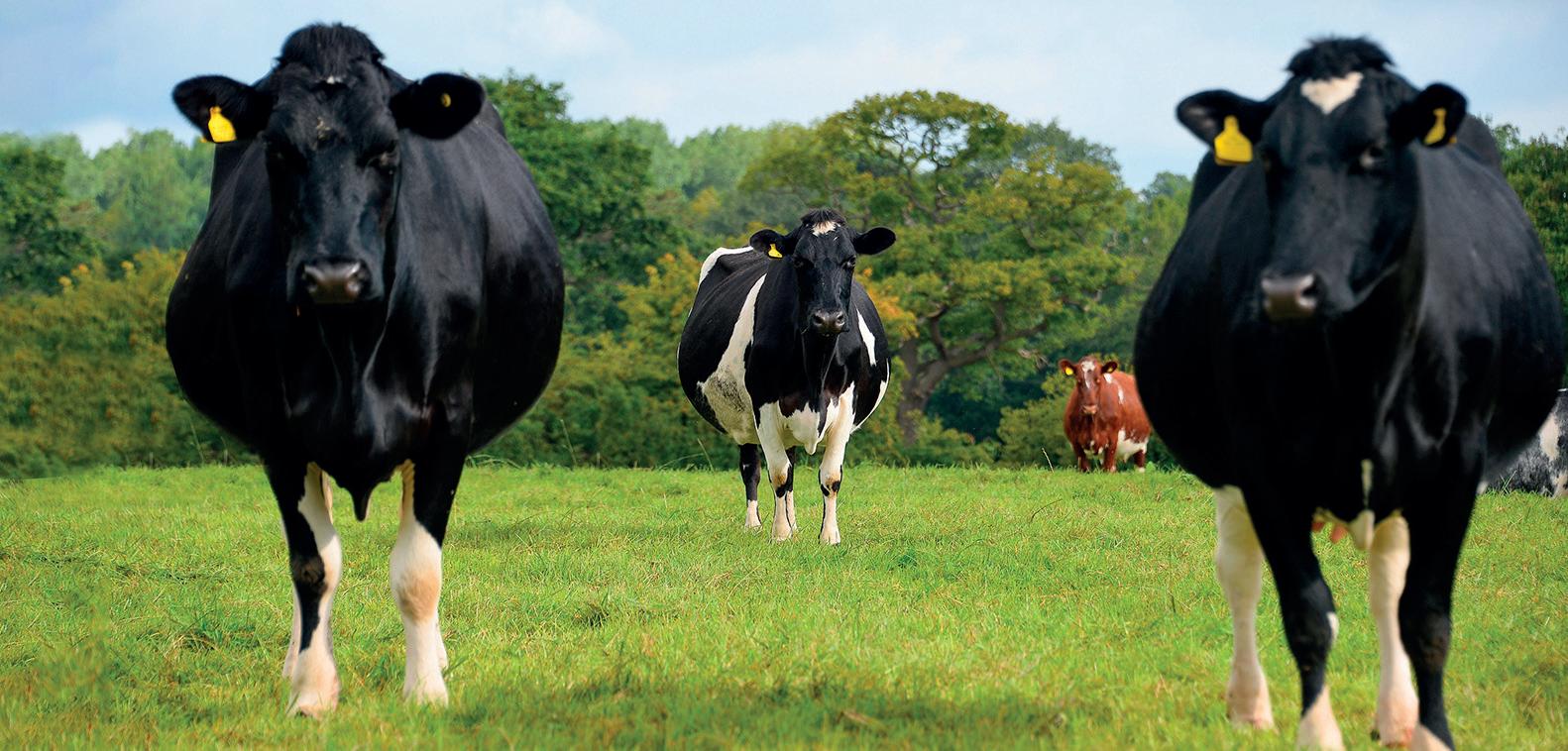
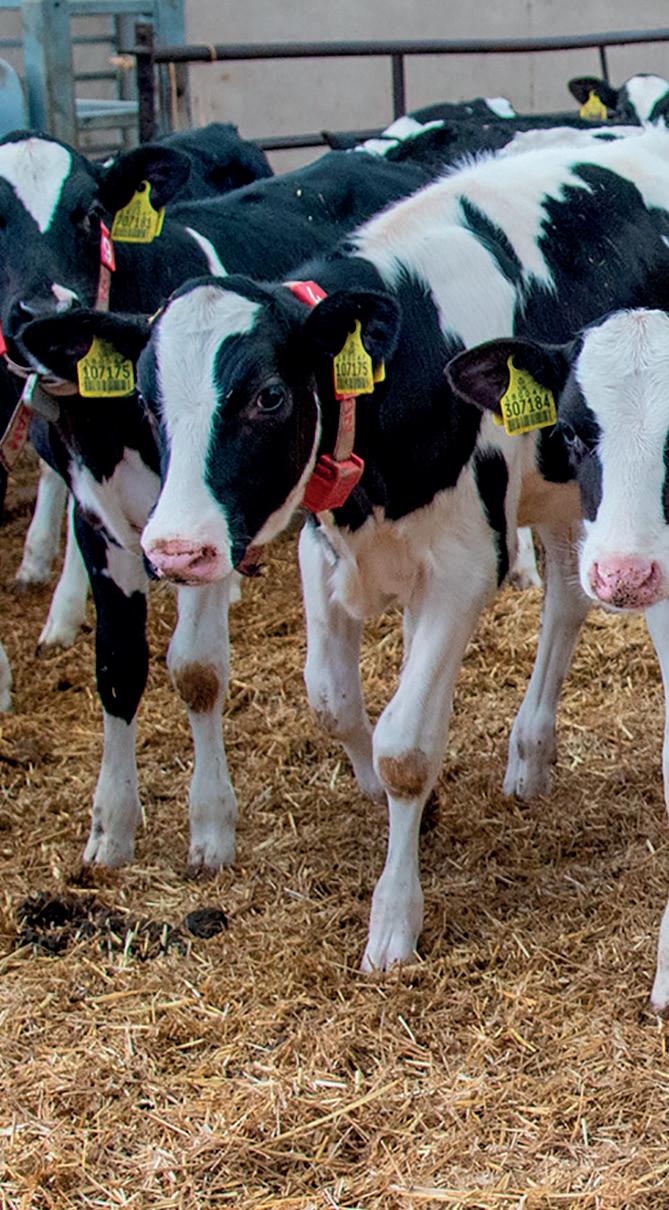
But worryingly, given increasing pressure from milk buyers and governments on farmers to reduce antibiotic use, a significant finding was that 59% of farmers resort to antibiotics to combat scours.
Ms Ingram says vaccination can help to eliminate the need to use antibiotics.
By vaccinating dams during the last trimester of pregnancy, the antibodies in their colostrum against some of the infectious causes of scour will increase.
Colostrum
Ensuring the newborn receives a sufficient quantity of good quality colostrum from a vaccinated dam quickly enough after birth will help protect their newborn calf against some of the most common infectious causes of scours.
Ms Ingram recommends vaccination with Bovigen ® Scour, a single-shot broad spectrum vaccine which protects against three major causes of scour: rotavirus; coronavirus; e.coli. Cryptosporidium is a protozoa and therefore not covered by vaccines.
Ms Ingram says: “Irrespective of previous vaccination history, only a single injection of the vaccine given 12 to three weeks prior to calving is required to
AUGUST 2023 40
SPONSORED CONTENT
Kate Ingram
Vaccinating pregnant cows and heifers annually to prevent scours in calves was included in the National Office for Animal Health’s new Livestock Vaccination Guideline, published in 2022.

boost cow serum and therefore colostrum antibody levels against rotavirus, coronavirus and e. coli.”
Vaccinating against scours should be considered in every calf disease prevention plan, Ms Ingram advises.
“Considering the potential investment made to ensure a cow is in-calf –feed intake, supplementation, artificial insemination and scanning – to lose a calf to scours is financially and emotionally draining.
“Vaccination can help to reduce the likelihood of these costs occurring.”
Importantly, it may also help to reduce antibiotic use on some dairy units, she adds.
However, vaccination will only be effective when combined with good colostrum management to ensure effective transfer of that immunity to the calf.
Calves should receive 10-12% of their bodyweight of clean and good quality (with a BRIX score of more than 22%) colostrum, ideally within two hours of birth to maximise the levels of antibodies absorbed.
Nutrition also plays a role in ensuring calves have a strong immune system and are less susceptible to disease.
Deficiencies, even if only sub-clinic-
61%
to added anxiety from having calves sick with scours
77% found that added time pressures from nursing sick calves caused difficulties
56% labour and treatment costs are worrying 57% discovered cryptosporia on their farm

al, can increase the risk of disease, particularly during high stress periods, such as weaning or mixing of groups.
Treating calves for scours can be demanding, taking up time in a dairy farmer’s working day in an industry where labour is already a significant challenge.
Most farmers surveyed said they spend up to three days treating scours among their calves, but for 6% it is three to five days and for 3% it is seven to 10 days.
There is a wide range in the time taken for treating and caring for calves on these farms.
For 41% it is 15 minutes per calf per day, for 38% it accounts for 30 minutes and for 15% it takes an hour, but for 5%, that care amounts to three hours.
The impact of scours varies from
farm to farm. For farmers with larger farm sizes, their concern centres on how the disease reduces calf growth rates, while for smaller operators it is its impact on their time and labour costs which is their greatest worry.
Other concerns range from vet and medicines costs and the cost of replacing youngstock lost to scours, to lost future production.
Good stockmanship, biosecurity, ventilation and testing are all key to healthy calves, but vaccination is now playing an increasingly important role on dairy farms.
New guidance on vaccination to improve cattle health in the UK prioritises scours as a disease which livestock should be protected against by default.
Vaccinating pregnant cows and heif-

ers annually to prevent scours in calves was included in the National Office for Animal Health’s new Livestock Vaccination Guideline, published in 2022.
There is good reason for including it as a category one vaccine, those which are considered highly important in herds, as scours is one of the most common causes of disease and loss of growth in calves.
The guidelines on vaccination have changed as the industry moves forward towards preventative health and reducing reliance on antibiotics.
Of the farmers involved in the survey, most said they would start vaccinating if it was on the advice of their vet or if there was evidence of a cost benefit.

AUGUST 2023 41
For more information, go to farmersguardian.com/virbac-dairy-bitesize Calf scours and your farm or scan the QR code Bovigen Scour emulsion for injection for cattle contains inactivated antigens: Bovine rotavirus strain TM-91, serotype G6P1, Bovine coronavirus strain C-19, Escherichia coli strain EC/17 (F5 / K99 antigens). UK: POM-VPS IE: POM Advice on the use of this medicine, or alternatives, must be sought from your Veterinary Surgeon. Further information available from the package leafl et, SPC or from Virbac Ltd, Woolpit Business Park, Windmill Avenue, Woolpit, Bury St Edmunds, Suff olk, IP30 9UP, UK. Tel: +44 (0) 1359 243243 UK: Email enquiries@virbac.co.uk https://uk.virbac.com IE: Email enquiries@virbac.ie www.virbac.ie Use medicines responsibly. www.noah.co.uk/responsible www.apha.ie
total of
having calves sick with scours.
SPONSORED CONTENT
A
61% of respondents admitted to added anxiety from
admitted
to combat scours
40% discovered Rotavirus 59% of farmers resorted to the use of antibiotics
A change of rearing protocols for calf rearer Nigel Fawdry has led to significant gains in performance, health and costs. Wendy Short reports.
Performance improvements due to regime change
Nigel Fawdry has made some signi cant changes to his ‘all in, all out’ calf rearing system, including a change of milk powder type, improved ventilation and a new vaccination policy.
e results have shaved one week o the weaning age, with improved calf health and reduced input costs.
e average age to full weaning at Mr Fawdry’s Village Farm is nine-and-a-half weeks, with calves o ered a 20% protein and 24% fat condensed skimmed milk-based powder via an automatic feeder. ey also receive an 18% protein pellet and access to straw.
e business buys-in 320 Wagyu and Aberdeen-Angus cross calves each year at three weeks old, to be reared in batches of 80 and sold as strong stores.
e current regime at the unit, near Chipping Norton, Oxfordshire, is very di erent from the previous system, where milk was delivered to calves manually via a six-teat trough feeder.
Mr Fawdry says: “Calves were being fed three litres of a standard milk powder twice a day on the manual system, plus concentrate pellets up to 2kg/head/day and ad-lib wheat straw. Weaning started at eight weeks, but the process would go on for longer.
“I had assumed it would be simple to set up a new feeding regime when the auto-feeder was introduced, but it has required a lot of tweaking to get it right.
“In the early stages it was calibrated to feed li le and o en, but it proved di cult to wean the calves o the milk. e frequent access meant they were reluctant to eat su cient quantities of the pellets.”
Options
A er experimenting with a number of options, Mr Fawdry instigated the present feeding policy in March last year and it is working well. Calves arrive at 21 days and are fed Bonanza’s Milky Way
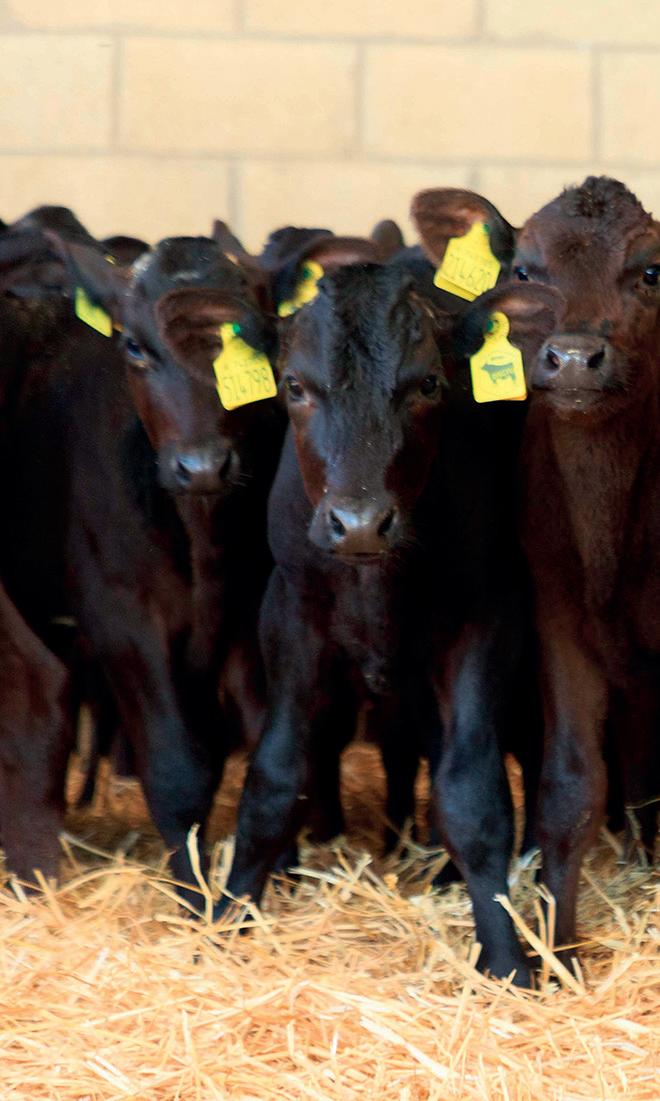

condensed calf milk replacer (24% fat, 20% protein), receiving a six litres split over three feeds a day.
On day 42, the ration is reduced to ve litres per day, with twice-aday feeding for one week, followed by a further reduction to three litres a day. e milk replacer concentration is kept consistent throughout the rearing period at 133g/litre.



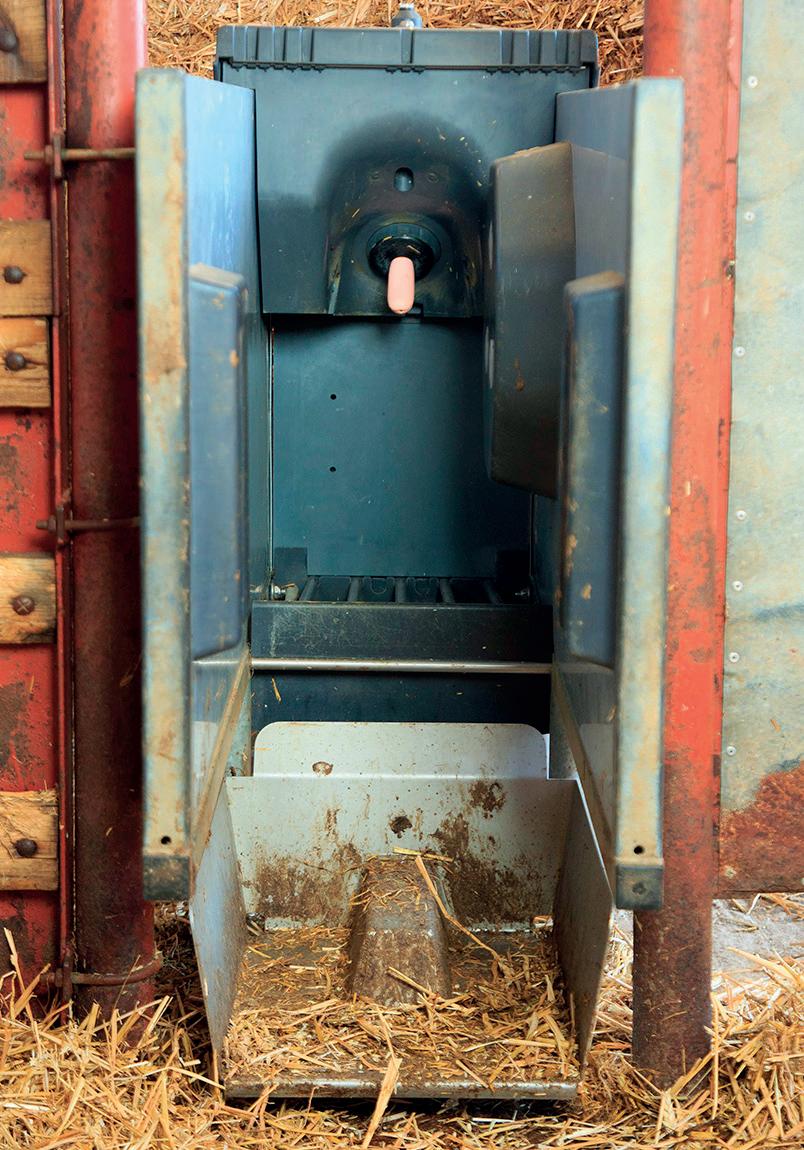
Mr Fawdry says: “It takes about 14 days for the calves to be fully weaned. If a calf is not coping and its pellet intakes are low, it will continue to receive milk until it is eating the target consumption rate of 1.5-2kg/head/day.
“ ere is no hard and fast timescale, because this stage is so important for maximising future health and growth rates.
“I believe the former management system was causing stress and that contributed to problems with low growth rates and pneumonia.
“One of the key elements has been the switch to the condensed skimmed milk powder, which is producing be er results than the standard skimmed product and the whey I have tried in the past.
“ e condensed powder is more expensive, but cu ing the weaning age has given a nancial saving. e previous feeding system cost £104/ head, based on 10.5-week weaning,
AUGUST 2023 42 YOUNGSTOCK REARING
Calves are offered a 20% protein and 24% fat condensed skimmed milk-based powder via an automatic feeder.
The business buys-in 320 Wagyu and Aberdeen-Angus cross calves each year.

straw-bedded calf house has been radically improved by opening up two building sides and installing a curtain, to give greater control of air movement over calves. A batch was
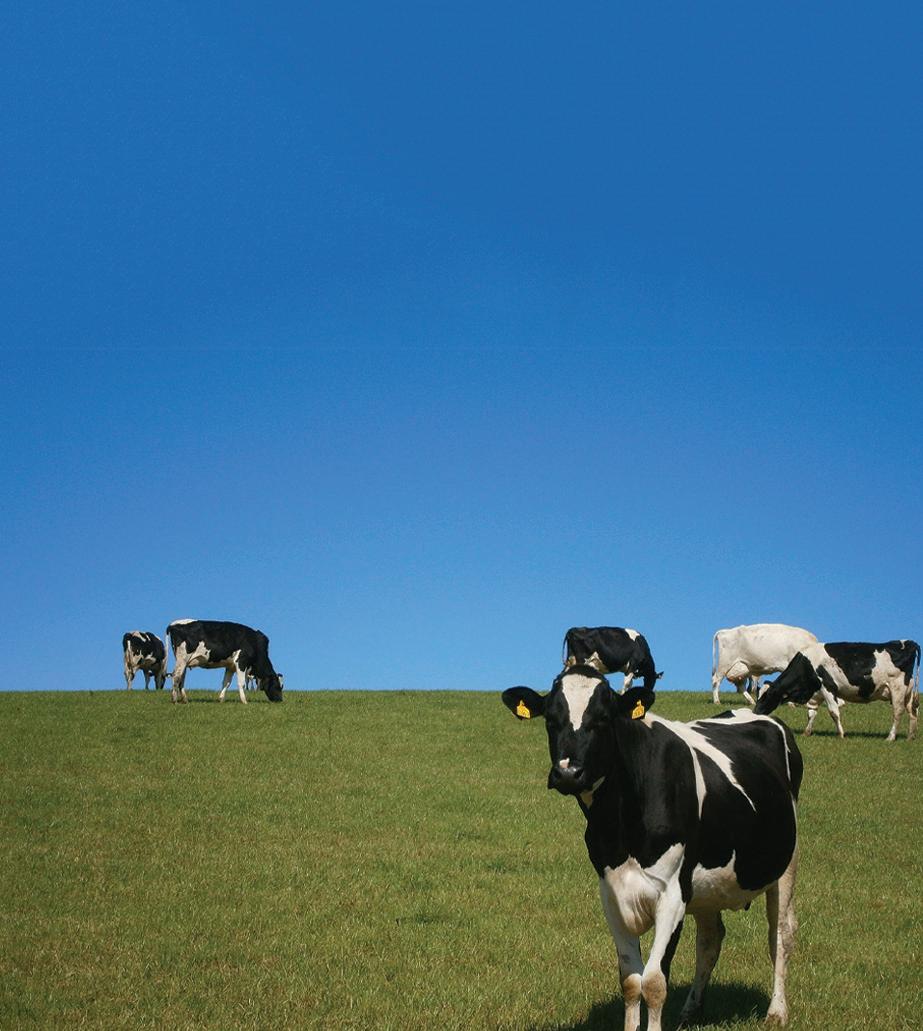







blood-tested and the results proved highly informative.
Mr Fawdry says: “It was discovered that the strain of bacteria responsible for causing the pneumonia was not being covered by the vaccine which was being used. e solution was to change the product and the incidence of pneumonia is now very rare.”
Another positive step has been to source calves from a small number of dedicated farms, rather than purchasing batches from the auction mart.
Meanwhile, the large water troughs have been replaced by small drinking bowls.
Mr Fawdry says: “Calves were ingesting dirty water and this was






AUGUST 2023 43 YOUNGSTOCK REARING YOUR DEPENDABLE PARTNER FOR SLURRY STORAGE SOLUTIONS enquiries@enviroseal.co.uk t: 01695 228626 www.enviroseal.co.uk SLURRY LAGOON FLOATING COVERS Keeps rainwater out of slurry Reduces odour from lagoons Covers comply with EA and SSAFO legislation SLURRY LAGOON LINERS Comprehensive 25 year warranty Materials meet EA and SEPA requirements Installed and tested by certified technicians Enviroseal provide a complete range of products for slurry storage BUYING LIVESTOCK? SPREAD COSTS & PAY MONTHLY 01827 300 333 www.financeforfarms.co.uk Finance for business use customers only; subject to application, credit, terms and conditions. Finance for Farms is a trading name of Shire Leasing PLC who is authorised and regulated by the Financial Conduct Authority for certain types of consumer credit lending and credit related activities that are regulated under the Consumer Credit Act 1974 and by the Financial Services and Markets Act 2000.
I am currently spending £80/head up to the point of weaning, at an average of nineand-a-half weeks.” Ventilation in the barley
while
Nigel Fawdry
YOUNGSTOCK REARING
having a negative impact on gut health.
“ e timing of de-horning is also critical and I make sure calves are eating and drinking well when it is carried out to minimise stress.” Mr Fawdry has learned to be
exible in his approach to the calf feeding regime.
He says: “ e automatic feeders have the ability to weigh calves and this has proved to be invaluable to their management. It is easy to pick out animals which are
performing well and those which require extra assistance.
“In my experience, no two batches of calves are the same and each will react di erently.
“ e improvement in calf health and growth rates has been
achieved through a number of small changes, but I think the biggest in uence was nding a feeding programme which worked.
“ e next investment is probably going to be purchasing some calf jackets for winter batches.”

Tips from a feed adviser
JFarmers should buy-in calves from one source, or limited sources, where possible, says Mollie Phipps, a feed adviser with Bonanza.
She adds that rearers should also try to confirm the source unit has a colostrum protocol in place, as ensuring calves receive adequate colostrum within the first few hours of life is vital for success.
She says: “Calves which are still on milk on arrival should be treated with additional care, as they can be more susceptible to disease due to not having a fully functioning immune system.
“They will benefit from being offered an electrolyte solution to rehydrate after the journey and to settle their digestive systems.
“If the farm already has calves on the unit, new arrivals should ideally be kept in a separate building for a minimum of three weeks to reduce the risk of disease transmission.
“If housing space is tight, a solid barrier will help to separate calves of varying ages.
“Any utensils should be thoroughly washed before being used between batches.”
Lack of milk replacer feeding consistency can be one of the main reasons why
young calves may not perform to their potential, she says.
“Inconsistency in the feeding routine is a particular issue where more than one person is feeding the calves.
“It is advisable to draw up a feeding protocol which is pinned up for everyone to follow. The use of scales and a clean measuring jug can increase the consistency throughout the rearing period.”
Miss Phipps highlights the importance of supplying clean fresh water at all times and points out that calves require four litres of water for every 1kg of concentrate consumed.
She also suggests that

concentrate feed should be introduced to young calves using a shallow feeding bowl, such as a dog bowl, to encourage concentrate intakes.
Beneficial
She says: “This practice is beneficial as calves can be reluctant to put their noses into a deep bucket in the early stage. It is also advisable to position feeding receptacles towards the outer edges of the pen, as calves are more likely to explore them out of curiosity. Care must be taken to ensure the concentrate feed is kept fresh and is presented in a clean feeder.”
AUGUST 2023 44
Nigel Fawdry has learned to be flexible in his approach to the calf feeding regime.
IMPROVING EFFICIENCY AND OPTIMISING MILK FAT PRODUCTION FOR ECONOMIC REWARD
Feeding cows at grass during the summer months provides a welcome opportunity to reduce feed costs, but does bring with it challenges that must be overcome to maintain and improve milk production and butterfat constituents.
While there are many factors underpinning milk fat production, including breed, genetics and milk yield, its production is most sensitive to dietary changes. In particular, pasture-based diets often lead to a drop in butterfat levels, in part caused by the lack of structural fibre in the rations.
“Nutritional strategies can be adopted to help minimise or prevent a reduction in milk fat production, by promoting optimum rumen conditions,” explains Anna Dinsdale, AB Vista ruminant technical manager.
Optimising milk fat
The fats required for milk fat are produced by a process called biohydrogenation – this happens in the rumen and takes the polyunsaturated fatty acids (PUFA) from the diet and saturates them.
“Prolonged periods when ruminal pH falls below the critical threshold of pH 5.5, for example as a result of high sugar percentages and low physically e ective neutral detergent fibre (peNDF) associated with grazing, are directly correlated to milk fat depression (MFD),” she explains.
This leads to changes in the way that the rumen processes fatty acids and it can lead to build up of undesirable fatty acids, including conjugated linoleic acid (CLA) trans-10, cis12 CLA (trans-10).

“As this trans-10 fatty acid can inhibit the lipogenic enzymes in the udder that
Adding Acid Buf slow-release rumen conditioner can add:

OPTIMISES AND SUSTAINS RUMEN PH

IMPROVES PRODUCTIVE OUTPUT



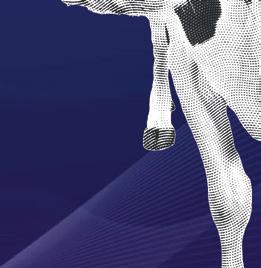
produce butterfat, the accumulation of the trans-10 fatty acids negatively impacts milk fat production,” says Ms Dinsdale.
“The clearing of trans-10 fatty acids requires manipulating the biohydrogenation pathways that naturally occur in the rumen, therefore, we can look to support the correct biohydrogenation pathways through the diet,” she explains.
Nutrional strategies
There are three nutritional strategies that can be utilised to reduce the likelihood of the rumen favouring the alternative biohydrogenation pathway and producing excess trans-10 fatty acids:
> Diets formulated to ensure RUFAL (Rumen Unsaturated Fatty Acid Load) remains at an acceptable level
> Increase peNDF by bu er feeding chopped straw, silage or TMR
> Aid the maintenance of rumen pH by including Acid Buf
“Feeding Acid Buf each day, via bu er feeding to grazing cows or through the TMR, can reduce the time the rumen spends below pH 5.5. This helps to maintain and avoid associated falls in














OPTIMISES BODY CONDITION SCORE
* (Independent study University College Dublin, 2017)
milking cow productivity,” explains Ms Dinsdale.
“It reduces the time when rumen function is impaired, while improving fibre digestion and volatile fatty acid (VFA) production. VFAs are the ‘energy blocks’ for the cow and the precursors in butterfat production, therefore improving their production by stopping excessive falls in rumen pH is vital,” she adds.
Acid Buf, a natural marine derived feed additive, has been scientifically proven to increase milk fat production, with a recent review finding that dairy cows fed with Acid Buf produced milk with 0.31% higher fat concentration per litre and 0.16kg more total milk fat compared to cows fed a control diet. (Bernard et al., 2014; Cruywagen et al., 2015; Neville et al., 2019; Neville et al., 2022)
With producer margins under pressure, optimising milk fat production can make a significant contribution to maximising the value of milk contracts. Using Acid Buf can help increase feed e ciencies,” says Ms Dinsdale.

■ AB Vista is the sole distributor for GB & Ireland abvista.com











FOR MORE INFORMATION CALL 07395 248 963 Improve dairy performance, health
profitability! Condition the rumen & neutralise even more acid for longer Acid Buf Science for Feed Efficiency UP TO +7% INCREASE IN MILK SOLIDS PRODUCTION* +1.74 KG/COW/DAY ENERGY-CORRECTED MILK (ECM) YIELD*
and
ADVERTORIAL
THE BENEFITS OF ACID BUF
Early life calf vaccination helps
Early life vaccination of every calf born on-farm has helped transform the management of viral pneumonia in youngstock on a Somerset dairy and beef unit. Dairy Farmer reports.
For Mark and Heidi Wareham, who milk
180 Friesians at Sunnyside Farm on 121 hectares (400 acres) around Trudoxhill, near Frome, the 2021/22 calving season was one they would like to forget and a period when calf losses were at an all-time high.
Mr Wareham says: “Something simply had to change, but we are delighted to have turned things around – so much so that our 2022/23 calving season was one of our best.”
The herd, calves between July and February.
He says: “We aim to be an autumn/winter calving herd, but the season is now getting too protracted.”
Stock levels have also got a little too high for Mr Wareham’s liking, with more beef animals on the unit this year because of poor prices.
He says: “We are holding about 400 head of cattle on-farm currently including the milkers, about 120 followers, plus beef cattle and their calves. We have always sold on all our beef calves – at about a month of age – but have reared more ourselves this year because of the low returns recently.”
We are delighted to have turned things around –so much so that our 2022/23 calving season was one of our best MARK WAREHAM
Wareham overseeing the calf rearing.
Mr Wareham says: “As soon as a calf hits the ground, it is Heidi’s responsibility and she does a great job. My son Connor and daughter Phoebe also help.”
Mrs Wareham says the priority when a heifer calf is born is to ensure she receives an optimal intake of high-quality colostrum, which the Warehams now buy-in and reconstitute.
She says: “This is because the proprietary powdered colostrum product we purchase in sachets is guaranteed free from TB, EBL, IBR and Johne’s.

The Warehams rear all their own herd replacements, with Mrs Johne’s disease in the Friesians in the past. It was horrible and this is the only way to help us stay disease-free going forward.
“We have had problems with
Farm facts
rThe milking herd yields about 9,000 litres each year, with milk sold to Muller for supermarket retail on a liquid milk contract
rTransition cows are dried off eight to seven weeks pre-calving
rClose-up cows are fed
4-5kg of chopped straw, some maize silage and a small amount of a proprietary blend
rWhen cows are due to calve, they move from the transition housing to a nearby calving pen
“The beef calves do get natural colostrum straight from the cows though.”
Heifer calves are now housed in hutches, with access to fresh water and pellets daily, and bucket-fed milk replacer twice a day, normally at 5am and 5pm.
Milk is mixed and moved via a milk tank trolley and fed to calves via teated Wydale feeders.
Mrs Wareham says: “Every calf is treated individually and
my feeding amounts vary depending on the size of the calf.
“I think this attention to detail is important. We wean them once they are big enough, which is typically about eight weeks of age.
Winter
However, during winter 2021/22, life was more fraught in the calf accommodation.
Mr Wareham says: “In one week alone, we lost seven calves to pneumonia and cryptosporidiosis – and over the whole calving period lost many more. It was a nightmare.
AUGUST 2023 46 YOUNGSTOCK REARING
helps stamp out pneumonia
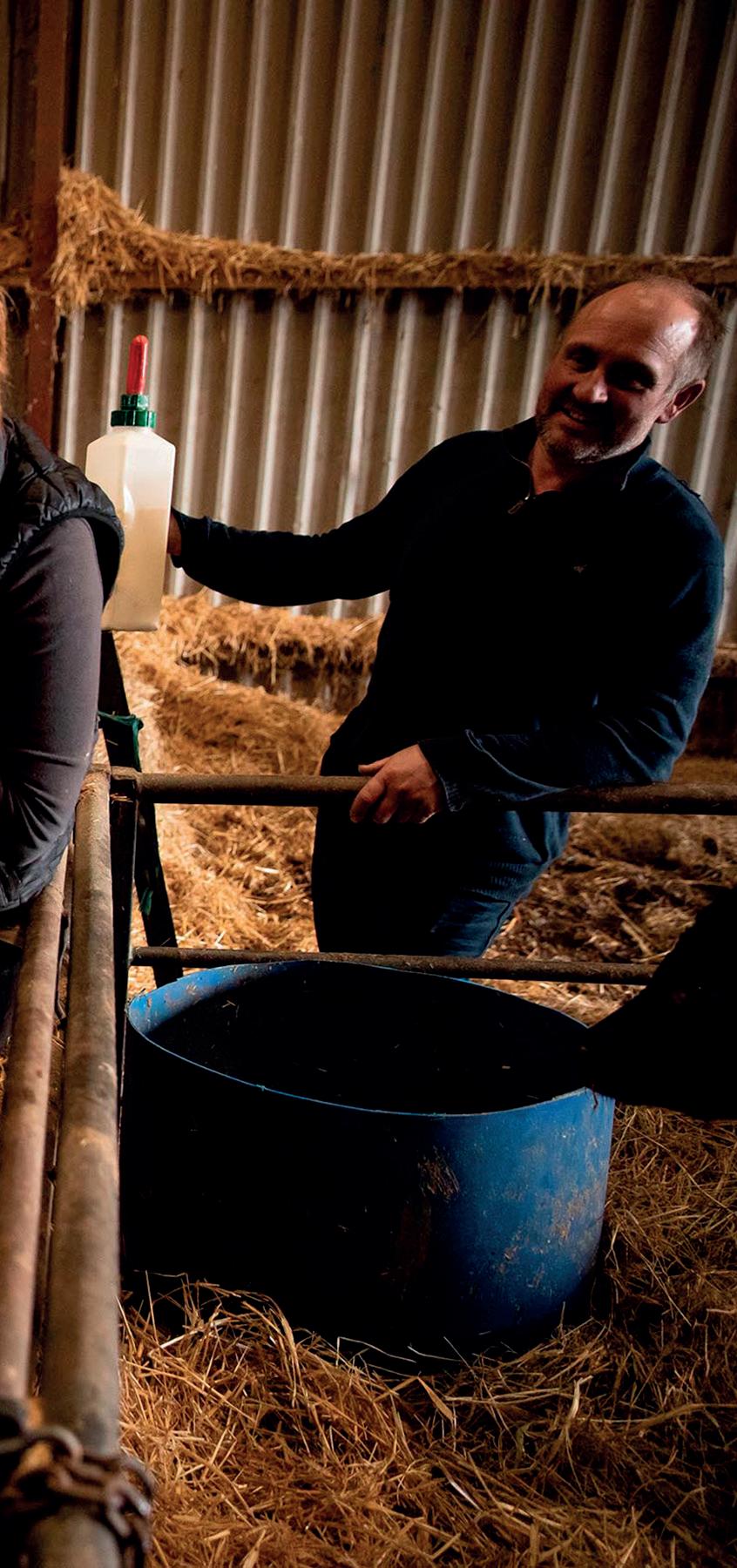

“Looking back there was a variety of reasons why we had problems, but overstocking pressure and sta ng issues were at the heart of it. e a ention to detail slipped and it became obvious we had to act.
“We are a member of the Garston Vets Proactive Farmers Group, which o ers a structured approach to preventative animal health.
“Part of the service involves a dedicated youngstock visit, where one of the vets, Emily Nail, comes out to carry out a checklist-based assessment of all the calves, weighs them and performs blood tests.”
Drawing on Ms Nail’s advisory support, the Warehams reduced stocking pressure, reverted to using more calf rearing hutches,
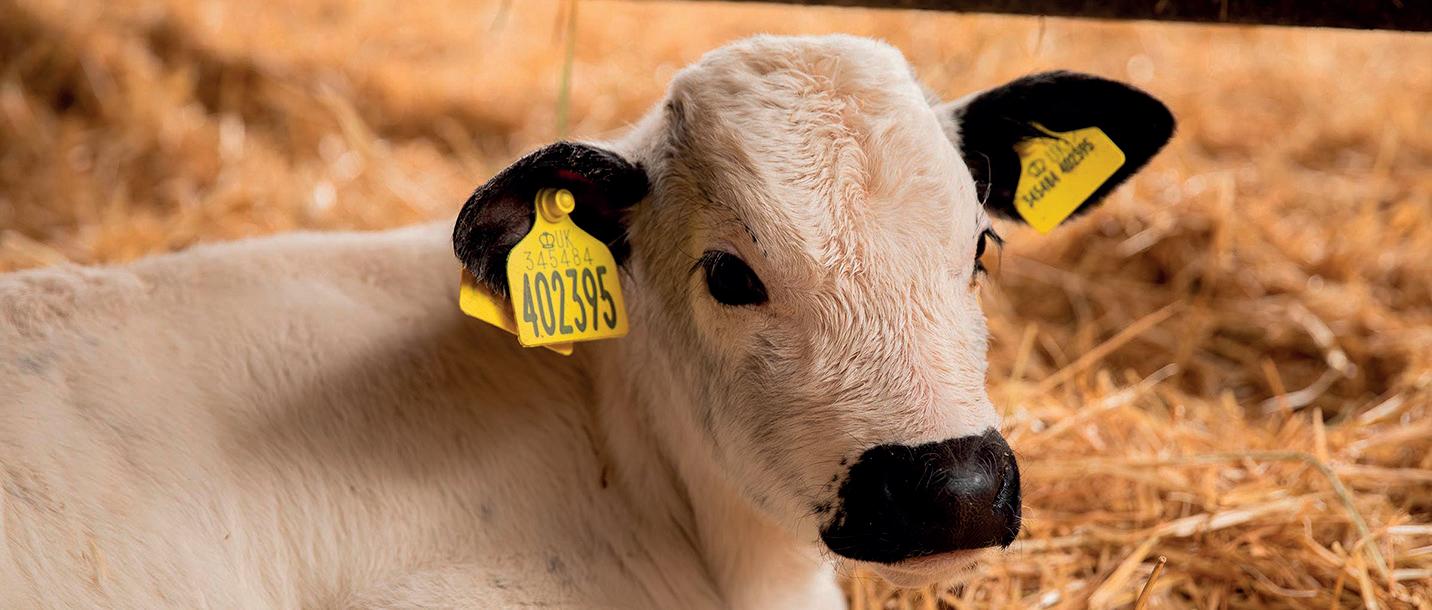












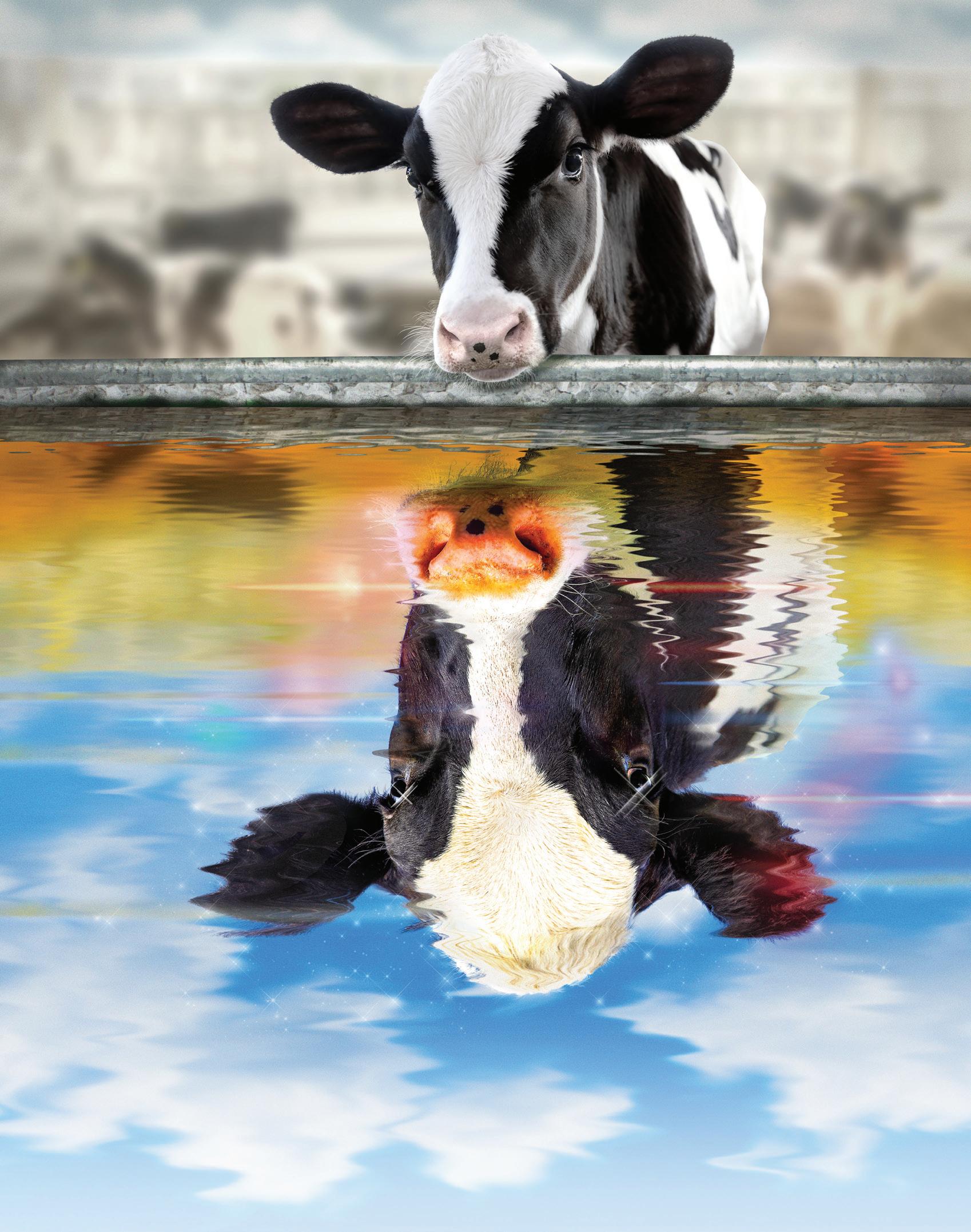



YOUNGSTOCK REARING
Volac International Limited, Volac House, Orwell, Royston, Hertfordshire, SG8 5QX, United Kingdom T +44 (0)1223 208 021 enquire@volac.com · Copyright © 2023 Volac International Ltd. All rights reserved. . HEALTHIER FUTURE. Animal Nutrition
Volac’s Lifeguard range of milk replacers all contain ImunoproTM, our unique concentrated milk protein, which enables better development of the early life immune system and stimulates the young calf’s digestive system, crucial for fast, healthy and sustainable growth. feedforgrowth.com
Mark Wareham (right) and his wife Heidi (centre) draw on advisory support from Emily Nail (left) of Garston Vets. Seen here weigh banding a calf.
The farm has about 400 head of cattle.
which are fully disinfected a er each calf, drew up a clearer rearing protocol which all sta must follow and started vaccinating every calf born on-farm against pneumonia.
Every calf also now receives halofuginone lactate during the rst week of life as an aid to preventing diarrhoea due to diagnosed Cryptosporidium parvum, the organism causing cryptosporidiosis.
Mr Wareham says: “However, the most signi cant positive calf health change, in my view, was the decision to vaccinate every calf born on-farm against viral pneumonia using Bovilis INtranasal RSP Live.
Husbandry
“This vaccine is licensed for use from the day of birth onwards, but we administer it to calves at three days of age to fit in with other husbandry protocols.
“Previously we were only vaccinating the dairy herd replacements, not beef calves, but because we were mixing groups in the rearing shed, this was counter-productive.

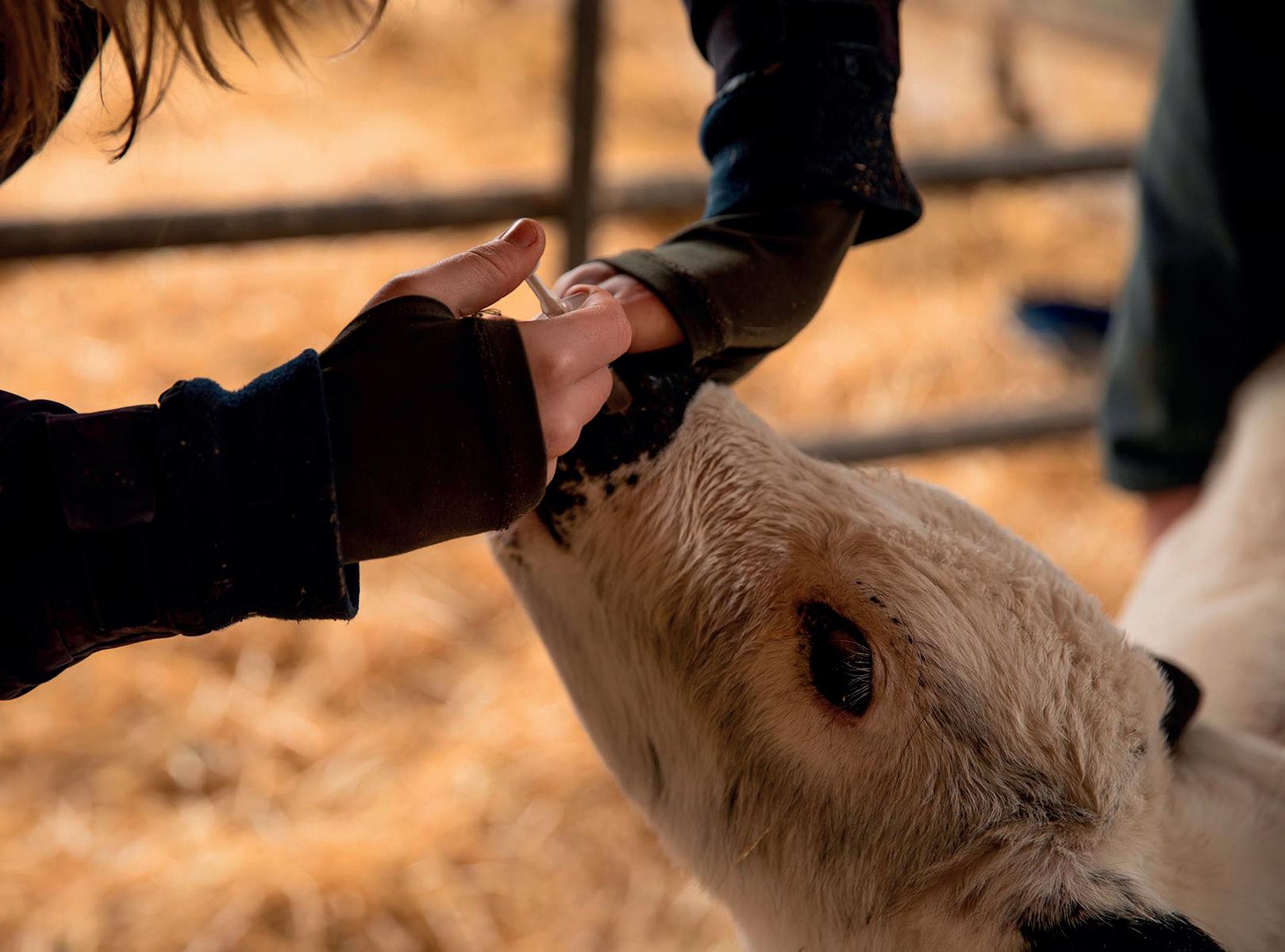
“I have seen the lung scarring caused by pneumonia in young heifers which have died at one year of age. Even though they apparently recovered from a disease bout as calves, it was clear their lungs were permanently damaged.
“Even if they had lived,
I am sure their productive performance as milkers would have been compromised.
“Vaccinating calves at a very young age against pneumonia makes perfect sense – and the sooner you do it the be er.
“It also means we are using fewer antibiotics to treat the


disease, which has got to be another good thing.
“Indeed, Emily calculates we are using 30% less antibiotics on the herd compared with 2019. In part this reduction is down to other proactive disease management changes we have implemented, such as greater use of selective dry cow therapy, but a signi cant proportion is due to the improvements in calf health.”
e Warehams are aiming for two-year-old rst calving, but admit their heifers are currently entering the milking herd closer to 26 months of age.
Bulling heifers
Mr Wareham says: “We aim to bull heifers at 15 months of age, but some will be 18 months old when rst served. But our youngstock rearing performance is steadily improving and now that we have le a truly dreadful year behind us and moved on to what we feel has been a great calving season – thanks to reliable sta and the key preventative health interventions – we are de nitely more optimistic about the future.”
48 YOUNGSTOCK REARING AUGUST 2023
When a calf is born, Heidi Wareham ensures it receives an optimal intake of high-quality colostrum.
Every calf born on the farm is now vaccinated intranasally against calf pneumonia at three days of age.


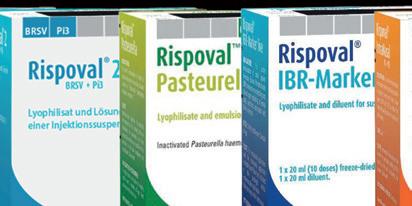


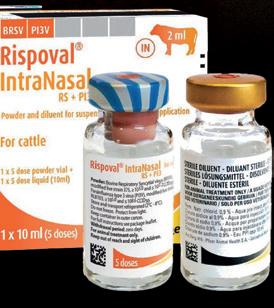






With you every breath of the way. Find out more Rispoval® RS+PI3 IntraNasal contains modified live Bovine PI3 virus, ts strain RLB103 and modified live BRSV, strain 375. POM-V • Rispoval® 2 contains attenuated BRSV strain 375 and PI3V ts strain RLB103 with an adjuvanted liquid fraction. POM-V • Rispoval® 3 contains modified live PI3 virus, strain RLB103 and BRSV strain 375 with inactivated adjuvanted BVDV type 1, strains 5960 (cytopathic) and 6309 (non-cytopathic). POM-V • Rispoval® 4 contains attenuated BRSV strain 375 and PI3V ts strain RLB103 with inactivated, adjuvanted IBR strain Cooper and BVDv Type 1 viruses cytopathic strain 5960 and non-cytopathic strain 6309 minimum. POM-V • Rispoval® IBR-Marker Inactivated contains inactivated gE negative BHV-1 strain Difivac. POM-V • Rispoval® IBR-Marker Live contains attenuated gE negative BHV-1 strain Difivac. POM-V • Rispoval® Pasteurella contains Pasteurella haemolytica biotype A, serotype 1 strain NL1009, together with an oil-in-water adjuvant. POM-V For further information please see the products’ SPC or contact Zoetis UK Ltd, First Floor, Birchwood Building, Springfield Dr, Leatherhead, KT22 7LP • www.zoetis.co.uk Customer Support: 0345 300 8034 or customersupportUK@zoetis.com • Use medicines responsibly (www.noah.co.uk/responsible). Date of preparation: July 2023. MM-27107 *The Rispoval range contains products for all life stages LIFELONG PROTECTION * The Rispoval vaccine range from Zoetis offers immunity against the major causes of respiratory disease in dairy and beef cattle. So breathe easy, knowing you are helping your herd to be healthy and productive all the way to the finish line.
There is currently no vaccine for cryptosporidiosis and treatment options are limited, so it is vital farmers get a handle on the disease. Dairy Farmer reports.
Tackling waterborne diseases in youngstock
Dairy farmers are being advised to monitor water quality as one way of tackling cryptosporidiosis in youngstock. And Midlands water company Severn Trent is providing farmers with some tools to do this.
Severn Trent’s new Test Protect Improve (TPI) initiative aims to reduce levels of zoonotic diseases in watercourses, in particular cryptosporidiosis.
Facilitated with independent consultancy ADAS, the TPI initiative o ers farmers free educational webinars, antigen testing kits and veterinary advice to control outbreaks.
Crypto is a very challenging disease to control, hence why it is a priority for Severn Trent, says Dr Alex Cooke, principal catchment scientist at Severn Trent.
She says: “Infected calves can shed up to one million eggs per gram of faeces. Only 10 eggs are needed for an infectious dose, so disease spreads rapidly.
“ e main route of transmission is ingesting contaminated faeces from other infected calves, but it can also be picked up from the
environment, contaminated drinking water or animals without symptoms which can still shed oocysts.
“To protect drinking water quality, it is much more cost-e ective and energy-e cient to reduce crypto levels within the incoming water than it is to install the UV system needed to treat contaminated water.”
As part of the TPI, farmers can join free webinars to learn about managing faecal disease in their herds. Following this, they will receive free test kits to test for crypto and e.coli in their youngstock.
Pathogens
Dr Cooke says: “We supply enough kits to test one-quarter of the farm’s stock, which work by detecting pathogens in faeces.”
If test results are positive, the farmer will receive a free consultation visit from their vet, funded by Severn Trent.
Dr Cooke says: “ is includes an o er to develop or review the farm’s animal health plan or have a disease risk assessment. All advice is tailored to the farm.”
e webinars include practical
Top tips for staying crypto-free
rBreak the pathogen cycle using biosecurity
rMake sure you muck out and steam clean sheds after calving, or more often ideally
rMuck out sheds prior to disinfecting and ensure the product used contains hydrogen peroxide – only a few disinfectants are proven to be effective against crypto
rDeep bed calves regularly on clean straw, with good floor drainage wherever possible
rIf calving outdoors, rotate the calving fields every year
rKeep hands, equipment and cows clean during milking
rRoutinely clean water troughs and chlorinate the water supply to help minimise overall bacterial burden
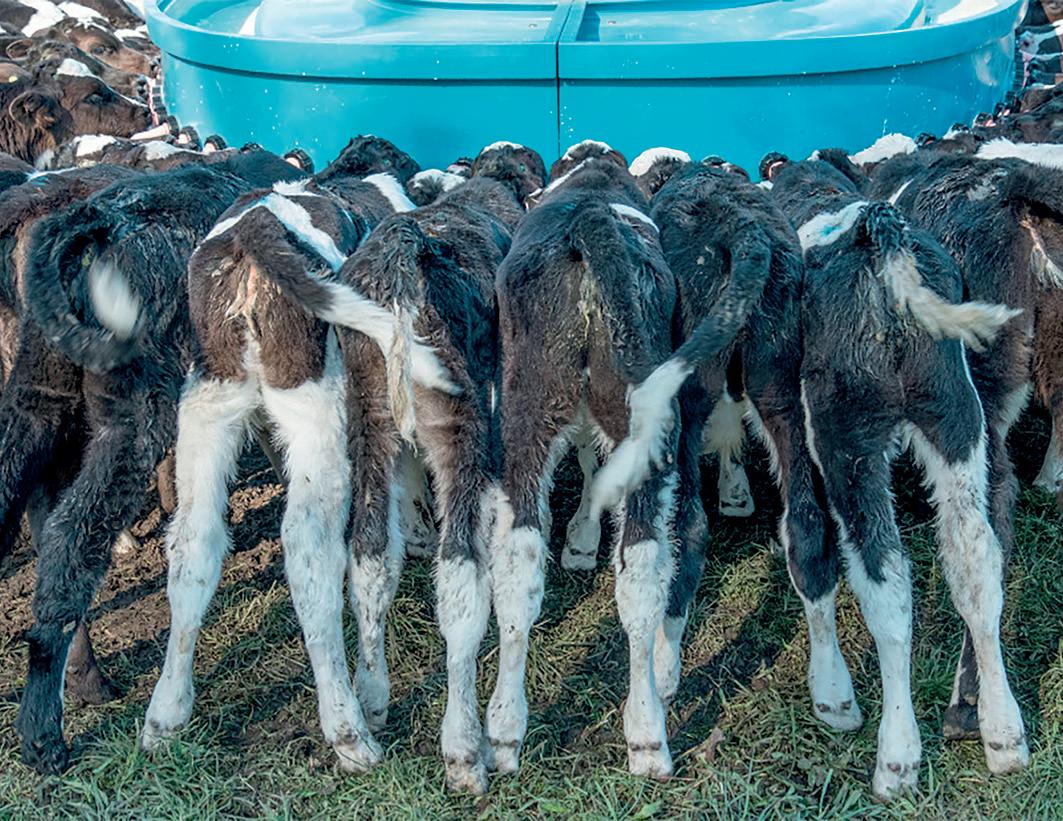

farmer advice from ADAS ruminant specialists Helen Ovens and Emma Jones. ey reiterate the need for dairy farmers to invest in on-farm measures to reduce crypto and other waterborne faecal disease levels.
To protect valuable youngstock, Ms Jones says that crypto is a priority faecal disease to identify and manage.
She says: “More than one-third of all scour cases in young calves are due to crypto. In just one outbreak, 10-30% of calves can die.” ere can be knock-on e ects in surviving animals too. Symptoms include reduced growth rates, meaning a ected calves can be up to 34kg lighter at six months old.
Ms Jones says: “Productivity losses can cost up to £130/animal. Labour, vet and any treatment costs can add up to a further £200, totalling more than £300/calf.”
Ms Ovens highlights the environmental factors which encourage crypto to thrive.
She says: “Crypto spread tends
to be associated with wet and humid environments, but it can also be transmi ed in dry conditions, due to its persistence as a pathogen.
“It can survive a for long periods in ground water, such as boreholes and aquifers, as well as surface water, like rivers and streams. If you see a sudden problem a ecting your livestock, it could be to do with where the water is sourced from.”
Pathways
Ms Ovens says that beyond drinking water, there are numerous pathways in which crypto can contaminate livestock, such as human contact, older ca le carrying the disease without symptoms, wildlife and drinking water.
“It is transmi ed via movement of the oocysts in surface water or leaching and along watercourses and drains.”
She adds that without testing, it is impossible for farmers to be aware of exactly what waterborne pathogens are present on-farm and potentially a ecting their herd.
AUGUST 2023 50 YOUNGSTOCK REARING
Crypto can be a very challenging disease to control.
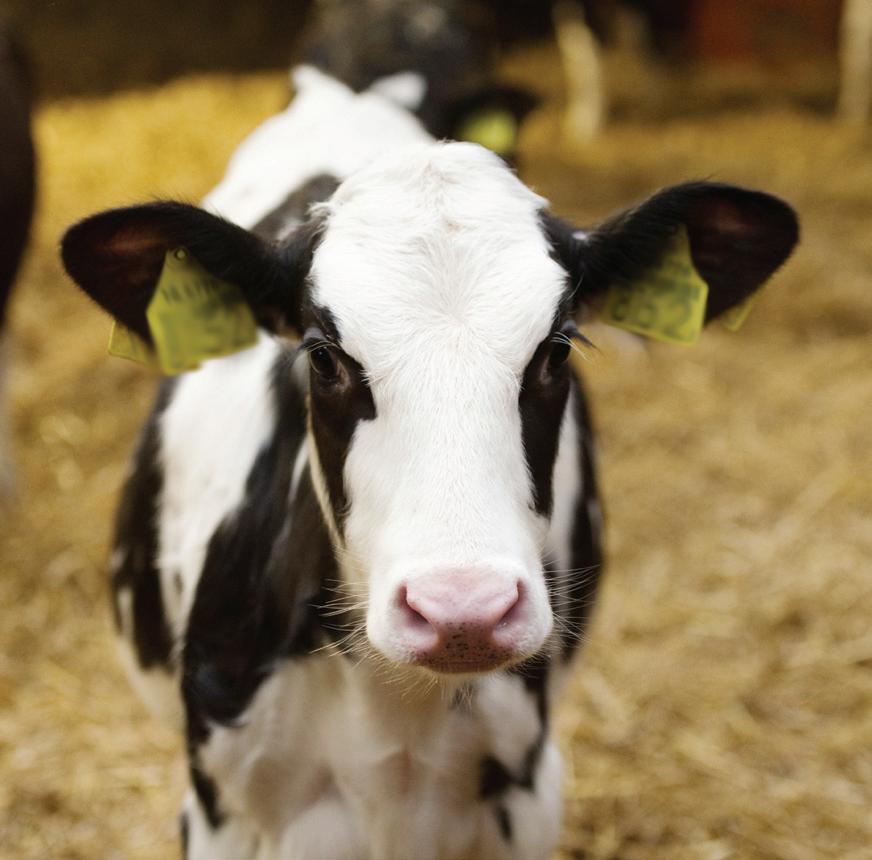
The earliest and fastest protection from BRSV and Pi3.
The broadest M. haemolytica prevention 1


Concurrent use of Bovilis® IBR Marker Live and Bovilis® Bovipast® RSP.
Unique lungworm protection.


out how we can help protect the
of your herd or visit www.msd-animal-health-hub.co.uk
The development of vaccines containing iron-regulated
of Mannheimia
for the control of pasteurellosis in cattle. XXII World Buiatrics Congress. Hanover. Bovilis® Bovipast® RSP contains inactivated BRSV (strain EV908), Pi3 virus (strain SF-4-Reisinger) and inactivated Mannheimia (Pasteurella) haemolytica (serotype A1). POM-V. Bovilis® Huskvac contains viable Dictyocaulus viviparus 3rd stage irradiated larvae. POM-V. Bovilis® IBR Marker Live contains live bovine herpesvirus type 1 (BHV-1), strain GK/D (gE¯)*: 105.7 - 107.3 TCID50**. *gE¯: glycoprotein E negative. **TCID50: tissue culture infective doses 50%. POM-V. Bovilis® INtranasal RSP™ Live contains live BRSV and Pi3. POM-V. Further information is available from the respective SPC, datasheet or package leaflets. MSD Animal Health UK Limited. Registered office Walton Manor, Walton, Milton Keynes MK7 7AJ, UK. Registered in England & Wales no. 946942. Advice should be sought from the medicine prescriber. Use Medicines Responsibly. © 2021 MSD Animal Health UK Limited. UK-BOV-210500003
Contact us to find
long-term productivity
Reference: 1. Donachie W (2002)
proteins (IRPs)
(Pasteurella) haemolytica
Improvements to cow accommodation and slurry infrastructure often require big investment, but what are the benefits and are there cost-effective steps to be taken?
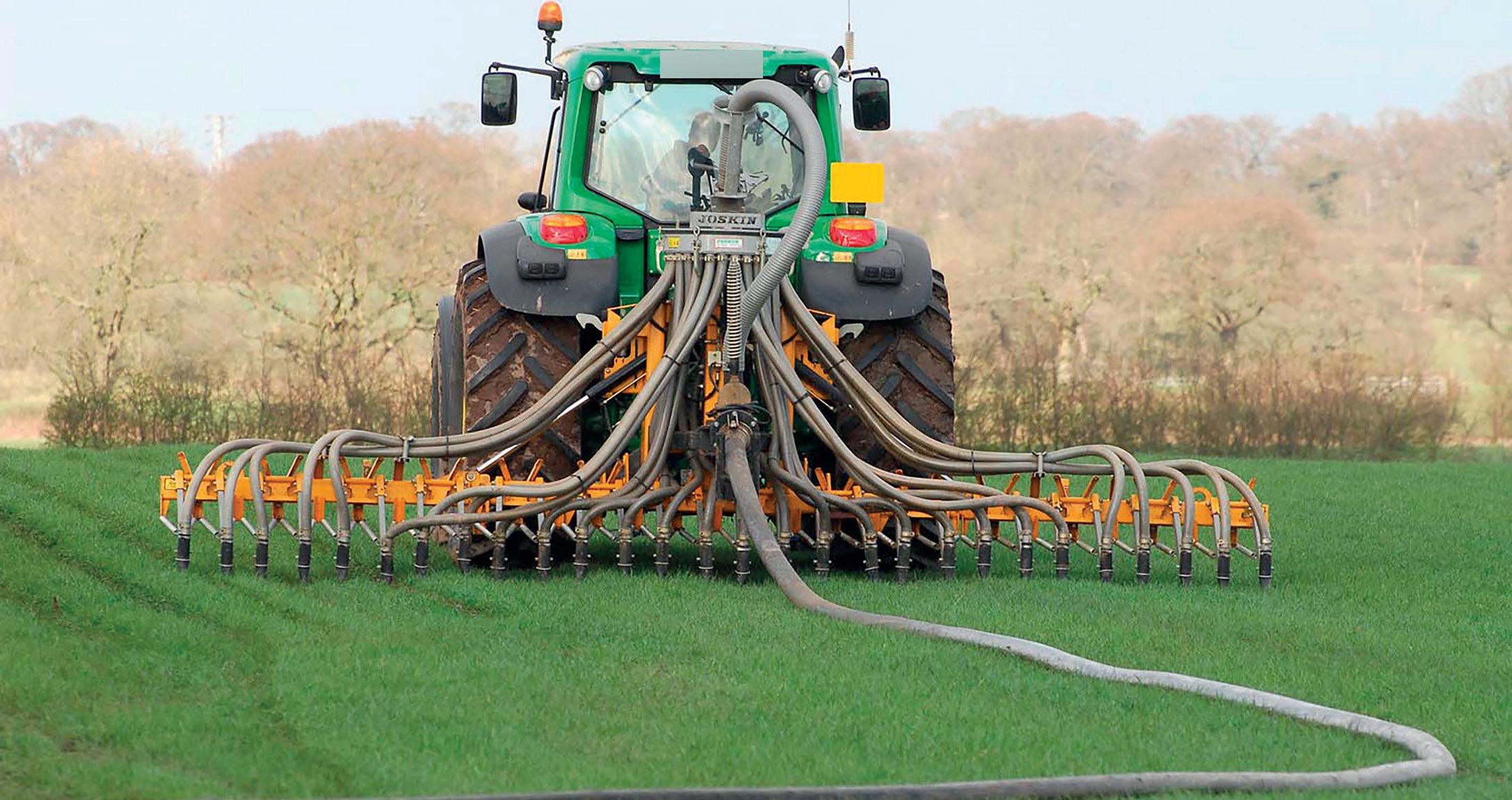

Plasma treatment technology could be a viable asset for food production, with crop yields showing consistently high performance.
Value of plasma-treated slurry
Trial data has shown that plasma-treated slurry increases grass and wheat nitrogen yields by 34% compared to using untreated slurry and, as a result, is able to match the characteristics of ammonimum nitrate-based fertilisers.
e treated slurry also has a 59% higher nitrogen use e ciency for crops and grasses compared to untreated slurry, meaning a far higher level of nitrogen is retained within the treated slurry rather than leaching into soils and waterways.
N2 Applied, which has developed the technology, says these results are a signi cant breakthrough for circular agriculture, underlining that plasma treatment technology and N2 Applied’s nitrogen-enriched
organic (NEO) material can enable treated fertiliser to be produced on-farm viably and reliably.
Previous N2 Applied trial results showed the treated material was at least as e ective as the highest-yielding, market-leading chemical equivalents and could reduce dependency on them.
Yields is latest data demonstrates how the material delivers strong grassland and wheat yields on-farm over longer periods and growing cycles.
Using a patented plasma technology which applies just air and electricity to slurry, the technology – which is now provided in equipment manufactured by GEA Farm Technologies – performs a plasma conversion that ‘locks in’
both carbon and nitrogen to the liquid waste material while vastly enriching its nitrogen content. is year’s digestate, cow and pig slurry trials focused on grassland and wheat crop yields, which were carried out by independent scientists at ADAS, Oxford Agricultural Trials and Scotland’s Rural College.
Parallel soil quality tests conducted by the Inland Norway University of Applied Sciences showed that NEO performs safely with similar bene ts to organic fertiliser, with the addition of reduced risk of scorching which enables application in fair weather.
N2 Applied has previously worked with independent test sites in Denmark, Norway and the UK to deliver annualised
data assessing wheat and grassland yields, and methane and ammonia emissions, from NEO-treated versus untreated slurry.
N2’s technology is typically powered by renewable electricity generated on-farm, with most of that energy being consumed by the plasma torch that is central to the conversion process.
Carl Hansson, chief executive of N2 Applied, says: “ ese latest results demonstrate that plasma treatment stands toe to toe with chemical fertilisers on yield and is more a ractive, given the environmental bene ts.
“ e results show that this technology is a viable new asset for food production, with yields showing consistently high performance over time and multiple trials.”
AUGUST 2023 52 HOUSING & SLURRY
OPTIONS Alternative storage without concrete 58 COWS The impact of extra space 62 INOCULANTS Could they be worth it? 66 SHEDS Impact on milk production 70 CRUST How to keep issues at bay
54
Dairy farmers in the UK & Ireland are being pressured to meet ammonia emissions reduction targets.

Lientjie Colahan, technical sales support at Lallemand Animal Nutrition, explains how a slurry inoculant can improve nitrogen retention in slurry resulting in less being lost as ammonia.
WHAT IS AMMONIA AND WHY DOES IT MATTER ON MY FARM?
On farms, ammonia (NH3), comes from livestock urine and manure, and nitrogen fertilisers, and can be harmful to both animal and human health.
Cattle farming accounts for 44% of the country’s total ammonia emissions, and 48% of this is attributed to spreading manure on the land. Retaining as much N as possible in the slurry helps maintain its fertiliser value and reduce N loss into the environment as ammonia.
HOW CAN A SLURRY INOCULANT HELP REDUCE EMISSIONS?
SlurriN PRO contains a highly concentrated combination of enzymes and bacteria that promote the development of beneficial microorganisms in slurry.
When beneficial microbes colonise slurry they use N as a building block for their growth, and increase the amount of N as ammonium dissolved in the slurry. Through these mechanisms more N is retained in the slurry.




HOW



DO I USE SLURRIN PRO?
The inoculant is simple to use – one 1kg sachet treats 200,000 litres of slurry, the equivalent of a month’s slurry production from 100 cows. The amount of powder required is dissolved in 10l, or more, of clean tepid water and applied into the slurry at any convenient point at the start of the month.

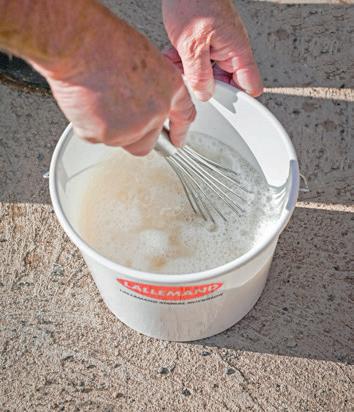
Ideally start when the slurry store is emptiest, otherwise you will need to treat the existing volume of slurry and agitate it to distribute the microbes. Avoid applying it where parlour washings enter the slurry as there is a small risk that dairy chemicals are still in relatively high concentration and could kill the microbes.
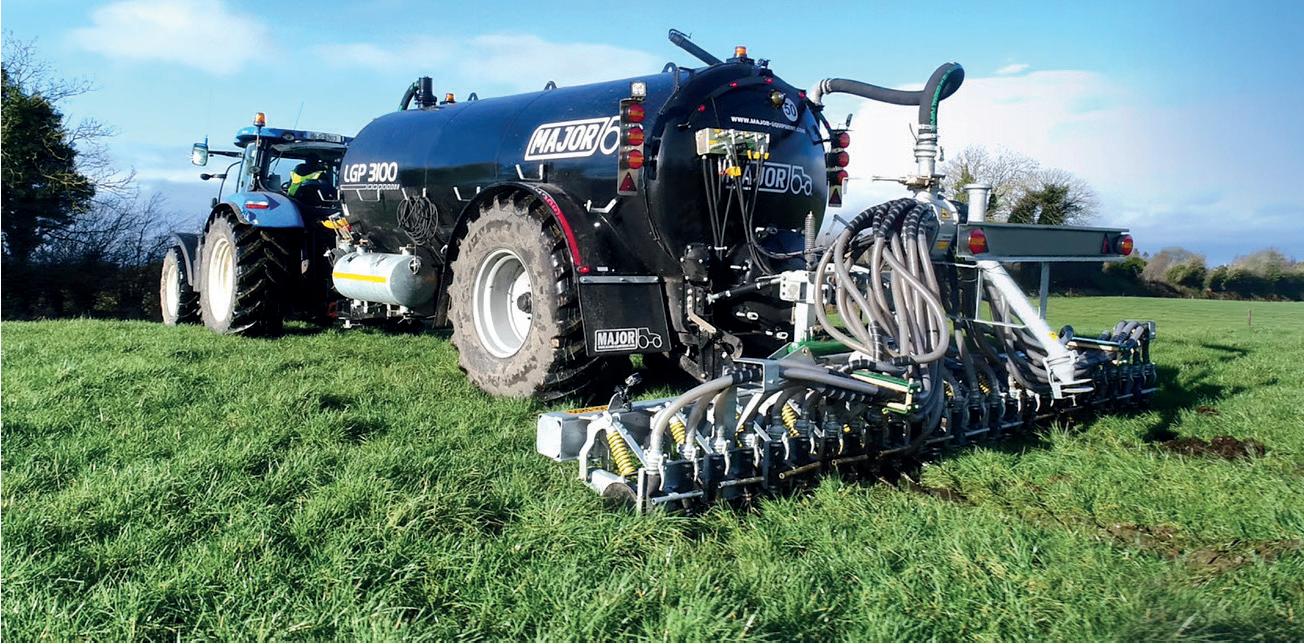
WHAT HAVE TRIALS SHOWN?
A recent trial on a commercial farm in the Netherlands compared ammonia emissions and N value in slurry from two pits in a slatted housing unit – one treated with SlurriN PRO. It found the use of SlurriN PRO reduced ammonia emissions on average by 32.5% and increased total N in the slurry by 14.5%.





 SlurriN
SlurriN
NH3 NPK LESS ODOUR EASIER TO SPREAD BIOLOGICAL SLURRY TREATMENT SlurriN
SlurriN
ADVERTORIAL LALLEMAND ANIMAL NUTRITION n SPECIFIC FOR YOUR SUCCESS www.lallemandanimalnutrition.com +44 (0) 1684 580022 Untreated With SlurriN PRO Scan the QR code & find out more / call 07884 312 382 Add SlurriN Pro Dissolve in water
Make the most from slurry & reduce ammonia emissions with an inoculant
With material costs rising and farmers contending with legislation around slurry storage, could bag tanks be an option on some dairy farms? Dairy Farmer reports.
Solutions to storing slurry without concrete
Concrete prices increased by 22% in 2022 and have continued to rise in 2023. is, combined with a 38% increase in the price of steel reinforcing bars used to support concrete structures, has led some farms to reconsider how to invest in covered slurry storage to meet impending legislation.
e Clean Air Act set a goal for all slurry to be covered by 2027. is has come at a time when further legislation has been

passed requiring farms to have at least six months slurry storage, based on the size of the herd. It will also be linked to the challenge faced by an ever-growing number of Nitrate Vulnerable Zones following new rules about when slurry can be applied.
For some of the concerns facing dairy farmers, bag tanks are emerging as an answer, and also an option for those keen to take advantage of grants to store slurry more e ciently and sustainably.
Dutch company Albers Alligator has been manufacturing



bag tanks for more than 35 years and Su olk-based slurry specialist Tramspread has been installing them throughout the UK.
Tramspread managing director Terry Baker says: “Bag tanks are very popular in Europe and are used as either the main depository for slurry or as additional storage. e tanks are easy
With the cost of concrete soaring, we are seeing ever more enquiries for bag tanks
TERRY BAKER
to install and, in the UK, rarely require planning permission.
“However, those looking to install a bag tank are advised to seek guidance from their local authority as the location of an installation may require approval.
“With the cost of concrete storage installation soaring,

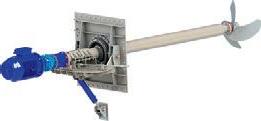



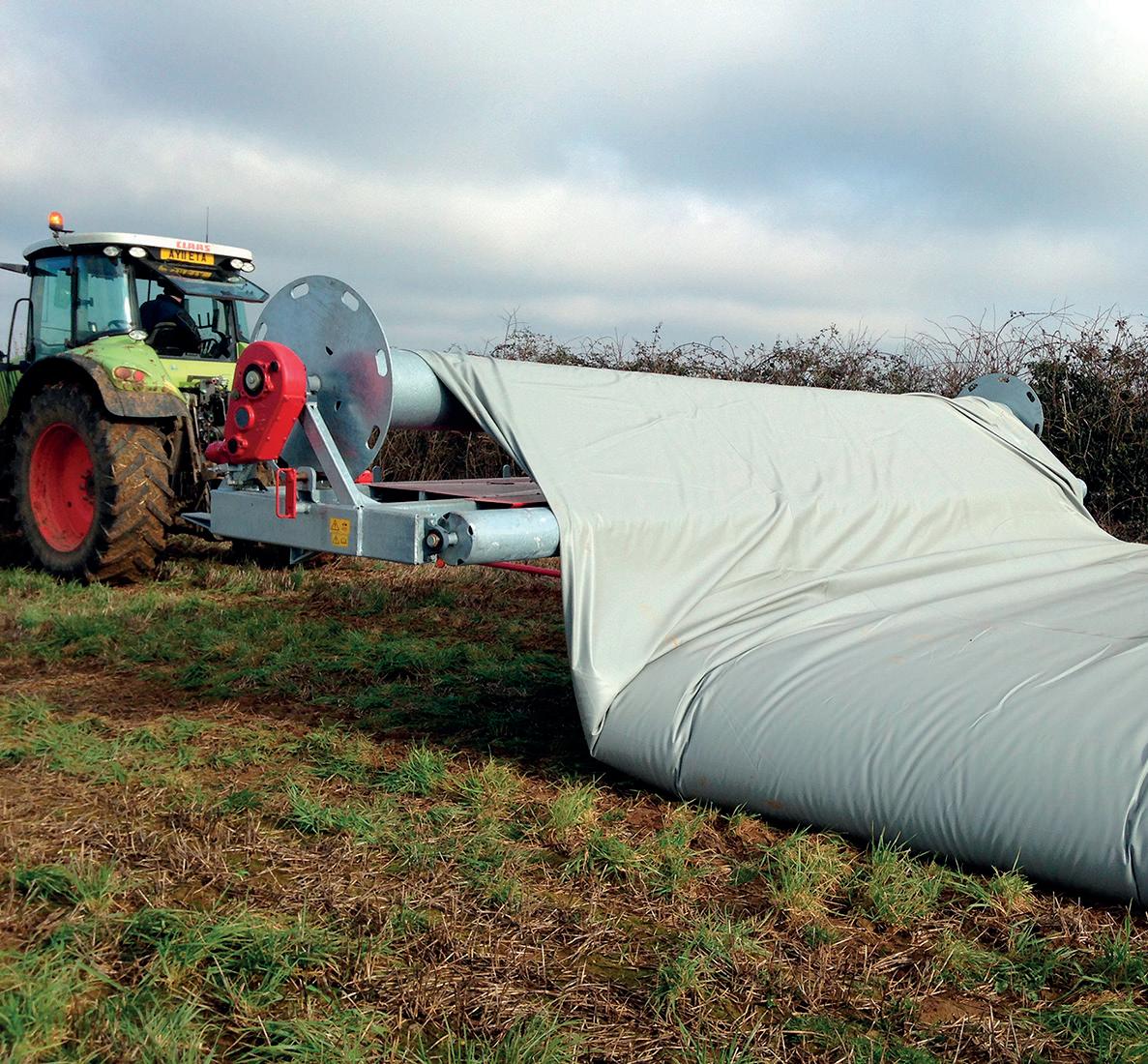
AUGUST 2023 54 HOUSING & SLURRY INNOVATION EFFICIENCY RELIABILITY EXPERTS IN SLURRY HANDLING & BIOGAS SOLUTIONS ABOUT US SEPCOM® and CHIOR® offer advanced solutions through a comprehensive range of machines and accessories for livestock manure treatment and for effluents in biogas production WHY CHOOSE US ? Saveco offer innovative & reliable products suitable for heavy duty operation at a fair price 0 1 6 8 4 2 9 9 1 0 4 0 7 8 5 1 2 5 2 6 2 7 Owen-Bond@Saveco-Water co uk www saveco-water co uk SUBMERSIBLE CHOPPER PUMPS SUBMERSIBLE MIXERS EXTERNAL CHOPPER PUMPS SCREW PRESS SEPARATORS MICRO FILTRATION UNITS SCREW CONVEYORS GRIT TREATMENT HANDLING PACKAGING WASTE
Albers Alligator also produces a portable bag tank called the Winbag.
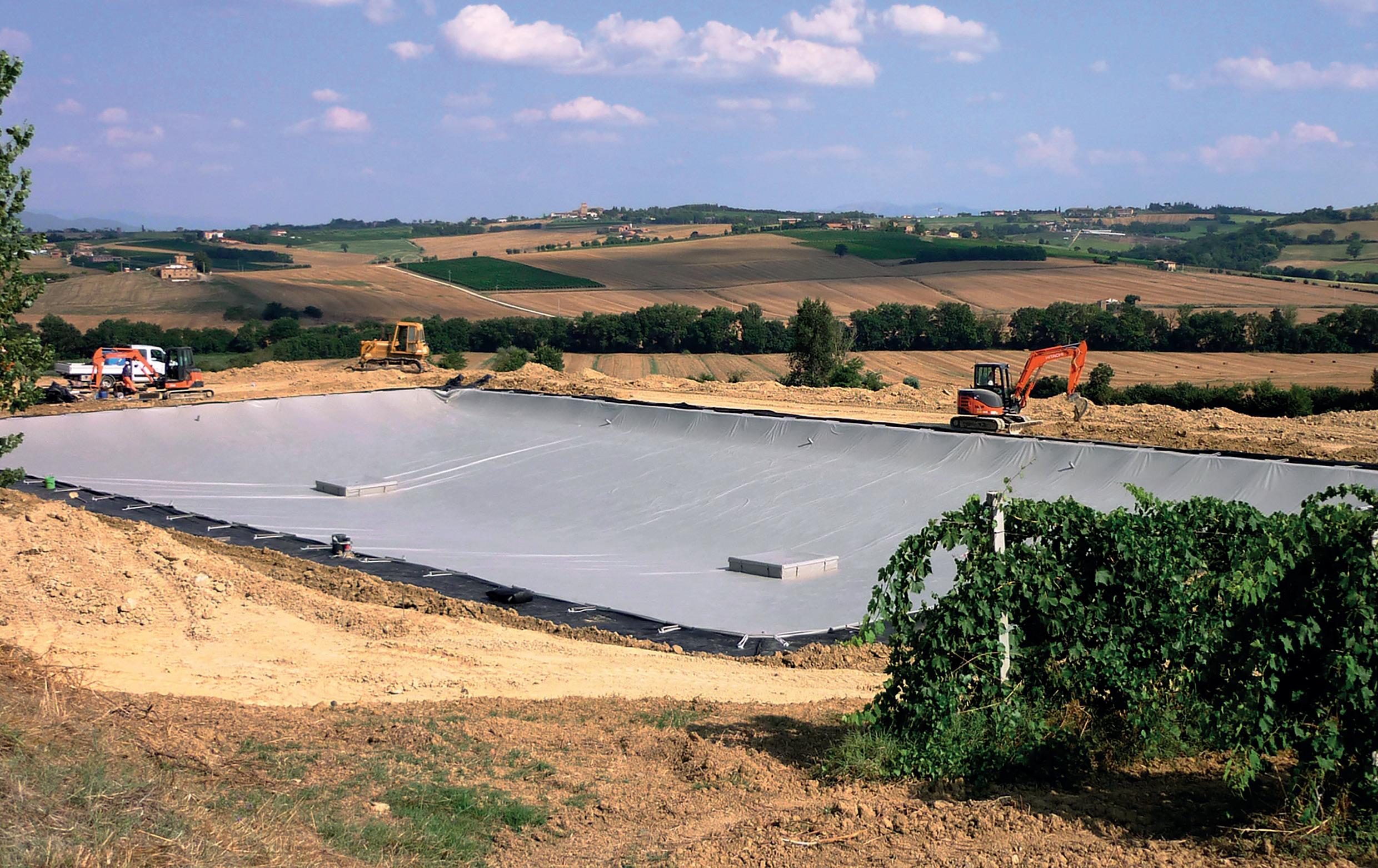

more



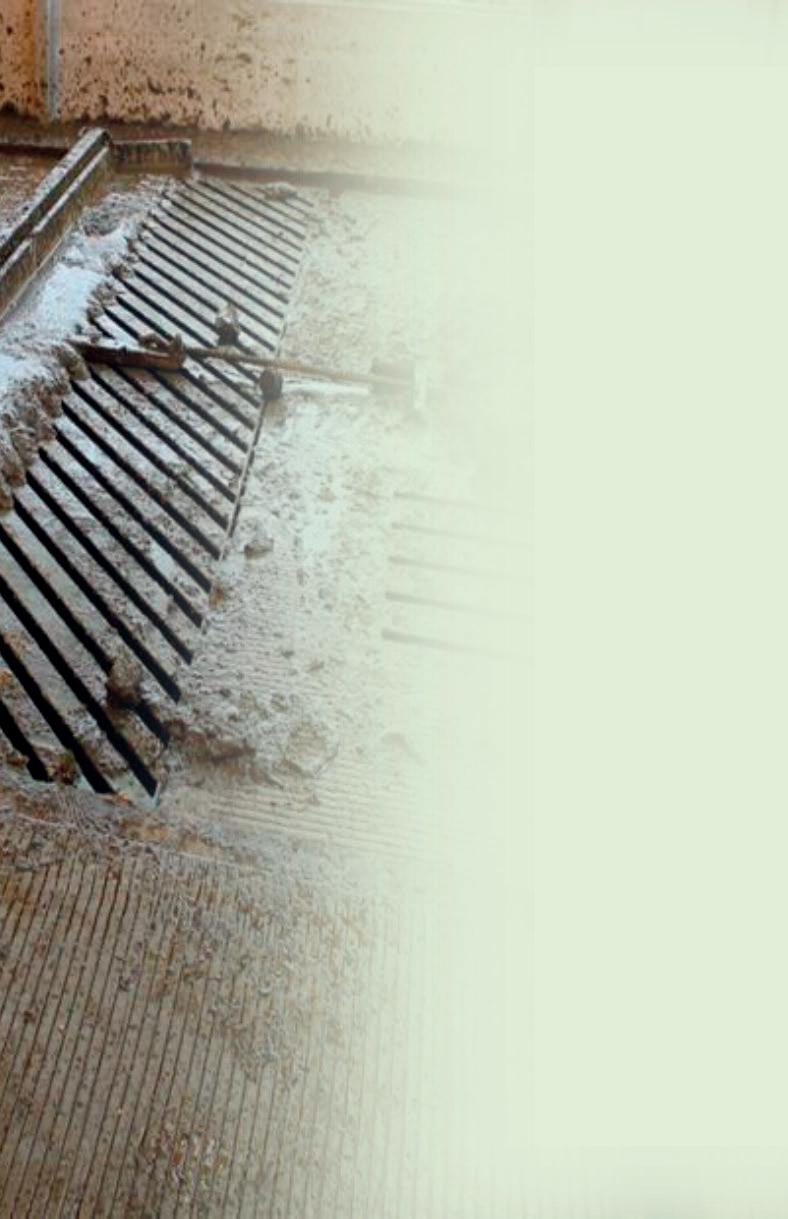


AUGUST 2023 55 Rope Scraper Key features of the Control System
Future proof expandable up to 3 individual systems (6 winch)
Individual time clock and switching for each winch system
Selectable shunt program for robotic milking
Inbuilt bedding cycle Benefits of the Rope System Ideal for sand laden slurry Lowest cost replacement parts Rope replacement cost £3 per metre Easy touch screen control 5 years extended warranty available Manufacturing and installing rope scrapers for over 20 years Feature rich control Time control Winch control Cowcare SYSTEMS Innovators in Dairy Farming Wales/Midlands/S. England Fred - 07762800149 N.Ireland/ R.O.I John - 07732348225 Scotland/N. England 07591833853 Andrew - 07803124235 info@cowcaresystems.com
of both options
will
✓
✓
✓
✓
we are seeing ever
enquiries for a bag tank alternative.” While bag tanks are unlikely to outlast a concrete store, the life expectancy is still more than 25 years. Comparing the cost
demonstrates how bag tanks could be an aractive choice for some farms. “A 4,000cu.m bag tank
cost in the region of £145,000 to install. A similarly sized above
Slurry bag tanks have a life expectancy of more than 25 years.

HOUSING & SLURRY
or below ground concrete store would be approximately £220,000,” says Mr Baker.
Bag tanks range in size from 200cu.m to 7,000cu.m and can be located on any soil type as only a shallow foundation is needed. No liner or concrete is required to establish a site for a bag tank, which reduces installation cost and time.
Integral hydraulic or electric stirrers enable easy and consistent agitation of slurry. However, as with any covered store, the slurry management is important.
Separation
Mr Baker says: “Using a slurry separator system will reduce the volume stored by up to 20%, and will result in a more even product which is much easier to manage.
Using a slurry separator system will reduce the volume stored by up to 20%
TERRY BAKER

“ e other bene t of separation is to minimise the potential for bedding and forage to be transferred to storage because this will make pumping more di cult and potentially interrupt the ow of slurry in the eld.”
Bag tanks are manufactured in a UV-resistant, grey material, and – when installed – are low

to the ground and have minimal impact on the surrounding landscape. e bags are ed with an inlet and outlet to ll and empty using a slurry tank vacuum hose.
e tanks are also ed with vents to prevent the build-up of gases. However, bag tanks reduce ammonia escaping from stored slurry which lowers farm emissions. Being a closed unit, bag tanks also prevent rainwater adding to the overall volume of liquid being stored.

can become thick and di cult to pump. e advantage of a bag tank is that it has internal stirrers to agitate the slurry and keep it homogenous, which will save farms time and money by not tying up tractors and labour.”
Albers Alligator also produces the Winbag, a portable bag tank.
ese smaller bag tanks range from 100cu.m to 350cu.m and are typically used as over ow storage, but can also be used as a temporary and portable solution requiring only a level, smooth site. A reeling device, called Winsystem, rolls the whole bag onto a trailer and will unreel it in another location.
Flexibility


ors who want to distribute slurry to di erent sites regularly. Winbags also enable umbilical spreading in hard-to-reach areas which helps to reduce soil compaction.”
Bag tanks are included in the list of products covered by the latest round of grants and a contribution of £19.27/cu.m has been o ered.

Mr Baker says: “Regardless of what storage is chosen, reducing the overall volume of slurry will save money. However, without the addition of rainwater, slurry
e ability to take these bags almost anywhere on the farm o ers a solution to farmers with di cult-to-reach elds. e bags are watertight so can be remotely situated, tanker lled, or pumped to and emptied when the slurry is needed.
Mr Baker says: “ is level of exibility is well suited to any farm that is spread over multiple parcels of land, or for contract-
ere is also the potential to secure funding for an electric-powered slurry transfer pump, with the Government o ering £5,708 for each. For farms looking at separation, a pto or hydraulically-driven chopper pump carries a contribution of £3,695 each or a centrifugal chopper pump can be purchased with a grant contribution of £5,635 each.
“ ere has never been so much support for making slurry a more useable and sustainable product. With high fertiliser costs, growing construction costs and impending legislation to consider, the use of separators and slurry bags is appealing to an ever-growing number of farm systems,” says Mr Baker.

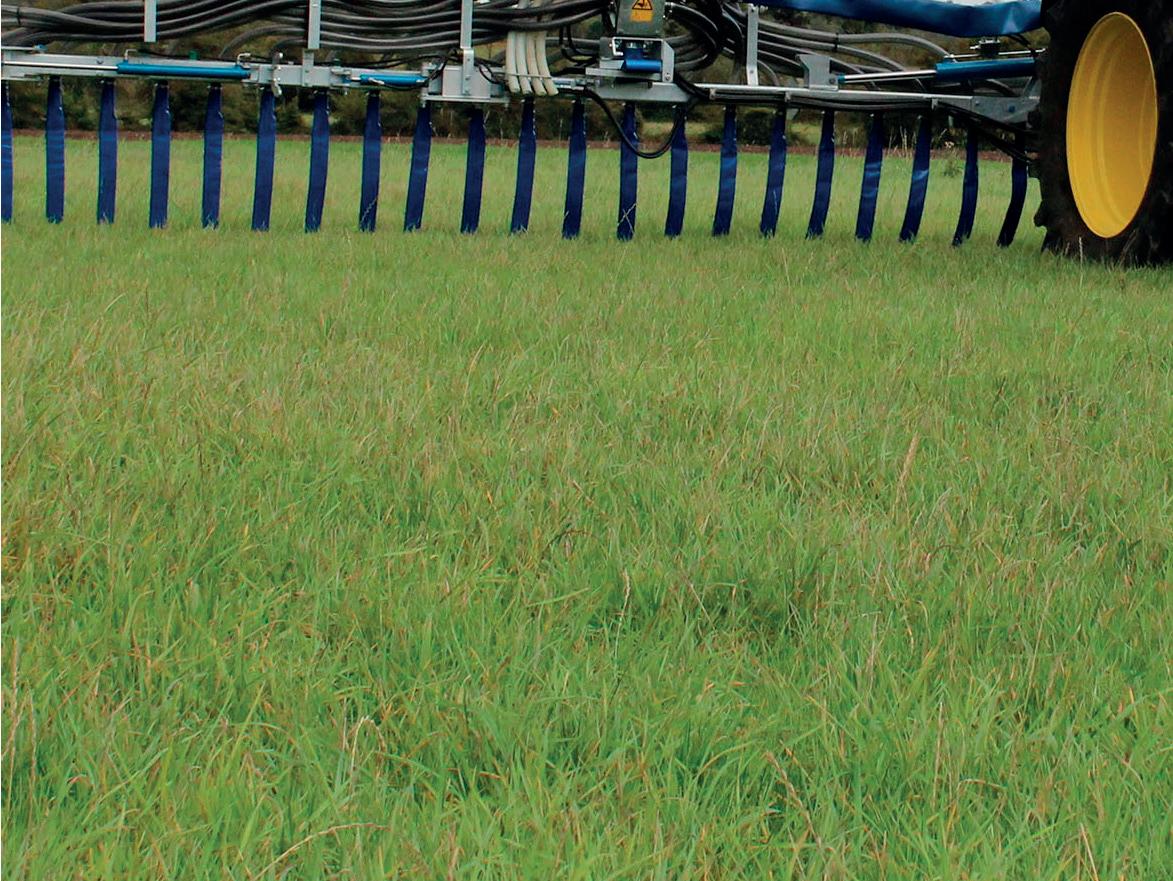



AUGUST 2023 56
There is a growing interest in storage options which will make slurry a more useable and sustainable product.

Turbofarmer 33.7
Don’t settle for second best






ENGINE 115 LIFT HEIGHT 6.6





LIFT CAPACITY 3.3 T

The Merlo Turbofarmer range provides top-performing, user-friendly machines, designed to last no matter the applications.
Despite its compact dimensions, the TF33.7 has a full sized comfortable cab, making it the widest cab of its class. Visit merlo.co.uk to find out more.


merlo.co.uk
Increasing cow space is beneficial to milk production and behaviour of housed dairy cows while also improving cow comfort, a recent AHDB funded trial has found. Dairy Farmer reports.
A look at the impact of increased cow space
The impact of indoor living space on dairy cow production, reproduction and behaviour has been evaluated in a trial funded by AHDB.
Jake ompson, vet at LLM in Derbyshire and a researcher at the University of No ingham, says that while 99% of UK dairy cows will be housed at some point during the year, some cows will have double the amount of space compared to others.
“It is important to consider
how we improve management when cows are indoors, and we lacked the evidence to quantify how extra space impacted them,” says Mr ompson.
“Living space, which is the additional non-lying space available for dairy cows above that deemed to be a baseline requirement, can be easily calculated using simple building measurements. is will help reduce the ambiguity and uncertainty which currently accompanies discussions about loa ng areas
“Farmers are asked to provide
loa ng areas without appropriate guidance of what and how this will impact their ca le. For example, opinions di er on whether passageways should be considered loa ng areas.”
Loafing areas
Current housing recommendations on loa ng areas and total space per cow lack clarity and vary widely.
controlled trial was undertaken in a unique, purpose-built facility. is allowed precise measurement and novel con gurations of the housed area.
Adult Holstein dairy cows were randomly allocated into a ‘high’ or a ‘commercial average’ living space group.
e high-space group was given 6.5sq.m of living space within 14sq.m overall space per cow, compared to the control group with 3sq.m living space within 9sq.m total space per cow.





























As part of his PhD studies, Mr ompson measured the total space given on 50 dairy farms across Great Britain and found it ranged from 5.4 to 12.7sq.m per cow, with the average farm providing 8.3sq.m. ese results helped form an AHDB Research Partnership funded trial at the University of No ingham to evaluate the impact of indoor living space on 150 cows from the high-yielding indoor herd.
A year-long randomised
Importantly, all other aspects of their environment, management and husbandry were identical across the groups. To ensure direct comparison between the two groups, cows were partnered by parity and days in milk, which meant the group structure was also the same throughout the trial.
Mr ompson says: “We wanted to measure the e ect of
















We wanted to measure the effect of living space against three main parameters: production, behaviour and reproductive performance
AUGUST 2023 58 HOUSING & SLURRY Join FarmersGuardian with our new FG Print membership. Receive the magazine every Friday and hear from our award-winning journalists as they provide in-depth analysis, practical tips and all the insights you need to ensure your business is a success.
the new membership package and join today What’s included
The classic print magazine delivered to your door every week
A member’s newsletter delivered every quarter with your magazine highlighting key events, competitions and special offers
Earn rewards for being a member through our FG Rewards loyalty scheme, gain points and transfer them into prizes and discounts
Full article access to farmersguardian.com A one year membership is only £189 Become a member today and save Visit farmersguardian.com/membership Call 0330 333 0056 and quote H304
Explore
•
•
•
•
JAKE THOMPSON

living space against three main parameters: production, behaviour and reproductive performance.”
Production was primarily
measured using daily yield per cow. Rumination time, body weight and milk solids data were also compared between groups.



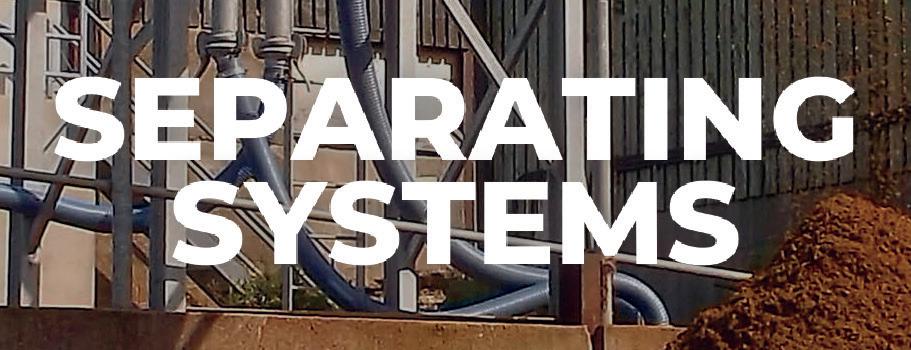

In the trial, Holstein dairy cows were randomly allocated into a ‘high’ or a ‘commercial average’ living space group.
To monitor behaviour, cows were ed with their own wireless geo-location sensors – much like a ‘Fitbit’ for cows
– which sent a location measurement every seven seconds. Comparisons were made between groups on the time

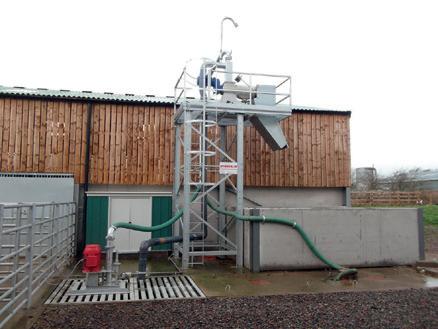


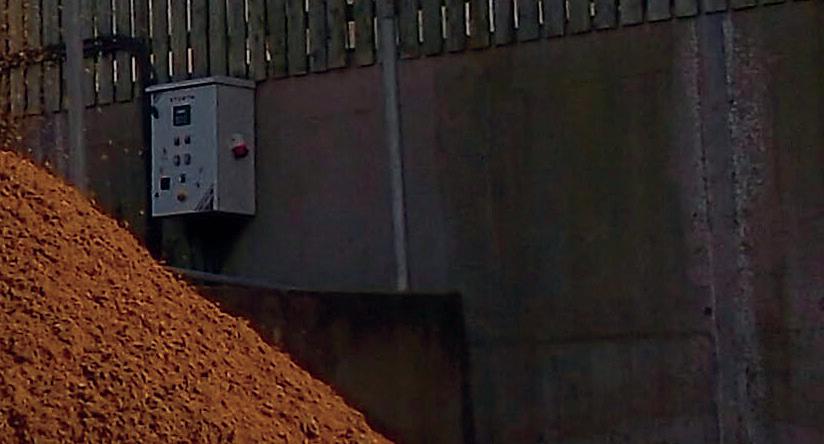




With over 30 years of working with slurry systems, Storth has worked together with their partner EYS, manufacturer of the Separators, to provide full turn key installations to suit every farmer’s requirements.










AUGUST 2023 59
Gantries
EcoBedders
Screw Press Separators
Visit us at: Royal Welsh Show 24th-27th July 0 1 5 2 4 7 8 1 9 0 0 | s a l e s @ s t o r t h m a c h i n e r y . c o . u k w w w . s t o r t h m a c h i n e r y . c o . u k
PICTURE : John Eveson
HOUSING & SLURRY
spent in key designated areas such as living space, feed-face and cubicles, as well as environmental enrichment use.
Time taken to pregnancy was used to measure the reproductive performance of the cows between the two groups.
All key reproductive data, such as arti cial insemination records and pregnancy diagnosis records, were collected. Underlying reproductive physiology was analysed using samples of anti-mullerian hormone and milk progesterone levels.
Yield
Cows in the high-space group gave similar peak yields to those in the control group, but held their yield higher for longer through a lactation. is led to an increase in a 305-day yield
from 14,644 litres to 14,746 litres, equating to over 100 litres per cow per 305-day lactation. e largest yield e ect was observed in the heifer population. ose in the high-space group produced, on average, over 600 litres per cow per lactation more than their control group counterparts, increasing from 11,592 litres to 12,235 litres.
Reproduction
However, more space did not have such a positive impact on reproduction, with cows in the high-space group taking longer to conceive, although all other fertility parameters measured showed no di erence between groups.
When these results were assessed in a simulation model, it indicated that the reduced
The results of this trial should help farmers decide on how to invest in improving housing
JAKE THOMPSON
reproductive performance was compensated for by the increased milk volume in the high-space group. It is therefore still likely to be economically bene cial to provide more living space.
Increased space also enhanced cow welfare through signi cant behaviour changes.
Mr ompson says: “We found that cows in the highspace group spent an extra 65 minutes a day lying down and an extra 10 minutes/day at the feed-face.
“
ey spent less time in the additional living space and more time in the cubicles.”
Benefits
is is the rst long-term study to show that increased living space leads to meaningful benets to milk production and behaviour of housed dairy cows.
Mr ompson says: “Given the current large variation in space allowances provided to dairy cows across Great Britain, the results of this trial should help farmers decide on how to invest in improving housing and ultimately improve cow comfort, well-being and productivity.”

AUGUST 2023 60
Increased living space leads to meaningful benefits to milk production and behaviour of housed dairy cows according to trial work.
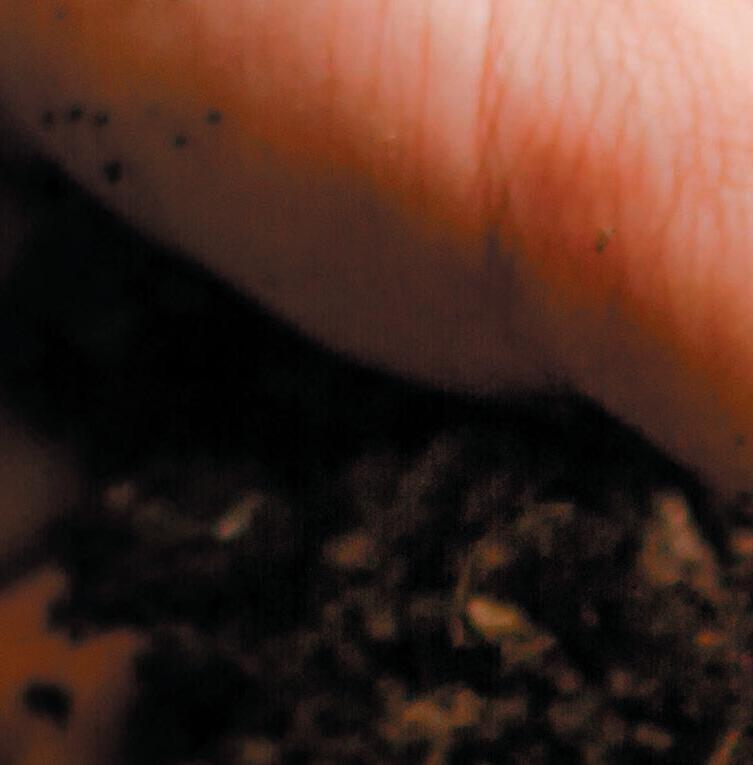
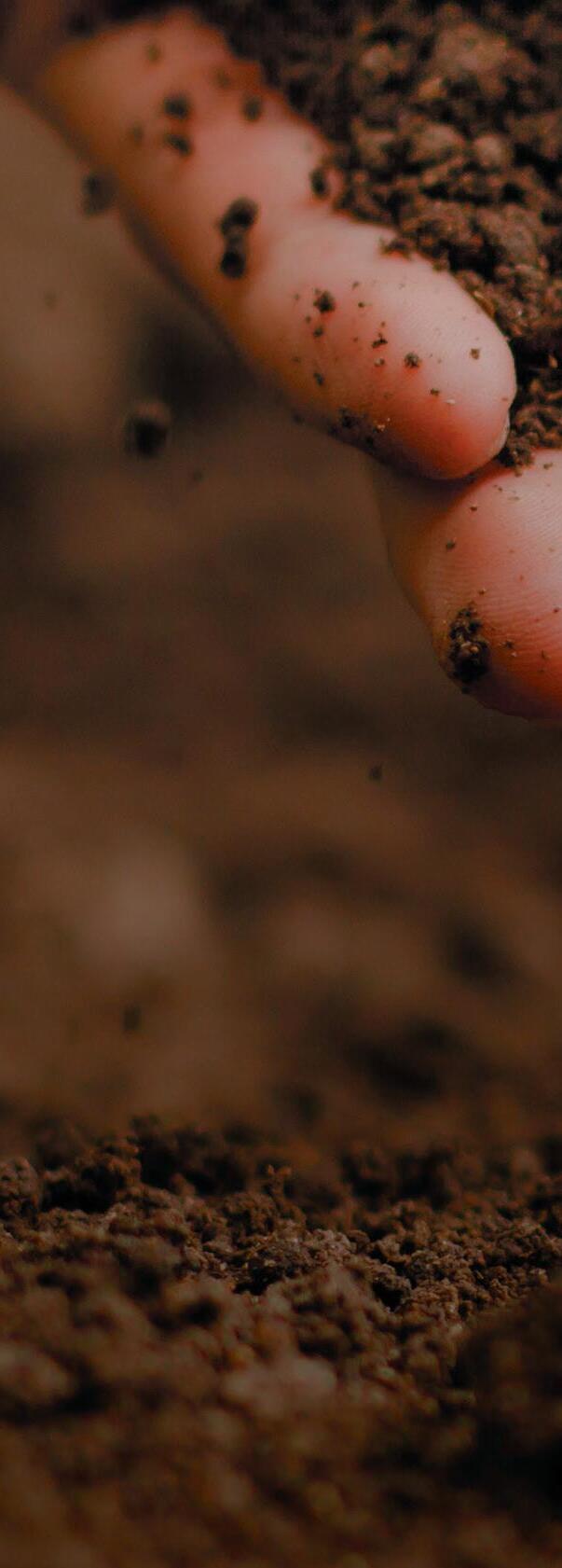


Pushing boundaries


Reduce your fertiliser need

The ONLY slurry inoculant designed for soil and plant health. A complex blend of 18 plant growth promoting rhizobacteria and fungi, proven to:
Increase grass quality and yields

Save time and money
Reduce your carbon footprint


Find









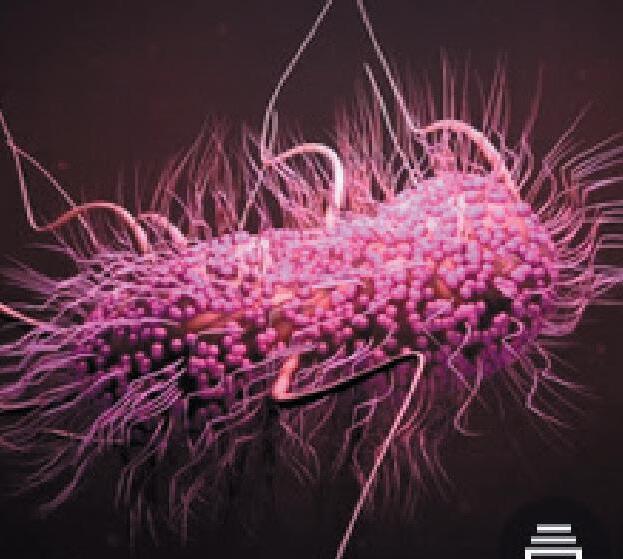














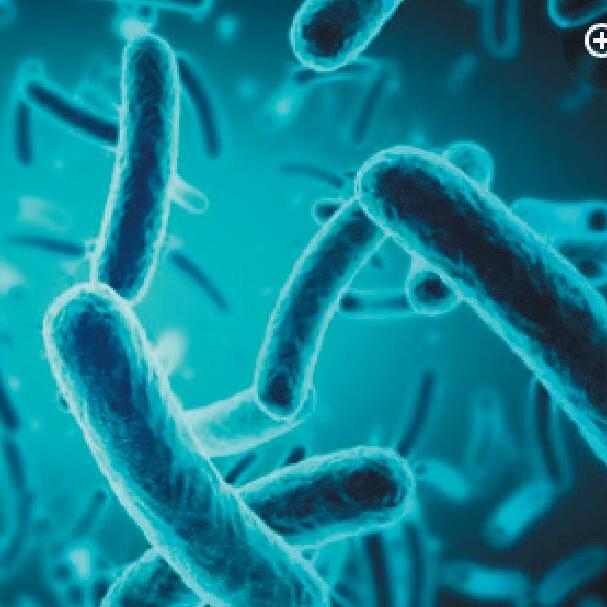










SLURRYFORSOIL®
out more:
01559 370222
SCAN ME
www.sylgenanimalhealth.com
info@sylgenanimalhealth.com
The nutrient value of slurry has been successfully maintained – and its smell reduced – following the introduction of a slurry inoculant on a Nottinghamshire dairy unit. Dairy Farmer finds out more.
Adrive to make the most from slurry while reducing its carbon footprint was the impetus for Graham Walker to begin using slurry inoculants.
Mr Walker is herd manager at 223-hectare (550 acre) Collingthwaite Farm, located on the Welbeck Estate, Nottinghamshire, which is home to a 250cow herd of Holstein Friesians.
The cows are milked twice a day through a herringbone parlour and they give average annual yields of 10,200 litres at 4.45% fat and 3.55% protein.
Most of the milk is sold to First Milk on a manufacturing contract, and the farm additionally supplies milk for making the award-winning Stichelton blue cheese – one of only a few unpasteurised blue cheeses
Maintaining the value of slurry with inoculants
produced in the UK. There is also a raw milk vending machine located in the estate’s farm shop.
Mr Walker runs an autumn-block calving system at the farm, and the cattle are grazed from the middle of March until the end of October.
“Calving starts on August 1, and the majority of the herd will calve between then and the end
Silage Safe System
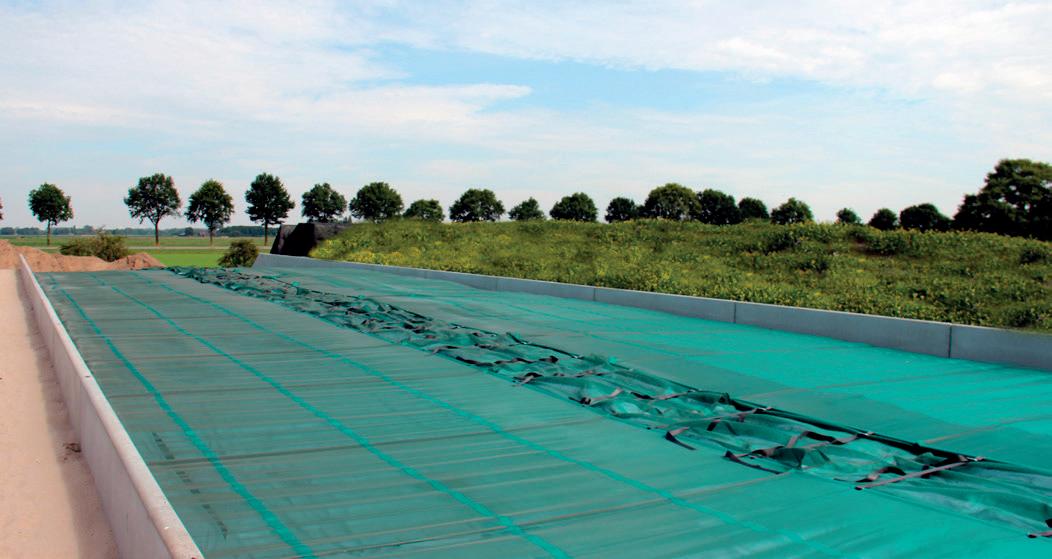

‘Why Silage Safe?’
• Improved fodder quality due to full-surface tensioning, also along the edges*.
• Labour-saving thanks to fast and efficient tensioning technology.
• Easy ensilage in layers possible.
• Perforated pipe for rainwater drainage.
• Protection of concrete pit walls against aggressive media and acids*.

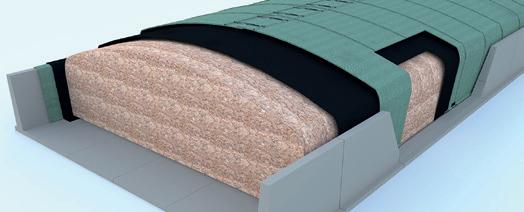
of December,” says Mr Walker.
“This suits our manufacturing milk contract, and most of our milk is produced in the winter before the cows go out and make the most from grazing in the spring and summer.”
Forage
There is a strong focus on producing homegrown forage at Collingthwaite and the housed ration comprises a 50/50 split of grass silage and maize silage, alongside lucerne silage, fodder beet, and concentrates at a rate of three tonnes per cow per year.
Mr Walker says slurry is key to producing as much forage and grazing grass as possible, with the farm introducing the SlurriN PRO inoculant last October.
“We do not use any fertiliser on our grazing ground anyway, and we try and use as little as possible on the silage grass,” he says.
“We introduced the inoculant
Farm facts
rHerd milked twice a day through a herringbone parlour
rAverage annual milk yields of 10,200 litres a cow at 4.45% fat and 3.55% protein
rMajority of milk sold to First Milk on a manufacturing contract
rMinimal fertiliser used on the farm

because we wanted to get more nutrition from the slurry and reduce our greenhouse gas emissions – something the estate’s owners are very committed to doing.”
The inoculant has been used at the farm for one housing season at a rate of one 1kg sachet of the product per 100 cows per month.
The slurry is spread on the farm from early March onwards
rStarted using a slurry inoculant in October 2022 to maintain nutrient value of the slurry and reduce greenhouse gas emissions
rData shows improvements to the phosphorus, potassium and nitrogen value of the slurry since using the inoculants
AUGUST 2023 62 HOUSING & SLURRY
*inconjunctionwithstandardsilagefilm(providedbyothers). 1 Quay Business Centre, Harvard Court, Warrington WA2 8LT Tel: 01925 629393 Email: agri@huesker.co.uk Web address: www.huesker.co.uk
Graham Walker
We wanted to get more nutrition from the slurry and reduce our greenhouse gas emissions
GRAHAM WALKER
using an umbilical system and great care is taken to ensure its quality is retained.
“We have a oating sheet on the slurry lagoon to keep the rainwater out and we pump the slurry underground from the lagoon to come up through hydrants in the elds for spreading,” says Mr Walker.


He adds that the inoculant’s impact on emissions from the farm has yet to be determined, however data shows it has greatly improved the nutrient value of the slurry compared to previous analysis, as well as its smell.
“Analysis shows an increase






•
•
•
•
•
•
•
•
•
Continues over the page...
in the value of phosphorus, potassium and nitrogen to 367mg/ kg, 1,819mg/kg and 0.23% w/w, from 123mg/kg, 1,656mg/kg and 0.12% w/w, respectively,” he says. “It has also taken away the majority of the smell from the slurry – an added bonus.”
AUGUST 2023 63 SUFFOLK RETRO FIT
DIGESTATE AND SLURRY MANAGEMENT T: +44 (0)1449 766133 E: info@tramspread.co.uk WWW.TRAMSPREAD.CO.UK
DRIBBLE BARS
Retro fits to any make of Tanker
Working widths 6m to 10.5m
Strong and safe 4 point attachment
Dribble pipes 250mm spacing
Vogelsang E.C.Q. Macerator
Optional full lighting
Optional Purge Valve and Spread Nozzle
Optional Flow Meter
Optional 3 Point Linkage Galvanised Umbilical Frame with Swinging Arm For details of grant funding available search Rural Payments Agency Annex 3: FETF 2023 Productivity and Slurry Eligibility Items Grant Suffolk Retro Fit Dribble Bars Ad.indd 2 15/02/2023 18:11
Collingthwaite Farm produces homegrown forage and the housed ration comprises a 50/50 split of grass silage and maize silage.
HOUSING & SLURRY
How the slurry inoculant works
JLientjie Colahan, environmental inoculant product manager at Lallemand Animal Nutrition, which produces SlurriN PRO, says the inoculant offers both production and environmental benefits to farmers.
“It contains a highly concentrated combination of enzymes and bacteria that promote the development of beneficial micro-organisms in slurry,” says Mrs Colahan.
“When beneficial micro-organisms colonise slurry, they use nitrogen as a building block for their growth and increase the capacity of the slurry to hold dissolved ammonium N – this ensures more N is retained.”
She says this offers environmental benefits in the form of reduced ammonia emissions, which occur via a process called volatilisation when slurry is spread.
“The volatilisation process causes the ammonium in the slurry to be converted into ammonia and released into the atmosphere,” says Mrs Colahan.
“By treating slurry with a biological inoculant, farmers will not only increase the total amount of N in the slurry, but also increase the proportion of organic N present – and organic N is not volatile or leachable.
When beneficial micro-organisms colonise slurry, they use nitrogen as a building block
LIENTJIE COLAHAN

“This form of N then mineralises over time, supplying N to the plant.”
She says a recent trial on a commercial dairy farm in the Netherlands compared both ammonia emissions and N value in slurry from two pits in a slatted housing unit – one was treated with the inoculant.
Results
Mrs Colahan says: “Results from the trial show that the use of the inoculant resulted in ammonia emissions being reduced by an average of 32.5%, while total N in the slurry increased by 14.5%.”
She says the inoculant is simple to use and the recommended dosage is one 1kg sachet per 200,000 litres of slurry – this equates to around a month’s slurry production from 100 cows.
“The powder should be
dissolved in 10 litres, or more, of clean tepid water and then mixed evenly into the liquid fraction of the slurry every month.
“However, farmers should avoid putting it in where parlour washings enter the slurry because there is a risk the dairy chemicals are still in relatively high concentrations and could kill the microbes in the inoculant.”


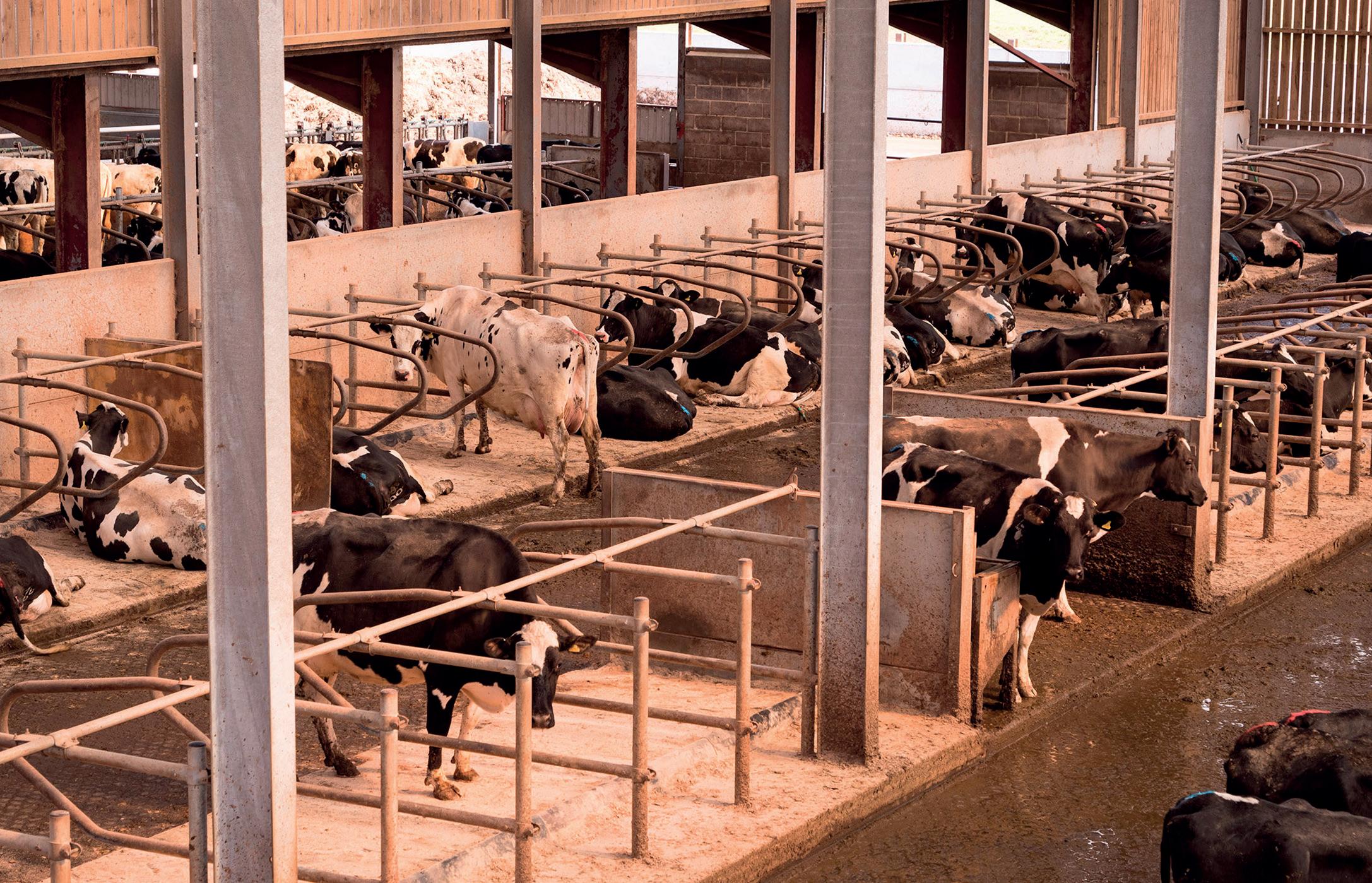
AUGUST 2023 64
Graham Walker is herd manager of a 250-cow herd of Holstein Friesians.
Lientjie Colahan






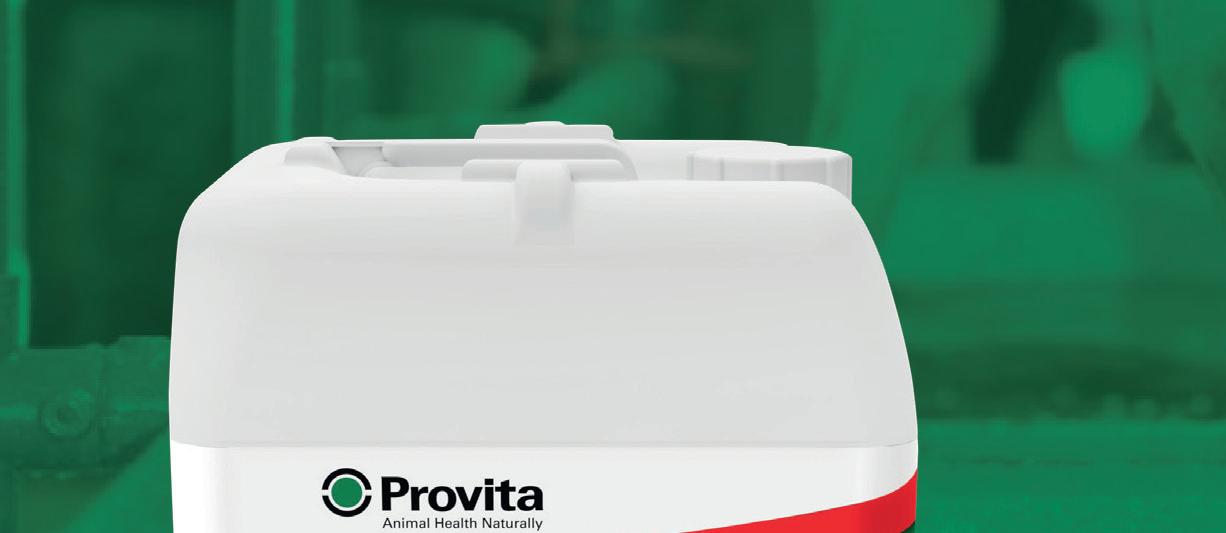
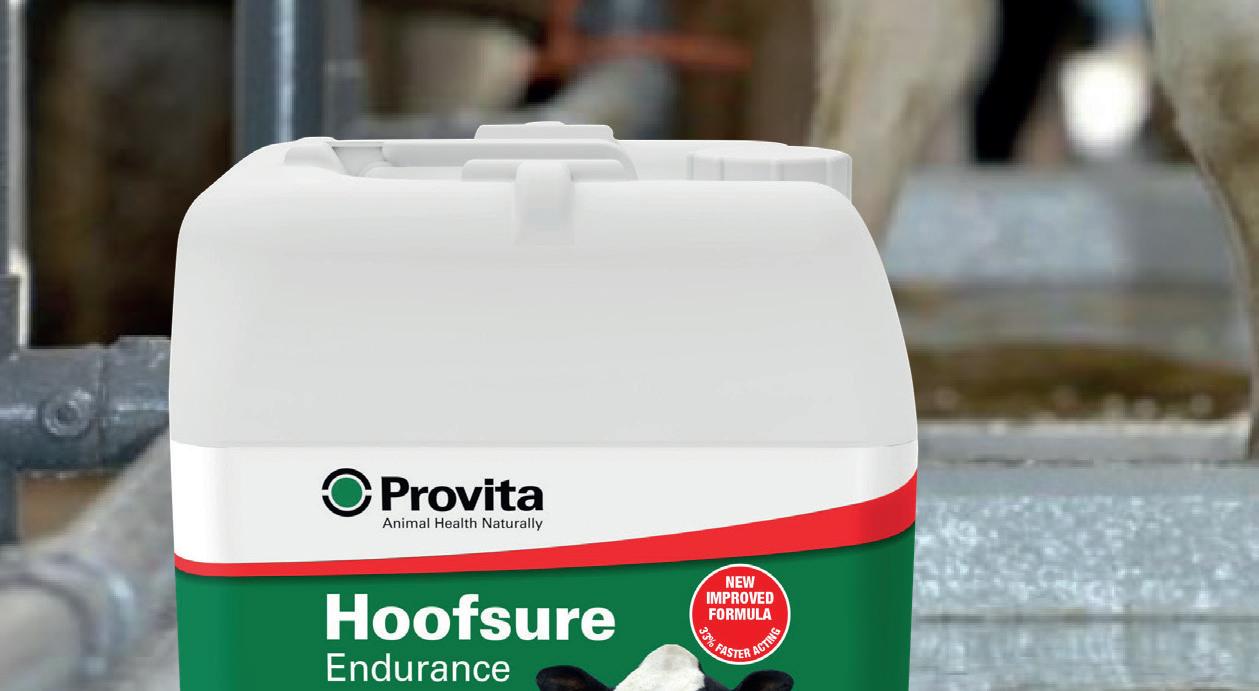





















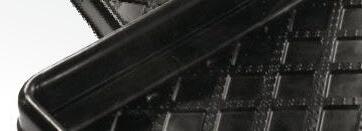

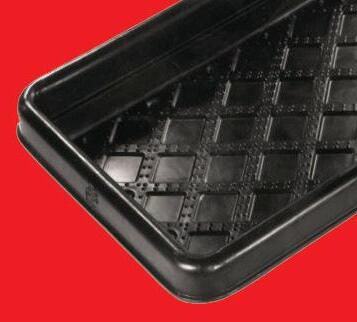


Increase productivity and reduce lameness with Hoofsure Endurance – the safe, clinically proven and cost-effective footbath:
footbath


Clinically proven – Active organic formulation that helps to clean feet and prevent lameness. Up to 44% more effective than copper and formaldehyde.*




33% faster acting formula – With increased hoof contact time.
Safe to use & dispose – Biodegradable, natural footbath solution that’s better for the environment and safer for animal and human health.
Formaldehyde is carcinogenic
Copper is illegal
Find out more visit: www.provita.co.uk Call freephone: 0800 3284982 or contact your nearest stockist. *References available on request
NATURALLY BETTER than formaldehyde and copper 25 litre FORMALDEHYDE 375 COWS 50 kg COPPER SULPHATE 300 COWS 20 litre Hoofsure Endurance 5000 COWS MORE COWS PER LITRE! SPECIAL OFFER BUY 10 x HOOFSURE ENDURANCE 20L GET 3-METRE PAXTON FOOTBATH 2-METRE PAXTON FOOTBATH BUY 13x HOOFSURE ENDURANCE 20L GET IMPROVEDNEW FORMULA 33%FASTERACTING

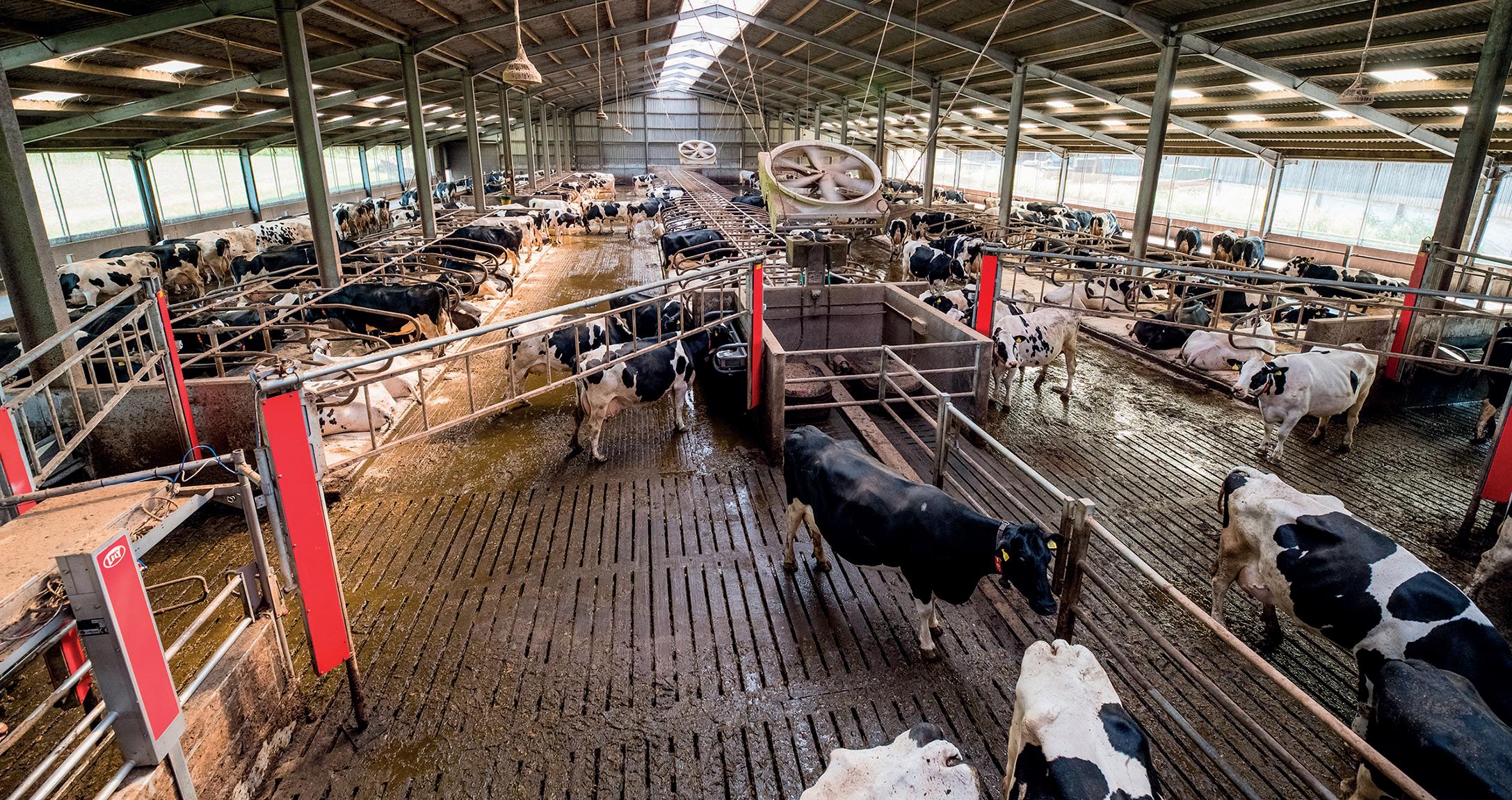
Investment in a new shed complete with high levels of automation has led to increased productivity and improved business efficiency, the Sloan family has found. Wendy Short reports.
Investment in automation leads to yield benefit
The installation of robots has increased milk yield by 20% from 10% fewer cows, compared with the previous parlour-milking system at Shawsmuir, near Dumfries.
e highly automated unit, which includes a feed pusher and a couple of slurry collectors, was built on a green eld site, with the rst milking in the spring of 2018.
Having made a signi cant investment in four Lely A4 robots, Craig Sloan and his father Robert were keen to maximise their

e ciency and reap the return on investment as quickly as possible.
e pair milk 270 commercial
Holstein Friesians all year round, with yields averaging 12,500kg at 4% bu erfat and 3.5% protein.
Farm facts
rThe farm covers 174 hectares (430 acres) and is 80% grass, plus cereals for wholecropping
rSome 190 head of youngstock are reared on-site
rHeifers are calved at 24 months
rMilk goes to Muller/ Co-op on a liquid contract
rFour-to-five silage cuts are taken each year and youngstock are grazed
“ e new dairy unit was a huge investment for the business, so it had to work well,” says Craig.
“A lot of time was spent on researching and planning the layout, particularly the cow ow around the robots. We opted for free access, with plenty room in front of the robots.”
ere is an expectation that one robot will service 50-60 cows, depending on average milk yields, he says.
“Our initial target was 230 cows maximum across the four robots, but that has been pushed to 240 cows. We have found that

AUGUST 2023 66 HOUSING & SLURRY
Robert (left) and Craig Sloan at Shawsmuir near Dumfries.
The new shed, built on a greenfield site, houses 270 Holsteins.
PICTURES : Marcello Garbagnoli
we can retain 3.2 milkings per day, with no additional time spent on training heifers.
“The yield improvement from fewer cows has come with the third milking, new housing and letting the cows milk whenever they wish; some cows will milk four to five times a day.
“The diet is similar to the previous system and we are milking the same cows, but the changes have unlocked their potential. Working closely with our nutritionist, Eoghan Mullery, from ARN, has been an important element of achieving our targets.”
The four robots sit in a line with two outer feed troughs which run the length of the shed and the aim is to keep an even spread at the feed fence.
The two groups are divided evenly in terms of cow and heifer numbers.
The robots dispense an average of 8kg/concentrate/head, depending on yield and days in
milk, while the forage allocation is replenished three times a day, as well as being ‘pushed up’ using an automated system.
The total mixed ration includes silage, wholecrop, a protein blend, wheat syrup and molasses.
“The frequent feeding encourages cow activity and, once a cow is up on its feet, it is more likely to visit the robot,” says Craig.
Walking
“It also gives us a chance to clean the cubicle beds, but in general it is better to avoid walking among the cows where possible, because it disturbs their natural routine and can discourage robot visits.
“We add an extra six portions of feed at each session, taking out any excess and giving it to the youngstock.
“This practice helps to promote dry matter intakes.”
The unit has a pregnancy rate of 32%, which the family feels is an acceptable figure for the

average yield performance. The calving index is 380 days, with a conception rate of 53% and an insemination figure of 6%.
Sexed semen is used for replacement breeding and heifers are genomically tested, with the lower end put to a beef breed.
Among the bulls used recently
With Sil-All, protect your investment
are: Glory; Atlantis; Oracle; and Raptor.
“When selecting bulls, the aim is to maintain the stamp of our cows and maximise their potential, because they suit the system very well,” says Craig.
“The main conformational issue is to pay attention to udder physiology and teat

Sil-all products protect your silage investment ensuring:
• Higher digestibility
• Faster fermentation and reduced DM losses
• Anti-fungal package for greater stability at feed out
• Up to 5% more silage compared to untreated clamps
• Reduced feed costs and improved profitability
For more information contact your local distributor or email enquiries@lallemand.com
HOUSING & SLURRY
LALLEMAND ANIMAL NUTRITION SPECIFIC FOR YOUR SUCCESS www.lallemandanimalnutrition.com + 44 (0) 1684 580022
The frequent pushing of food, which is fed out three times a day, helps to encourage cow activity and robot visits.
HOUSING & SLURRY
placement. The latter is very important when milking through robots because it will affect attachment. The laser needs to find its target effectively, so the teats must be positioned a reasonable distance apart.
“I believe that milking speed is an important trait when making breeding decisions on farms with robots.
“Efficient teat attachment, coupled with a favourable milking speed, is critical as it will have large part to play in the volume of milk achievable from each robot.
“A cow with poor teat positioning or robot behaviour that struggles to attach is the most inefficient cow in a robot herd.
“One aspect of breeding that I have always found quite difficult to take on board is the fact that the best cows will not always produce the best replacements.
Genomic
“Some females have greater ability to pass on favourable genetics than others and genomic testing is a major step forward. I have to bear this in mind, as I would otherwise simply breed from my top-performing cows. I have had to learn to trust the science.”
A foot-trimming specialist visits the farm every week and any treatment that is required for foot health and lameness prevention is given promptly. Cows are also given a routine foot trim at 130 days in milk and before drying off, with a footbath used regularly.

“There are automated dropdown footbath trays fitted at the exits of each pair of robots and they are used about three times a week on average,” says Craig.
“I find that having an automated footbathing system encourages the practice and it also means that the formalin does not have to be physically handled.
“There was a period where footbathing was less frequent and lameness cases started creeping up, so it is very worthwhile.”
Craig says he is often asked whether the switch to robotic milking has reduced the labour requirement on the farm. The father and son team currently have one full-time employee.
“The only saving on labour has been that we no longer need
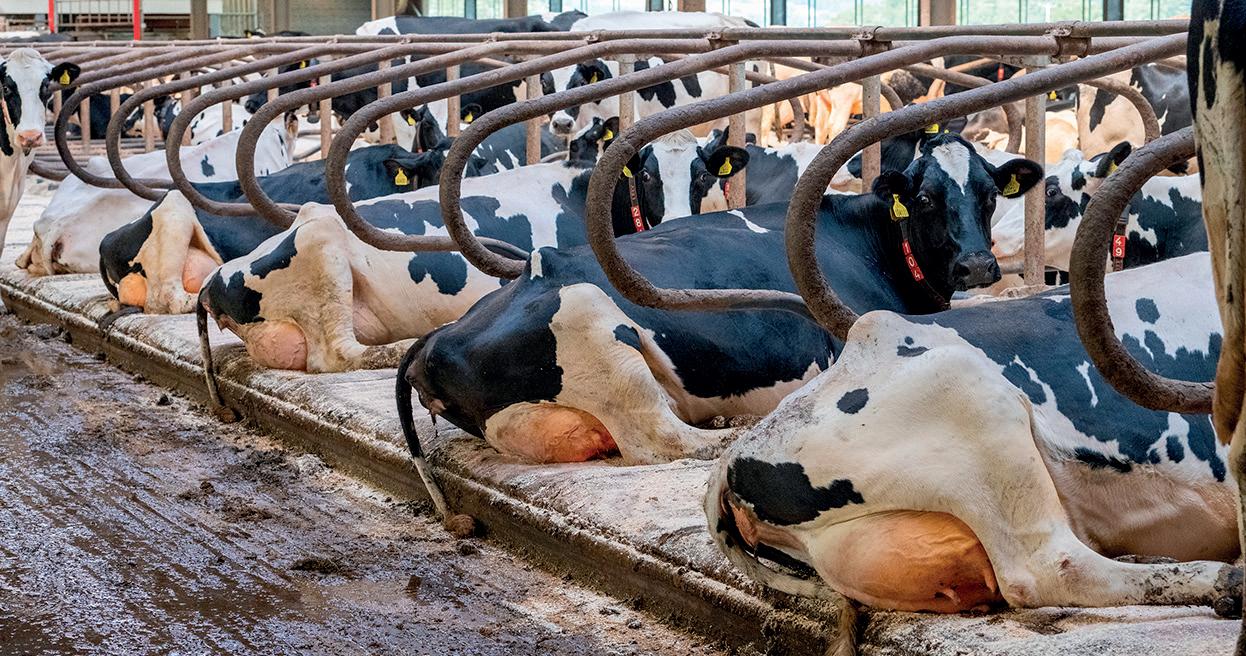
a relief milker. Nevertheless we were on twice-a-day milking; there would be a bigger saving for herds milked three timesa-day,” he says.
“The increased automation has reduced the pressure on trying to find staff, which is challenging for the dairy industry. The time that was spent on milking is now used for overseeing the management of the cows and on looking after the mechanised installations.
“For example, one of us will check the ‘late list’ three times a day and go and look at any cows that have not visited the robot according to their usual routine.
“New heifers also require monitoring; some take a few days to get used to the robots, while others may take a couple of weeks to settle down.”
The other automated features include heat detection and rumination monitoring via Lely collars, two slurry collectors and a Lely Juno automatic feed pusher.
“Although the business and cows were doing well, the farm’s infrastructure was becoming outdated and it was quite labour intensive, so it was time for a change,” reflects Craig, who is fifth generation at Shawsmuir.
“The former main building has been modernised and is now used for dry cows and heifer rearing,
with the new site built next to the old steading.
“Our move to robots was about improving business efficiency and work/life balance through modernisation and we thought robots were the way forward for us.
“It is not necessarily the best option for every farm, but it has been the right decision for our business and the results have far exceeded our expectations.
Proactive
“Nevertheless, I would stress that it pays to be proactive with the machinery, as it requires good care and maintenance to keep everything running smoothly.
“It also helps if you have an interest in technology, as well as cows. It has given us a better lifestyle; there is still a lot of work to do, but the work day is more flexible.
“The cows have also benefited from the robots and they are noticeably more settled and peaceful since the move was made.
“I have no issue with a fullyhoused system, because I feel we have created an extremely comfortable and consistent environment for the herd.
“There are no plans to increase cow numbers; the main aim is to keep taking steps to increase business efficiency,” says Craig.
AUGUST 2023 68
An automated drop-down footbath is used about three times a week.
The herd is now producing about 20% more milk than in the previous shed, despite cow numbers having reduced by 10%.



69 AUGUST 2023 Key Features: Flying insects stay away Birds stay out Energy efficient Reduces ground moisture High Volume Low Speed 100ft by 100ft effective working area HVLS - Fans Fora no obligationquote or moreinformation Cowcare SYSTEMS Innovators in Dairy Farming Wales/Midlands/S. England Fred - 07762800149 N.Ireland/ R.O.I John - 07732348225 Scotland/N. England 07591833853 Andrew - 07803124235 info@cowcaresystems.com
Funding from the Farming Innovation Pathway has aided the development of a product which could help the dairy industry reduce emissions from slurry. Dairy Farmer reports.
Reducing emissions and improve slurry management
With agriculture accounting for 88% of the UK’s ammonia emissions, and in response to Defra’s Clean Air Strategy and Code of Good Agricultural Practice recommendations for reducing ammonia emissions, a research project was launched with the aim of removing ammonia from slurry.
Lancashire-based livestock bedding and agricultural inoculants manufacturer EnviroSystems led the research project, in collaboration with Myerscough College, near Preston, which has taken place over the last 18 months, completing this summer.
Initially looking to use biological treatments to improve the slurry and remove ammonia emissions, funding was awarded from Defra and Innovate UK, as part of their Farming Innovation Pathway, to complete the research project.
While proof-of-concept studies on a biochemical pathway which actively removed ammonia from the slurry were successful, when the study was scaled up to a practical and realistic size by the team
 Dr David Townsend
Dr David Townsend
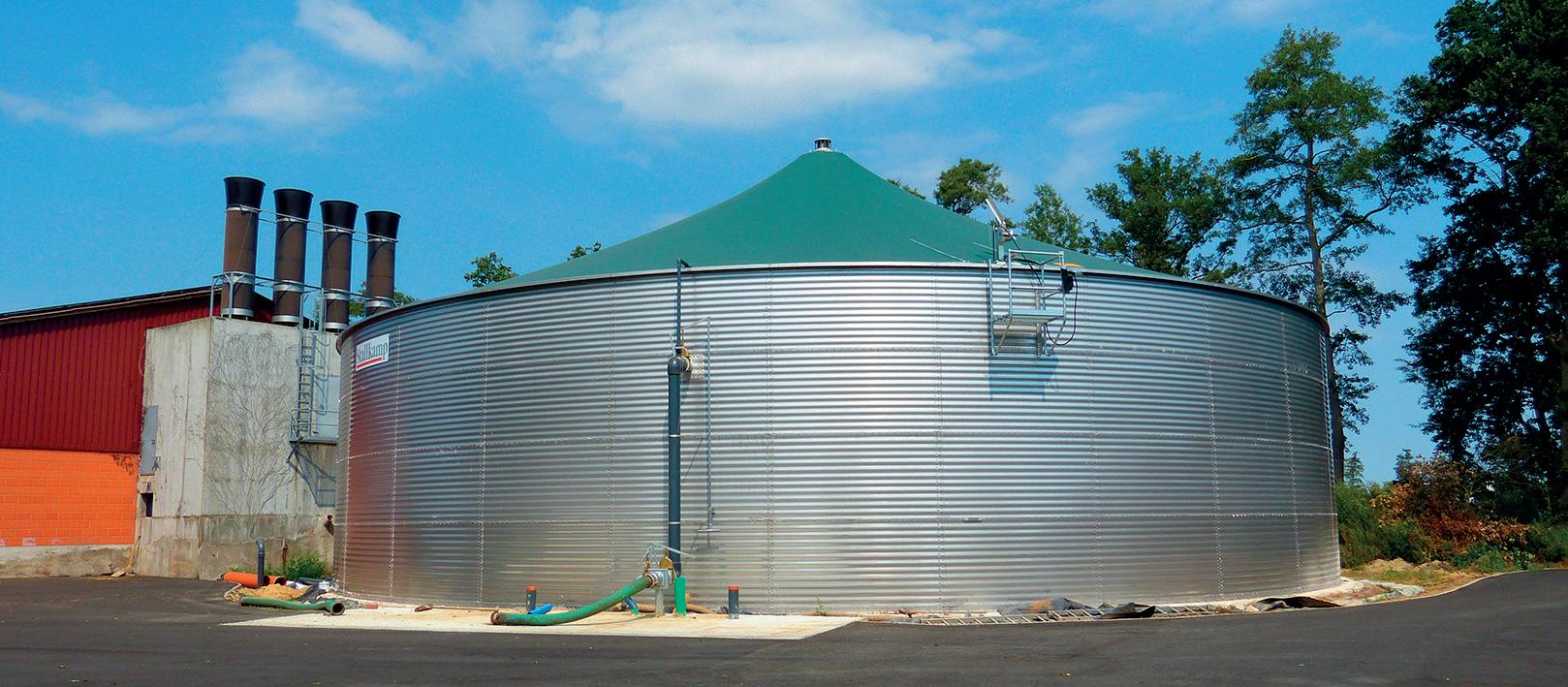
As slurry covers are expected to become mandatory in 2027, the mitigation of crusting issues are expected to become increasingly relevant.
at EnviroSystems, limitations were discovered.
However, this allowed the project to identify areas where emissions could be indirectly reduced and slurry management improved.
Crust formation
As a result, the team at EnviroSystems and Myerscough College redirected focus on redeveloping an existing slurry inoculant product which could help reduce crust formation in slurry when stored under covers and therefore encourage the use of slurry covers to reduce ammonia emissions.
Dr David Townsend, head of research at EnviroSystems, says crust mitigation is directly linked to Defra’s Code of Good Agricultural Practice guide, which recommends covering slurry and digestate stores to reduce ammonia emissions and to ensure farms have enough storage to be able to spread slurry only when crops will use the nutrients.
He says that as slurry covers are expected to become mandatory in 2027, the mitigation of these crusting issues is becoming increasingly relevant.
He says: “Crusting can cause difficulties with slurry handling, due to blocking the pumping equipment, therefore increasing handling costs, as well as massively reducing storage capacity.”
As part of the project, Dr Townsend visited one farmer who had suffered from severe crusting accumulation over recent years and had discovered a 60% reduction in storage capacity due to crust formation, after measuring the amount of slurry going into the store, versus what was being spread.
He says: “He built the store expecting to have 180 days of storage for the required six months, but after four years he was only getting 40% of that because the rest was made up of crust.”
Over the last 18 months, the research team has worked with the dairy enterprise at Myerscough College to review hundreds of micro-organism biochemical pathways which may aid the breakdown of crusts in slurry stores or prevent crust formation.
Consequently, six microbial strains were shortlisted and taken
forward for further research into their capabilities of crust mitigation.
Reduction
Results have shown that from the six strains reviewed, when the strains were used in the inoculant individually, there was a reduction in crust formation of up to 22%.
And when the microbial strains are combined, Dr Townsend says there is a crust reduction of up to 36%.
He says: “This means that storage covers can be used to reduce ammonia emissions without crusting issues and storage capacity is maximised, therefore preventing early spreading.”
The project also found that by reducing crust formation within the slurry, there was a possible 10-15% increase in nutrient release.
Dr Townsend says this is due to an increase in organic minerals from the release of nitrogen, phosphorus, potassium and sulphur into the slurry when the crust is broken down.
He says: “This improved nutrient management could reduce the use of synthetic fertiliser and reduce greenhouse gas emissions and ammonia emissions.”
AUGUST 2023 70 HOUSING & SLURRY

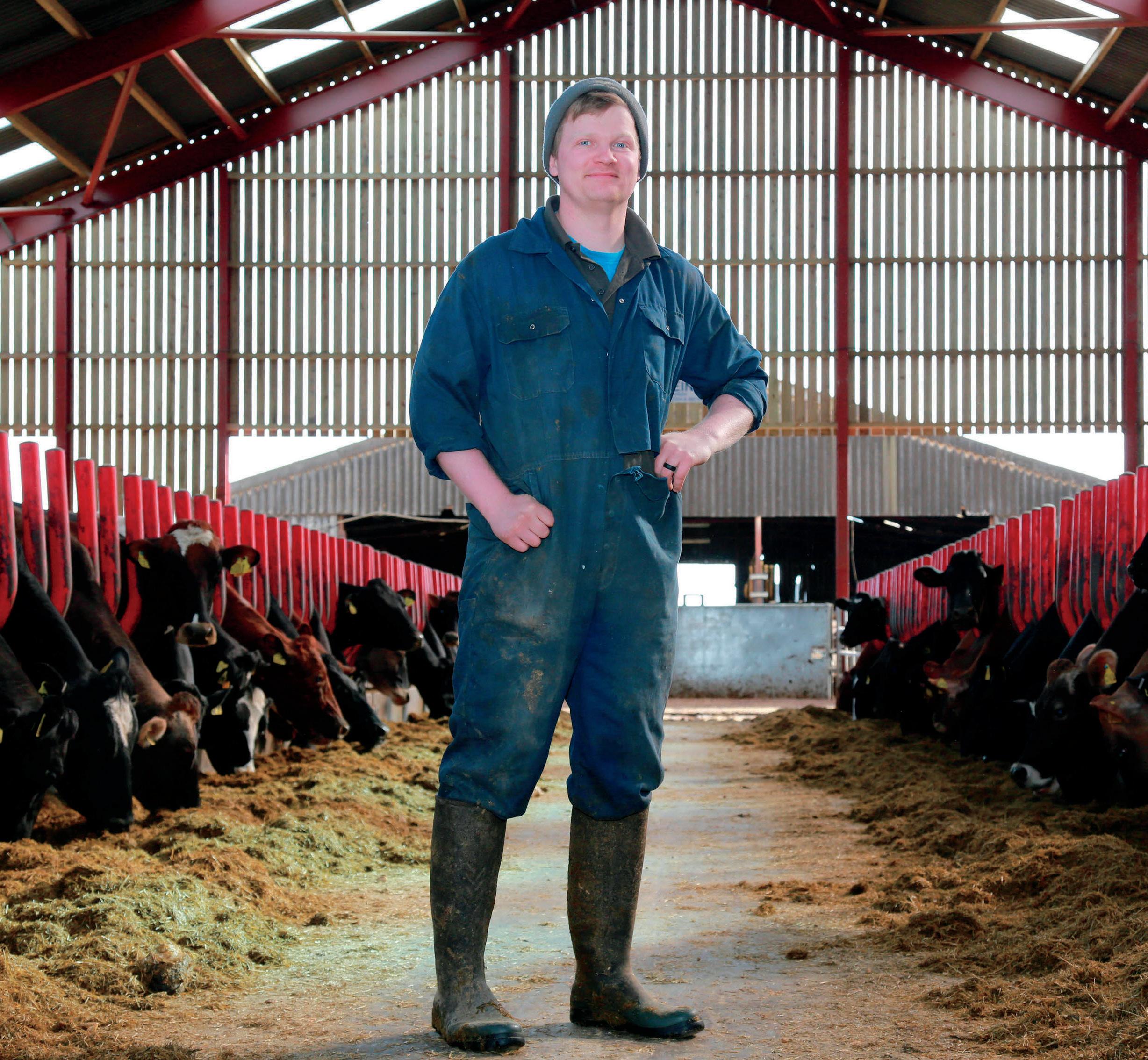




I
switch to EASYFIX,
comfortable and content the cows are,
paints a thousand words www.easyfix.com Providing Farmers With Peace of Mind 07985 602767 - Tom Pemberton, Dairy Farmer Our Dairy Housing Solutions Are Grant Approved! Call For A Free Quotation Flexible Cow Cubicles Cow Mattresses Feed Rail 71 AUGUST 2023
would not look back after making the
just seeing how
a picture

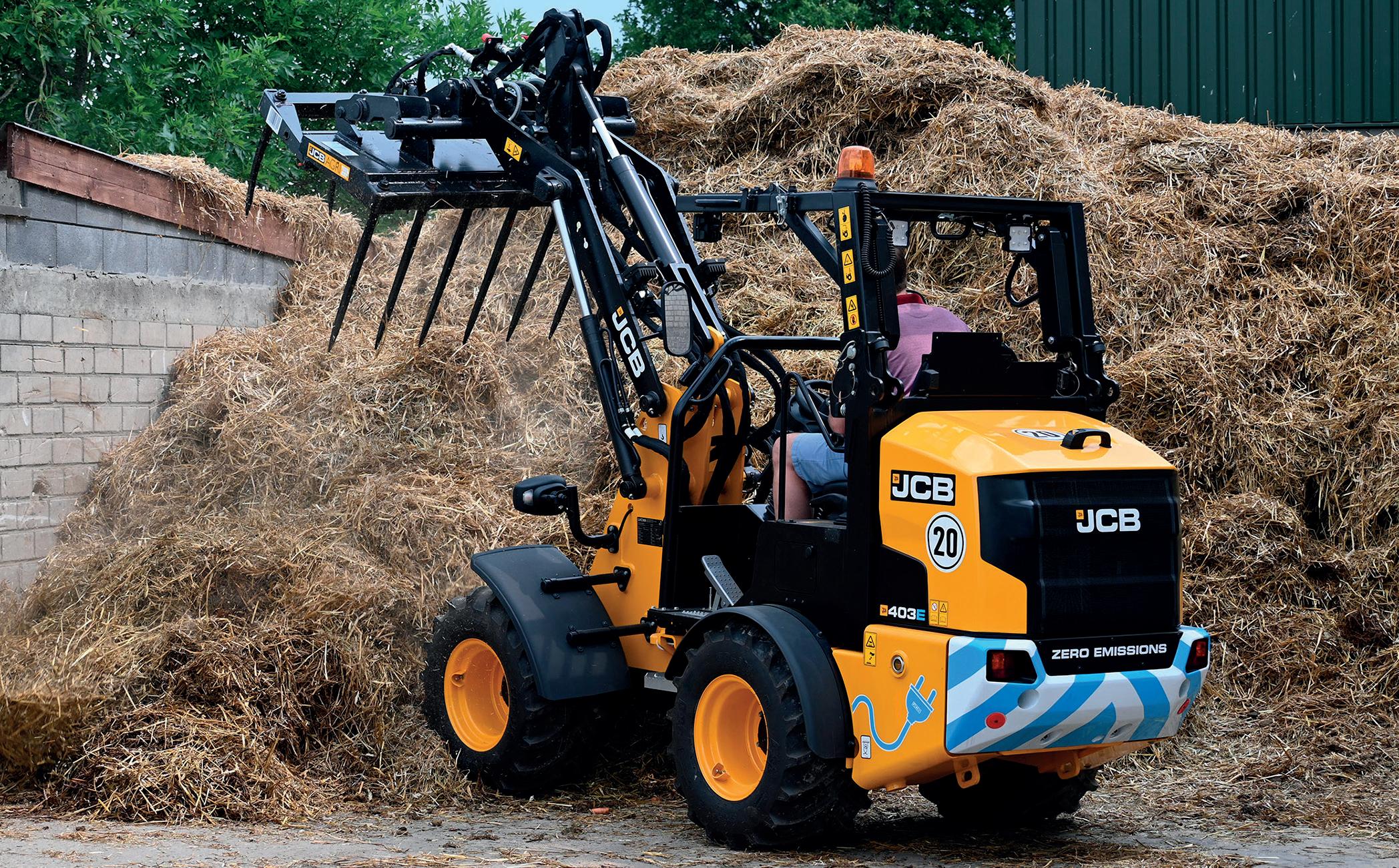
Building on its zero-emission strategy, JCB has added to its E-Tech battery range with the launch of the 403E compact loader. Toby Whatley reports from its launch in Cologne.
JCB launches the first of its full-electric loaders
JCB has made no secret of its plans to expand its E-Tech all-electric range of compact construction and handling machinery.

Aligning with the automotive sector with the removal of internal combustion engines, the Sta ordshire manufacturer has invested heavily in electrical drive systems.
In 2019, it claimed to be the rst manufacturer to produce a ba ery-powered mini excavator and has since sold more than 1,000 units worldwide.
With the exception of its 2.5-tonne, six-metre 525-60E telehandler, the E-Tech range has been rmly focused on construction markets, where users see a greater pressure — and JCB a commercial opportunity
— to decarbonise machinery and introduce ba ery options.
Within the UK market, compact pivot-steer loaders are still somewhat of a rarity with the telehandler and to a lesser extent the tractor-loader holding a rm footing in farm handling.
Market
Within the continental market, pivot loaders in both agriculture and construction carry a signi cantly greater market proportion with French, Dutch and German businesses buying more machines than any other countries.
e 403E is not the rst
all-electric compact loader to be o ered to the market, with other competitors including Weidermann, Avant and Kubota o ering full electric machines.
However, JCB claims the 20kWh ba ery ed in the 403E is the largest in its class and has been designed to mirror the productivity of its equivalent 25hp or 50hp 403 diesel stablemates.
Overall, the dimensions and handling capacity of the E version is the same as the diesel original, however, to add some complexity, the 403 diesel is offered as a 25hp standard or Plus variant with the la er supplied with a 50hp engine and higher
AUGUST 2023 72 MACHINERY
The 403E is JCB’s first all-electric loader.
A choice of quick-fit hydraulic carriages is offered.
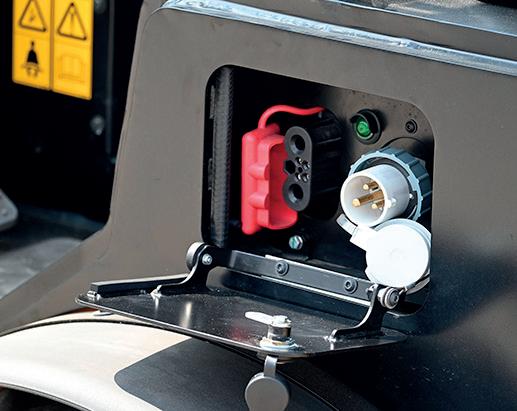
Charging is via the on-board 230-volt system, but a threephase standalone unit can be supplied for a faster recharge.
road speed of 30kph. e E version claims some speci cations from both models, with a mid-power motor, a 20kph road speed and a 1,237kg tipping load when ed with the 2.9m standard loader arm.
Agricultural users are likely to have a greater interest in the larger, 3.1m high-li loader, which can be joined with a heavy-duty counterweight to provide more stability at height.
Upfront, a hydraulic quick hitch compact tool carrier frame
is ed as standard, with other carriage designs including Weidermann also o ered.
Disappointingly for users looking to access a wider range of potentially cheaper a achments, a skid-steer front carrier is not available as a factory- t option.
In use, the drive and hydraulics are very responsive with the machine lacking the characteristic whining pump typically associated with electric forkli s.
Drive
Permanent four-wheel drive is delivered through a 44hp motor directly connected to the dropbox and ZF-sourced axles.
A physical bene t of an electrical drive is the immediate torque o ering, with the 403E capable of some rapid acceleration and able to spin all four wheels on dry concrete when pushing into a muck heap.
An impressive ability, but some changes to how the ma-

chine is driven will be required to prevent an annual consumption of a set of tyres.
ree drive modes of hare, tortoise and snail are o ered which are predominately designed to limit the top-end speed and extend ba ery life.
Hare mode delivers the maximum 20kph speed and full hydraulic power, tortoise reduces this to 8kph while retaining the



The operating station is functional and well laid out.
A folding ROPS frame allows access into low buildings.

hydraulic capacity and snail introduces to a maximum of 5kph with 0.5kph increments o ered.
Designed for precise work and inching, the snail mode would nd favour with users operating bedding machines or bucket brushes. Changes of the modes is achieved using a joystick-positioned switch. Control of the machine




AUGUST 2023 73 MACHINERY farmersguardian.com/app App Edition
In print, in pocket, informed, in profit.
A semi-glazed cab is available and a fullyglazed design will be offered in late 2023.

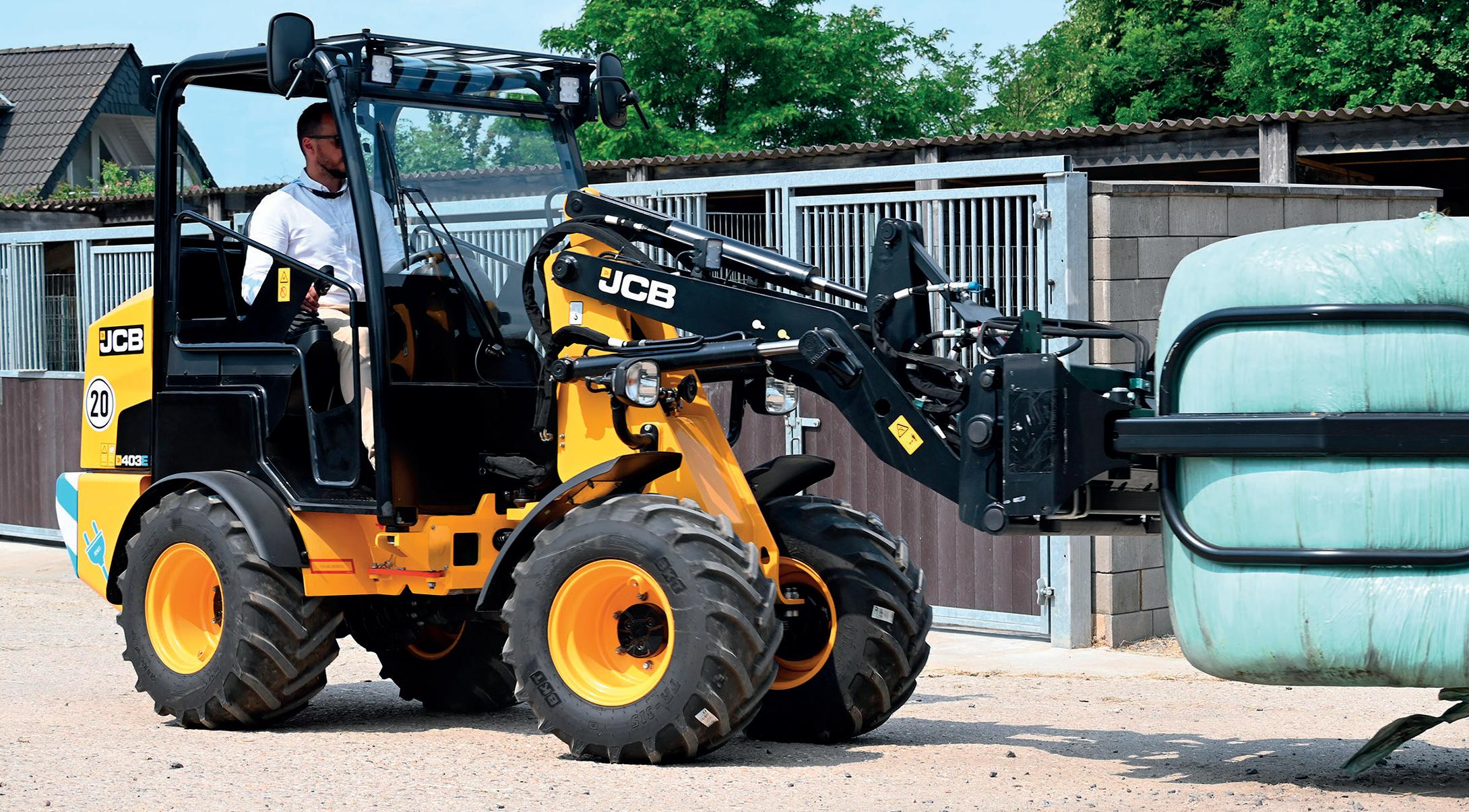
direction and boom is through a conventional joystick, which can be included with a twin hydraulic service at the boom head.
Unconventional for larger handlers, the twin system is popular in construction markets for running more complex a achments, such as bucket brushes or mixers.
In agriculture, the ability to run two services could be valuable for those using the 403E to clean buildings with a folding scraper or run a lime/sanding spreader.
Machine information and
speed adjustments are drawn from an LCD display operated by a rotary dial alongside the joystick.
Accounting for its pickup and trailer towable size, an optional immobiliser and keypad is also o ered.
Operator enclosures include a folding Rollover Protective Structure (ROPS) frame for working in low poultry or traditional buildings or a semiglazed frame with front and rear windows.
A fully glazed cab will be o ered from late 2023,

however, unless the unit is going to be operated in an exposed environment, the simpler ROPS frame may be a be er choice for dairy businesses as the reduced weight would allow some battery-life improvement, and the lack of windows removes the problems with breakages and misting up.
Like all fully electric machines, the ba ery run time is a complicated topic, with wider factors including the driving mode used, the type of a achment operated and the travelling conditions encountered.
JCB claims the 403E is capable of completing a full working day, or four to ve hours of continuous use in a mixed-duty cycle. How mixed the duty cycle is will vary signi cantly depending on the user, with powered a achments quickly consuming the available charge.
Recharging is achieved using an integrated charger from a 230-volt supply which should fully charge the unit in eight hours.
Purchasing the optional stand-alone three-phase fast charger will reduce the charge time to a claimed two hours.
Dairy opportunities
JUK dairy farms are one of the larger markets for compact pivot steer loaders, with their manoeuvrability, visibility, operator access and range of attachments positioning them to provide scraping, bedding, feeding and lighter handling services.
Combined with the option to charge from green energy sources such as solar during the day, dairy users may find
the 403E is much cheaper to run in terms of fuel and servicing costs.
Battery run time will be a questionable point, but a typical intense period of work in the morning and evenings, combined with an extended quiet period could suit a machine with a four to five-hour run time, and a solar panel supply for a charging connection.
AUGUST 2023 74 MACHINERY
Replacing the engine entirely, the 20kWh battery pack is claimed to be the largest in its class.

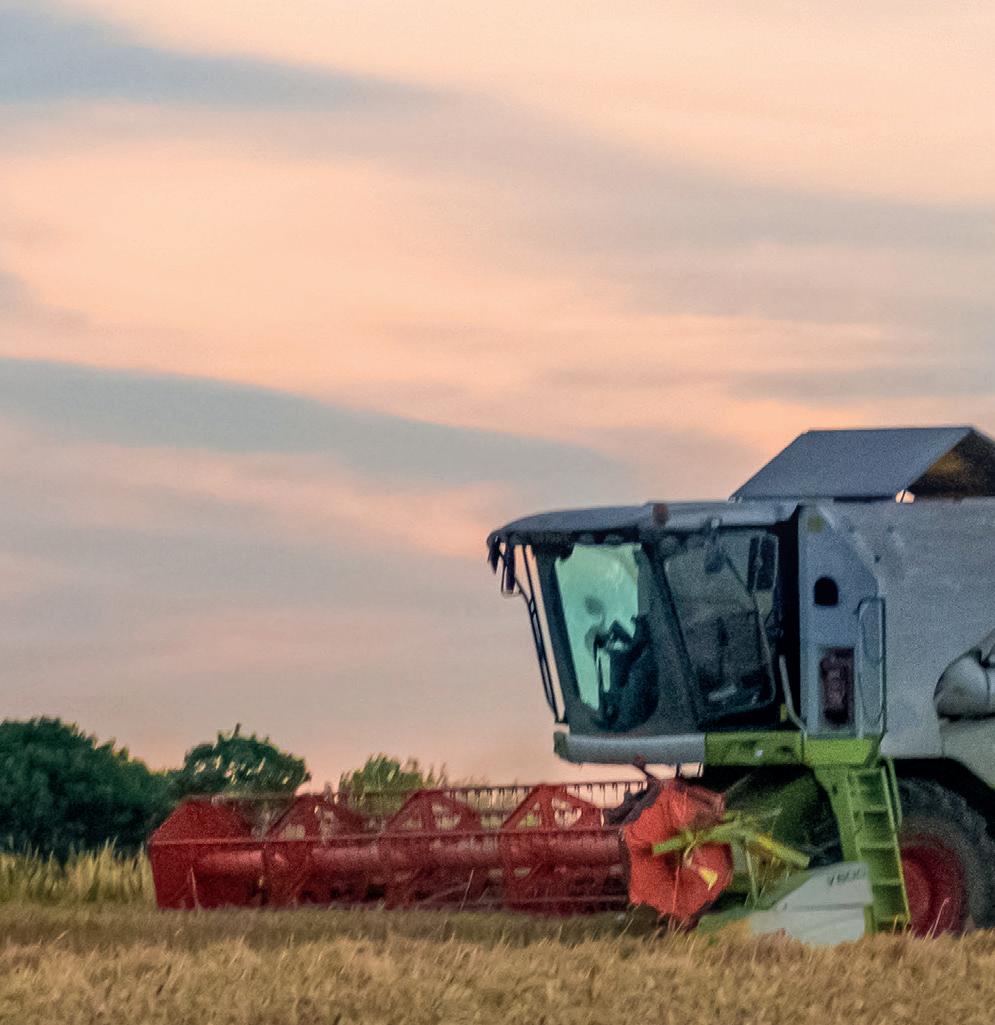


#FARM24 IS BACK

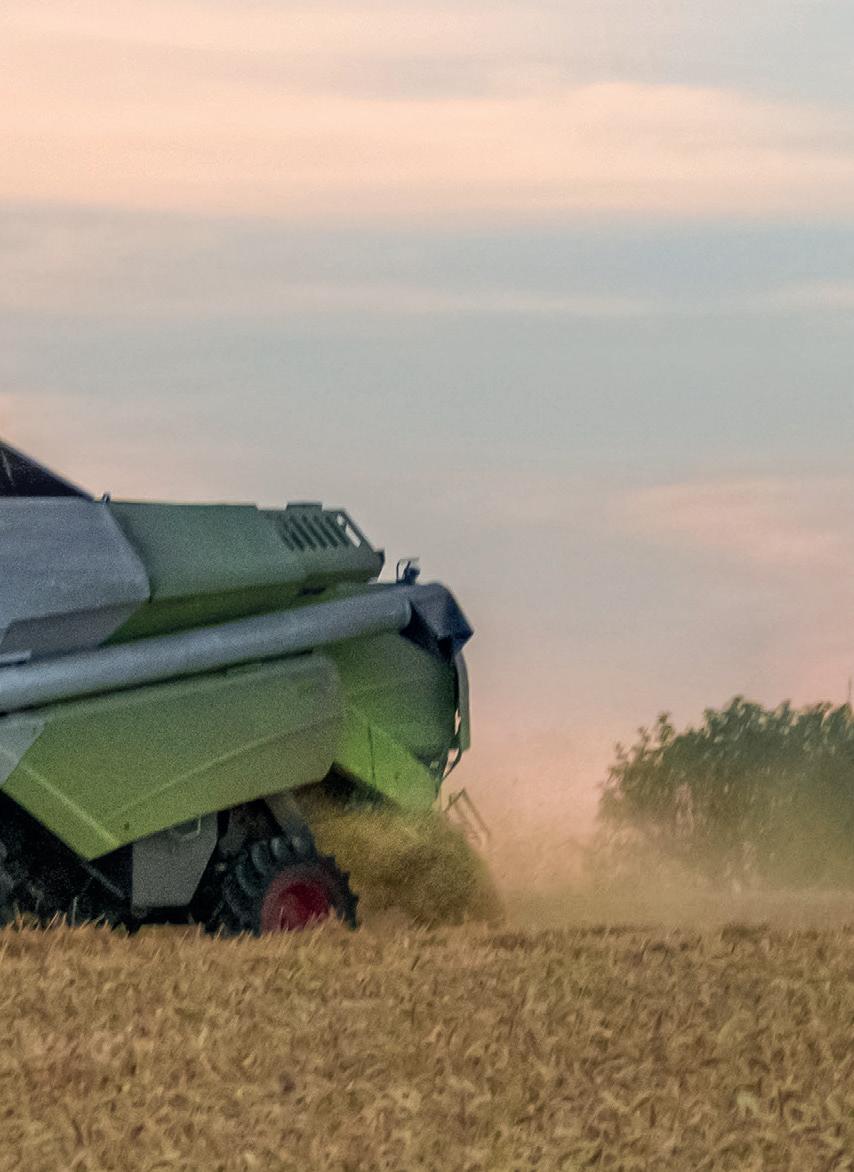
Supported by Morrisons, 24 hours in Farming has been running since 2015, with the aim of showcasing the role of farmers as food producers and custodians of the countrysidehighlighting the commitment and responsibility involved in the journey from field to fork.



Join the 24-hour celebration of British farming from 5am, August 3 - 5am, August 4, 2023
We need the agricultural community to unite and make this year’s #FARM24 the biggest and best yet. Show your support and get involved using #FARM24 on your social posts



For more information and to ‘take the pledge’, scan the QR code or visit: farmersguardian.com/farm24

GET
INVOLVED SCAN ME


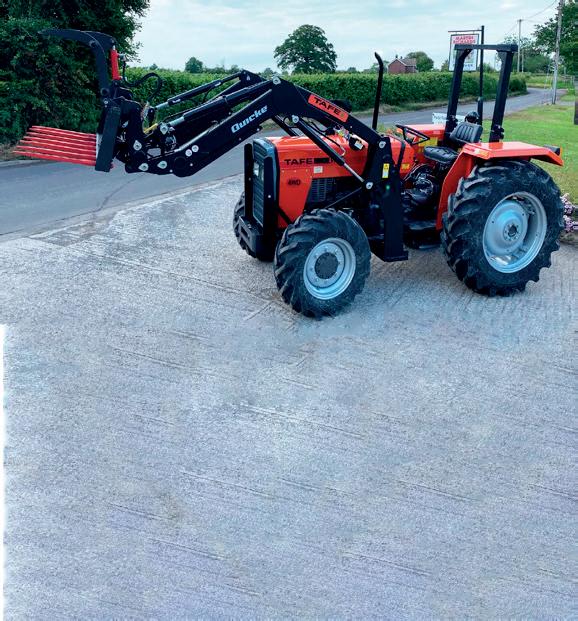



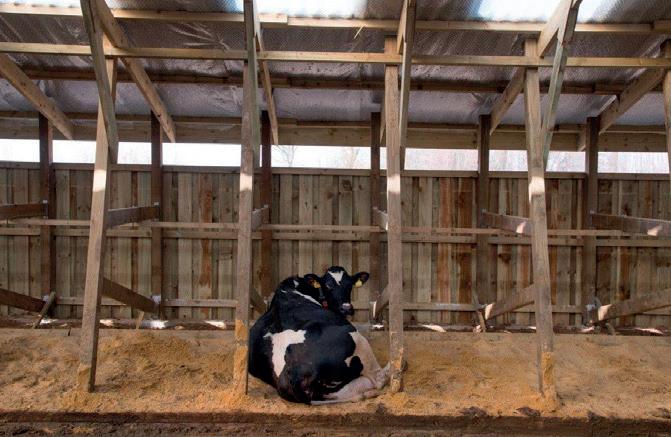

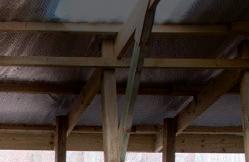



Retailer prices start to come into their own
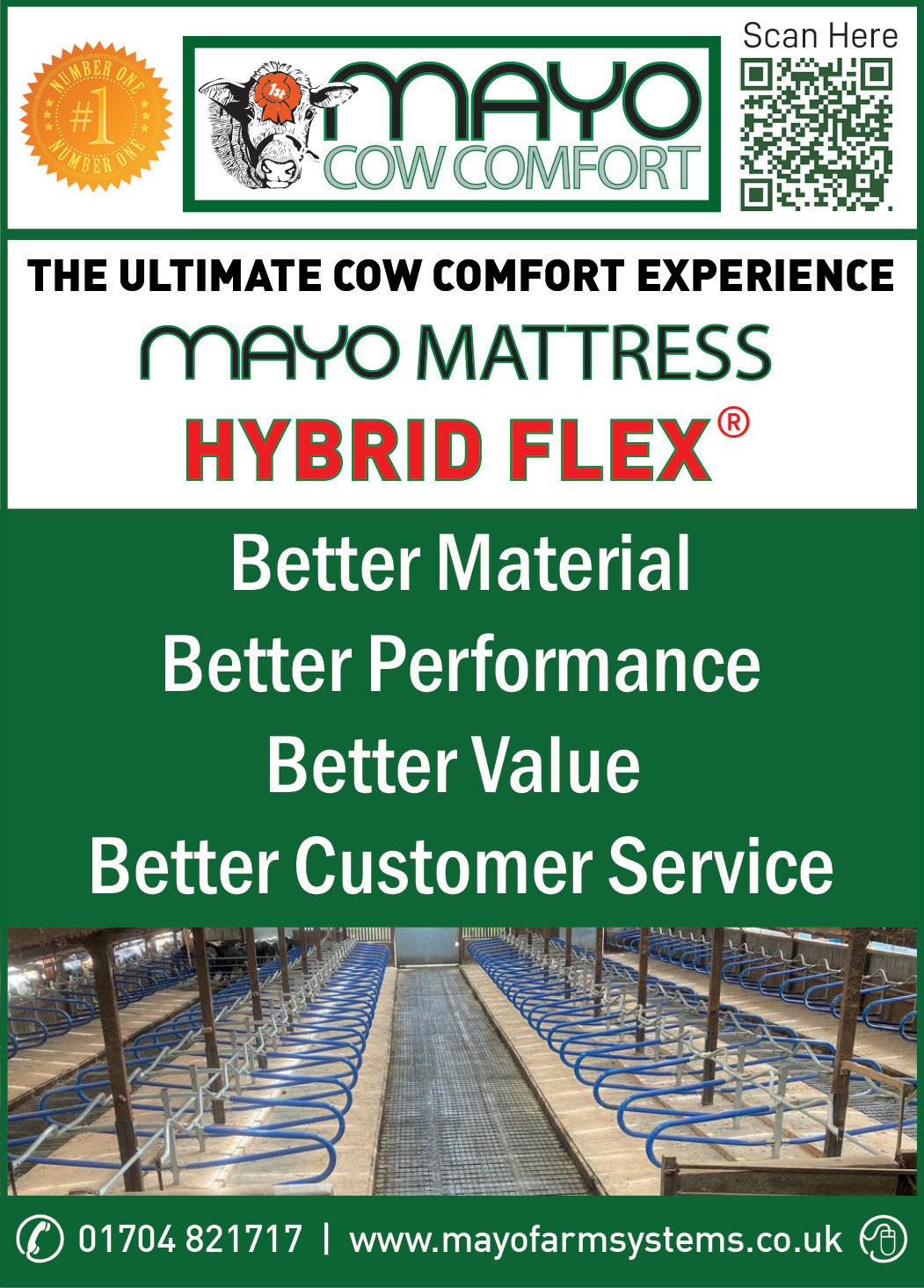
JLast summer, major retailers were being forced to either tweak lag times or put their cost model trackers completely to one side and follow the increases being generated by the spiralling costs. Roll on a year and these same trackers are pulling out a premium once again as other
JAmong the price holds and cuts for August, as milk buyers jockey for competitiveness, there were two prices increases, which to be fair are difficult to link to any positiveness coming from the markets at the time of announcement.
Following its 1ppl cut from July (which was not agreed by DCD, thus opening up a shortened three-month leaving notice period for producers
milk prices continue their steeper trajectory south.
Furthermore, given the current state of markets this summer, and unless something positive takes hold later in Q3, there is every chance the less volatile nature of the retailer pricing could witness premiums of old return.
seeking alternative milk buyers), Saputo Dairy UK agreed with the producer group to increase the milk price by 0.5ppl from August 2023.
The increase reduces the company’s overall reduction for the year to date to 12ppl, as well as taking our manufacturing standard litre* up to 37.5ppl.
This new price compares with 48ppl paid for the same month last year.
JBarber’s Cheesemakers also decided to increase its milk price by 0.75ppl from August, deciding to add the money to its flat rate
Barber’s assured premium, taking it up to 2.75ppl. This is recognition of the company’s Nature Positive commitment with suppliers. Saputo
76
MILKprices
adds 0.75ppl from August AUGUST 2023 Call us on 01258
email: info@tractorsuk.co.uk TRACTORS UK SOLE UK IMPORTER OF TAFE TRACTORS FROM THE BEST PEDIGREE BASIC, SIMPLE & RELIABLE TRIED & TESTED FOR GENERATIONS 08R04B � Drum or oil immersed brakes � Roll bar or cab Comprehensive parts backup www.tractorsuk.co.uk ✆ 01258 817372 ✉ info@tractorsuk.co.uk BASIC, SIMPLE & RELIABLE www.tractorsuk.co.uk • • 2 Years’ warranty Comprehensive parts backup • • Oil immersed brakes 2WD or 4WD • Cow kennels • Perfect Shelter • Designed for Animal Health
Excellent Ventilation
Shelter from Wind & Rain
Shade from the Sun
Plenty of Fresh Air
Ample Space
Minimum Draught
Many options available Telephone: 01772 785252 www.farmplus.co.uk RECRUITING REPS See website for details
Dairy gives back 0.5ppl for August Barber’s
817372
•
•
•
•
•
•
•
Milk price analyst Stephen Bradley on the latest milk industry developments.
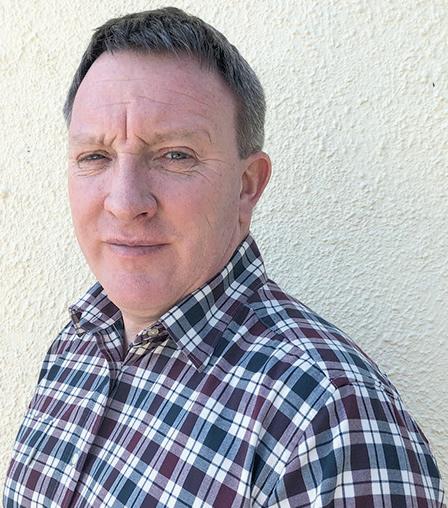
Tesco cuts 1.68ppl from August with a hold to end of October
J In line with its cost tracker, with the only change being made to feed, fertiliser and fuel, Tesco is to reduce its Tesco Sustainable Dairy Group (TSDG) milk price from August by 1.68ppl, with the price thereafter holding unchanged until November 1, 2023.
The move follows the 1.01ppl increase from May this year, after the retailer broke links with the Muller Direct price, to give an overall price movement for this year to date of -6.17ppl, as well as taking our liquid standard litre* for our Muller TSDG supplier down to 41.83ppl.
Arla
Our Arla Direct Tesco supplier also receives the same decrease, taking the price down to 41.58ppl.
The price of 41.83ppl (Tesco Muller) compares with 46ppl paid for August last year (-4.17ppl), as well as being 5.21ppl above
the retailer’s five-year August average price of 36.62ppl.
The latest Promar tracker review for June, for the 12 months from October 2022 to September 2023, holds the cost of milk production at 43.98ppl (variable costs 27.15ppl, overheads 13.83ppl and depreciation 3ppl).
The impact of applying the latest feed, fertiliser and fuel data for April 2023 to September 2023 to the annual tracker (in addition to the -0.47ppl from the previous review) takes the overall cost of production down 2.15ppl to 41.83ppl, leading to the latest reduction of 1.68ppl.
Sainsbury’s has reduced its August price by 0.57ppl, taking our Muller Sustainable Dairy Development Group price down to 40.76ppl and 40.64ppl for Arla.


* Our Liquid standard litre is 4%b/f & 3.3% protein and our Manufacturing 4.2%b/f & 3.4% protein. In both cases for Bactoscans of 30,000/ml & SCCs of 200,000/ml, with thermodurics of 500/ml, 1mltrs/yr on EODC (max vehicle accessibility) based on level supply and therefore, before seasonality, (but includes the winter premiums paid in NI) as well as monthly profile adjustments, balancing charges, capital deductions or annual/part annual growth incentive schemes or supplements not directly linked to dairy market price movement.

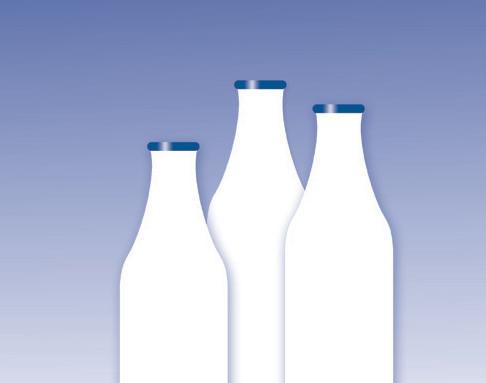





77
AUGUST 2023 WEDNESDAY 13TH SEPT 2023 8.00AM TO 5.30PM www.ukdairyday.co.uk THE INTERNATIONAL CENTRE, TELFORD, SHROPSHIRE, TF3 4JH Media Partners Principal Sponsors FREE ENTRY PARKING & WI-FI UKDD-89x124.indd 1 05/07/2022 14:46 Call Andy Berry about “Crypt-Occur” 07969 164 066 www.berrysagriculture.co.uk Maintaining Calf Health
Latest milk prices from
Notes to table
Prices for both Liquid & Manufacturing tables paid for a producer sending 1mltrs/yr on EODC (max vehicle size accessibility) with Bactoscans of 30,000/ml and SCC’s of 200,000/ml with Thermodurics of 500/ml. Excludes capital retentions or AHDB levies, profile adjustments from level supply, seasonality, balancing and A&B price schemes (includes the winter premiums paid in NI). Excludes annual / part annual growth incentive schemes or supplements not directly linked to dairy market price movement. Liquid price for milk contains 4% b/f and 3.3% protein. Manufacturing price for milk containing 4.2%/b/f and 3.4% prot. All prices for non-aligned prices are before monthly retail supplements. (i) Mar’23 prices before seasonality or B pricing (ii) Apr’23 prices before seasonality or B pricing (iii) Table ranked on simple rolling 12mth average of monthly prices May’22 to Apr’23). (i) v (ii) The difference Apr’23 compared with Mar’23. UK Arla Farmers 3.39ppl decrease from Mar’23 includes forecast 13th payment holding on 1.23ppkg (1.267ppl) based on our liquid std litre. UK Arla Farmers 3.52ppl decrease for
(iv) Latest confirmed
the time of going to press. UK Arla Farmers 2.54ppl decrease from May’23 includes forecast 13th payment of 1.24ppkg (1.277ppl) based on our liquid std litre. UK Arla Farmers 2.65ppl decrease for May’23 includes forecast 13th payment of 1.29ppkg (1.329ppl) based on our manufacturing std litre. UK Arla Farmers 1.71ppl decrease from Jun’23 includes forecast 13th payment of 1.24ppkg (1.277ppl) based on our liquid std litre. UK Arla Farmers 1.78ppl
78
MILK PRICES
Apr’23
13th
min 1.23ppkg (1.267ppl)
on our liquid std litre. UK Arla Farmers 5.31ppl decrease for Apr’23 includes forecast 13th payment increasing from 1.28ppkg (1.318ppl) to 1.29ppkg (1.329ppl) based on our manufacturing std litre. First Milk price includes 0.5ppl Member Premium accrued as a 13th payment paid Apr’23. First Milk Haverfordwest Tesco Cheese Group includes 2ppl retailer premium averaged as 1.5ppl based on seasonal profile. Fresh Milk Company price before Morrisons monthly cheese supplement (last payment made in Dec’22 of 0.072ppl for Jul’22 to Dec’22 period). MMG Direct price includes 1ppl Premium paid annually in arrears to Direct/Organic farms meeting specific Müller Direct criteria (Quarterly payments from Apr’22).Crediton Dairy price includes FarmMetrics Scheme Bonus of 0.5ppl paid monthly. South Caernarfon price includes flat 0.7ppl annual member bonus for March reducing to 0.4ppl from Apr’23. ‡ Price includes 12mth average rolling profile fixed at 0.57ppl. * UK Milk Futures Equivalent
net to producer
2.52ppl for
milk
milk
producer allows 3ppl
milk testing
decrease for Jun’23 includes forecast 13th payment of 1.29ppkg (1.329ppl) based on our manufacturing std litre. UK Arla Farmers 0.09ppl decrease from Jul’23 includes the new 1.185ppkg Sustainability Incentive and forecast 13th payment of 1.24ppkg (1.277ppl) based on our liquid std litre. UK Arla Farmers 0.09ppl decrease for Jul’23 includes the new 1.236ppkg Sustainability Incentive and forecast 13th payment of 1.29ppkg (1.329ppl) based on our manufacturing std litre. Arla Direct June decrease of 2.64ppl is from the 5th Jun’23. MMG Direct Premium for Direct/Organic farms meeting specific Müller Direct criteria confirmed as 1ppl for 2023 and paid quarterly, Apr’23, Jul’23, Oct’23 & Jan’24. All prices are before any additional monthly retail supplements. Milkprices.com cannot take any responsibility for losses arising. Copyright: Milkprices.com Mar’23 Apr’23 12mth Diff Latest 4.0/3.3 4.0/3.3 Ave Apr’23 Confirmed Before Before May’22 v Milk Seas’lty Seas’lty Apr’23 Mar’23 Price LIQUID PRICES (4% b/f & 3.3% prot) (i) (ii) (iii) (i) v (ii) (iv) Müller Milk Group – M&S 52.66 52.44 49.47 -0.22 48.50 UK Arla Farmers – Morrisons (Grazing) 44.80 39.70 48.12 -5.10 35.36 Müller Milk Group – Waitrose 49.50 48.30 48.00 -1.20 45.30 UK Arla Farmers – Tesco 44.60 39.50 47.95 -5.10 35.16 UK Arla Farmers – Morrisons 44.57 39.47 47.89 -5.10 35.13 UK Arla Farmers 43.18 38.08 46.53 -5.10 33.83 Crediton Dairy 45.00 41.50 46.02 -3.50 37.00 Dale Farm GB (Kendal) 43.60 41.21 45.91 -2.39 37.88 Freshways 44.00 41.00 45.75 -3.00 36.00 Müller Milk Group – Tesco 44.00 42.50 45.58 -1.50 41.83 Yew Tree Dairy 44.00 42.00 45.58 -2.00 36.00 Paynes Farms Dairies 44.00 41.00 45.50 -3.00 36.50 Müller Milk Group – Müller Direct 44.00 42.50 45.50 -1.50 37.00 Müller Milk Group – The Co-op Dairy Group 44.15 42.97 45.46 -1.18 39.86 Blackmore Vale Dairy 45.50 42.00 45.39 -3.50 38.03 Dale Farm NI 37.52 34.43 45.35 -3.09 33.93 Arla Foods – Tesco 43.75 42.25 45.33 -1.50 41.58 Müller Milk Group – Sainsbury’s 44.44 43.90 45.32 -0.54 40.76 Müller Milk Group – Müller Direct (Scotland) 43.79 42.29 45.29 -1.50 36.79 Arla Foods – Sainsbury’s 44.32 43.78 45.20 -0.54 41.21 Meadow Foods Lakes 41.00 38.00 44.81 -3.00 35.00 Meadow Foods 41.00 38.00 44.81 -3.00 35.00 Grahams Dairies 40.00 38.00 43.50 -2.00 36.00 Simple Average 44.06 41.51 46.01 -2.55 Simple Average (excl. retail contracts) 42.81 40.00 45.38 -2.81 MANUFACTURING PRICES (4.2% b/f & 3.4% prot) UK Arla Farmers 44.95 39.64 48.40 -5.31 35.12 First Milk – Haverfordwest Tesco Cheese Group 47.19 44.19 47.93 -3.00 38.35 Wensleydale Dairy Products 45.45 41.68 47.85 -3.77 36.84 The Fresh Milk Company – Level Profile ‡ 44.06 41.66 47.47 -2.40 37.51 Barber’s Cheesemakers 46.11 42.19 47.35 -3.92 37.79 Wyke Farms 44.93 42.34 47.25 -2.59 37.77 Saputo Dairy UK – Davidstow 46.50 42.50 46.94 -4.00 37.50 The Fresh Milk Company (Lactalis) 43.49 41.09 46.90 -2.40 36.94 Parkham Farms Tesco 40.90 40.90 46.80 N/C 37.25 First Milk 45.69 42.69 46.43 -3.00 36.85 Dale Farm NI 38.41 35.42 46.24 -2.99 34.92 Arla Foods – Direct Manufacturing 45.93 42.40 46.21 -3.53 32.67 South Caernarfon 44.00 40.00 46.05 -4.00 35.50 Belton Farm 44.05 41.05 45.82 -3.00 37.05 Glanbia – Llangefni (Constituent) 43.25 38.75 45.75 -4.50 34.00 Simple Average 44.33 41.10 46.89 -3.46 Simple Average (excl. retail contracts) 44.37 40.88 46.82 -3.49 ‘B’ Price Indicators StoneXMilkprices.com UKMFE (gross) 35.33 33.22 45.09 -2.11 *StoneXMilkprices.com UKMFE (net) 31.01 29.04 40.23 -1.97 **Delivered spot milk (net to the producer) 29.91 23.36 -6.55
Mar’23 includes forecast 13th payment holding on 1.28ppkg (1.318ppl) based on our manufacturing std litre. UK Arla Farmers 5.10ppl decrease from
includes forecast
payment holding on
based
(UKMFE)
includes 5% processor margin and allowing 2.55ppl ex-farm haulage Mar’23 and
Apr’23 +
testing. ** Ave delivered spot
net to
covering haulage +
and margin.
milk price at
AUGUST 2023

HEATSTRESS?
The climate in the barn is the key!


THE SOLUTION:
ABBIFAN 140-XXP-2
The latest motor technology now applied on our fans! Direct drive.
DC-permanent magnetic motor
40-70% energy savings
No frequency control needed
No motor protection switch needed
No special wiring needed
No maintenance
Mains: 230/400V 50Hz

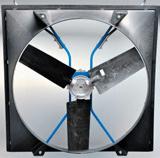
CROSS VENTILATION
blows fresh outside air in your barn!
Simpler installation
Less electric wiring
No obstacles inside
No restlessness when doing maintenance
Shorter suspension of the fans
Lower total investment
Airflow in length of cubicles
Milk prices stable for now
Milk prices were relatively stable for August, with 18 companies holding their
prices, four reducing them and two increasing them.
The number of price reductions has gradually fallen since the peak in March, indicting some potential stability. However, since the August prices were announced, the market has deteriorated further, with all of the gains of May and June lost
and further reductions cannot be ruled out yet. The estimated weighted non-aligned price for August is 35.3ppl now, with the latest Defra price for May being 37.6ppl at 4.07% fat and 3.39% protein.
When corrected for constituents back to a standard 4% fat and 3.3% protein standard litre, the price is about 36.5ppl.
Given that costs of production are estimated to be in the 40p zone, it is fair to say that a long-term existential crisis is brewing in the industry.
Total number of dicretionary price moves from 20-plus tracked processors
Positive price moves
Negative price moves
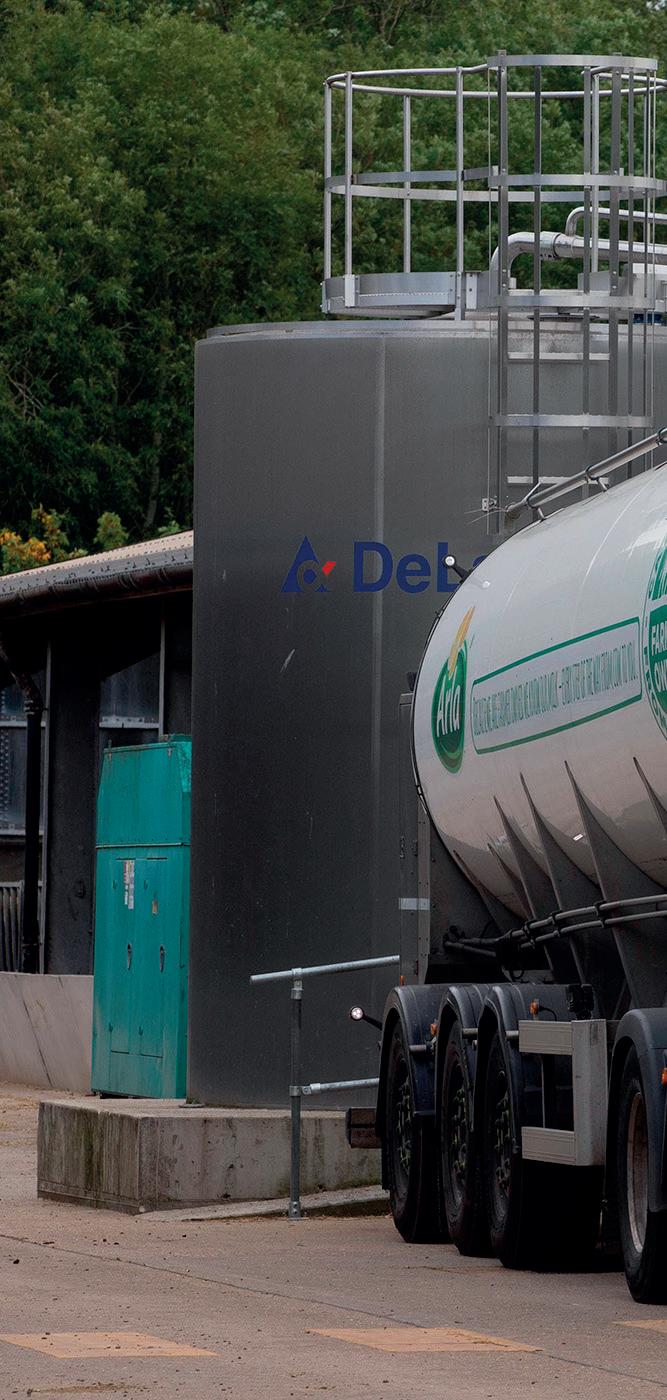
www.abbi-aerotech.com
www.rumitechs.co.uk
Ph: 07714 846987
EU and UK markets drop on universally negative mood
JThe holiday season is never a good time for prices, as traders go on holiday and the market grinds to a halt. This year though, traders seem to have left early, having bought forward and covered until September.
That, plus a very negative GDT in the first week of July, has subdued the mood of the market significantly and prices have dipped accordingly.
SMP, for example, has now lost all of the gains it made through May and June, after
it rose for six consecutive weeks to more than €2,500/tonne (£2,139/t).
Dutch food grade is now at just over €2,200/t (£1,882/t). Dutch butter is just above €4,500/t (£3,850), but the reality is that this is still higher than some spot trades, which are as low as €4,300/t (£3,679/t).
Q3 and Q4 prices are better but not as good as they were and they have fallen in line. The previous sentiment, that Q4 will herald a recovery, looks to be a
forlorn hope at the moment. The combination of butter and SMP converts to a milk price below 30p – as do the GDT commodities.
Cheese
Indicative cheese prices for curd, gouda and mozzarella are also tracking lower than they were for the next quarter and the quarter after that, although there is no immediate impact on mild Cheddar prices, which remain about £3,600/t.
AUGUST 2023 80 MILK ANALYSIS
NEW!
NEW!
(non-aligned only)
Jan 2021 Feb 2021 Mar 2021 Apr 2021 May 2021 Jun 2021 Jul 2021 Aug 2021 Sep 2021 Oct 2021 Nov 2021 Dec 2021 Jan 2022 Feb 2022 Mar 2022 Apr 2022 May 2022 Jun 2022 Jul 2022 Aug 2022 Sep 2022 Oct 2022 Nov 2022 Dec 2022 Jan 2023 Feb 2023 Mar 2023 Apr 2023 May 2023 Jun 2023 Jul 2023 Aug 2023 30 20 10 0 -10 -20 -30

Since the August prices were announced the market has deteriorated further, with all of the gains of May and June lost, and further reductions cannot be ruled out yet.

Volumes in line with previous years
JCurrently there are no signs that milk volumes are dropping off at a significantly faster rate than previous years, which they need to do to turn the markets which have plummeted on the back of too much milk and not enough demand.
Currently volumes are 8.3% down compared to the peak week, with 2022 down 8.6% compared to peak.
The average for week 26 (last
week of June and the first week of July) is 7.6%. Although 2023 is tracking at a higher rate than that, the volumes ideally need to be down more than 10% compared to the peak to create a narrative to buyers that ‘milk is dropping fast’.
The latest data shows that
UK milk volumes over the last two weeks have averaged 41.56 million litres per day – some 0.5% more than last year.
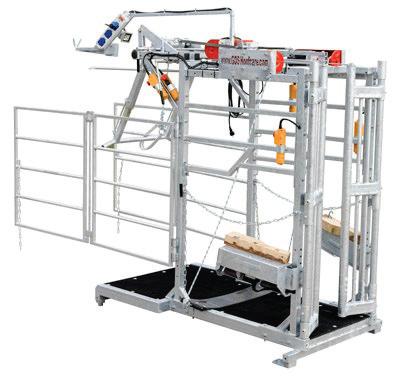





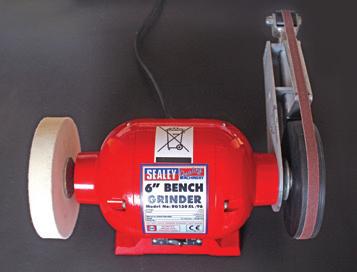
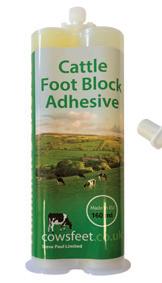
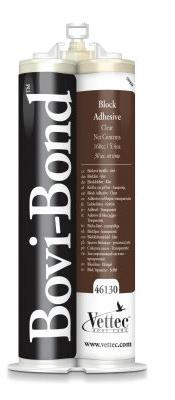


From farmer cattle crushes to wooden blocks, we have everything you need to keep your cows' feet healthy!


AUGUST 2023 81 MILK ANALYSIS Prefer to speak to a human? Give us a call on 01963 824448
you to
his
for an excellent and very quick service and very competitive prices every time, thanks!” JOHNNY MILLER, LANCASHIRE LAMENESS WORKSHOPS October 22 £125 per person Steve Paul Limited
"Thank
Steve and
team
BY 3PM
ring
The UK's leading cattle foot care company TRIMMING • TRAINING • SUPPLIES Free next working day UK mainland & Ireland delivery ORDER
when you spend £100 online excluding VAT Make your life easier with our Electric Farmer Crush Do
us if you’d like more information!
Cowsfeet advert Farmers Guardian 200x130mm March 2020.indd 1 14/02/2020 09:40
Drop in weekly milk volumes relative to peak week 0 -1% -2% -3% -4% -5% -6% -7% -8% -9% -10% 2019 2021 2020 2022 2023
NEWProducts
This month, we feature a new service to aid grassland management, a tool hoping to ‘clear the fog’ when it comes to measuring carbon, a dairy cleaning product from Mole Valley Farmers and a milk replacer to combat heat stress.
Milk replacer to combat heat stress
New from Bonanza Calf Nutrition, Shine Heifer Start with heat stress additive is designed to help calves combat the impacts of heat stress.
It is thought to be the rst of its kind in the UK.
Tom Warren, managing director at Bonanza Calf Nutrition, says the product has been shown to improve calves’ ability to handle heat stress and high humidity and, as a result, improve animal welfare, health and performance.
He says that working closely

Got a new product?
JNew products are featured in each issue of Dairy Farmer. Please send details and pictures to Hannah Morgan at hannah. morgan@agriconnect.com, or call 01772 799 450.
with Bonanza’s European partners at Bonilait and the University of Milan, the company has trialled and tested incorporating the heat stress additives into milk replacers with positive results.
Mr Warren says calves which were fed Shine Heifer
Start containing the heat stress additive experienced reduced respiration rates by seven to eight breathes per minute, reduced rectal temperatures and improved weight gains of up to 30% during the trials.
Calf health treatments also
Service to aid grassland management
JA new crop modelling solution, Omega Crop, is now available in Great Britain through Mole Valley Farmers, which uses data to predict current grass covers and forecast growth. It works via a constellation of satellites, field-level weather forecasts and in-house models and simulations – the only data required from farmers being the date animals left the field. From this, the app is designed to accurately predict grass yields for the next seven days.
Trials
Following two years of trials, accurate predictions can currently be made, up to a limit of 1,295kg of DM/acre, with app developers testing a silage model which will allow higher covers to be predicted.
The service is available
fell by one-third, says Mr Warren. Launched into the UK market at the end of June this year, it is now available through selected agricultural merchants across the UK and Ireland.
rMore information at bonanzacalf.ie


on desktops and iOS devices currently, with an Android version in development which is expected to be released later this year.
An annual subscription costs £6/acre for Mole Valley Farmers customers, while farmer shareholders can receive a discount of £5.50/acre.
Omega Crop is independently funded by Oxford Science Enterprises, meaning farmers’ data remains private.
rMore information at moleonline.com
82
AUGUST 2023


JA new tool from Innovation for Agriculture (IfA) is hoping to clear the fog when it comes to measuring carbon in farm businesses.
With multiple tools or platforms to measure carbon, head of technical development at IfA Stephen Briggs says the carbon decision support tool compares the three most
commonly used platforms for measuring carbon in UK farm businesses: Farm Carbon Calculator; Cool Farm Tool; and Agrecalc.
The current pilot version of the tool was produced using funding from FAIRshare and reflects the versions of all three tools as of April 2023.
rThe tool can be accessed via i4agri.org/climate-smart-farming
New dairy cleaning product
JA new cleaning product is now available to dairy farms from Mole Valley Farmers.
Developed by scientists in the UK and USA and trialled on dairy farms across both countries, Virus Shield comes in a perforated bag which infuses in water, creating a pure chlorine dioxide-based disinfectant, delivering a cleaning product in two hours.
Mole Valley Farmers says it
can be used in multiple ways, including as a pre- or post-teat dip, spray or foam to thoroughly disinfect udders, with added emollient said to maintain and improve skin condition.
The product can be sent through the post in 25-, 200- and 1,000-litre sizes and comes with a concentration level test kit.
rFor more information, call 01769 576 415.

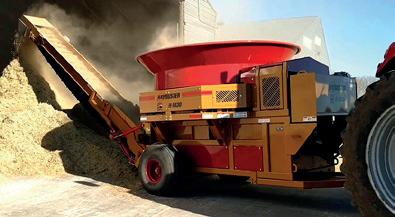
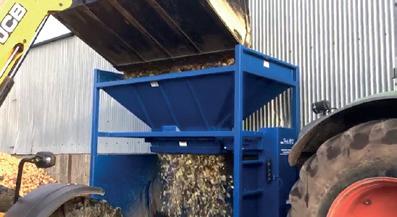

-

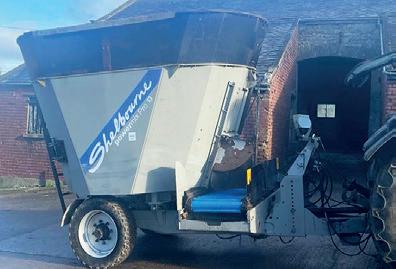
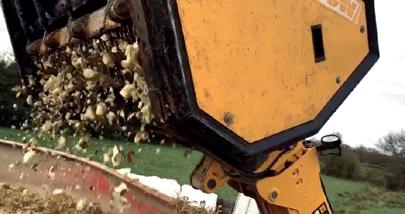





















83
NEW PRODUCTS
AUGUST 2023 Feed Processing Specialists Please visit www.enegis.co.uk for more photos or call 01789 205132 or 07721 442979 Tub Grinders - Exclusive UK Distributor of Haybuster & Rotogrind Grinders. - Range of models from 5t - 25t / hour output. - New, used & refurbished machines available. - Ideal for straw, hay, green waste, roots, biogas feeds etc Root Choppers & Cleaners - Loader, 3 point linkage, free standing PTO and electric drive available
Choosing a carbon calculator
UK Distributor of VDW range of choppers, cleaners & feed dispensing equipment
Output from 10t/hour to over 120t/hour available Diet Feeders - Largest stock of mixers in the UKover 50 ma chines in current stock
Refurbished, used & nearly new units available
New Mini Mixer available
Diet feeder parts available- Blades, Conveyor belts, gearboxes, weigh cells.
All feeders undergo 30 point service
Finance available subject to terms
Nationwide delivery available
Used Stock:
Trioliet 20 x 2
Strautmann 10, 20m
Bvl 10, 12, 15, 20m
Kuhn 12, 14, 27
Siloking 14 x 2, 14 duo, 18m - Shelbourne Reynolds 13, 19
Hi Spec 12, 16, 20
JF 18, 22m - Redrock 14,16
Rotogrind 760 x 4
Farmhand Tub grinder
Enegis Multi chop 4
VdW 2.4m root chopper bucket
VdW 2.4m mixing bucket
VdW Duo Compact loader straw blower on pin & cone
Profi root Chopper x 2 Used Diet Feeders always wanted
-
-
-
-
-
-
-
Current
-
-
-
-
-
-
-
-
-
-
-
-
-
-
Stephen Briggs

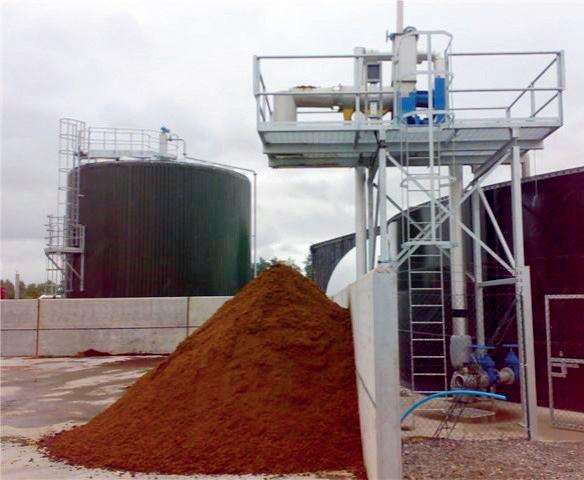
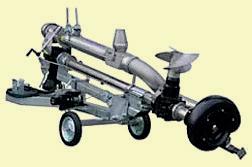
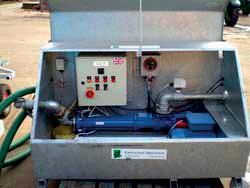


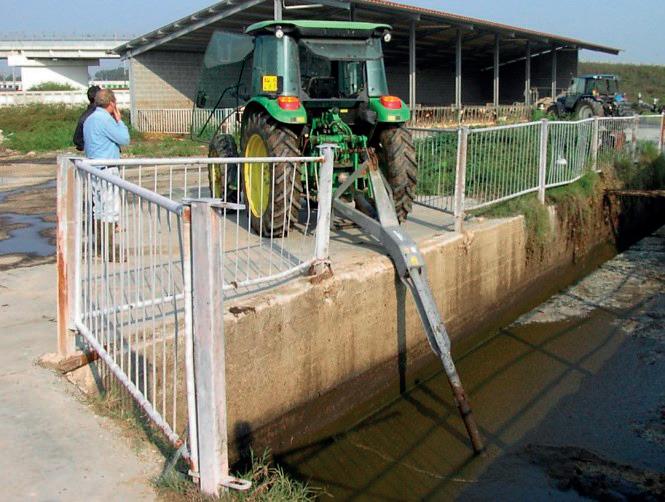
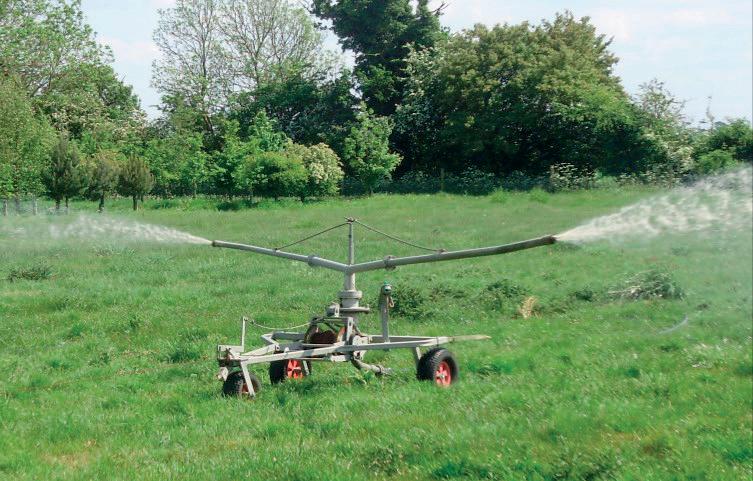


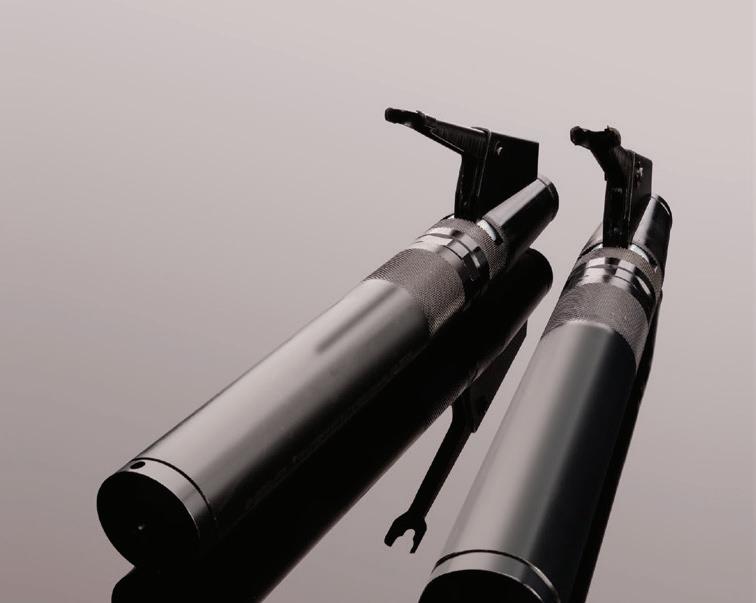
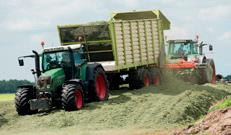



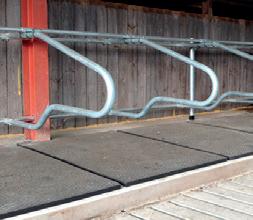
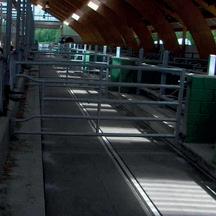

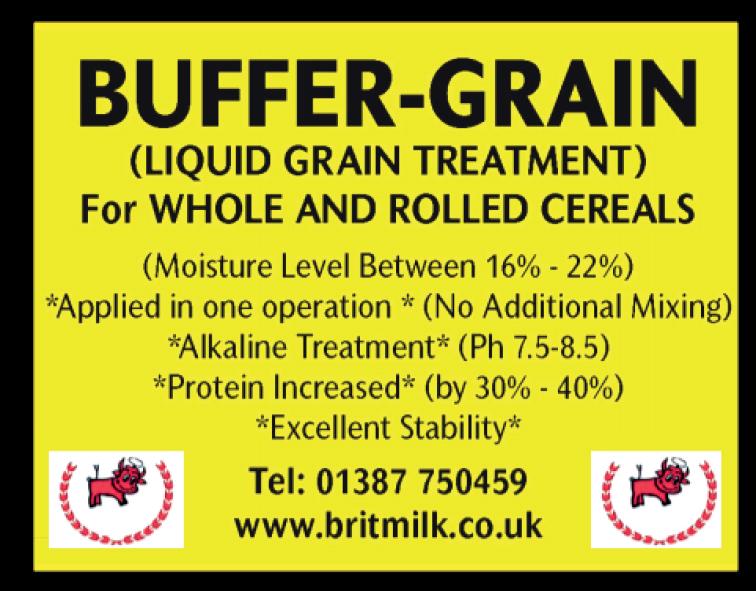
Equipment & Accessories SEPCOM The unique separator Slurry pumps & lagoon mixers 01328 701992 | enquiries@greencrop.co.uk | www.greencrop.co.uk Multicam dirty water irrigator Slurry pump Pump in a box CLASSIFIED TELEPHONE: 01772 799400 1 8m x 1 2m / 6ft x 4ft Each 30kg Per Mat Easy Grip Handles Animal Proof Weather Resistant 100% Rubber Construction R U B B E R S Y S T E M S F O R A G R I C U L T U R E DAIRY MAT ARK www arkmat co uk C a l l o r E m a i l F o r P r i c i n g A n d F u r t h e r D e t a i l s 01392 209 394 info@ark-rubberandresin co uk PARLOUR MATTING HEAVY DUTY SILAGE PIT MATS SUPERSOFT CUBICLE MATS ALLEY MATS 5 YEAR GUARANTEE Delaval mobile milking bale for hire/sale. Delaval Blue Diamond 32/32 fast exit MM25s. Save energy, Ice Builders : Bulk Milk Tanks. Heavy duty replacement troughs for most parlours. Delaval VMS Robots : Milk meters, keypads, feeders etc. Everything for the Dairy Farmer Call Vic/Tracey Brown Tel: 01260 226261 www.milkingequipment.com Milking Equipment Building Services SPRAY FOAM INSULATION To Crop & Livestock Stores, Poultry Sheds, Cattle & Pig Buildings, Workshops & Barns. Frost & Condensation Protection. Temperature Control Energy Saving Tel: 01405 812682 www.webstersinsulation.com info@webstersinsulation.com Livestock AUGUST 2023 84 Tel: 01635 253344 Email: sales@raytradeuk.co.uk Web: www.raytradeuk.co.uk
















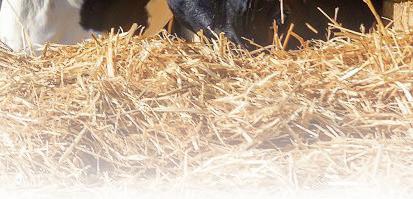








85 AUGUST 2023 Livestock Services FARM HEALTH SOLUTIONS Ask about Herd Health Analysis T 01756 749444 W www.crossgateshealth.co.uk PROBLEMS WITH HIGH SCC /MASTITIS? - WANT TO REDUCE USE OF ANTIBIOTICS? - COST EFFECTIVE PRODUCTS WITH EASY WATER TROUGH ADMINISTRATION - DISCOUNTS - WE CAN HELP WITH SHEEP PROBLEMS TOO - CALL FOR A FREE SAMPLE KIT APPLE CIDER VINEGAR (ACV) Nationwide (01948) 662910/663143 george@greenfieldsrise.f9.co.uk THE UK’S PREMIER EVENT FOR FARMERS AND LANDOWNERS farmbusinessshow.co.uk To find out more about exhibiting, scan the QR code or visit: REASONS WHY YOU SHOULD EXHIBIT Attendance of 15,000 people is across four shows Generate quality sales leads Build awareness of your brand and products Make innovative business connections Speak directly to your target market Connect with major buyers and key decision makers DIVERSIFY AND INNOVATE YOUR BUSINESS OUR NEXT DAIRY SUPPLEMENT OUT SEPTEMBER 8, 2023 Speak to Katie Robinson today and start converting our readers to your customers. 01772 799500 | fgclassified@farmersguardian.com FGinsight.com 2023 Special focus on advice around diseases at turnout, a look at protein crops, the benefits of metabolic profiling and features on farmers from around the country. The HR head can be of our machines, straw in linear pattern wide and up to 15m throw VISIT WEBSITE WWW.SPREAD-A-BALE.COM GET IN TOUCH Dave Bull 01244 394258 Office E: sales@spread-a-bale.com FOLLOW US MADE IN GREAT • No chopping, saves straw and lowers dust levels • Spreads any bale in under one minute • Self-loading, requires only one tractor loader • Improves both efficiency and profitability Spread-a-Bale SUPPLEMENT Edited by Katie Jones katie.jones@agriconnect.com 07786 856 439 DAIRY 3 STAGGERS Preventing turnout problems 4 FERTILITY A focus on AI protocols 6 PEAS An alternative protein source 8 SANSAW winter housing 12 Q FEVER Is in your herd? 14 VENTURE Milk quality leads diversification 18 FUTURE Building a career for young farmer 22 NUTRITION Bringing down 24 TARGETS Tips around block calving 26 HEALTH Recognising disease patterns 28 PROFILING Advantages of metabolics 30 STAFFING What attracts new recruits? PICTURES: MARCELLO GARBAGNOLI Dairy p1 Feb17 BB MB.indd 14/02/2023 14:39 DAIRY SUPPLEMENT Forthcoming Events Dairy Cattle
‘Good job they weren’t here when the rats were on the move’
This month, Roger Evans discusses the positives and negatives of Bank Holidays, his experience with IT and emailing, and when might not be a good time to call in a vet.
We average five crops of pointof-lay pullets every two years, so we only clean the sheds out similarly.
For some time now we have been letting the shed cleaners sleep in the house in a room we never use. We never see them because they use a backstairs.
Before that they slept in their van. Late one night I thought I heard them on the move so the next day I asked my grandson, who sees to the chickens.
Turns out they had gone back to sleeping in the van because one of them had found a dead mouse in the room.
Good job they weren’t here in the autumn when the rats were on the move.
I’ve never been a big fan of Bank Holidays. You have to plan around them and, if you are milking cows, there’s enough planning to do anyway.
On one Bank Holiday in the past, the man who worked for us popped his head around the door late one Thursday afternoon and said: “We are out of diesel.”
Diesel
It was his job to alert me if the diesel was getting low.
I replied: “You realise that I can’t order any until Tuesday, don’t you?”
“Why?” he replied. “Well it’s Good Friday and I know they are closed on Saturday and Monday.”
It turned out that we were out of diesel for a week and I had to borrow some from a neighbour in cans. I made sure that that never happened again.
On a similar theme, I just happen to be in charge of communications on this farm. That means that any emails come to me.
To be honest it’s a bit of a struggle, partly because I’m largely self-taught and partly because we live in a bad area for an internet connection.
The latter gets most of the blame.
If everything is okay, I’m sort of fine but there’s lots can go wrong.
Last week the cursor disappeared for three days. I don’t know where it went but, as I soon found, you can’t do much without a cursor. Perhaps it was stuck somewhere next to some pigeons.
My keyboard has seen better days; I press a key and nothing happens so I press it more firmly and I get lots of that particular key.
It’s even worse if I do the same with the delete key, it can take large chunks out of my inbox, most of which I wanted to keep.
Of course my grandchildren could fix everything, but I have noticed that they have started to avoid me. A quick request for them to ‘just have a look at my laptop’ doesn’t do it anymore.
One of the problems is that they fix it all so quickly, I don’t see what they have done.
Fix
If I could just see what they did, I could perhaps fix it myself next time.
Sometimes I manage to overcome all these difficulties and compose an email, but then I can’t get it to send.
But then I had a bit of inspiration; if it was a Bank Holiday surely the internet would be quiet. And it was. I was able to catch up with my correspondence. So public holidays are not so bad after all.
Saying all that, I’ve never subscribed to the theory that if I’m working, you have to work as well.
We don’t have to work a seven-day week. We
GOODEvans
86 AUGUST 2023
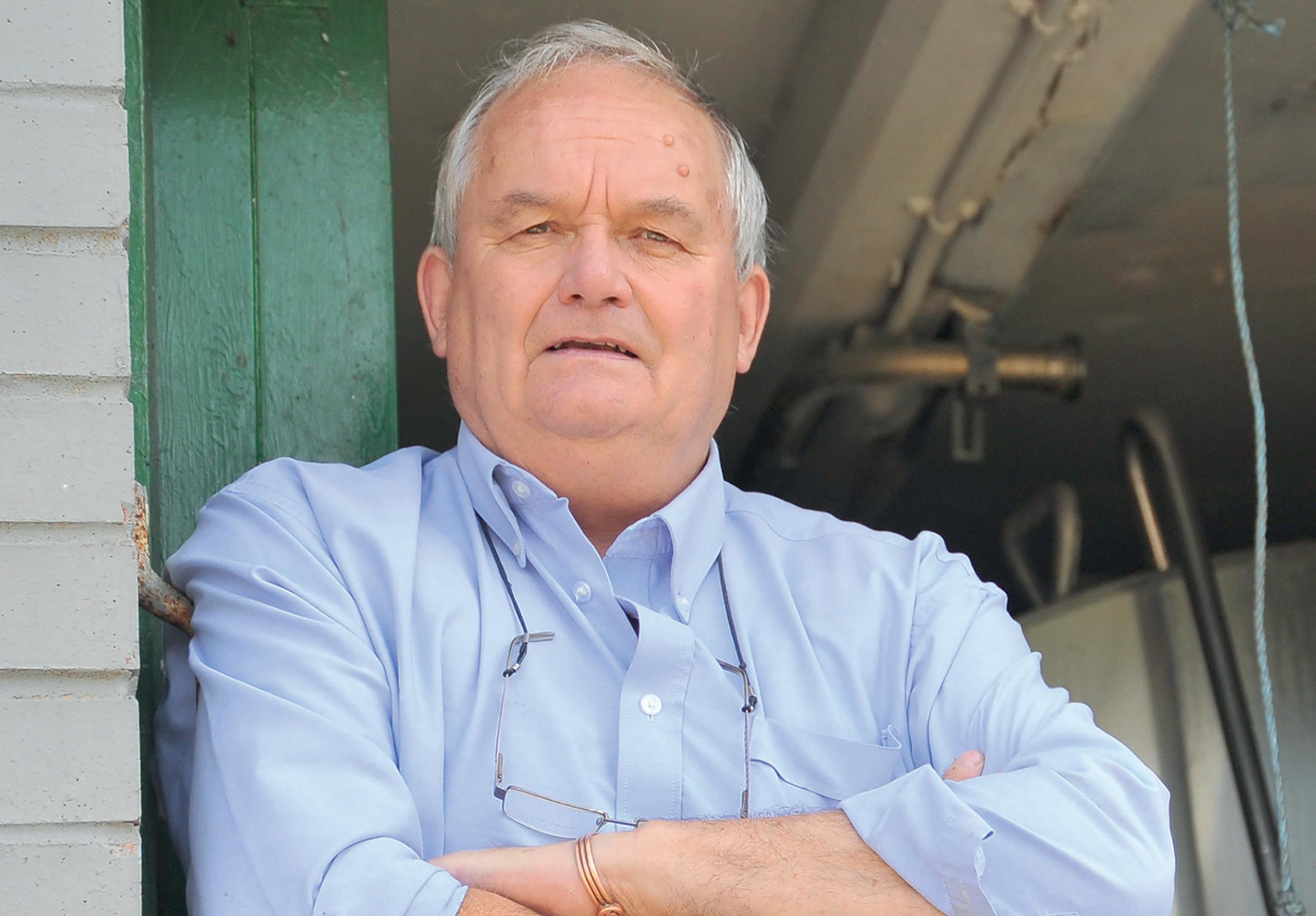
“ The visit was so expensive the vets were never called out at Christmas again
choose to. If someone can manage by working a ve-day week, good luck to them.
I was once very friendly with one of our vets. Still am as far as I know, but I rarely see him now as he lives at some distance.
When he rst came around here, he was newly quali ed and newly married. e other vets in the practice all had children so he volunteered to be on call over Christmas.
On Christmas morning he got a call to see a lame cow.
When he got there he could easily see that the cow has been lame for days and that the farmer has been ‘saving’ her for Christmas morning. e farmer’s thought process must have
Find Jobs Faster


been: ‘I’ve got to work and you will as well’. e same farmer, di erent cow, phoned the next year as well.
When he phoned the third year things were a bit di erent, my friend the vet had a family of his own and he was a bit more worldly as to veterinary practice.
He went to see the lame cow but he told the farmer that he should have phoned a week earlier because the cow would have su ered in the meantime.
en he went through the boot of his car and gave the cow every injection he could nd.
e visit was so expensive that the vets were never called out again at Christmas to see a lame cow.
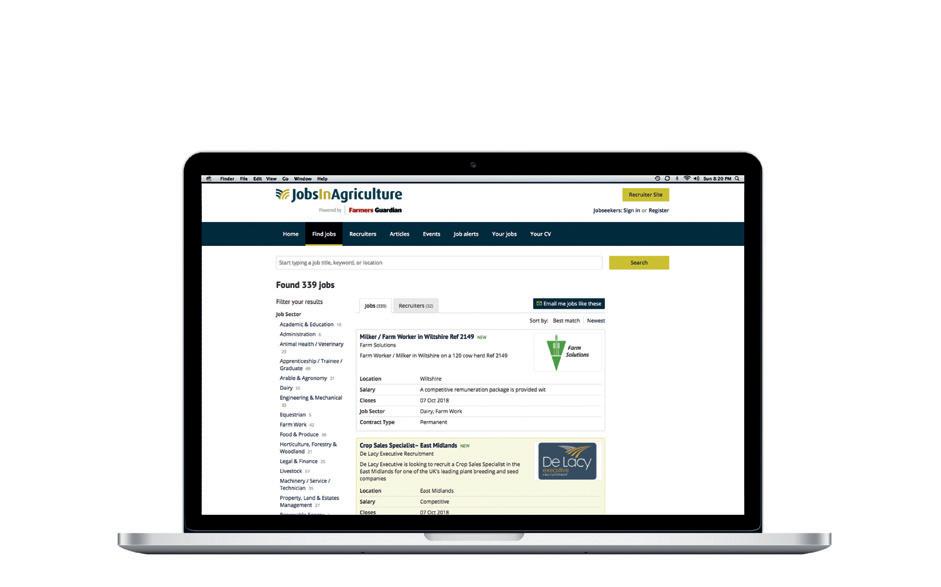
JobsInAgriculture Jobs in your field Let us keep you updated by email and never miss another great job JobsInAgriculture.com
Receive the latest jobs in your inbox with our free email alert service 87 AUGUST 2023
Groundswell can seem a little arable heavy, with cattle only bit players in the quest to improve crop production, but there was something for dairy farmers.
The two main dairy exhibitors were Yeo Valley and First Milk. Appropriately, they recently announced a partnership to create what they call the Naturally Better Dairy Group. Its purpose is to build a regenerative milk pool in the south west of England.
First Milk chief executive Shelagh Hancock said: “As the Regenerative co-op, we firmly believe this approach to farming is the way to continue to produce affordable, nutritious food, while
Regenerative dairy practices were highlighted at the recent Groundswell and Down to Earth events. Cedric Porter reports.
Regenerative dairy on show
addressing the growing climate and nature challenges we face.
“We currently operate the largest regenerative farming programme in the UK dairy sector and we are delighted to have agreed this exciting partnership with Yeo Valley, which will see us broaden this activity fur-
ther, demonstrating that great tasting dairy can be a force for good.”
More than 95% of First Milk farmers have signed up to its regenerative scheme which attracts a 0.55ppl bonus and which it claims is the UK dairy industry’s largest regenerative dairy programme.
Economic performance is key to environmental performance
JSustainability is often just thought of in environmental terms, but for dairy farms economic sustainability is crucial if improvements to the way a business operates are to be made in the longer term.
At Groundswell, there were figures for arable production which showed a full regeneration system still had a smaller margin than conventional systems, but that high input costs for the 2023 harvest may narrow that gap.
Some of those calculations came from farm business
consultants Andersons. It has recently updated its long-running business performance English Friesian Farm Model (see table, below) to take into account recent falls in milk prices and some inputs.
Margin
The farm made a healthy margin from production of 4.9ppl in the 2022/23 milk year, with supports pushing that up to 6.5ppl. But that production margin is set to plunge to just 0.1ppl in the current milk year, with reduced support taking the overall
business surplus to just 1.4ppl.
That calculation assumes an average milk price of 36ppl, down from a record 50.2ppl in 2022/23.
Variable costs are expected to drop 5.9ppl to 17.7ppl.
There should be some recovery in 2023/24, although Andersons warns that the forecast must be treated with some caution given the impact that unforeseen events could have. The production margin is forecast to increase to 1.9ppl, but support payments will only add another 1ppl to that total.
As part of the process, First Milk has achieved Corp B status, an enhanced sustainability programme which audits companies in five key areas – governance, employment, community, environment and customer care.
The co-op is promoting its regenerative credentials with the launch of new products. The most recent is Golden Hooves Cheddar.
Pilot programme
Grass is key to regenerative agricultural systems and its importance on dairy farms is an advantage, visitors to Groundswell heard from a trio of farmers – Clare Hill, Tom Gregory and Debbie Wilkins – involved in Arla’s Regenerative pilot programme.
Obtaining the full regenerative benefits from grassland requires a different approach to its management, said the panel, with rotation of diverse crops, use of cover crops, protection from overgrazing and the avoidance of compressing wet soil keys to success.
Perhaps more fertile regenerative content was to be found at the Royal Association of British Dairy Farmers’ recent Down to Earth events.
Almost 2,000 visitors attended the southern event at Rushywood Farm, Chard, Somerset, another Arla pilot farm.
They heard from owner Neil Baker that adopting a regenerative system on the farm has increased output by up to 30%, while improving biodiversity and sequestrating carbon.
He said: “Regenerative farming and output are not in conflict. We have increased the amount of for-
AUGUST 2023 88 BUSINESS CLINIC Friesian farm England in ppl, based on 220 cows plus followers on 135 hectares (334 acres), part-rented with year-round calving on a constituent contract; owner and worker 2021/22 2022/23 2023/24 2024/25 final final estimate forecast Milk 32.5 47.1 36 38 Total output 35.4 50.2 39.1 41 Variable costs 14.4 23.6 17.7 17.4 Overheads 10.5 14.8 14.4 14.5 Rent, finance and drawings 6.5 7 6.9 7.2 Total cost of production 31.3 45.3 39 39.1 Production margin 4.1 4.9 0.1 1.9 Basic payment 1.8 1.6 1.3 1 Business surplus 5.9 6.5 1.4 2.9
Source: Andersons


age generated and, as a result, have increased the amount of dairy solids out of the nutrients and are producing more per kilogram of carbon.”
e 1,800-cow unit produces an average of 60,000 litres of milk a day, with 80% of feed homegrown. Some manure from the system is used to power an anaerobic digestion plant, which powers 900 homes.
Cows have been much maligned in the race to net zero, but they were defended by F nlo Costain, the head of the Farmwel think tank, who was speaking at Down to Earth South.
He said: “Cows in a regenerative farm system help the soil to sequester carbon, they restore ecological connectivity, helping us to solve the climate crisis while also

producing fantastic nutrient-dense food, supporting livelihoods and feeding communities all around the world.”
Valuation
e measurement and valuation of carbon have become important considerations for dairy farmers.
At Groundswell, Re-generation Earth was o ering up to £100/ tonne for sequestrated carbon on its


new trading platform, although that did raise eyebrows among many.
At Down to Earth South, Prof John Gilliland, a consultant with AHDB and environmental expert, urged visitors to ask ve important questions when considering a carbon footprint calculator:
1 Is it independent?
2 Is it accredited?
3 Does it count Global Warming Potential (GWP) and GWP*? e la er takes account of the removal of methane from the atmosphere.
4 Does it count carbon sequestration?
5 Is it associated with a key and trusted agricultural institutions?
Prof Gilliland said that he only knew of a couple of calculators which could answer yes to all ve questions.
He added that the quickest and easiest way to reduce carbon impact was to focus on improved nitrogen fertiliser use, which will also reduce input costs at a time of high fertiliser prices.
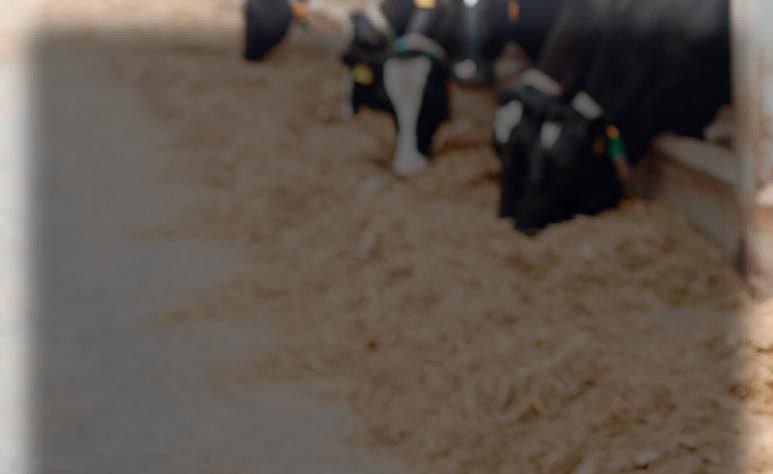



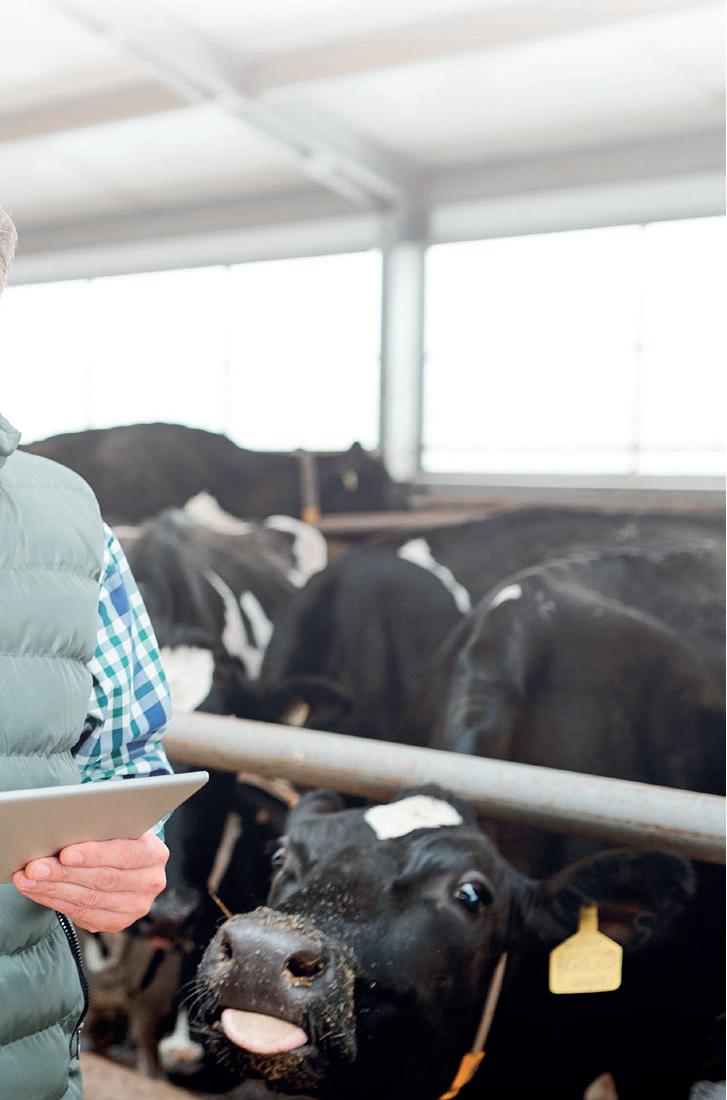
AUGUST 2023 89
dairy
parlours, calving equipment and everything in between, you’re sure to find what you need on FGBuyandSell.com . Start listing your items FREE today! Browse. Sell. Buy at FGBuyandSell.com
Brought to you by Farmers Guardian, FGBuyandSell is the platform for you to sell your items to a responsive farming community.
From
cattle, milking
The recent Groundswell event attracted a huge number of visitors.
Home-grown and roasted pulses have been shown to be a good substitute for soyabean meal in cows’ diets in feeding trials at Godmister Farm, Somerset. Dairy Farmer reports.
Trials look at substituting soya with roasted beans
In a bid to replace imported soyabean meal in cow diets, Peter Cheek, of Godmister Farm, Somerset, has been looking at the use of roasted beans.
Mr Cheek, who runs a 300-cow organic dairy herd, says: “Climate change is a huge issue and by practising organic farming methods, we are already farming ‘in tune’ with the environment.
“However, another important factor for us is to be able to fully validate the provenance of the components of our cows’ rations to consumers.
“Godminster Farm’s overall aim is to reduce the carbon footprint of our cows’ diet and deliver full traceability of all their rations by growing beans here on the farm.”
Mr Cheek has worked with McArthur Agriculture, an engineering firm specialising in grain processing and storage, on trial work which forms part of the ‘nitrogen efficient plants for climate smart arable cropping system [NCS] project.
The project has been launched to help farmers reduce agricultural emissions by 1.5 million tonnes of CO2e per year.
I was staggered as to the results achieved by the Danish farmers
PETER CHEEK
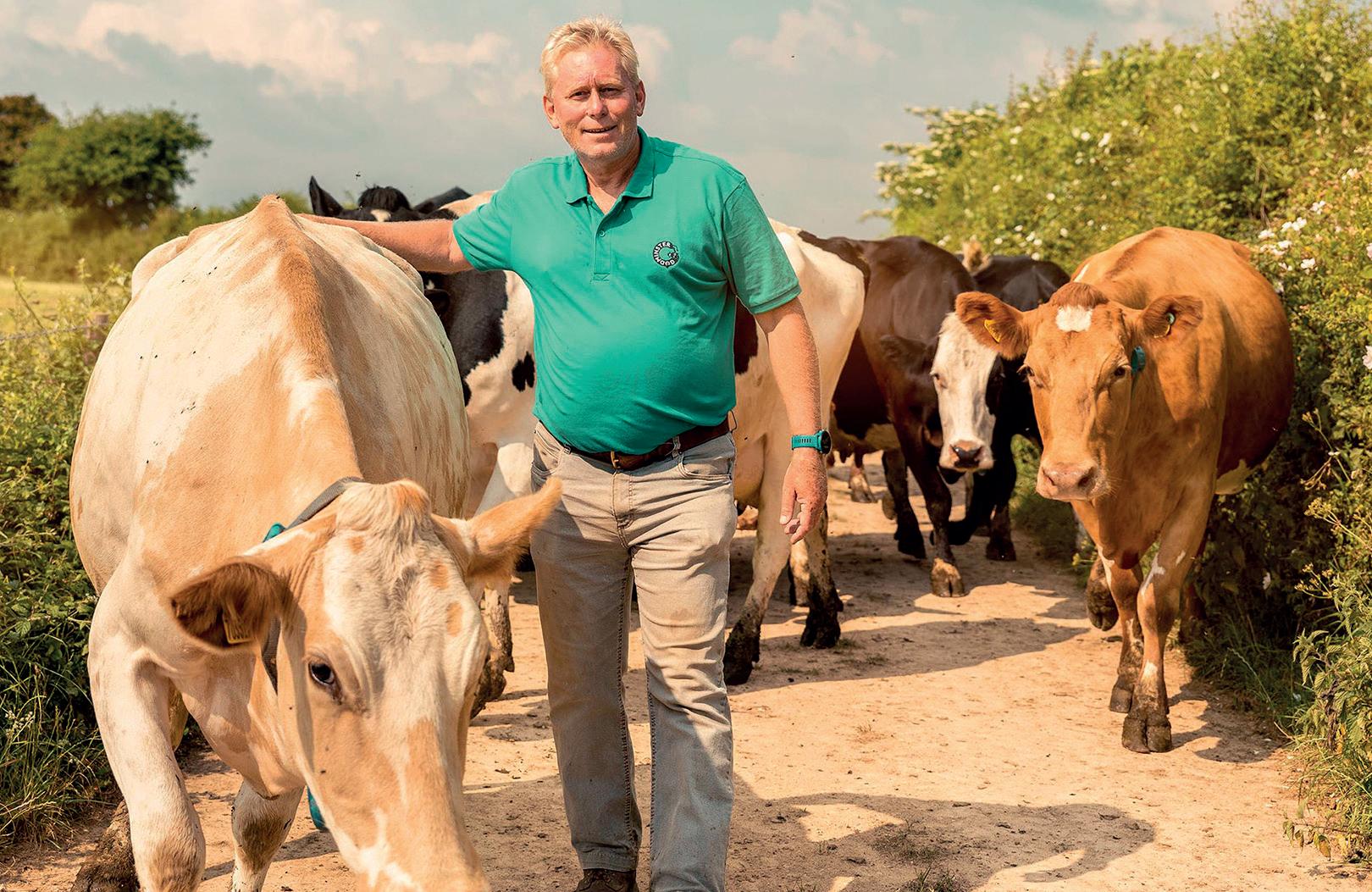
The NCS, a four-year £5.9m ambitious research programme which will involve 200 farms and 17 industry partners, is funded by Defra’s Farming Innovation Programme and delivered by Innovate UK.
The twin objectives of the project are to increase pulse cropping in arable rotations to 20% across the UK (currently 5%) and to enable livestock farmers to substitute up to 50% of imported soyameal used in livestock feed with more climate-friendly home-grown pulses and legumes.
John McArthur, of McArthur Agriculture, says: “Godminster Farm is already engaging with the guiding principles of the NCS project by adding beans to its crop rotations for inclusion in its cows’ rations, working towards the replacement of imported soyabean meal in organic dairy.”
To take this a step further, Mr Cheek and Mr McArthur visited Denmark in 2022 to see how Danish farms are already substituting imported soybean meal with roasted beans and cereals.
Work there has shown the roasting process improves the quality of the protein in beans, allowing the formulation of diets without soyabean meal while maintaining milk yield and quality.
Double the yield
Mr Cheek says: “I was staggered as to the results achieved by the Danish farmers. They were achieving double the milk yield we get at Godminster by including roasted beans in their cows’ diets and without using soya.”
In late 2022, Godminster Farm started trialling post-
harvest processing of beans, supplied by Organic Arable.
Mr Cheek says: “We roasted the beans with a Mecmar T05 roaster from McArthur Agriculture, they were then milled and incorporated into the cows’ diet as part of the parlour feed and in the total mixed ration.”
The trial was successful and Mr Cheek is now planning to permanently include roasted beans in the ration and is considering the addition of roasted lupins to add more protein.
He says: “The next phase of our trial will be to roast the beans we are growing on-farm this year straight from the combine, rather than roasting beans we have bought-in.
“This will allow us to store them safely and increase the amount we are able to add to the rations.”
AUGUST 2023 90 RESEARCH
Peter Cheek has been looking at the use of roasted beans to replace soyabean in cow diets.



17-18 january 2024 LAMMAShow.com
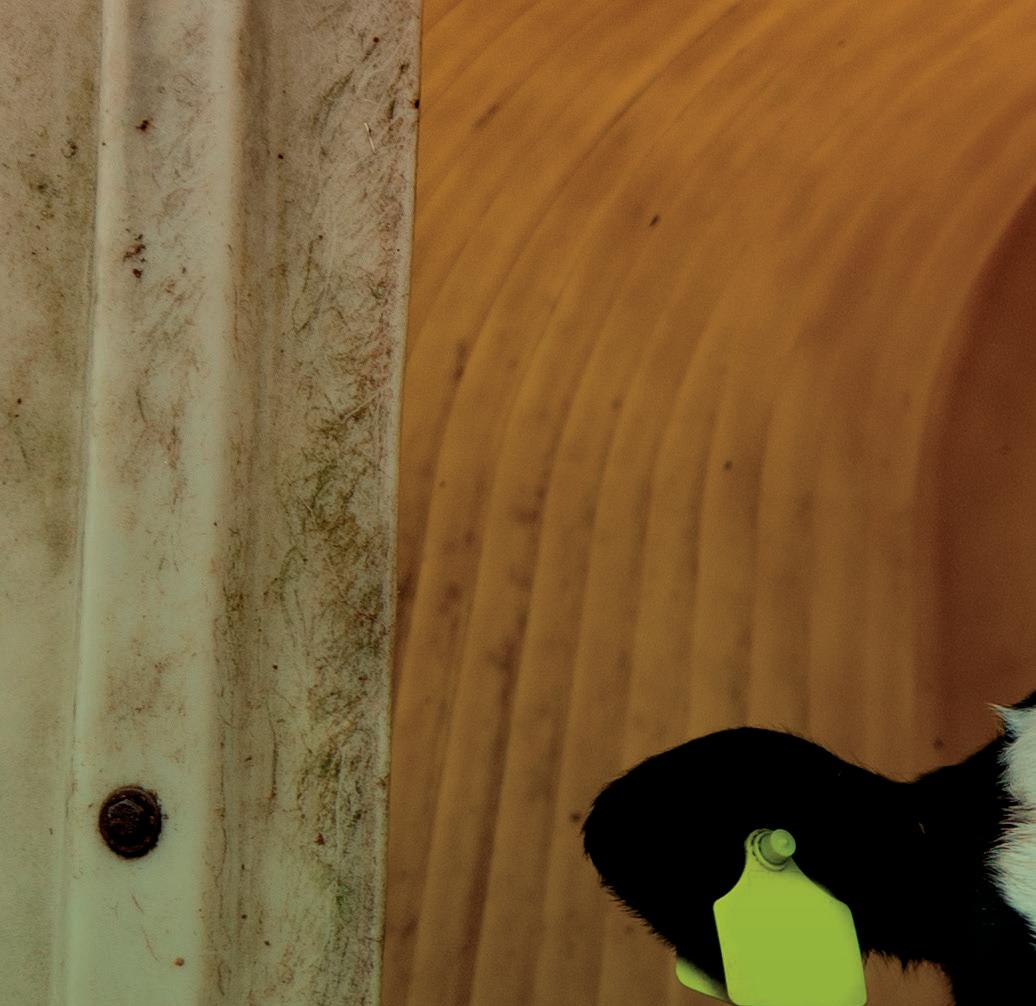




Calf Rearing Herd Health Programme






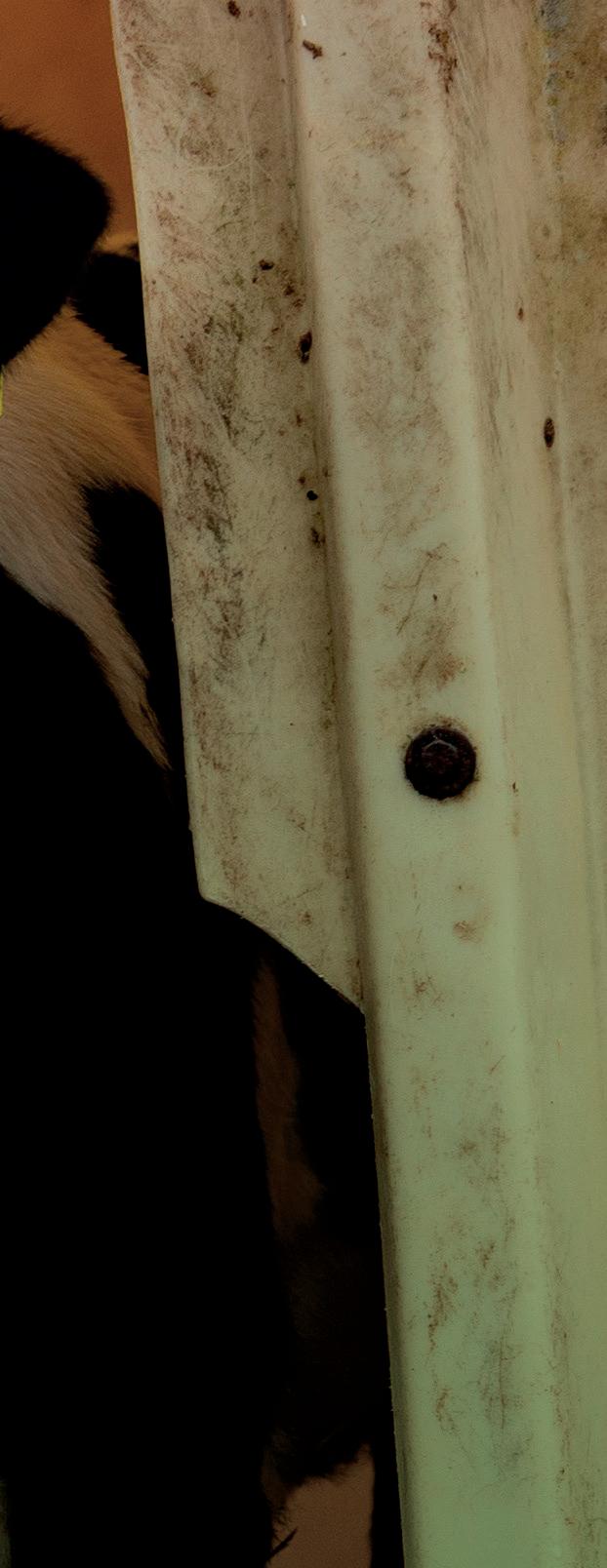


WHY YOUR CALVES NEED THE AHV CALF REARING PROGRAMME!
Intestinal & immune system support
Greater daily liveweight gain | No post-weaning dip
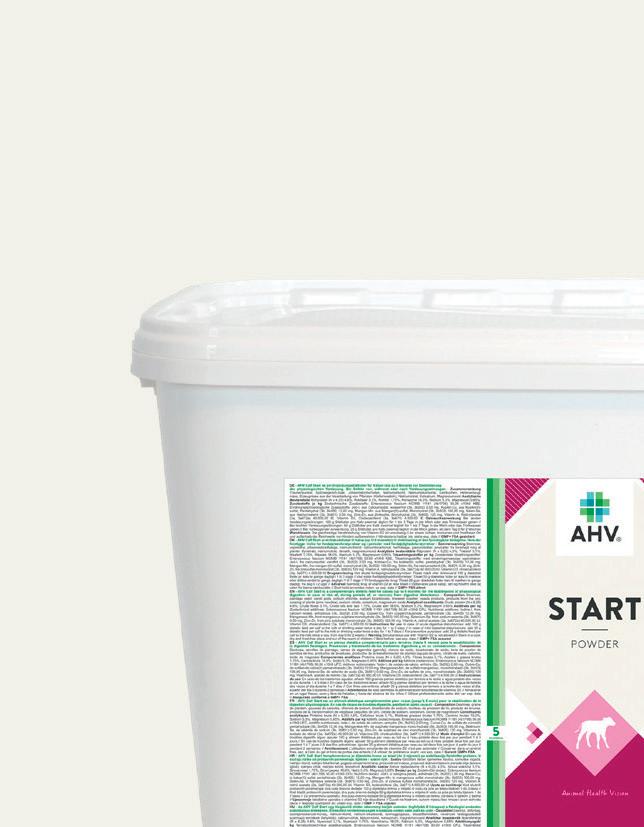

Less respiratory challenges











Animal Health Vision UK Ltd // 1610, Carnival Way, North Petherton, Bridgwater TA6 6GY // 01769 772070 // www.ahvint.com





































































































































































































































































 KATIE JONES
EDITOR OF DAIRY FARMER
KATIE JONES
EDITOR OF DAIRY FARMER




















































































































































 SlurriN
SlurriN





































































































































































































 Dr David Townsend
Dr David Townsend





















































































































































































